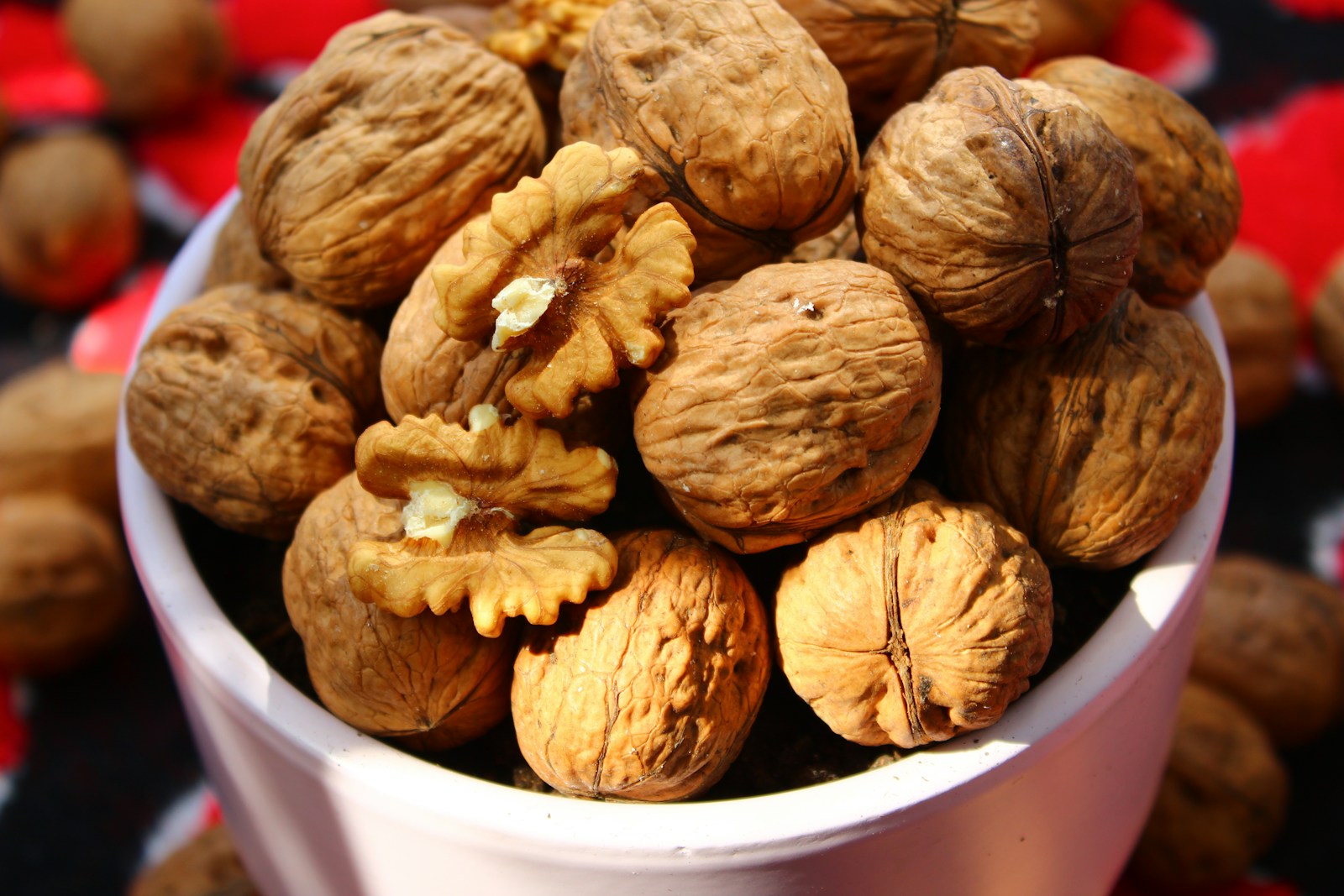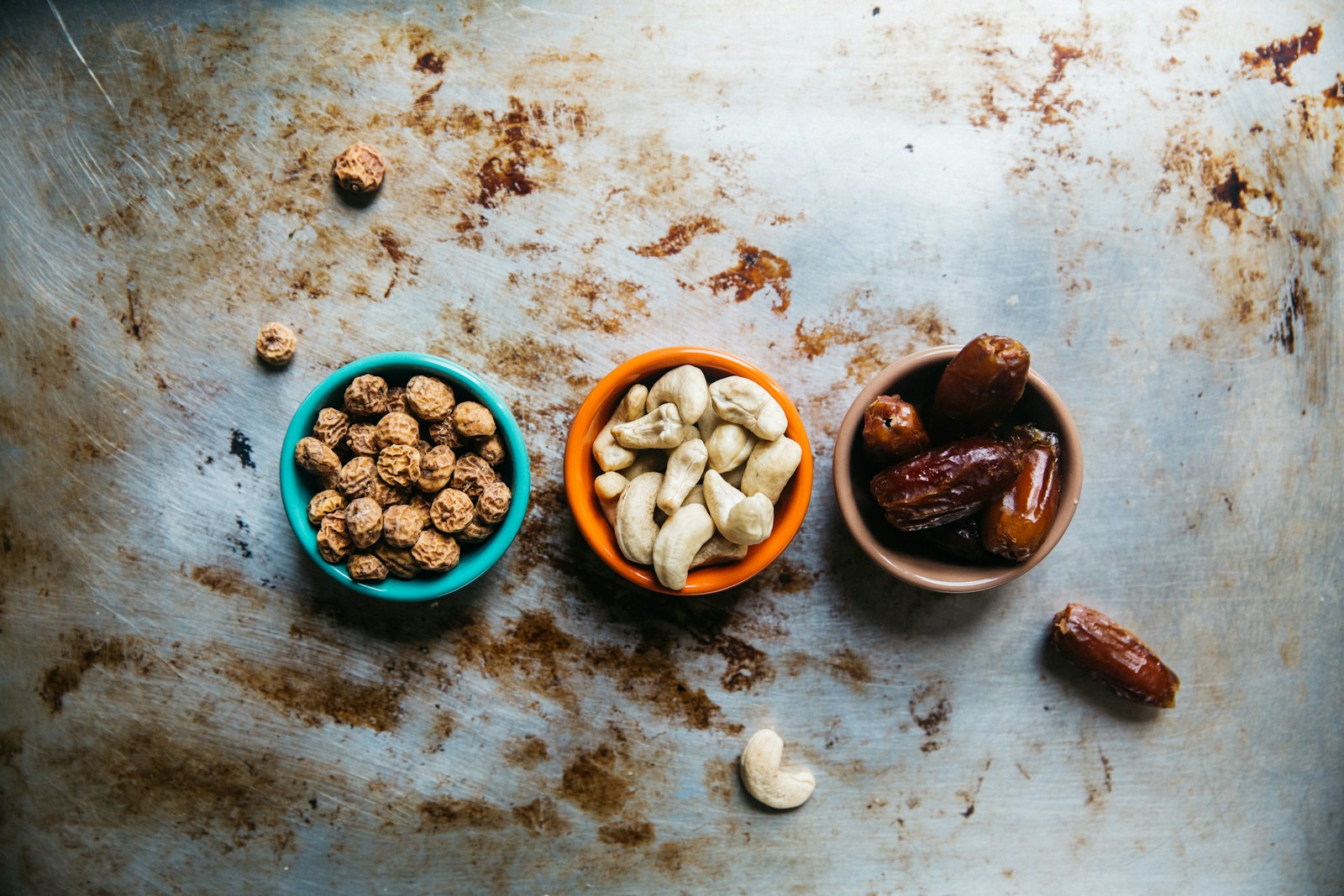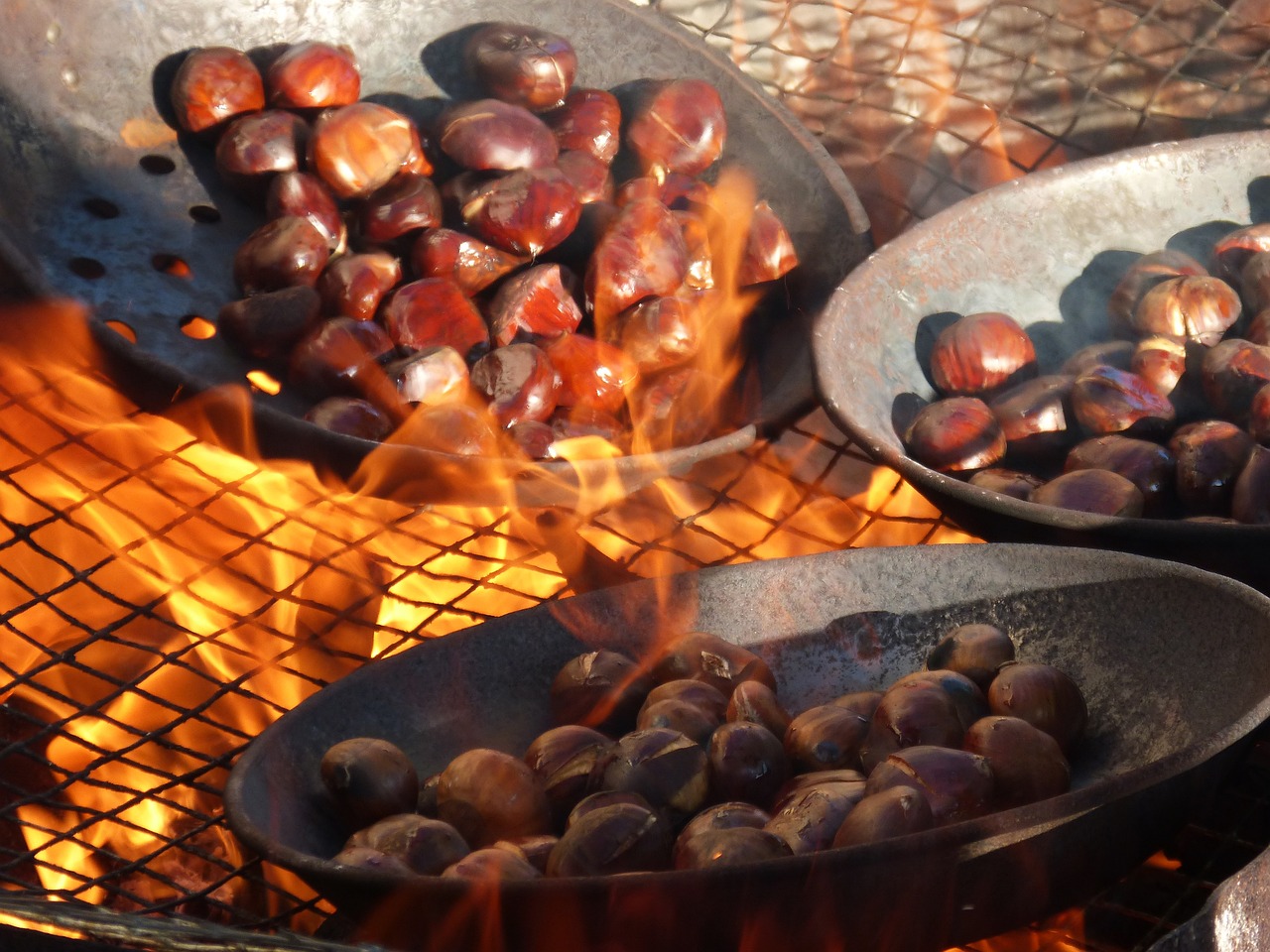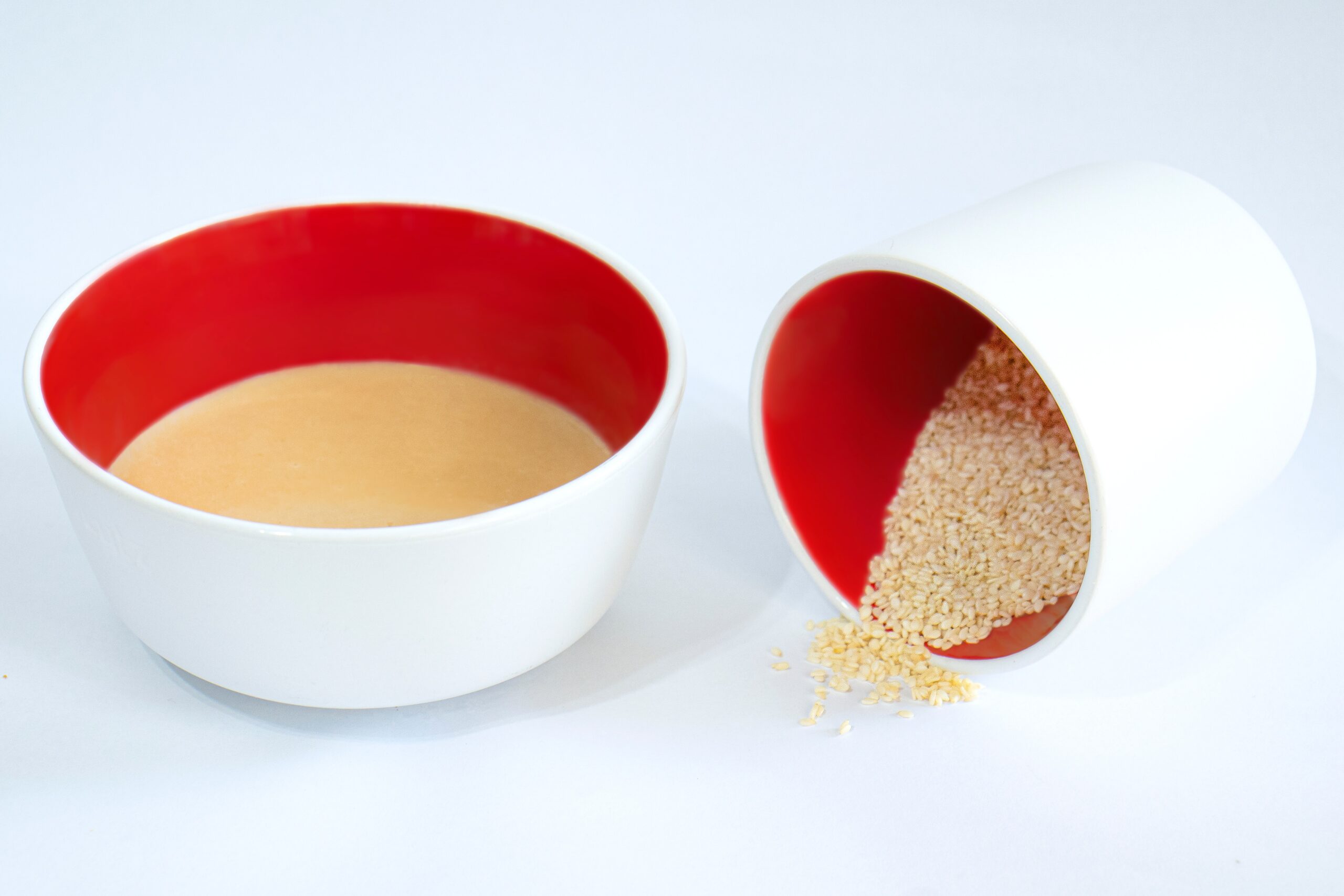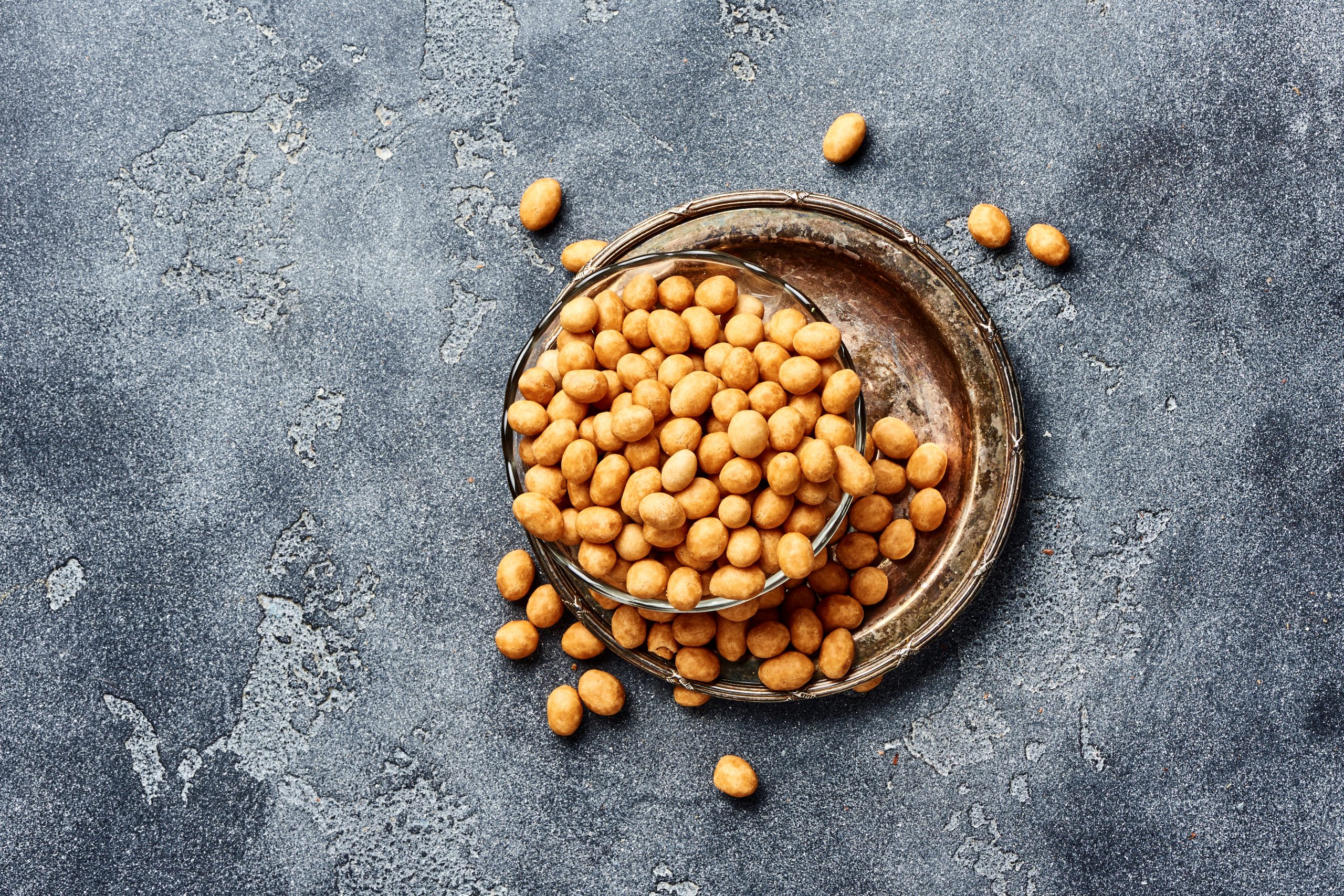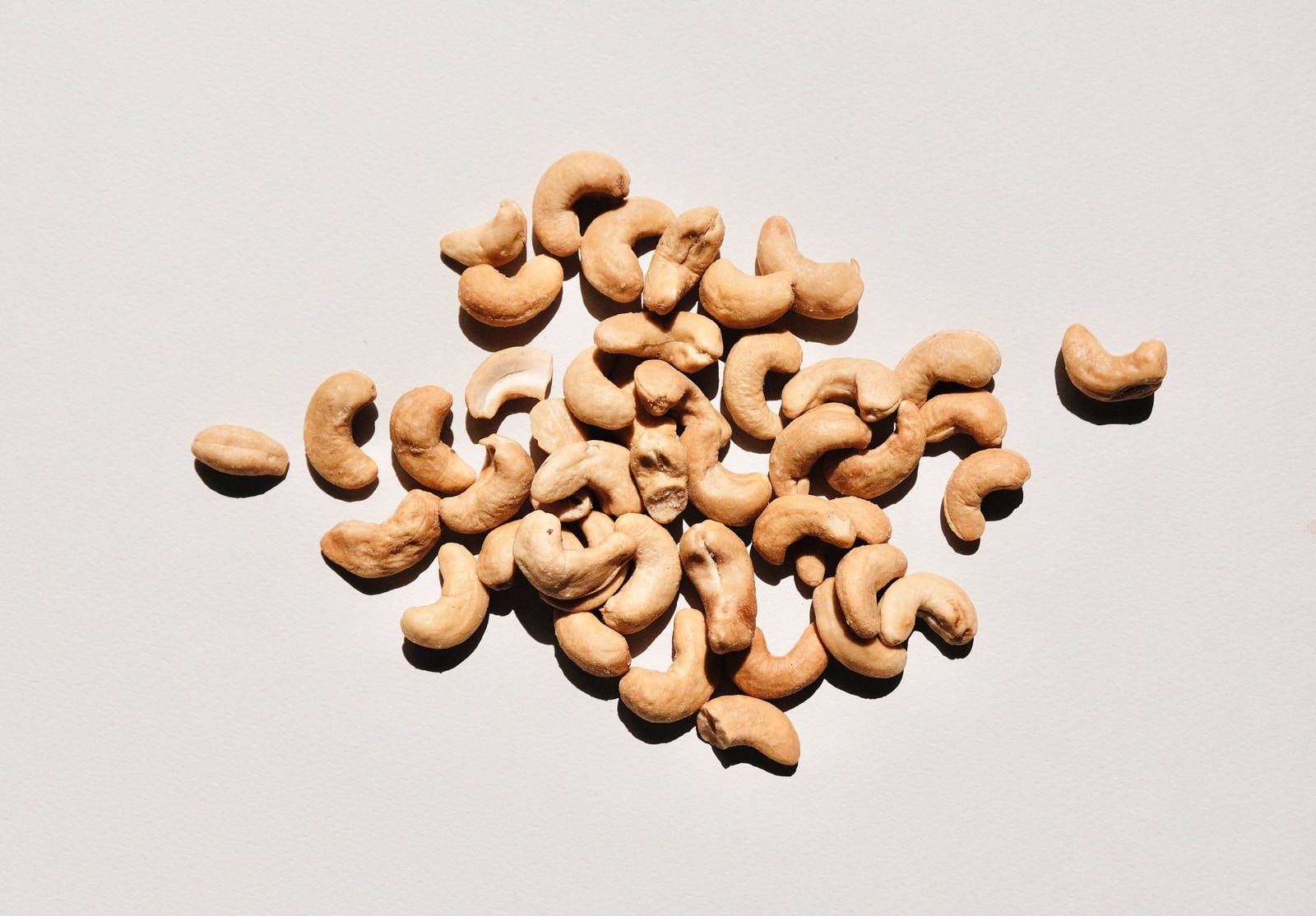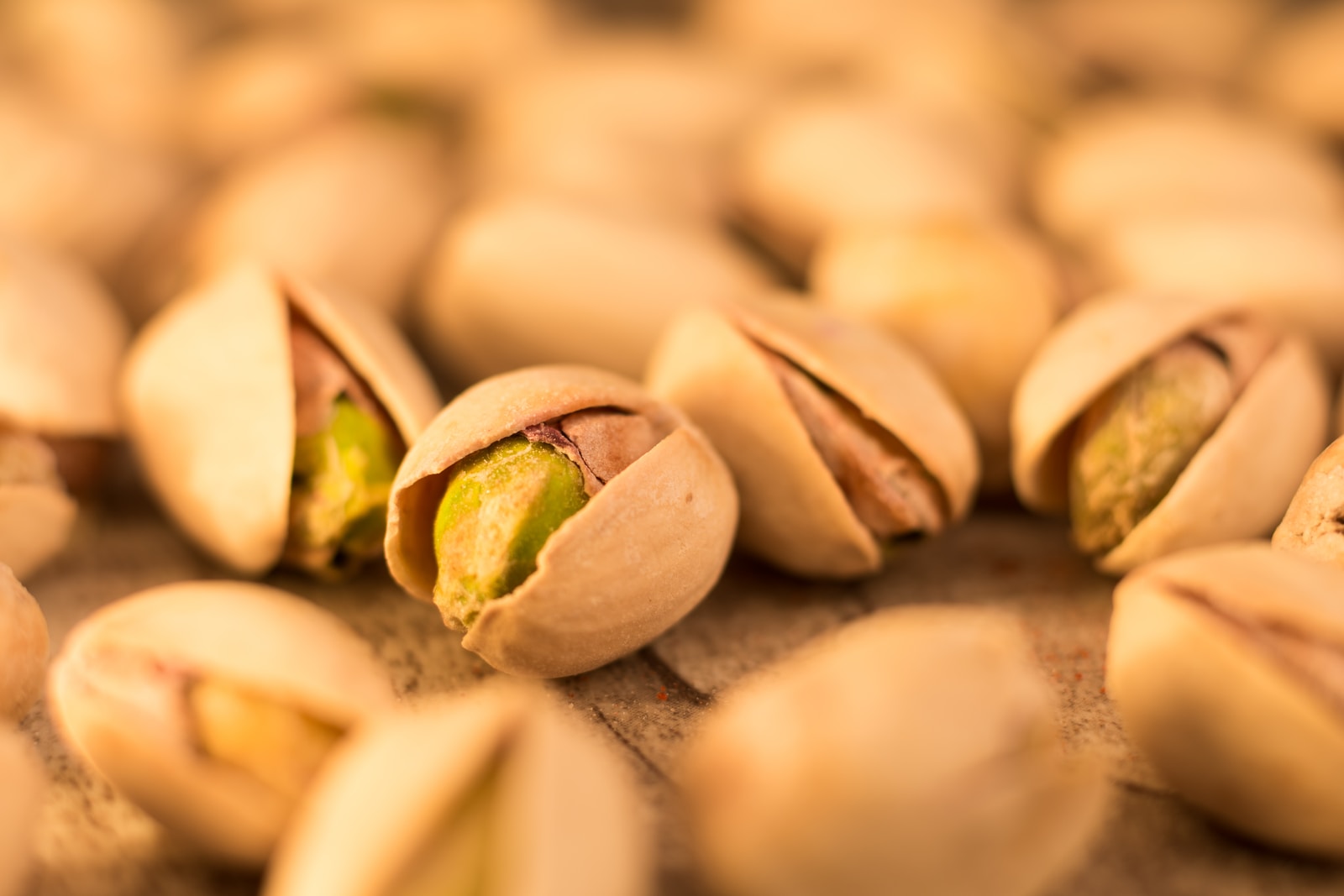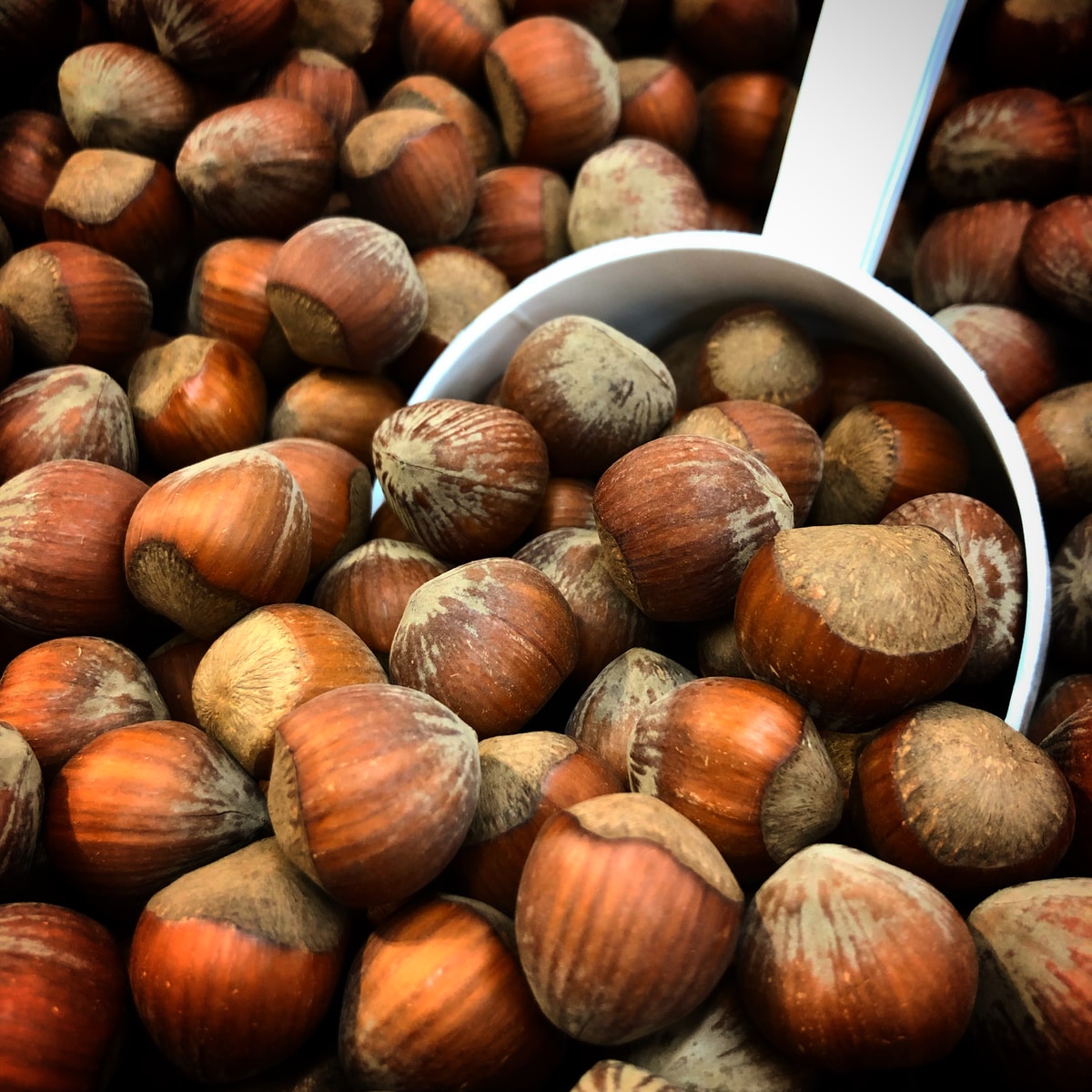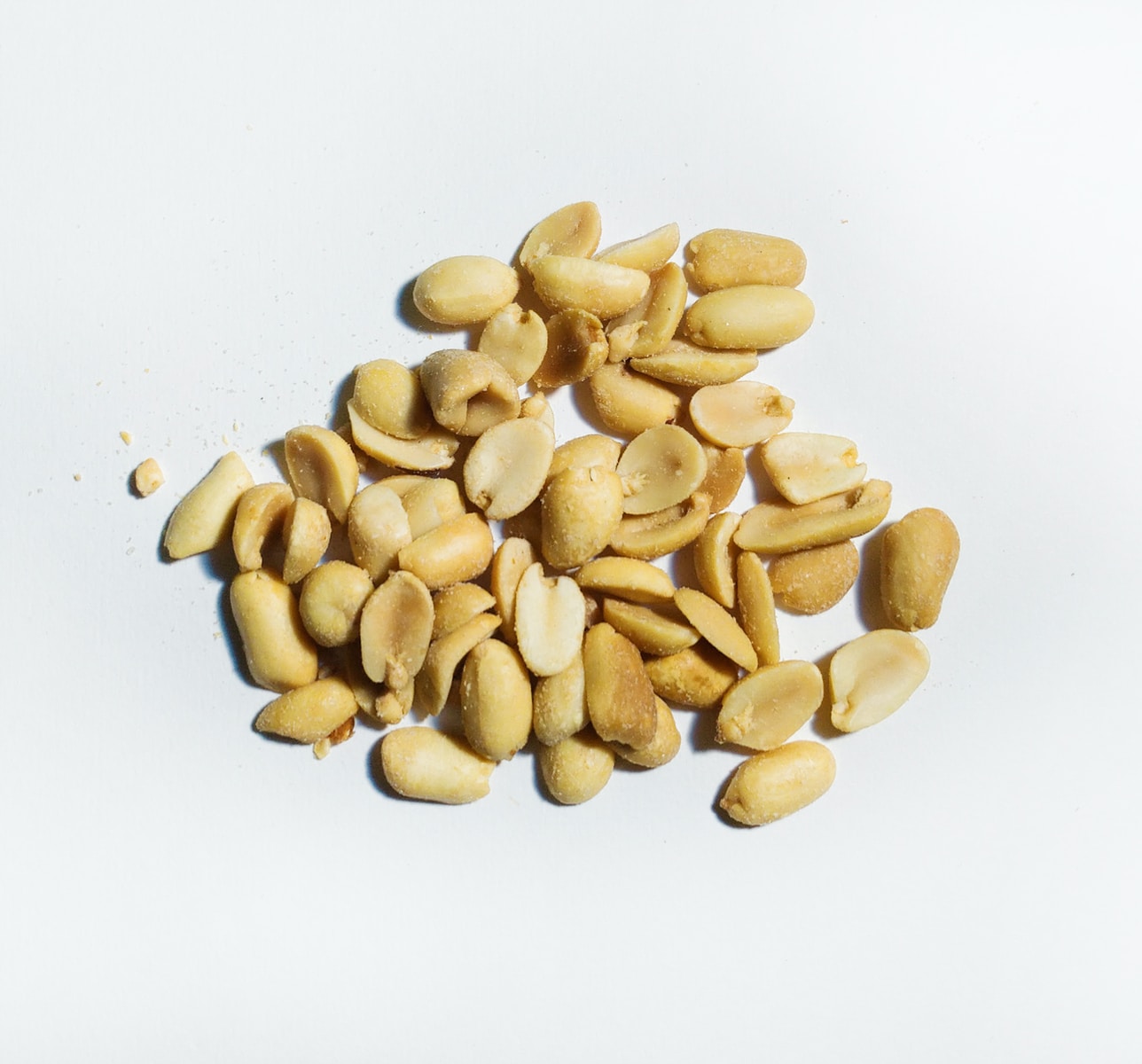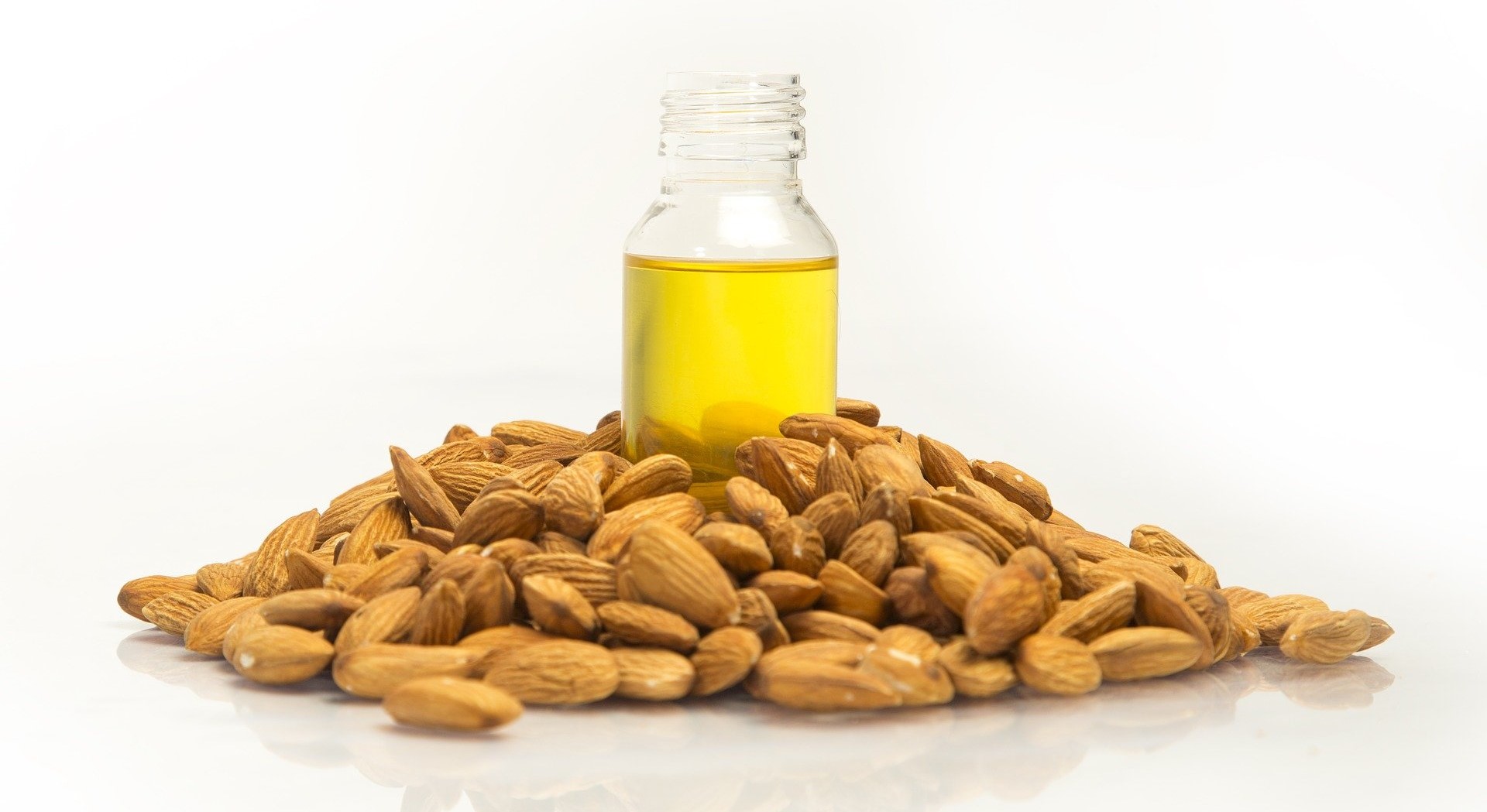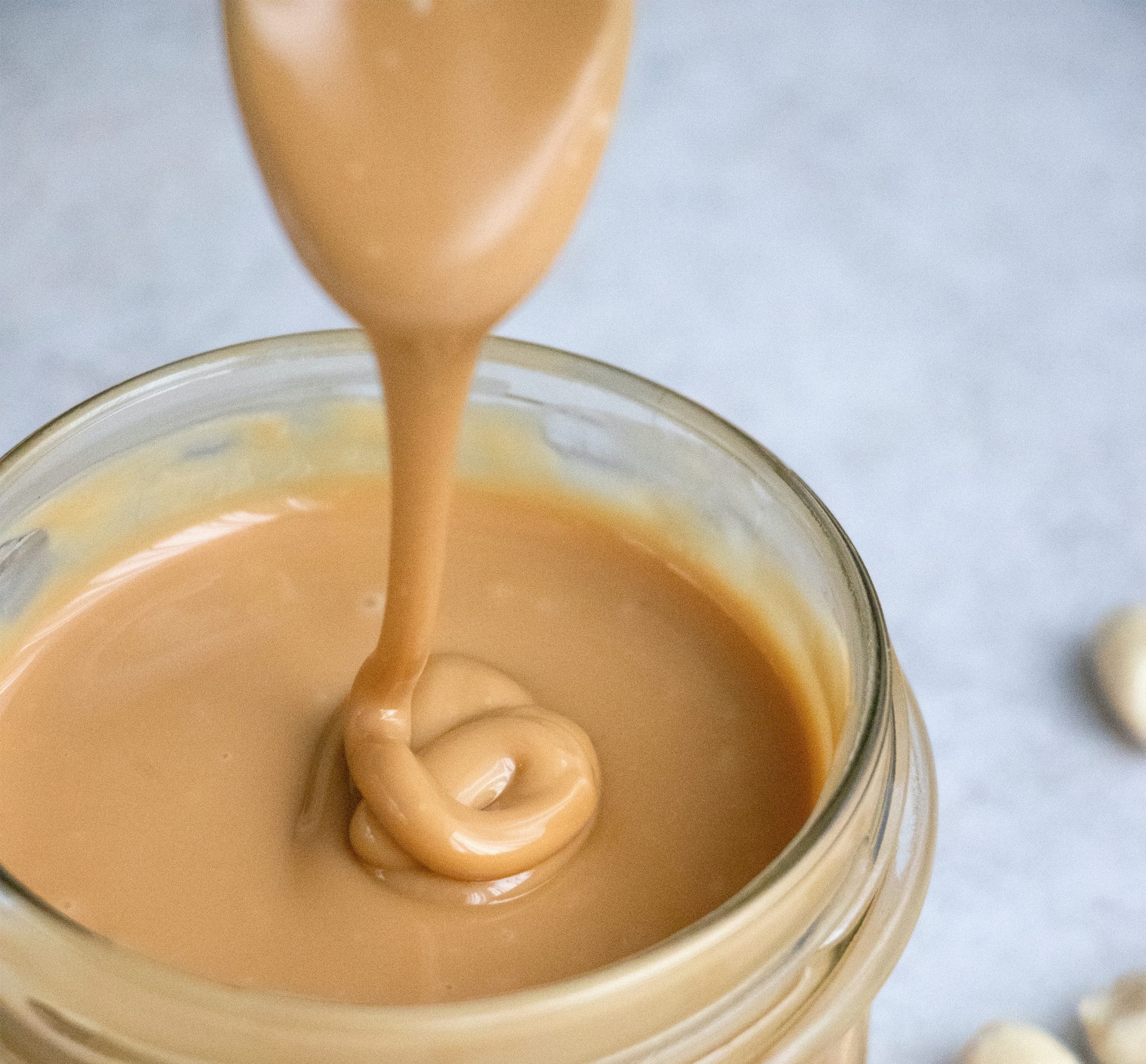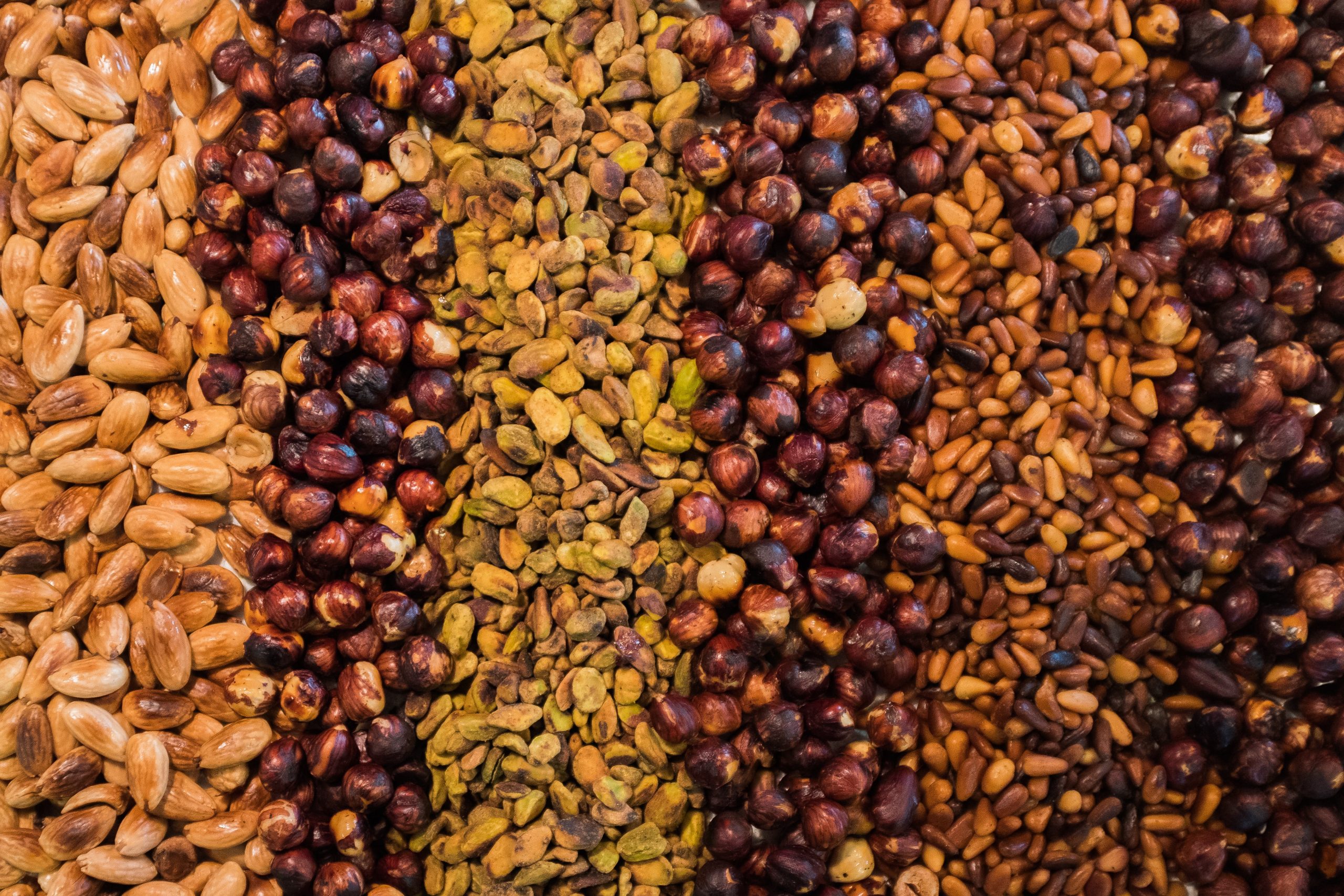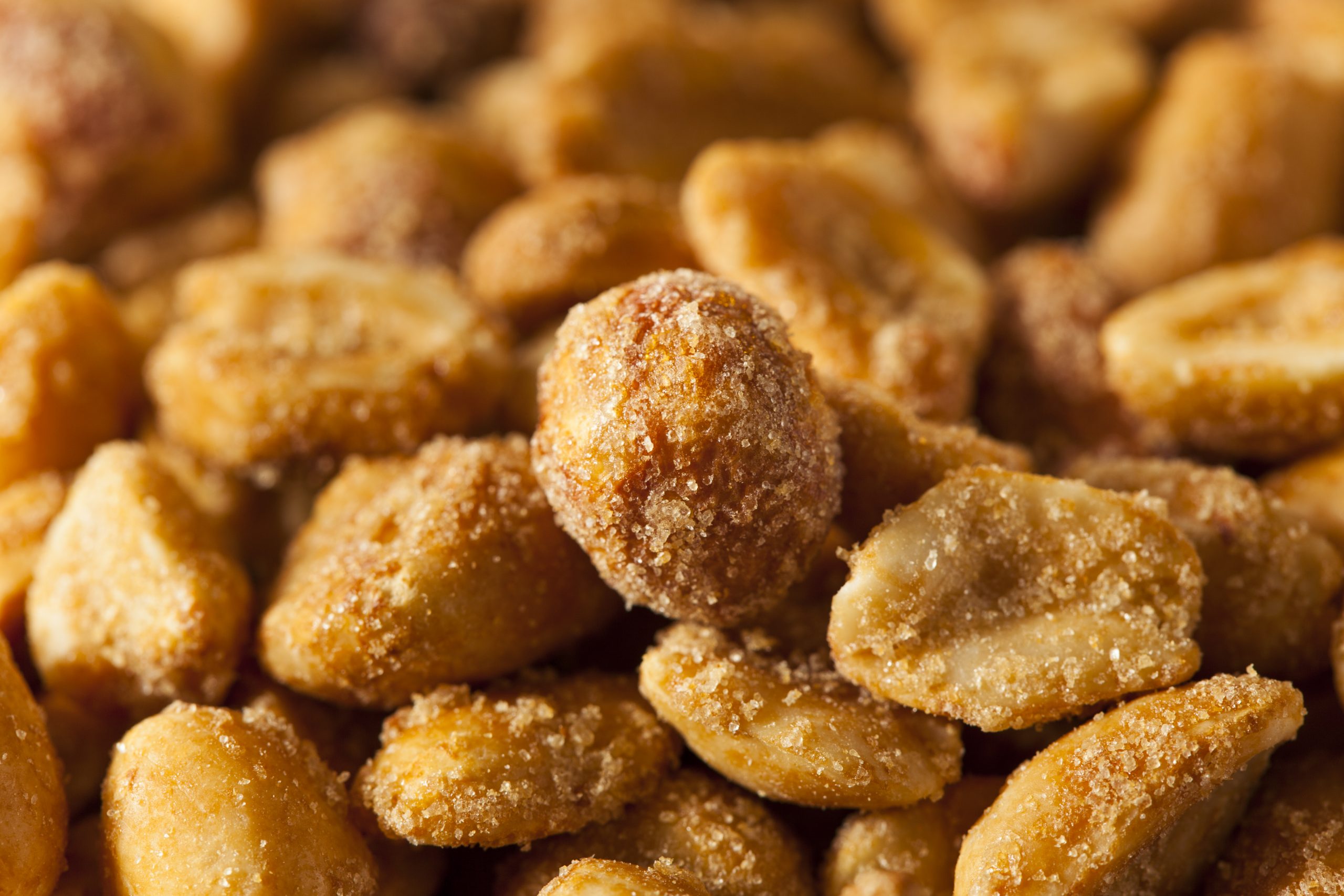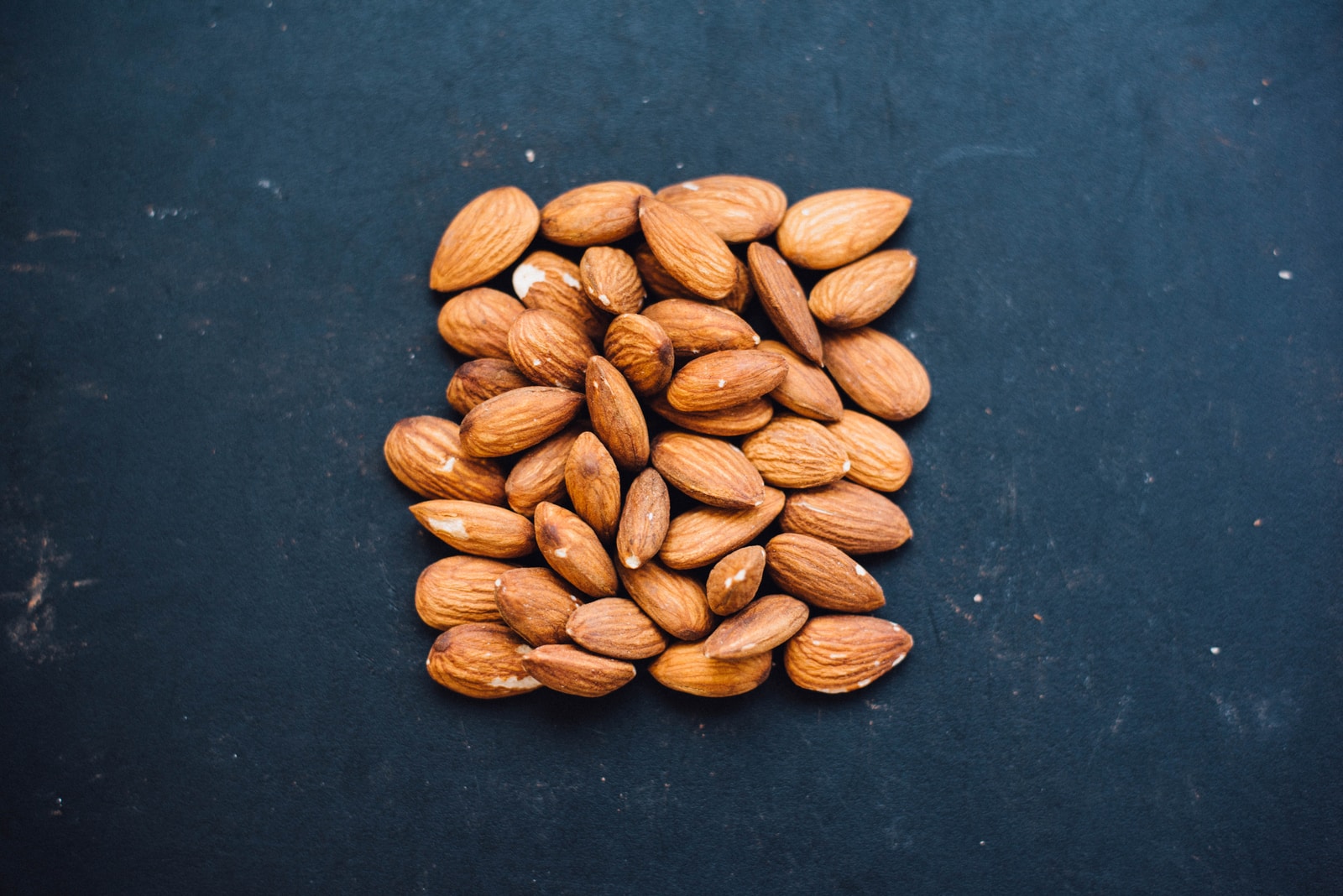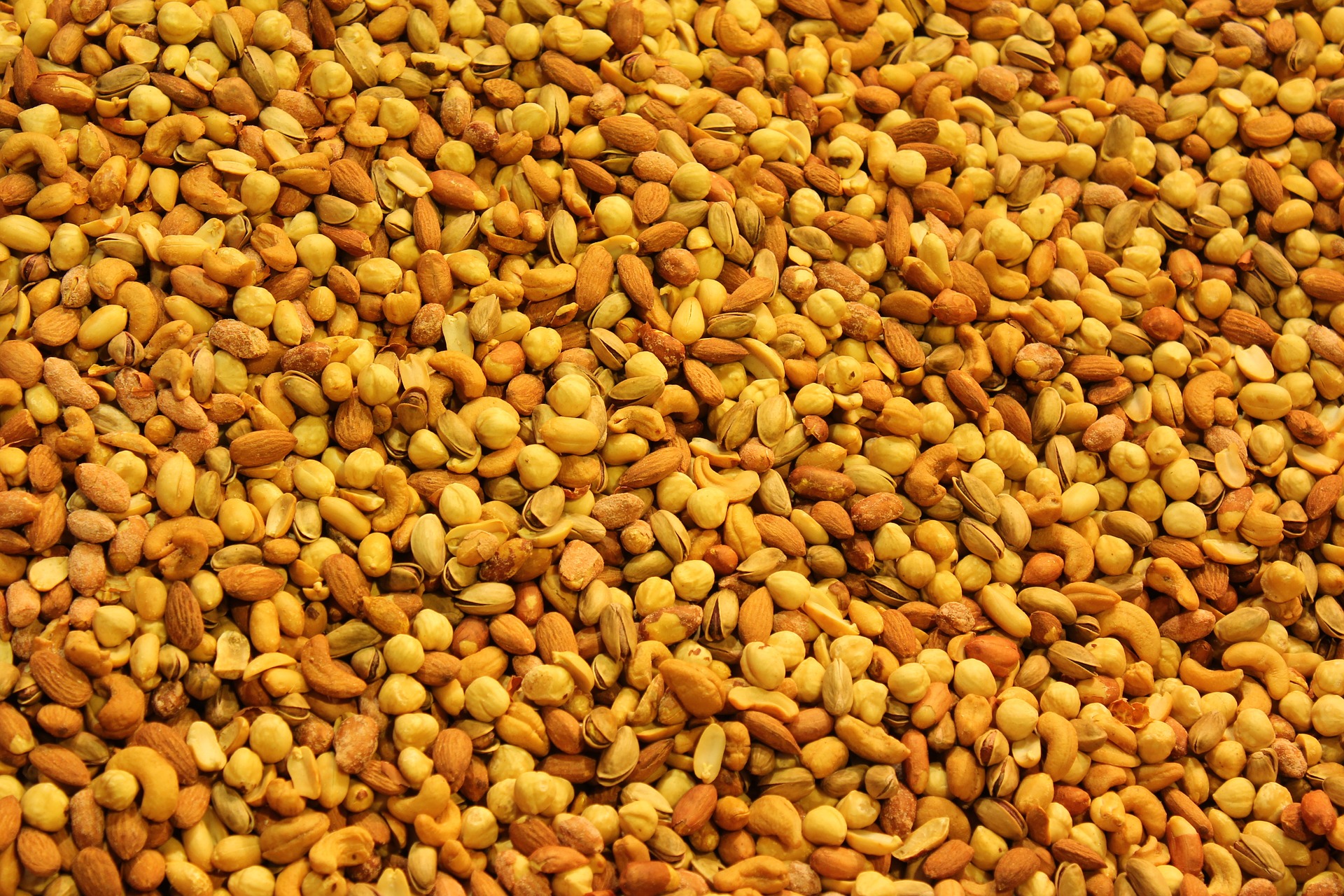
Nut Processing Equipment
Find innovative nuts equipment and connect directly with world-leading technology suppliers
A fresh salad with a walnut oil dressing or a peanut butter sandwich? A bag of roasted cashews or a pack of almond cookies? The common thread among these tasty treats is nut processing equipment. Not all nut ingredients are indeed nuts, botanically speaking. But the machinery that transforms shelled fruits, legumes, and drupes into fried snacks or a paste is similar. As for the food products, there is a nut recipe for every mood and occasion.
Top picks for nut production
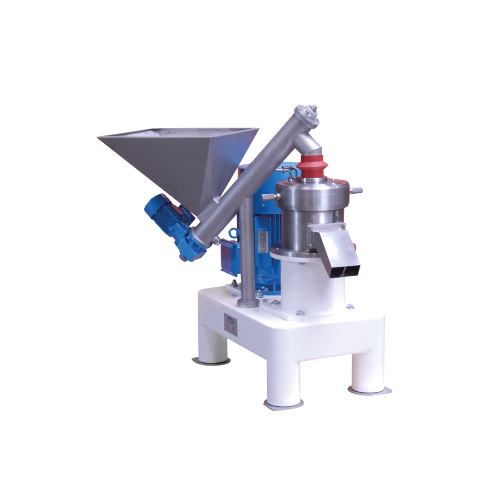
Nut and seed pre-grinder
When dealing with high-fat roasted nuts and seeds, achieving optimal particle size distribution can ...
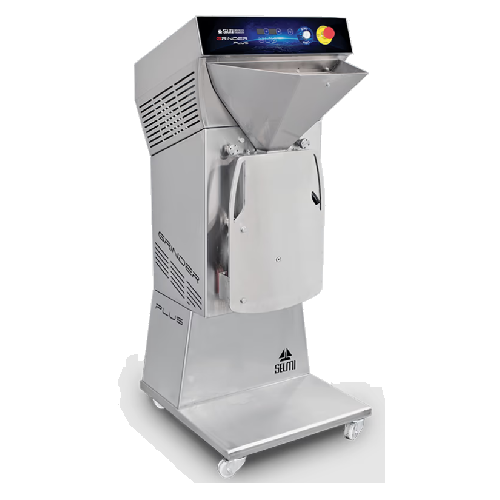
Nuts paste refining mill
Transform nuts and dried fruits into fine pastes with precise particle control, ideal for creating p...
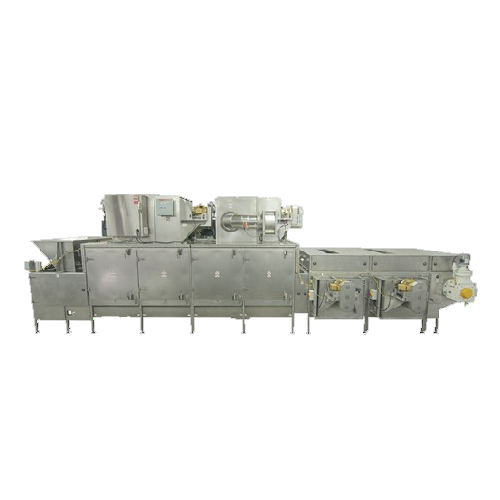
Continuous nut roaster for large-scale nut processing
Streamline your nut processing capabilities with a machine designed...
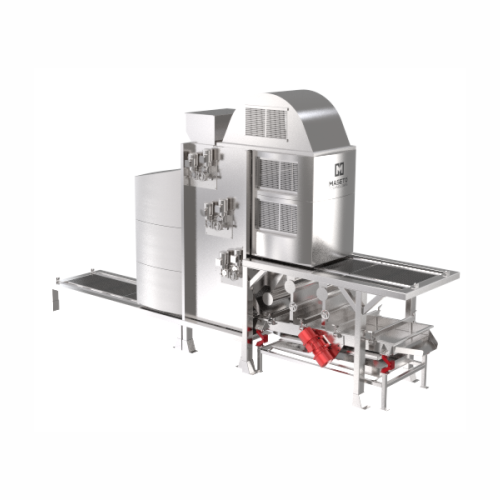
Almond and apricot kernel blanching solution
Efficiently remove hulls from blanched almonds and apricot kernels to streaml...
Stories about nuts
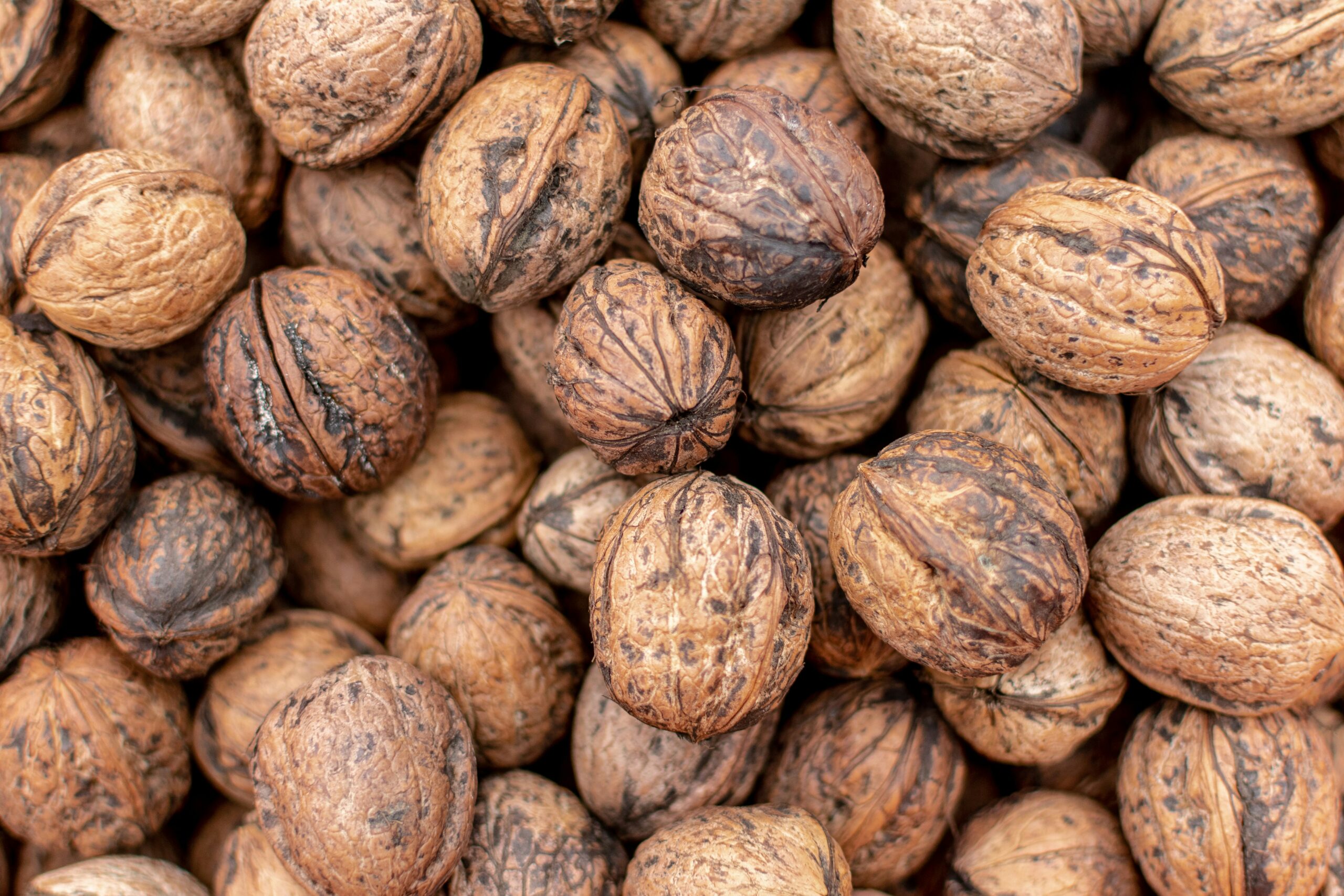
An organic way of killing insects! MA concept, now available for 25 kg bags
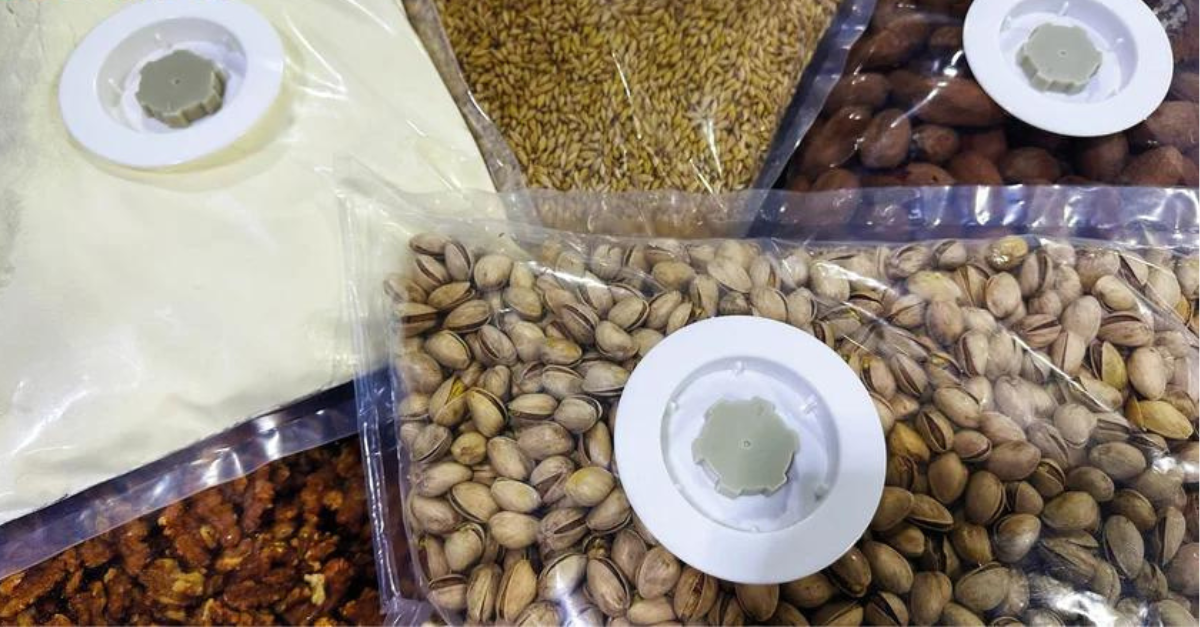
From big bags to compact bags: use MAP in both
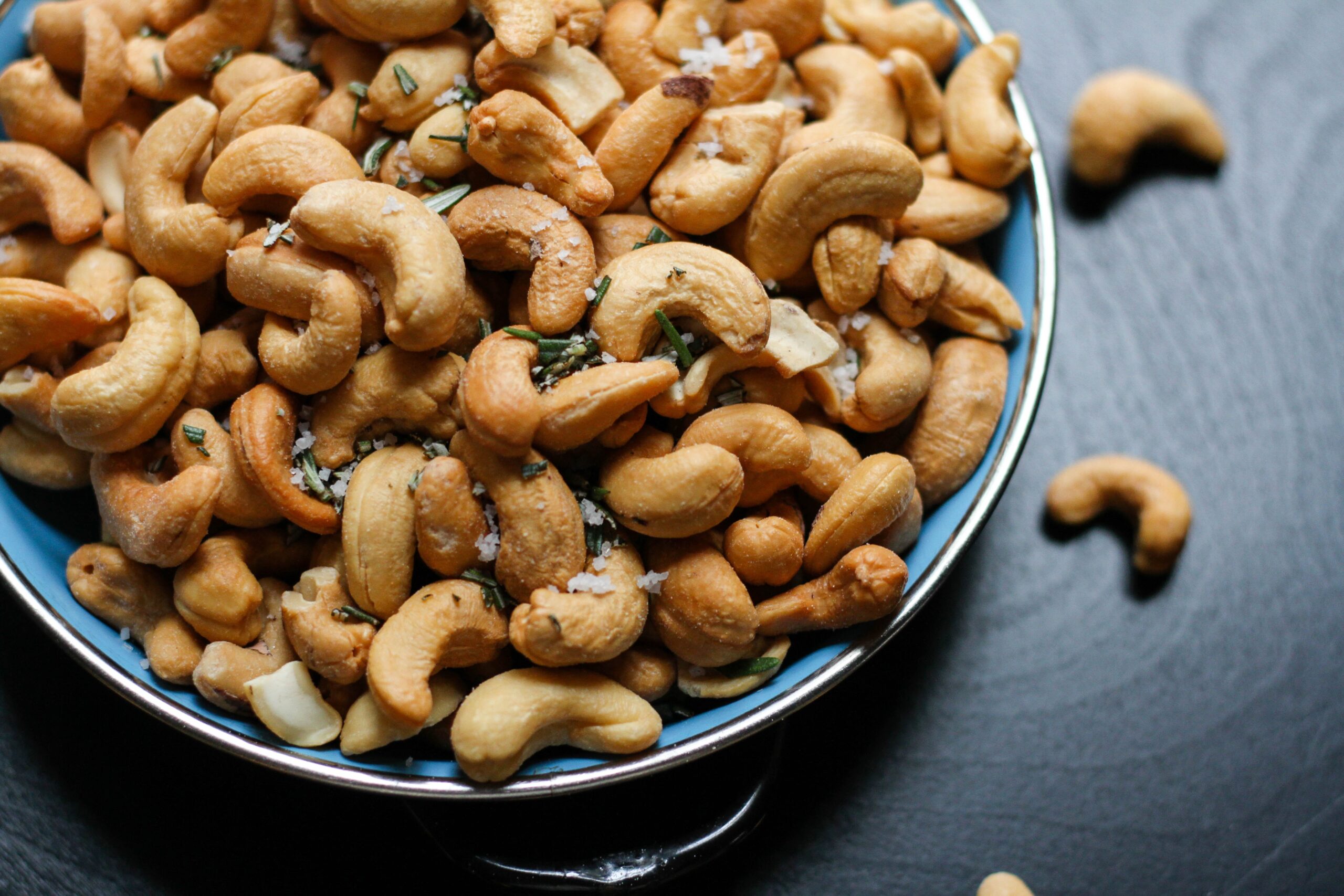
Taming the respiration and biological activity of cashews
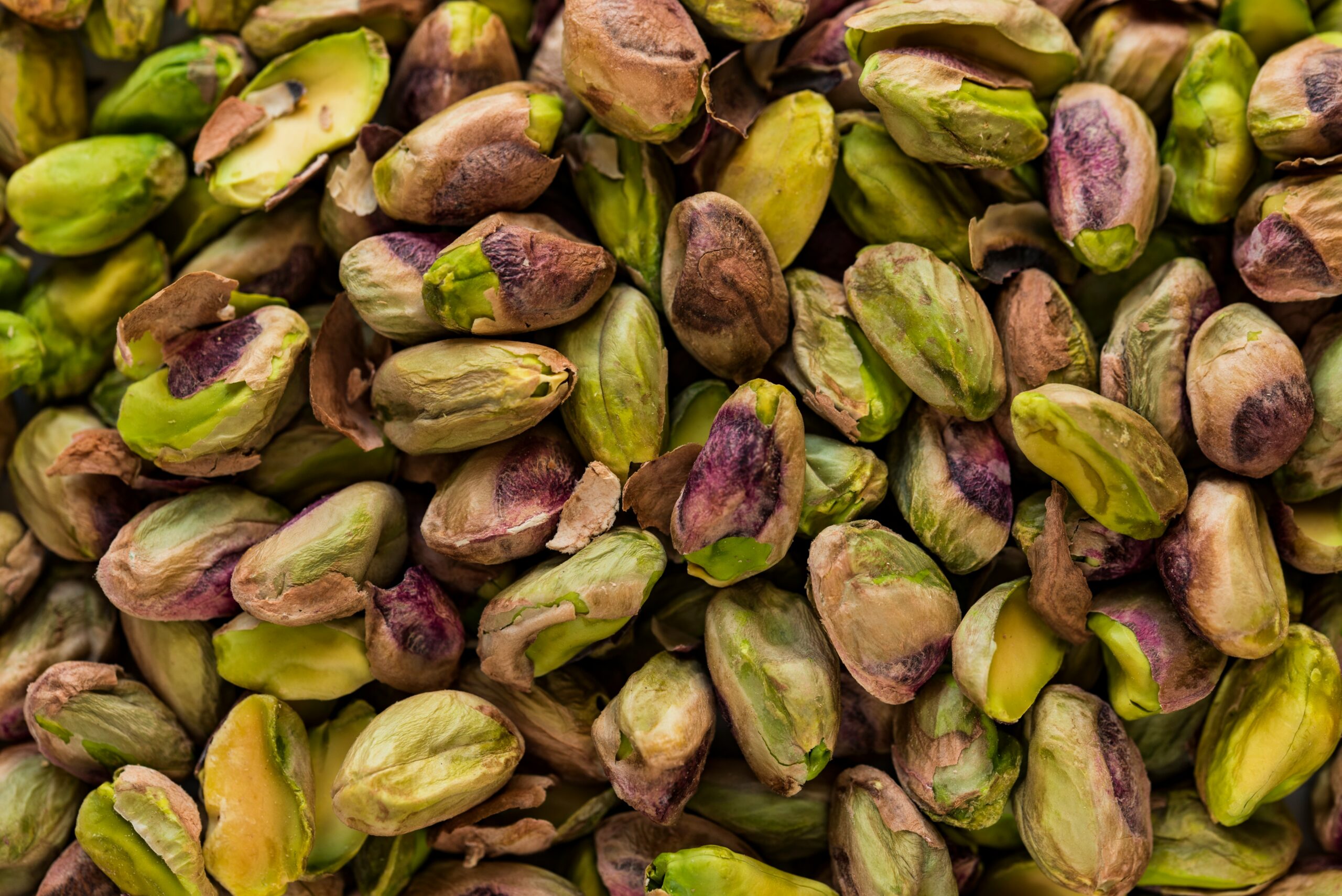
Outsmarting the pistachio-greedy worm while storing your nuts
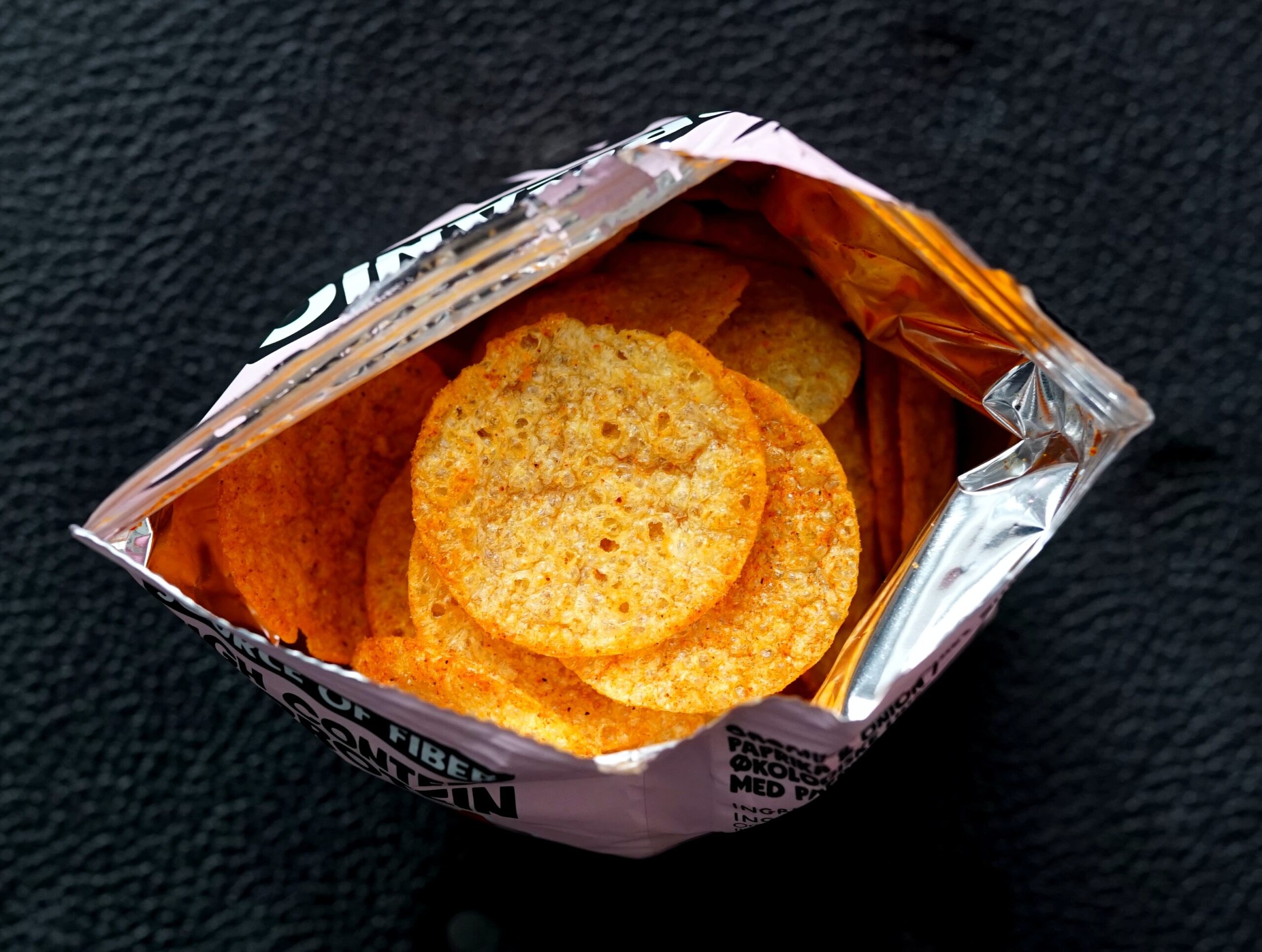
Modular design for a fast fryer plant startup
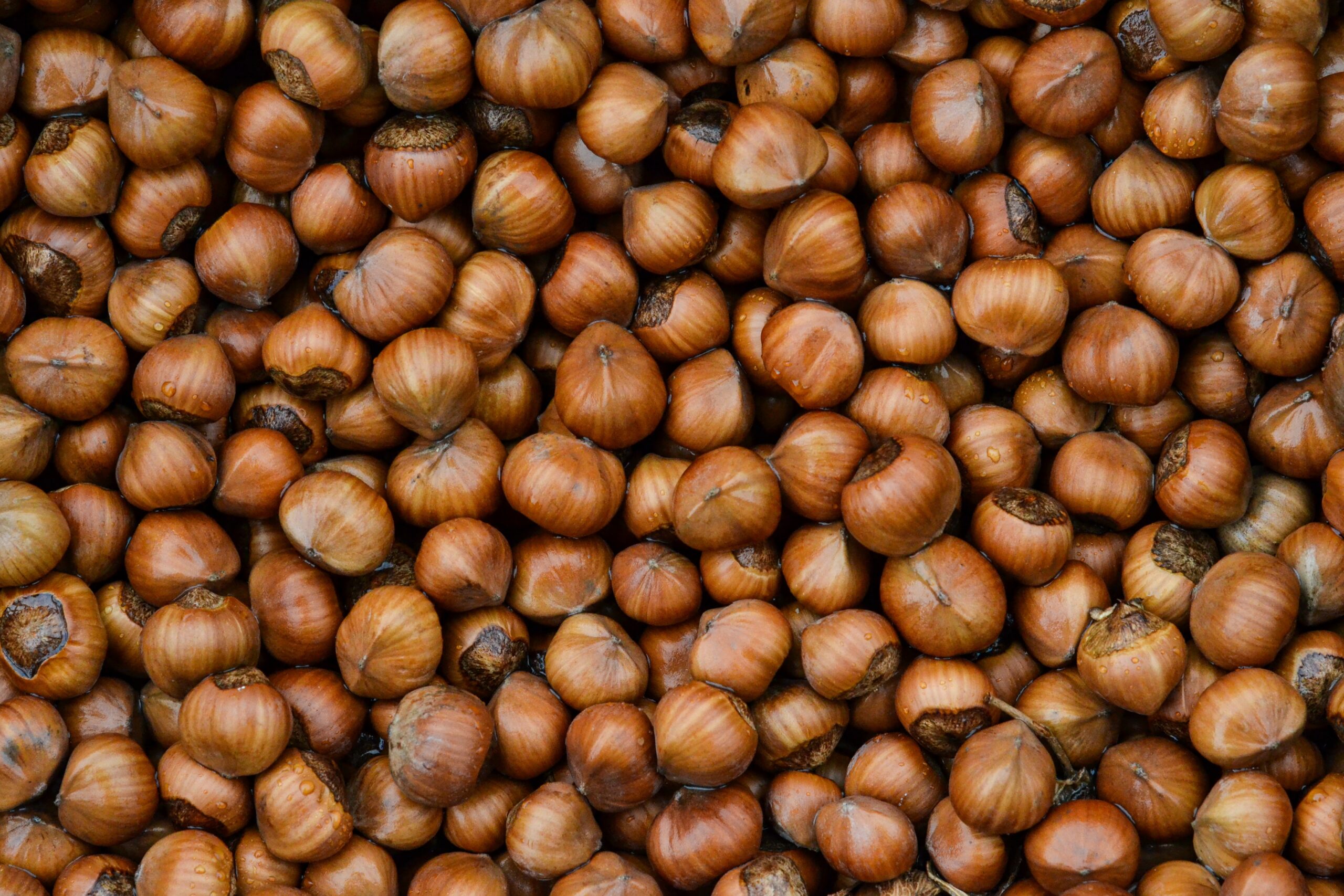
Say no to food waste. How to protect your hazelnuts from going rancid along the supply chain

#Changemaker: FIBC with brains
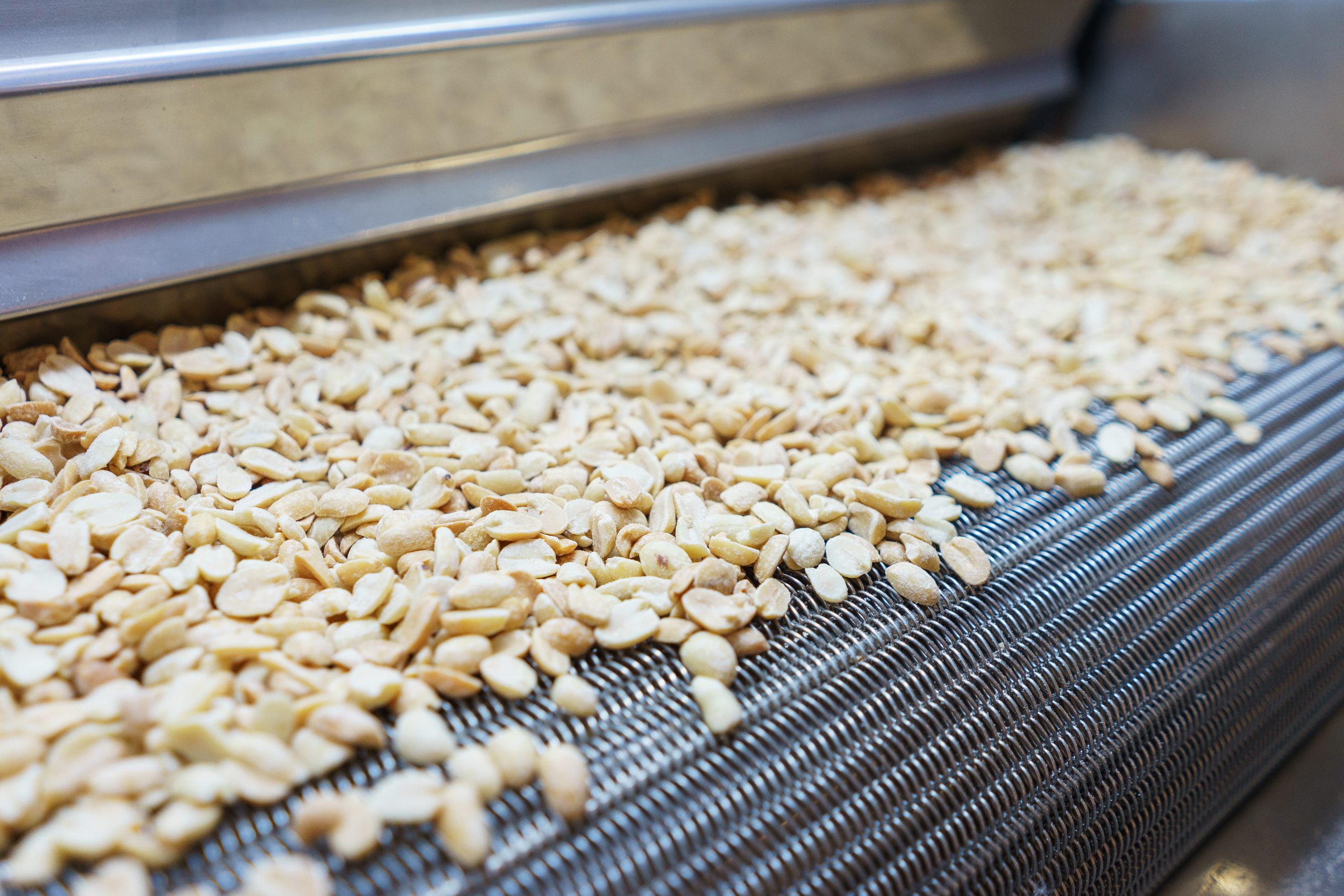
Cracking the code of fried peanuts: how to produce the tasty snack
Select your nuts process
What are you making?
Tell us about your production challenge
Precleaning technology is vital nut processing equipment
Harvested tree nuts bring plenty of contaminants into the plant. Before processing them, ensure that the nuts are free from surface pathogens and foreign objects.
Separate the nuts from hollow shells, stems, and other materials using screens of different mesh dimensions. A series of sorters will then calibrate the valuable nuts into equal sizes. Subject the nuts to high-pressure air blowers to rid them of debris and small particle residues.
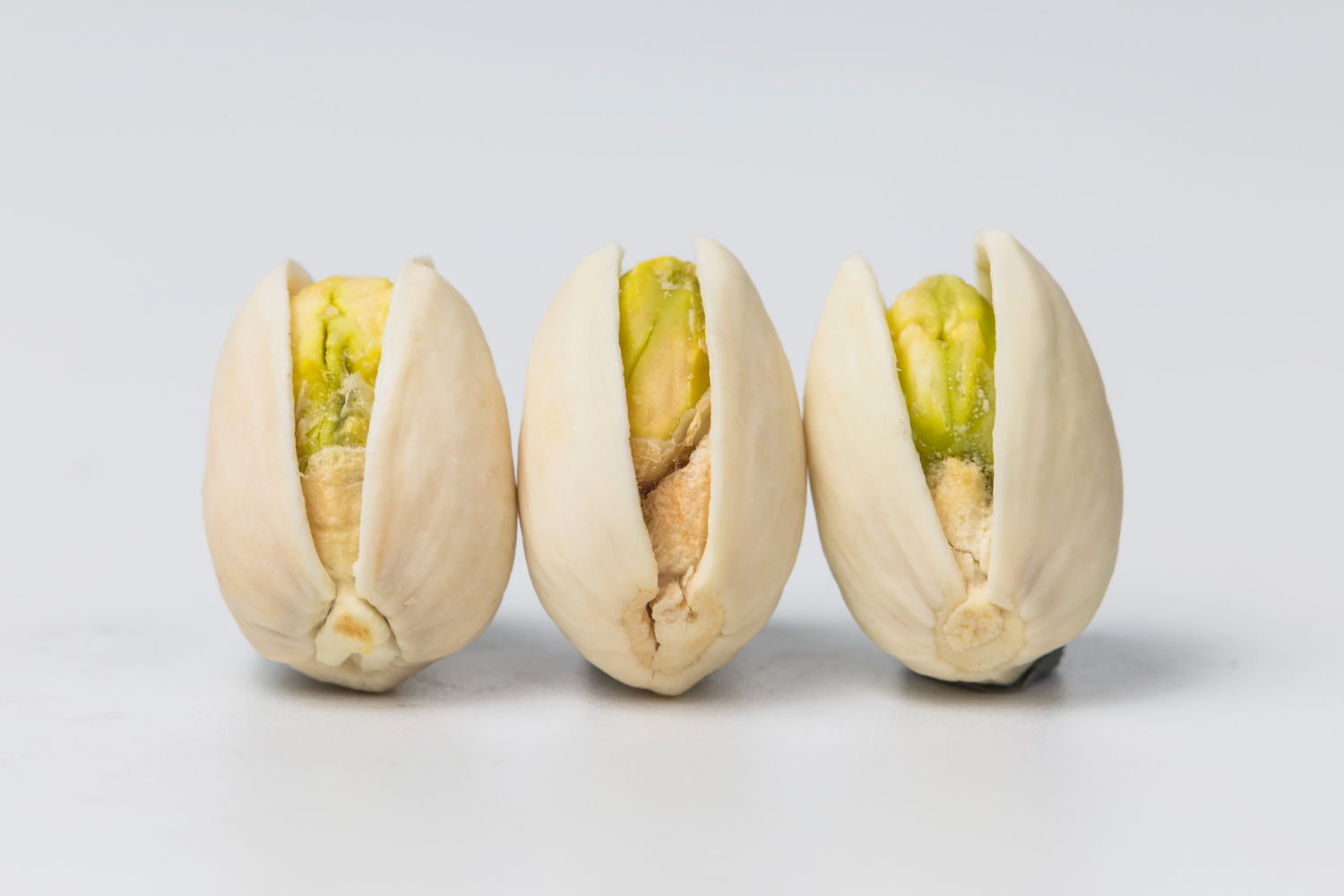
Add moisture to protect nuts from breakage during processing
Drying the nuts makes them easier to crack. Heating the cleaned lots in a cabinet dryer hardens the shells and facilitates hulling.
But reduced water content makes the meat more brittle and could decrease yield at the end of the processing line. An effective technique is moistening the nuts to soften them and applying gentle heating to harden the shells. The processed nuts can be dried thoroughly after the hulling step is performed.
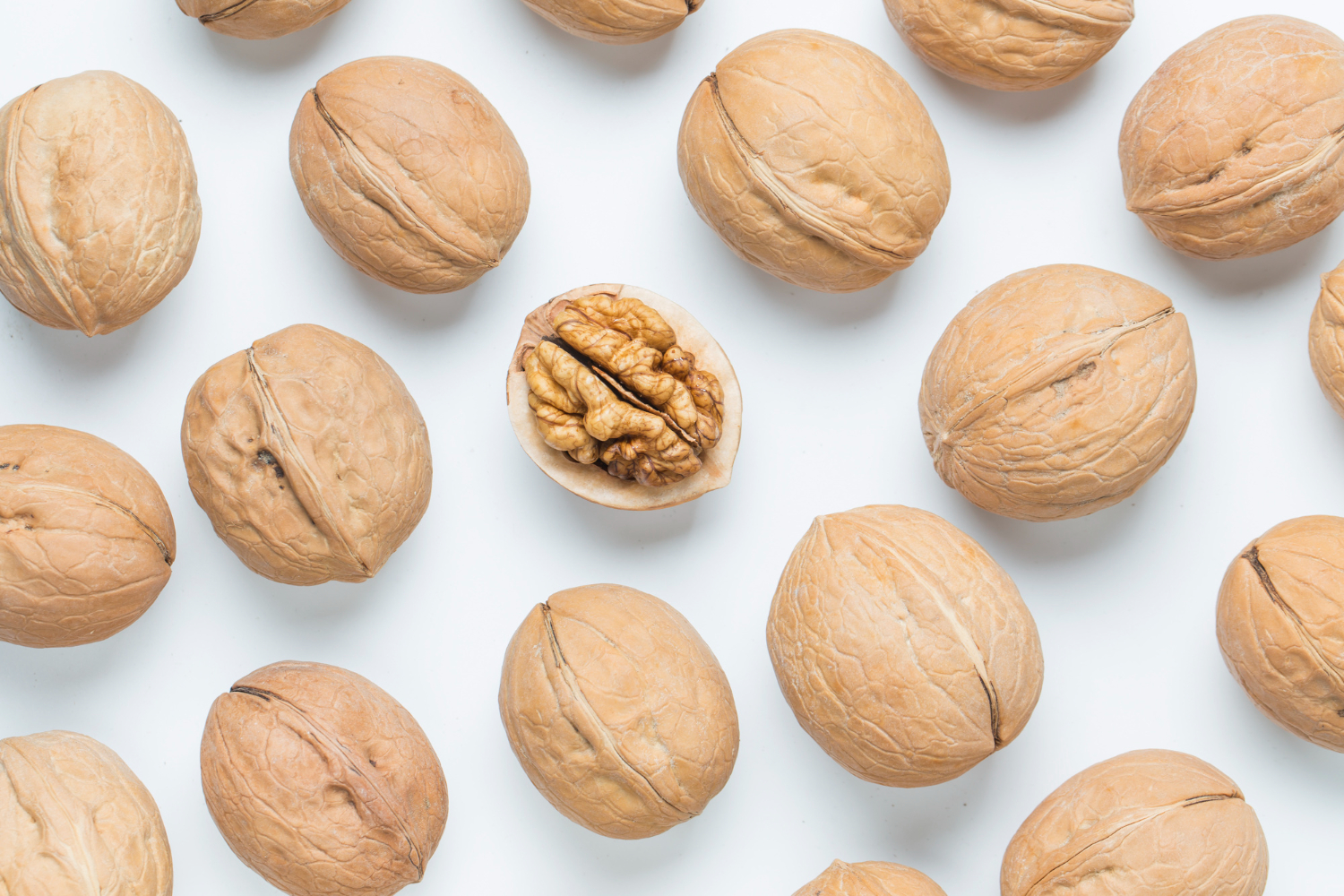
Accurate hulling is a tough nut to crack
The hulling operation is a delicate step during processing. Nut cracking machinery risks damaging the kernels, leading to wastage or poor quality.
Nut varieties, from peanuts to walnuts, have different shell structures that require specific equipment configurations. The cracking process is performed in two steps. Pre-awning technology first applies gentle pressure to weaken the shell before a second line completes the cracking. Empty hulls are blown into a collection bin and separated from the nuts.
Blanche the nuts to prepare them for peeling
Nuts can be peeled, mainly for further processing, like hazelnuts for chocolate spreads or almonds for marzipan.
Blanche the kernels to relax the skins. Blanching technology subjects the processed nuts to scalding water for a brief period before submerging them in cold water. Finally, pass the nuts through the revolving rolls of a peeler to skin them.
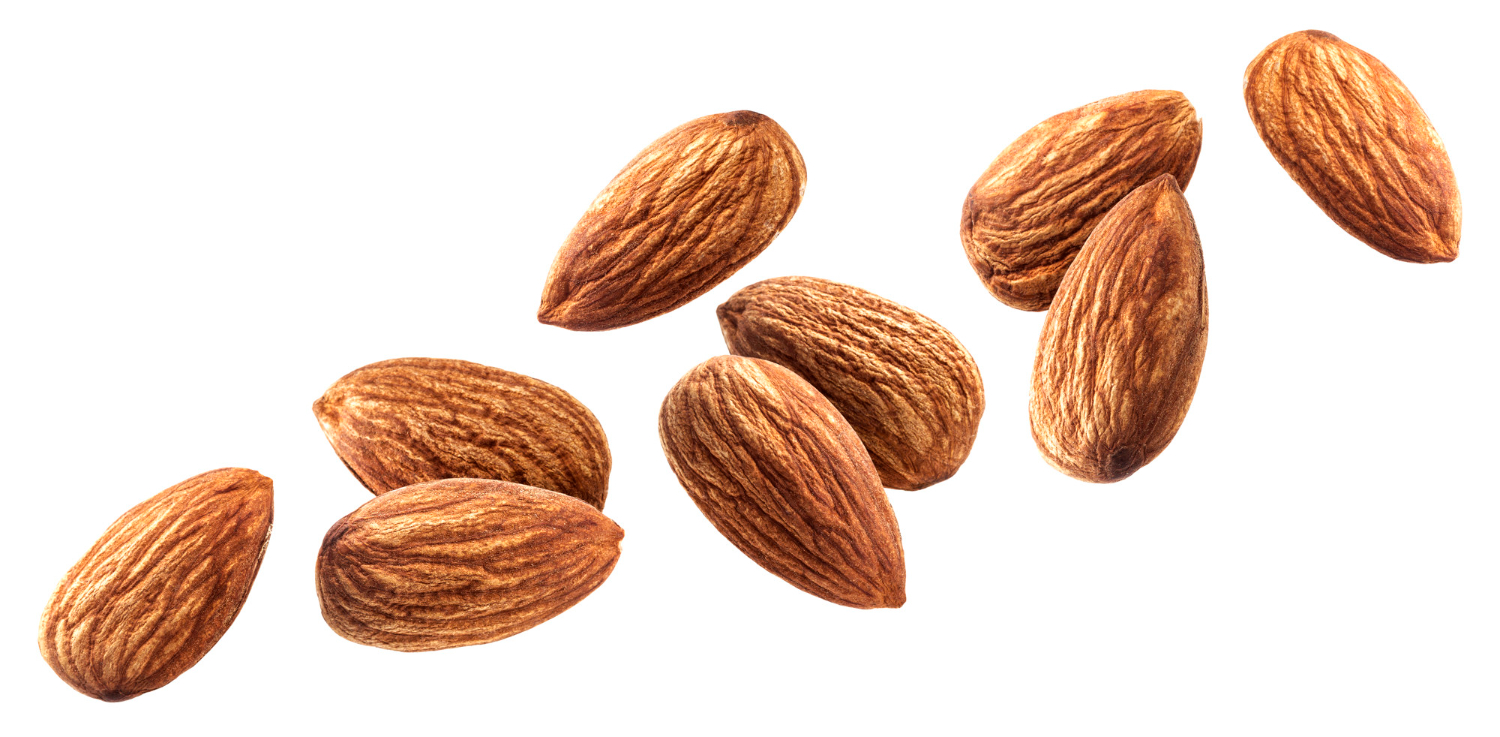
Neutralize enzymes to prolong the shelf life of nuts
Enzymes in the nuts protect them from insect attacks, but they slow down digestion when consumed by humans. Moreover, these proteins accelerate the chemical breakdown of the kernels. Inactivate the enzymes to extend the shelf life of nuts and promote good digestion.
Soaking the lot in water breaks down the phytic acid content and neutralizes the enzymes. This process also helps release nutrients producing higher-quality nuts, especially if you’re packaging raw nuts.
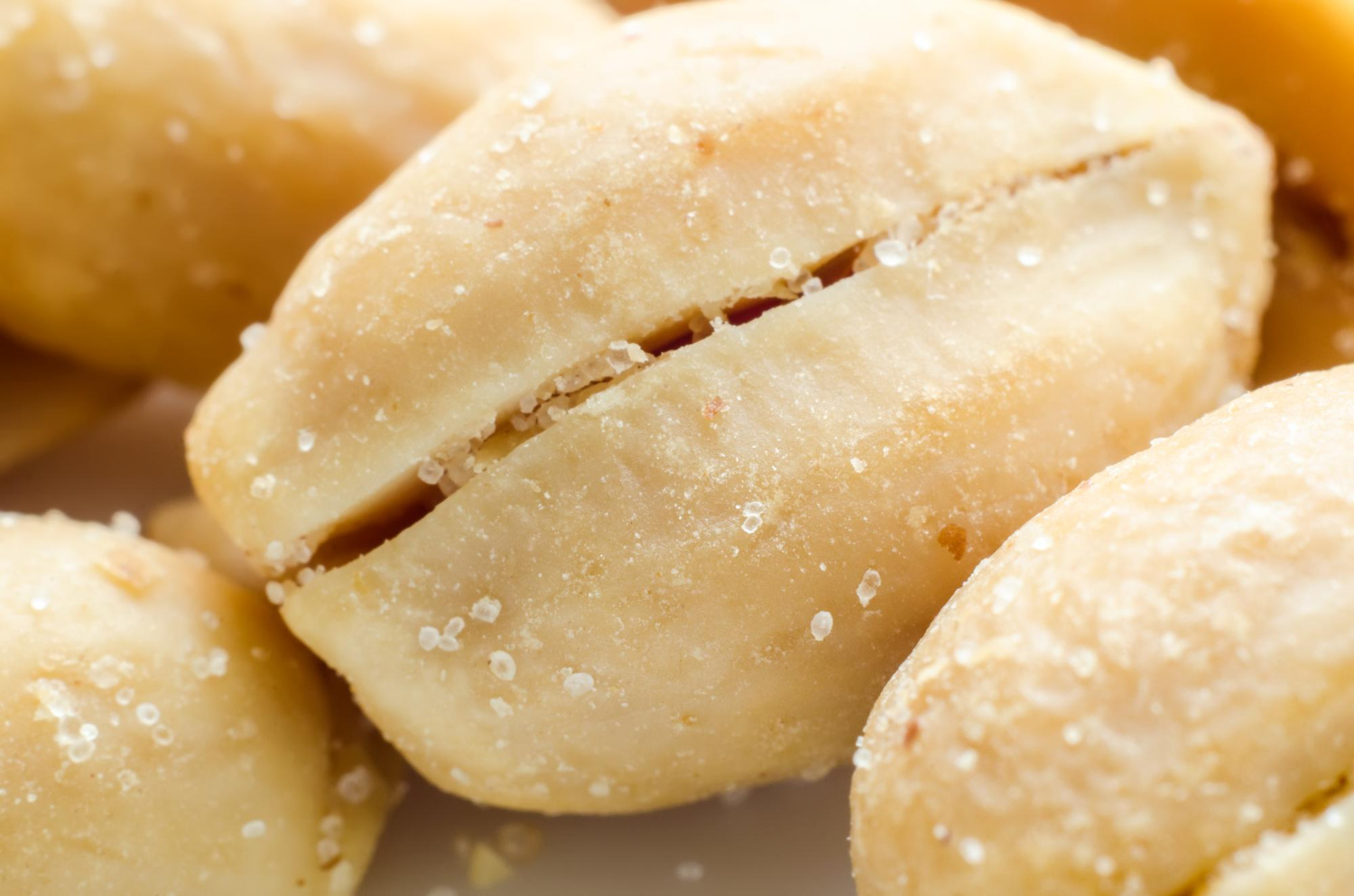
Try alternative coatings to mix up the flavors
Coat the nuts to give them a surprising final taste. Place the roasted nuts in a coating machine where a rotating drum agitates the individual kernels as the sprayer sprinkles the coating ingredient on them.
Everybody knows the salted peanut and the sugar-coated pecans. But alternative coating ingredients create new complex flavors, such as coconut-coated cashews or caramel-coated walnuts.
Use frying technology to produce oil roasted nuts
Nut snacks owe their popularity to their texture. Roasting boosts the crunchiness and crispiness of nuts.
There are two ways of nut roasting: dry roast and oil roast. The first method involves placing the processed nuts in a cooking cabinet or roaster without additives. Oil roasting is usually performed in a fryer, immersing nuts in oils at high temperatures as they absorb the fats.
Which nuts technology do you need?
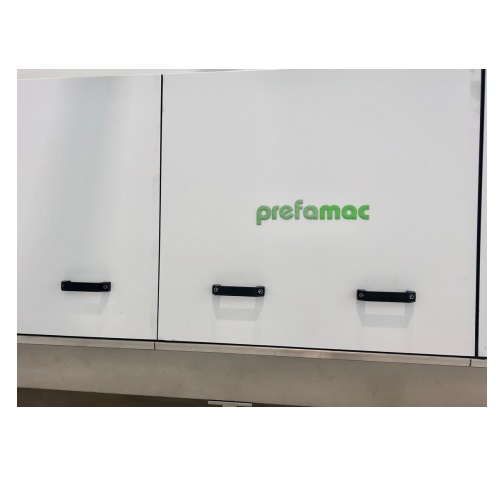
Nuts dosing system for chocolate drops
Effortlessly create consistently accurate chocolate-covered nut products with precis...
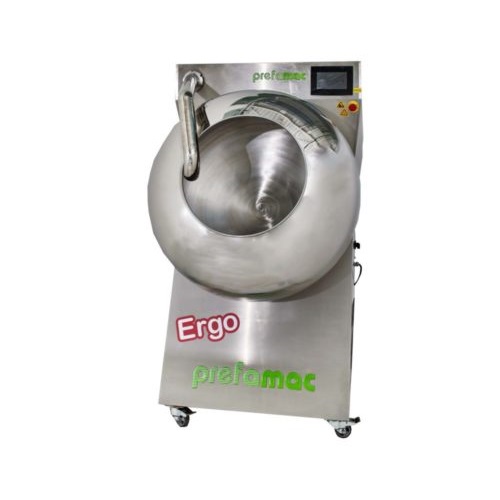
Coating solution for nuts and dried fruits
Easily apply multiple layers of chocolate to nuts, coffee beans, and more, achi...
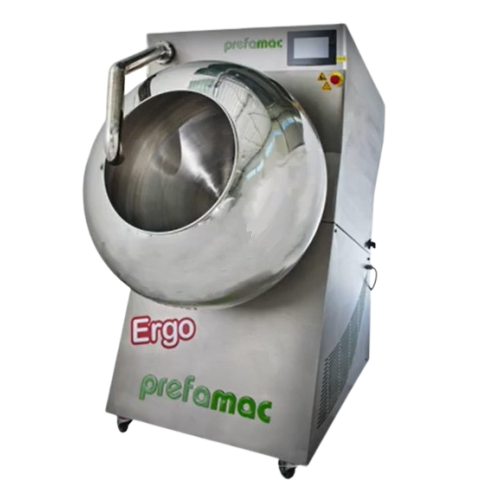
Chocolate coating system for nuts and small biscuits
Effortlessly achieve consistent chocolate coatings on nuts, fruits, ...
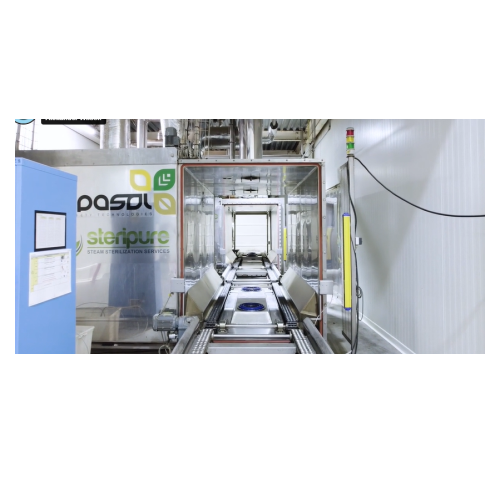
Roasting and pasteurization system for nuts and seeds
Ensure optimal pasteurization and roasting of nuts, seeds, and drie...
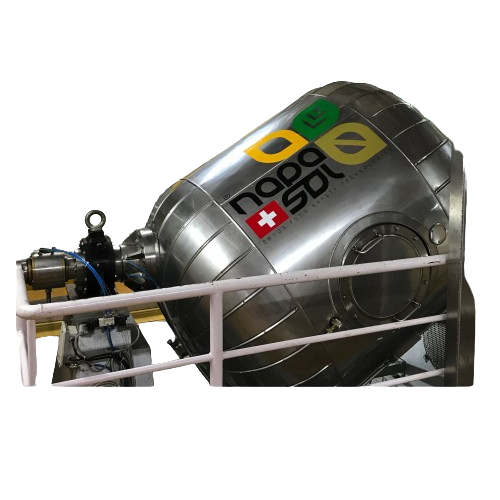
Roasting and pasteurization solution for nuts and seeds
Optimize your product line with seamless blending and pasteurizat...
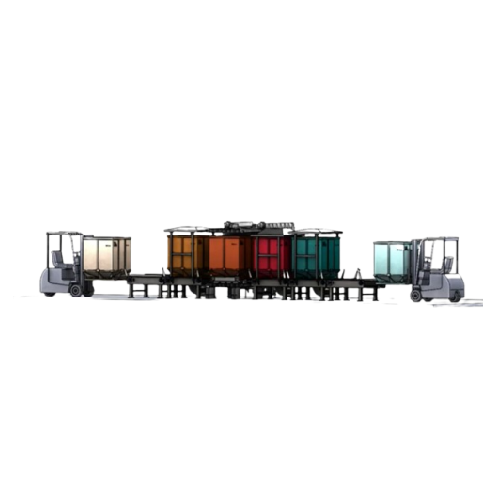
Nut roasting process with halved energy consumption
Achieve significant energy savings while maintaining high-quality roa...
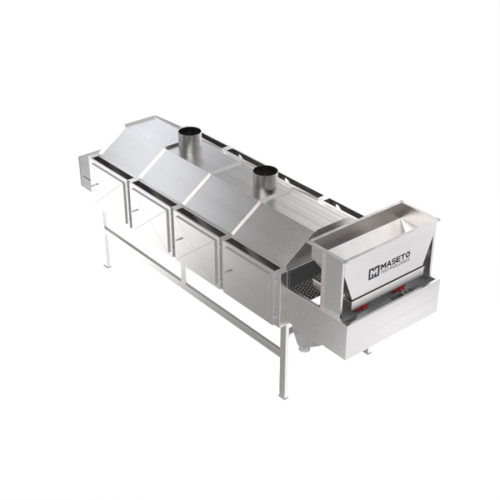
Nut plasticizer for production cuts
Enhance cutting precision and minimize nut breakages with continuous conditioning, prov...
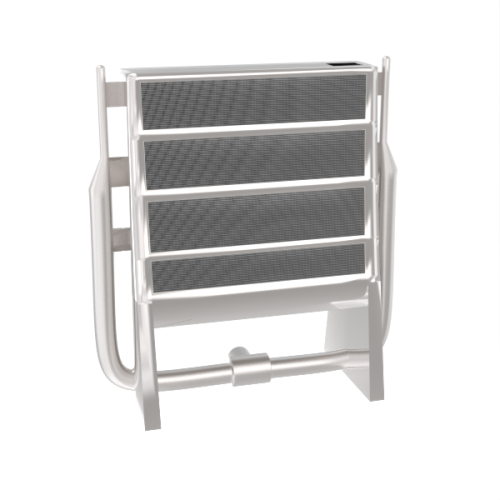
Vertical nut dryer
Achieve precise moisture control for nuts with a vertical dryer that optimizes space and adapts seamlessly...
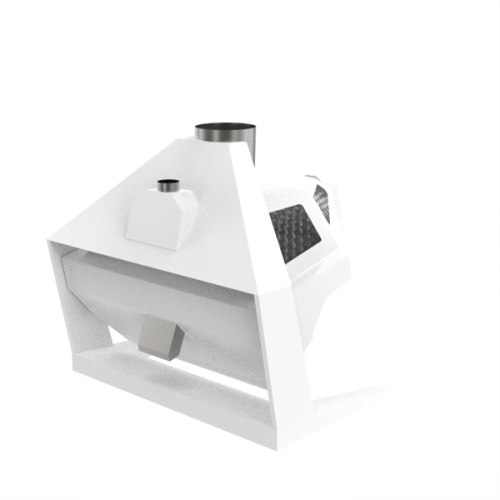
Destoner for nuts and seeds
Efficiently separate heavier particles like stones from a wide range of food products, including...
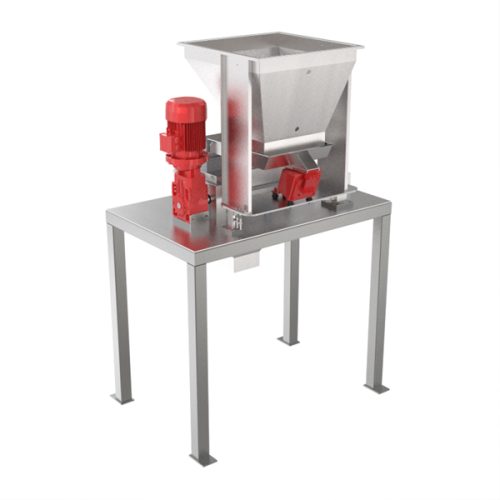
Nut dicing machine
Efficiently transform whole nuts into uniform cubes with precision cutting technology, ideal for creators ...
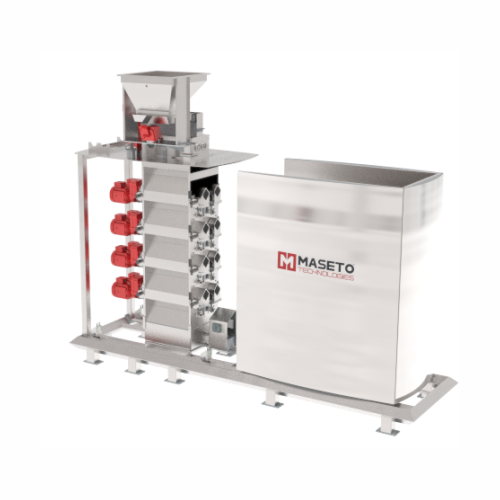
Nuts flour production system
Enhance your nut processing efficiency by transforming whole nuts into fine, consistent flour w...
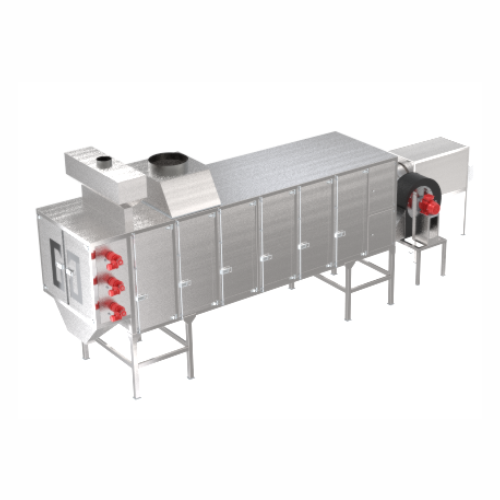
Horizontal roaster system for nuts and seeds
For nut processors aiming to achieve uniform roasting, this system ensures pr...
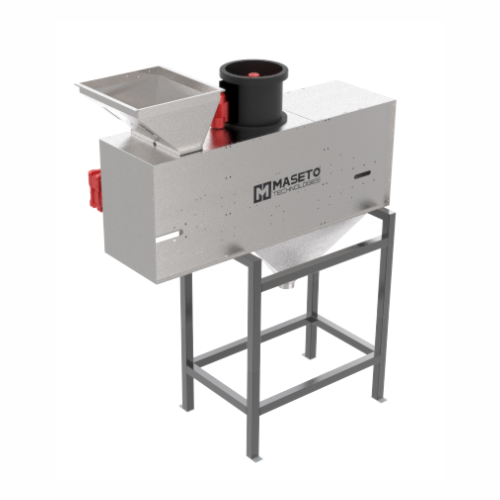
Nuts dust and impurity removal system
Enhance your nut processing line by effectively eliminating dust and impurities, ensu...
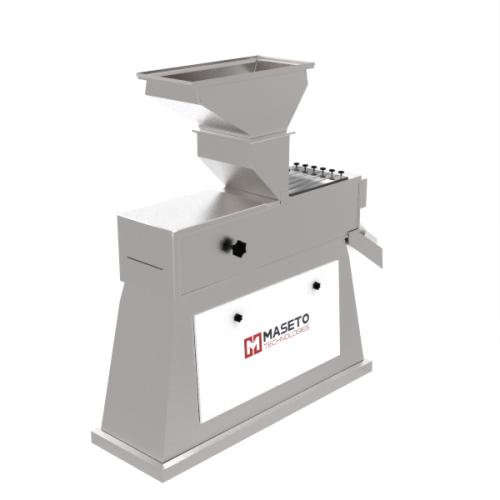
Peanut peeler for efficient skin removal
Ensure consistent peanut quality by efficiently removing skins with adjustable-spe...
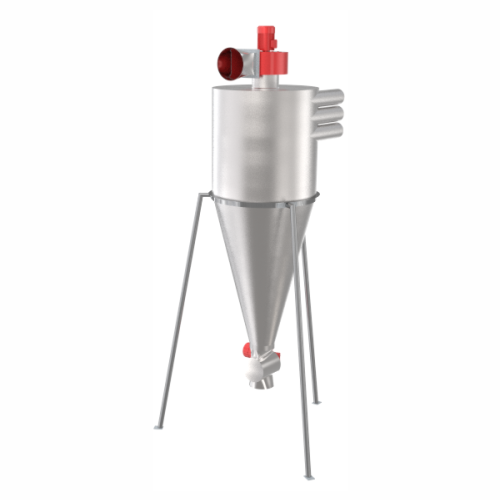
Aspiration system for nut processing
Streamline your nut processing with precise removal of skins, dust, and lightweight pa...
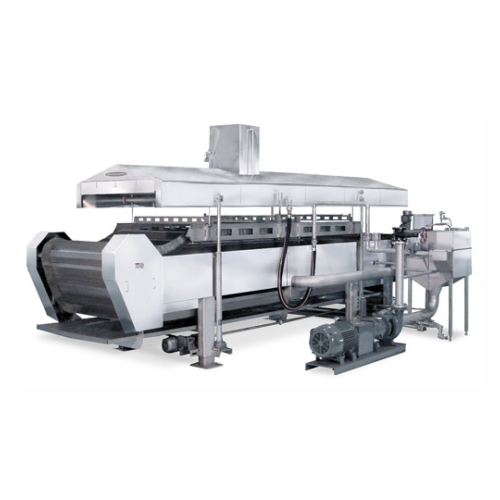
Nut roaster for consistent and high-capacity processing
Achieve uniform roasting and elevate your nut processing with pre...
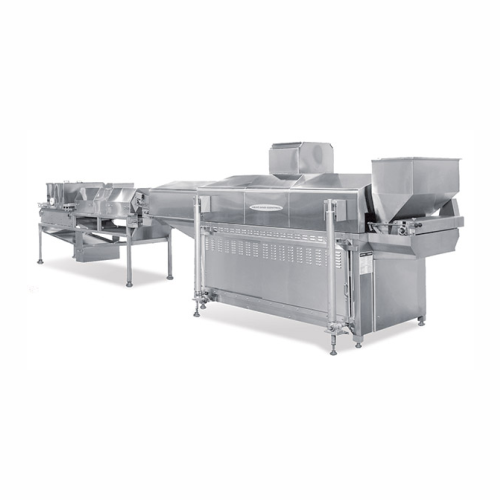
Nut roasting system
Achieve perfectly roasted and seasoned nuts with precision control over roasting, coating, cooling, and g...
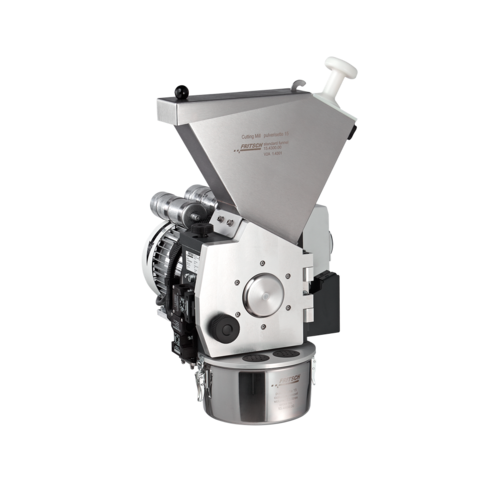
Cutting mill for dry sample comminution
Achieve precise comminution of dry materials, from plastics to dried plants, with e...
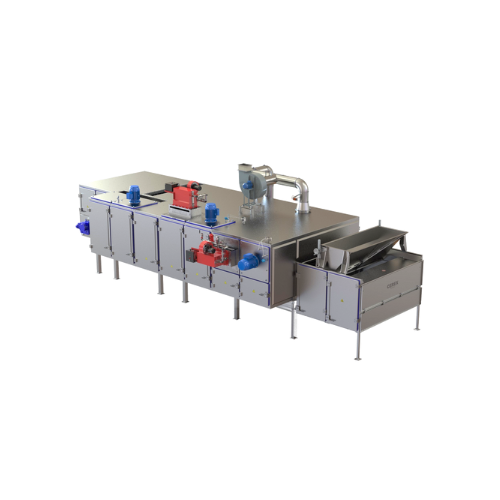
Nut and seed roaster for snack production
Ensure precise roasting and cooling of nuts and seeds while maintaining hygiene ...

Nut and seed pre-grinder
When dealing with high-fat roasted nuts and seeds, achieving optimal particle size distribution can ...
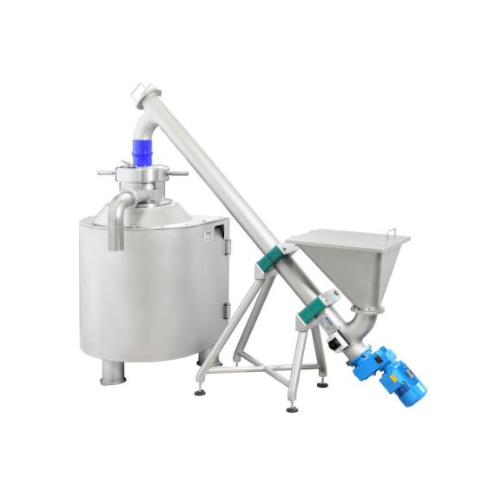
Pre-grinder for roasted nuts and seeds
Maximize efficiency in creating smooth nut and seed spreads with this pre-grinding s...
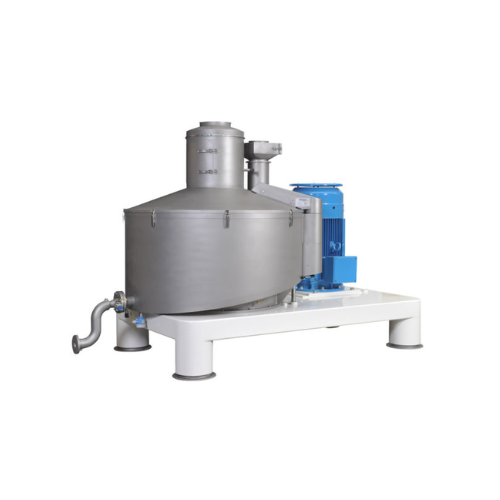
Cocoa nibs pre-grinder for high fat seeds and nuts
Enhance your processing line with high-speed pre-grinding designed to ...
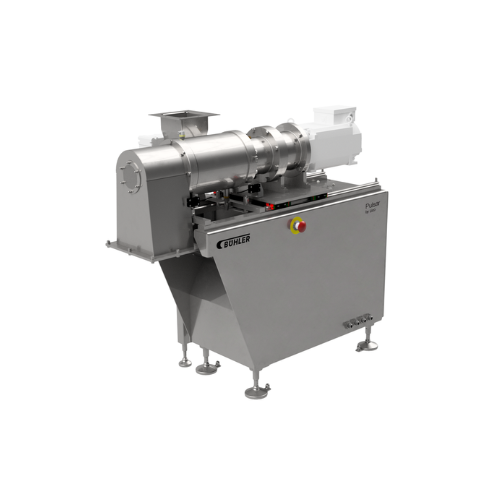
Universal mill for grinding nuts and seeds
Optimize your nut paste production with a high-speed, versatile milling solutio...
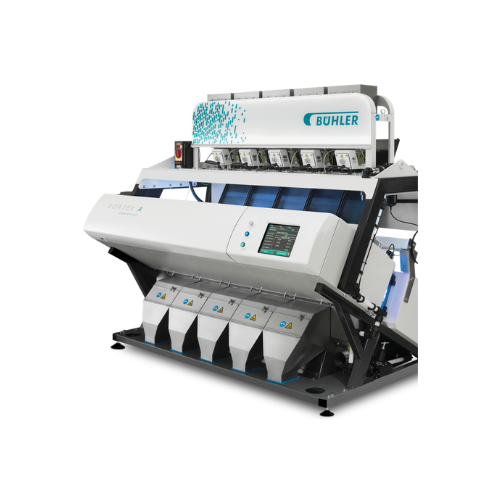
Optical sorter for coffee, grains, nuts, and plastic flakes
Ensure precise defect detection and foreign material removal...
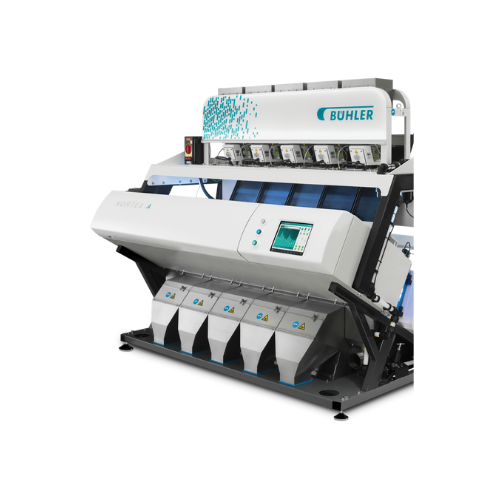
Optical sorter for grains, coffee, nuts, and plastics
Ensure consistent product quality and minimize waste with advanced ...
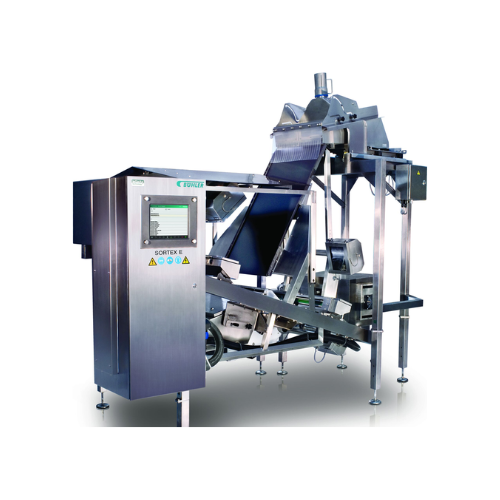
Optical sorter for nuts or dried fruits
Ensure maximum food safety and quality by efficiently sorting and removing shells, ...
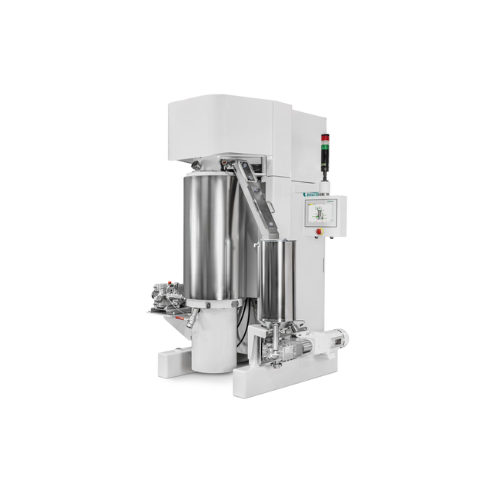
Ball mill for chocolate, cocoa, and nut products
Optimize your grinding processes and achieve perfect product consistency ...
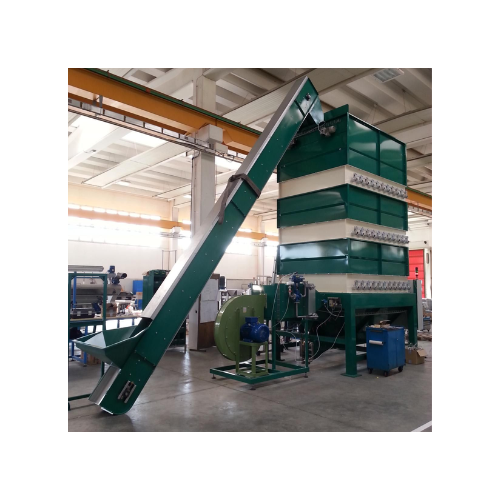
Vertical chestnuts dryer
Achieve optimal moisture removal for chestnuts with precise hot air cycling, perfect for converting ...
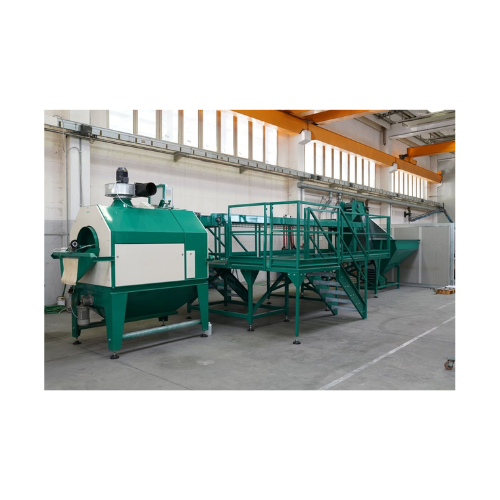
Chestnut processing line for fresh market
Efficiently transform raw chestnuts into polished, fresh market-ready products w...

Chestnut sterilisation system for parasite control
Ensure pest-free chestnuts with precision-controlled hot water sterili...
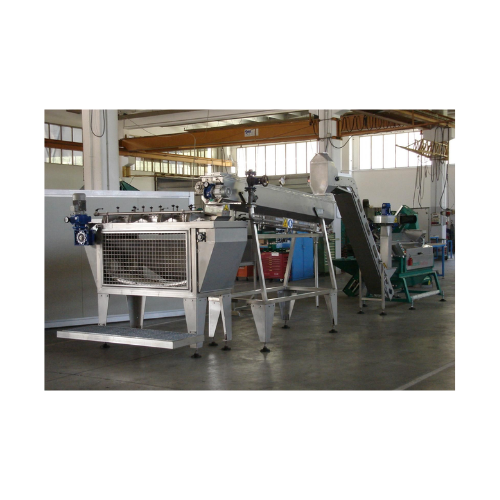
Chestnuts steam peeling system
Efficiently transform raw chestnuts into ready-to-freeze products with a continuous steam pee...
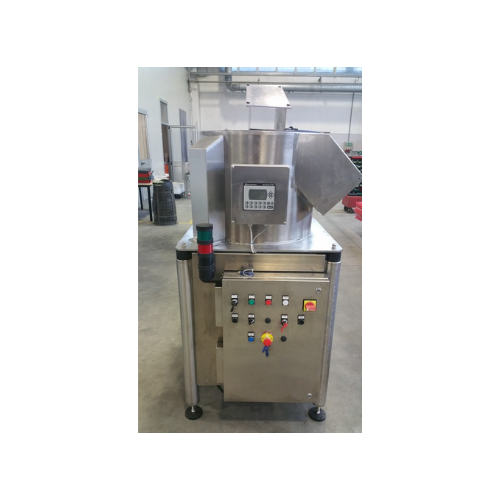
Centrifugal separator for reworking chocolate and chopped hazelnuts
Efficiently separate chocolate from chopped hazelnu...
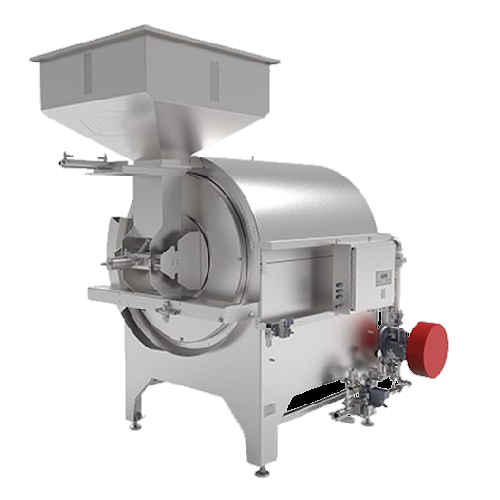
Batch roaster for nut processing
Achieve precise roasting and flavor development with batch roasters that offer customizable...

Continuous nut roaster for large-scale nut processing
Streamline your nut processing capabilities with a machine designed...
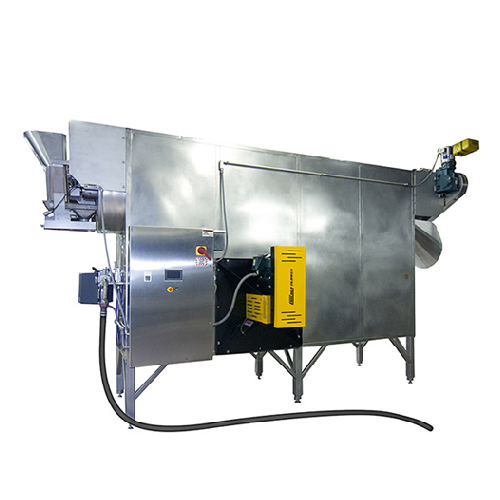
Rotary oven for japanese peanuts
Achieve uniform coating and optimal roasting for Japanese-style peanuts with precise temper...
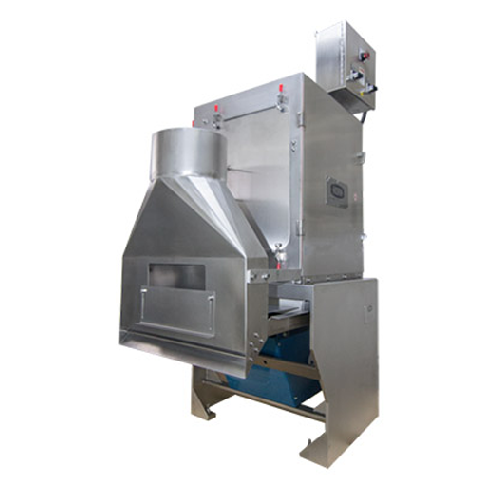
Split peanut blancher for snack food processing
Efficiently transform roasted or dried peanuts into perfectly blanched pro...
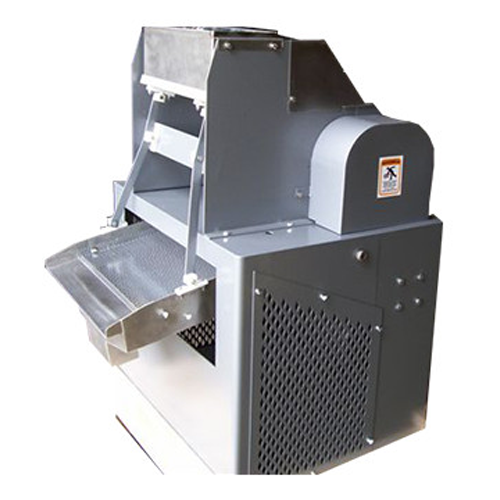
Granulator for nut processing
Efficiently transform various nut varieties into uniform, sharp-edged granules while minimizin...
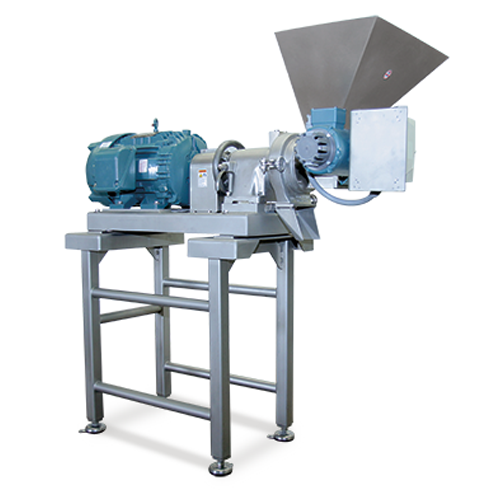
Nut butter mill for snack food processing
Efficiently transform various nuts into smooth, spreadable butters with precisio...
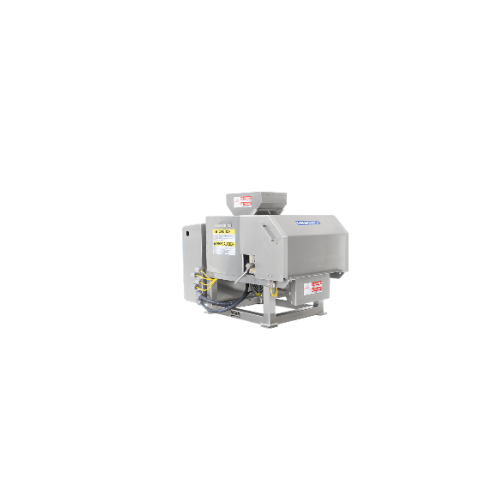
Granulator for nut meats and cookies
Optimize your processing line with precision granulation, slitting, and scarifying of ...
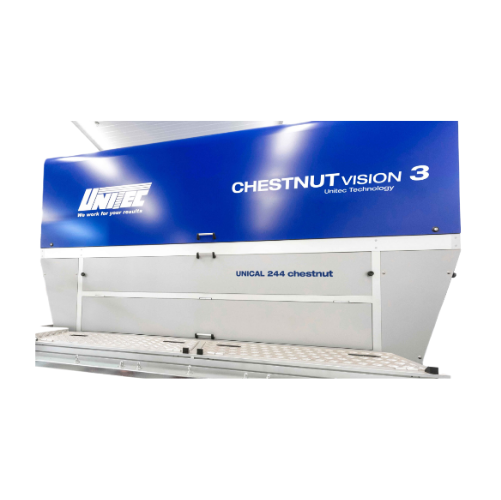
Chestnut sorting and grading system
Optimize chestnut processing with advanced sorting technology that ensures precise size...
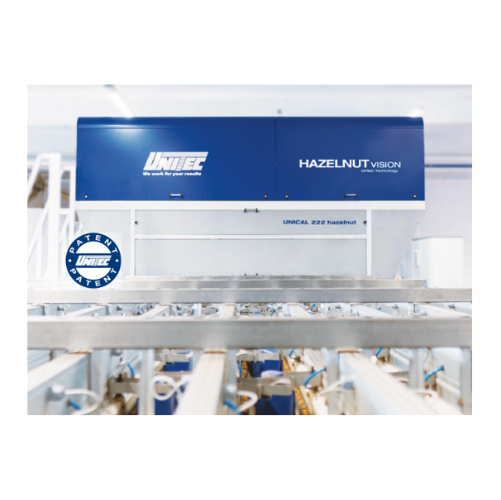
Hazelnut sorting and quality selection system
Optimize your hazelnut processing with a system designed to detect defects a...
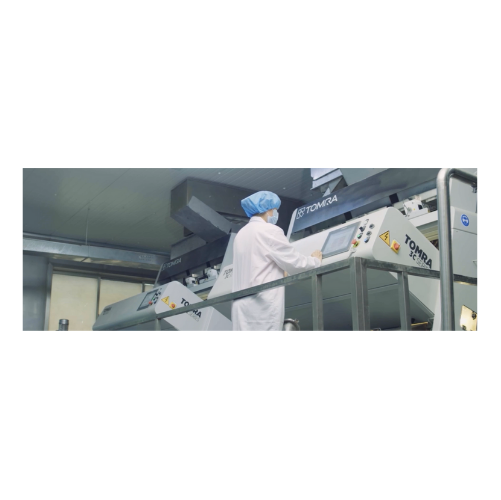
High-precision sorter for nuts, coffee, seeds, and grains
Achieve unrivaled accuracy in sorting nuts, seeds, and grains ...
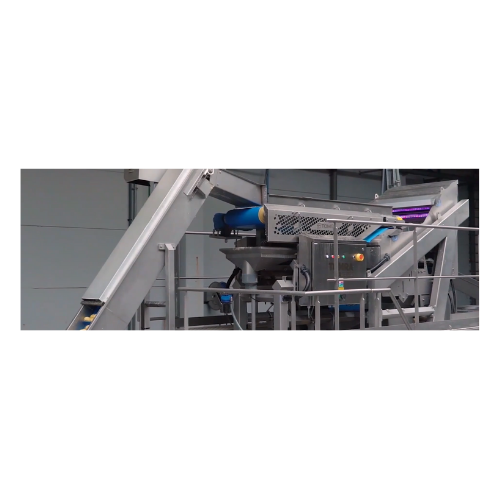
Optical sorter for nuts, dried fruit, and Iqf
Ensure flawless quality control by efficiently sorting, grading, and ejectin...
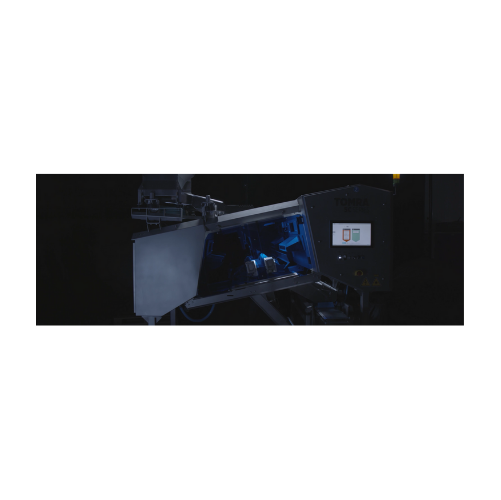
Optical sorter for nuts and dried fruit
Enhance sorting precision by effortlessly identifying and removing foreign material...
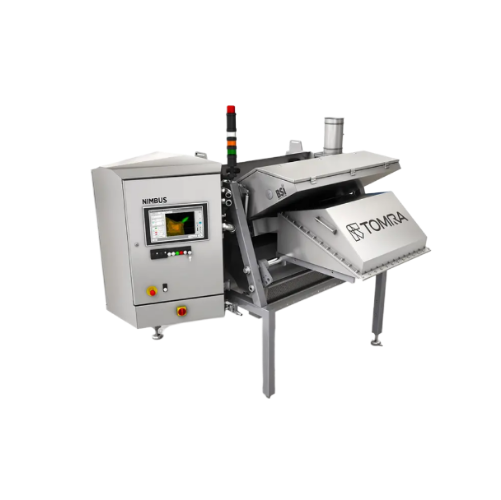
Food sorting system for nuts and dried fruit
Streamline sorting processes by removing visual irregularities, defects, and ...
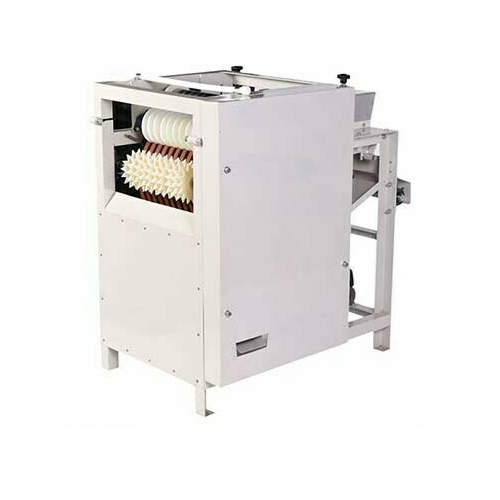
Wet almond peeling machine for nut processing
Enhance your nut processing efficiency by achieving up to 98% peeling rate w...
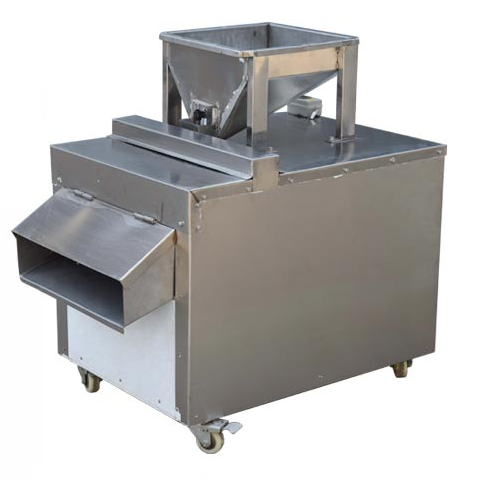
Industrial almond slicer for nut processing
Achieve precise nut slices with adjustable thickness, perfect for enhancing pa...
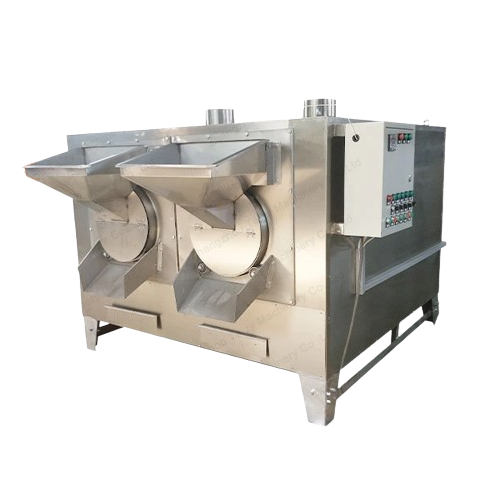
Peanut roaster for various nuts
Elevate your nut processing with efficient roasting solutions that enhance flavor, texture, ...
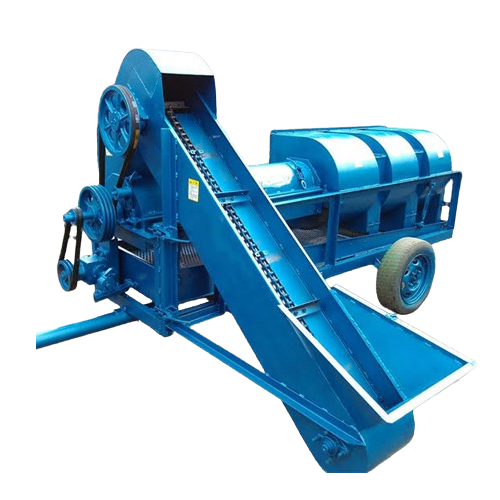
Pine nut threshing system
Efficiently separate pine nuts from cones without damage, streamlining your nut processing operati...
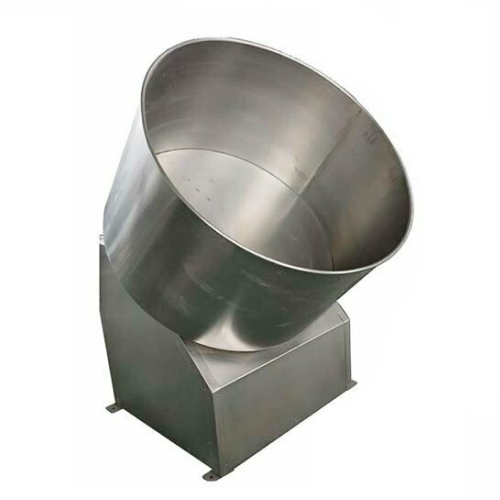
Nut coating machine for snack food processing
Enhance your snack and confectionery production with a nut coating machine t...
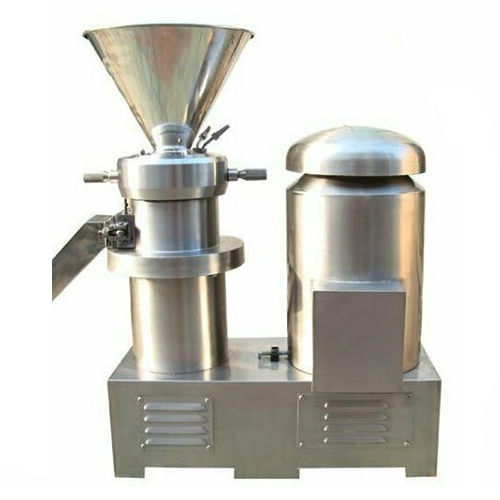
Stainless steel peanut butter grinder
Optimize your production line with high-speed emulsification and grinding, achieving ...
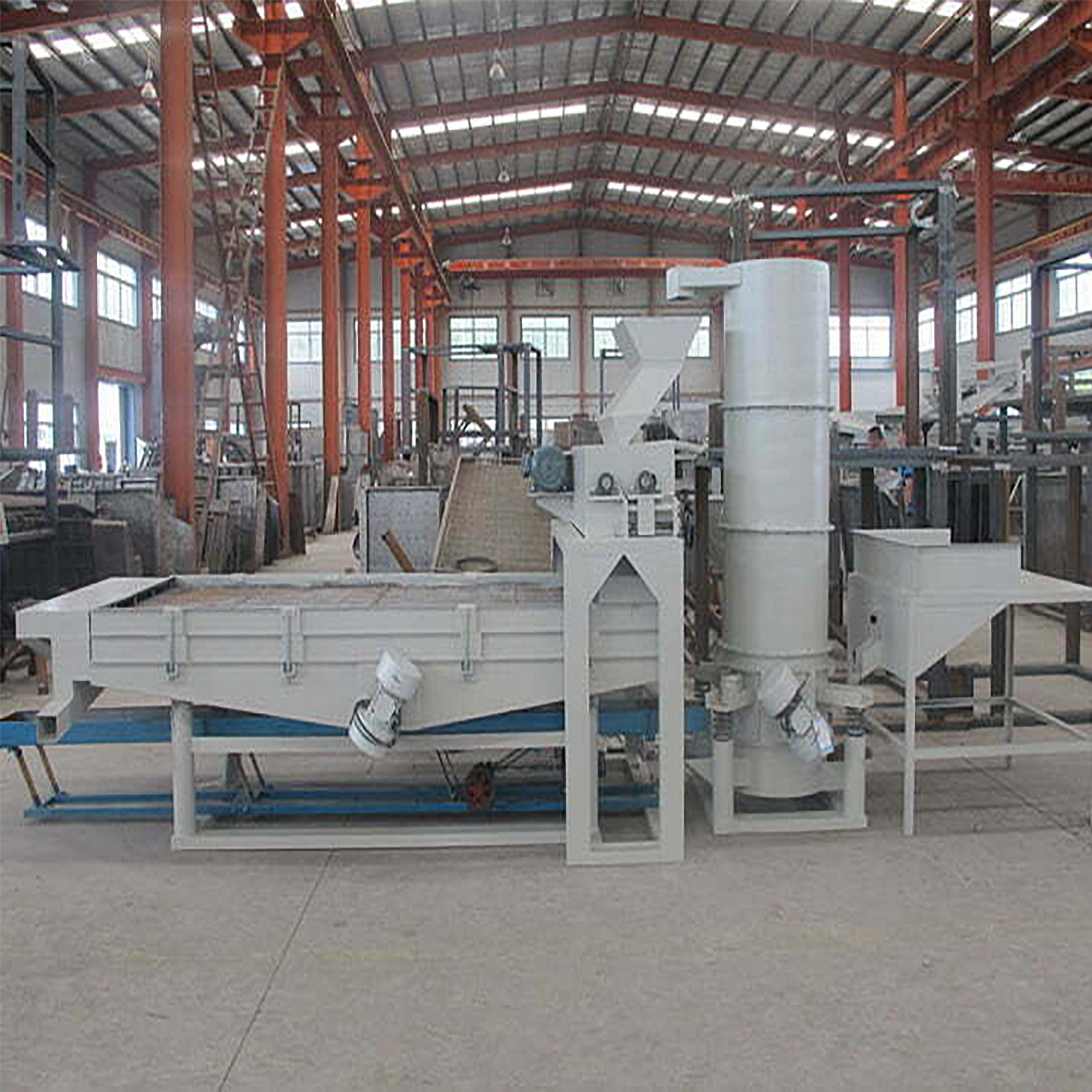
Lebanese pine nut shelling and separating system
Ensure precision in your nut processing line with a system designed to ef...
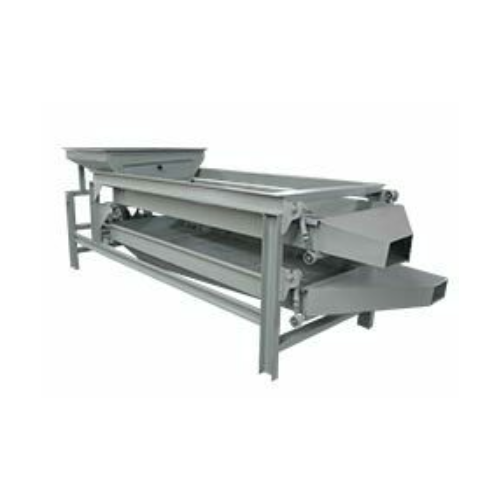
Small scale cashew nut processing plant
Optimize your nut processing with our comprehensive cashew line, designed to stream...
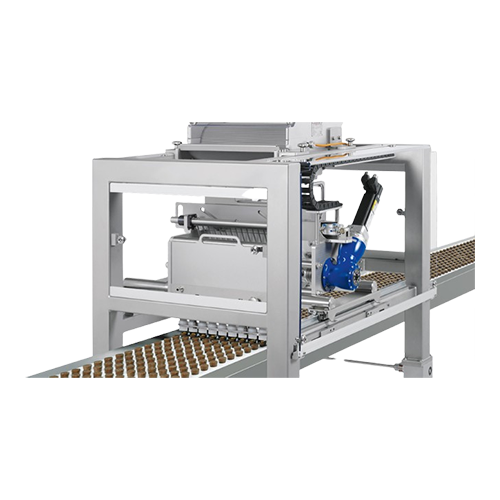
Lay-on systems for precise sprinkling and nut depositing
Optimize your confectionery production with precision sprinkling...
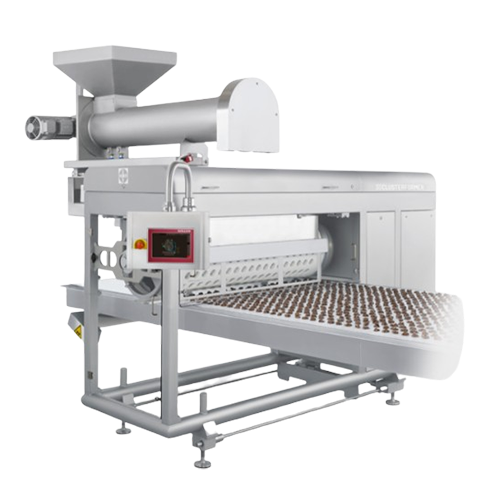
Nut clusters moulding solution
Streamline your production line with efficient nut cluster moulding, ensuring precise shape a...
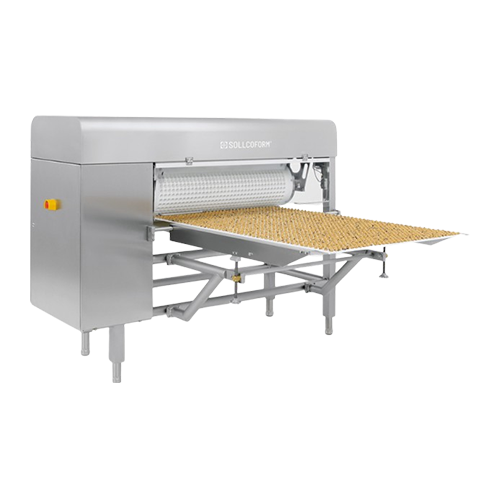
Forming system for cereal bars and nut mixes
Effortlessly transform diverse ingredients like cereals and nuts into precise...

Nuts paste refining mill
Transform nuts and dried fruits into fine pastes with precise particle control, ideal for creating p...

Dried nuts roasting system
Efficiently transform raw dried nuts into high-quality pastes and creams, optimizing flavor and t...
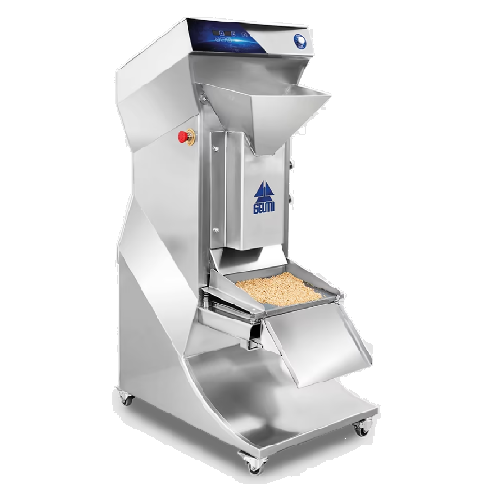
Industrial nut crusher for dried fruit processing
Optimize your nut and dried fruit processing by reducing them to precis...
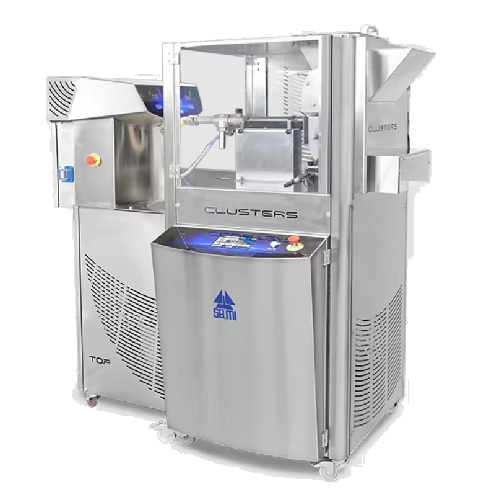
Chocolate and nut cluster production line
Optimize your confectionery production with precise control over chocolate and n...
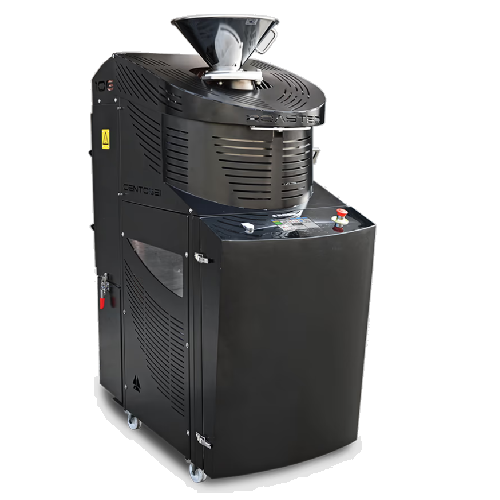
Coffee, dried nuts, and cocoa beans roaster
Achieve precise and customizable roasting for a variety of beans and nuts with...
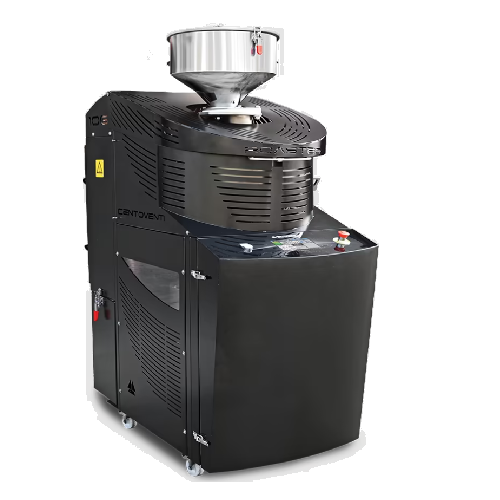
Industrial roaster for coffee, nuts, and cocoa beans
Optimize your roasting processes with a versatile solution designed ...
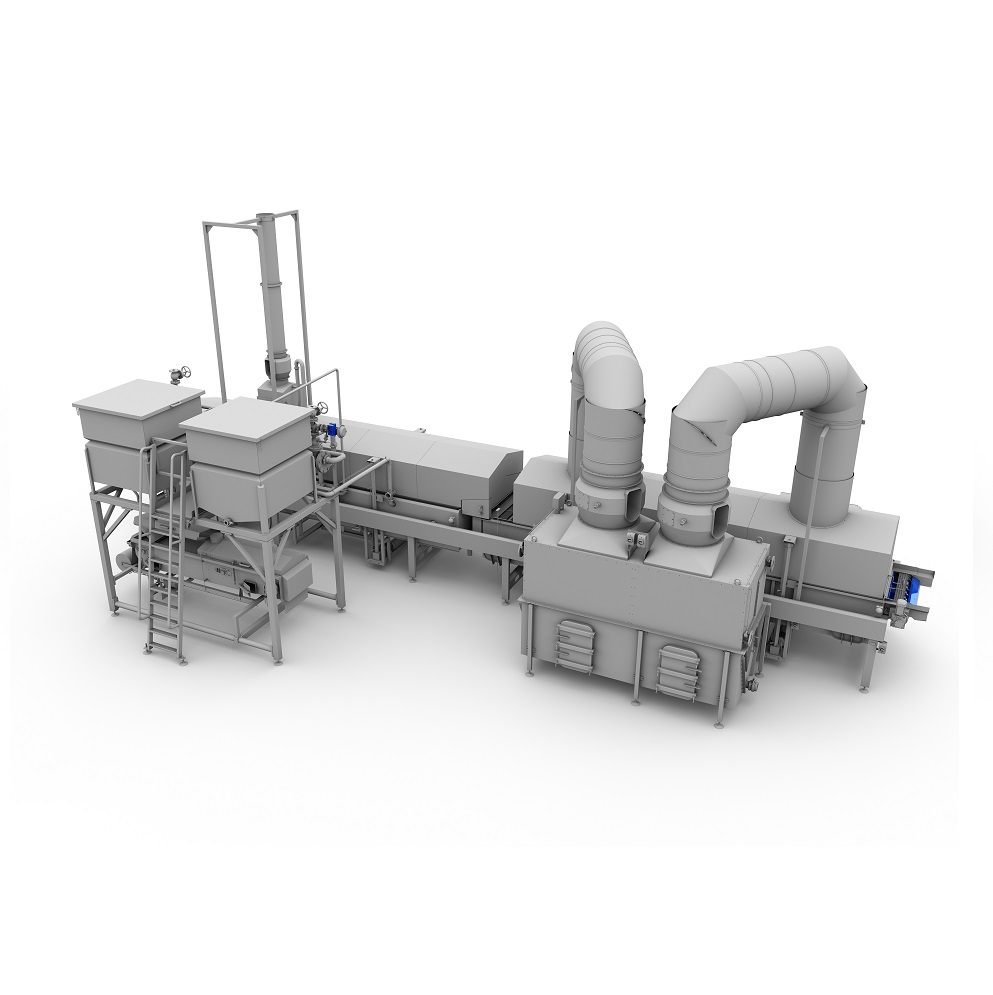
Frying line for nuts
Frying is one of the most common preparation methods for nut snacks. Oils bring out distinctive flavors,...
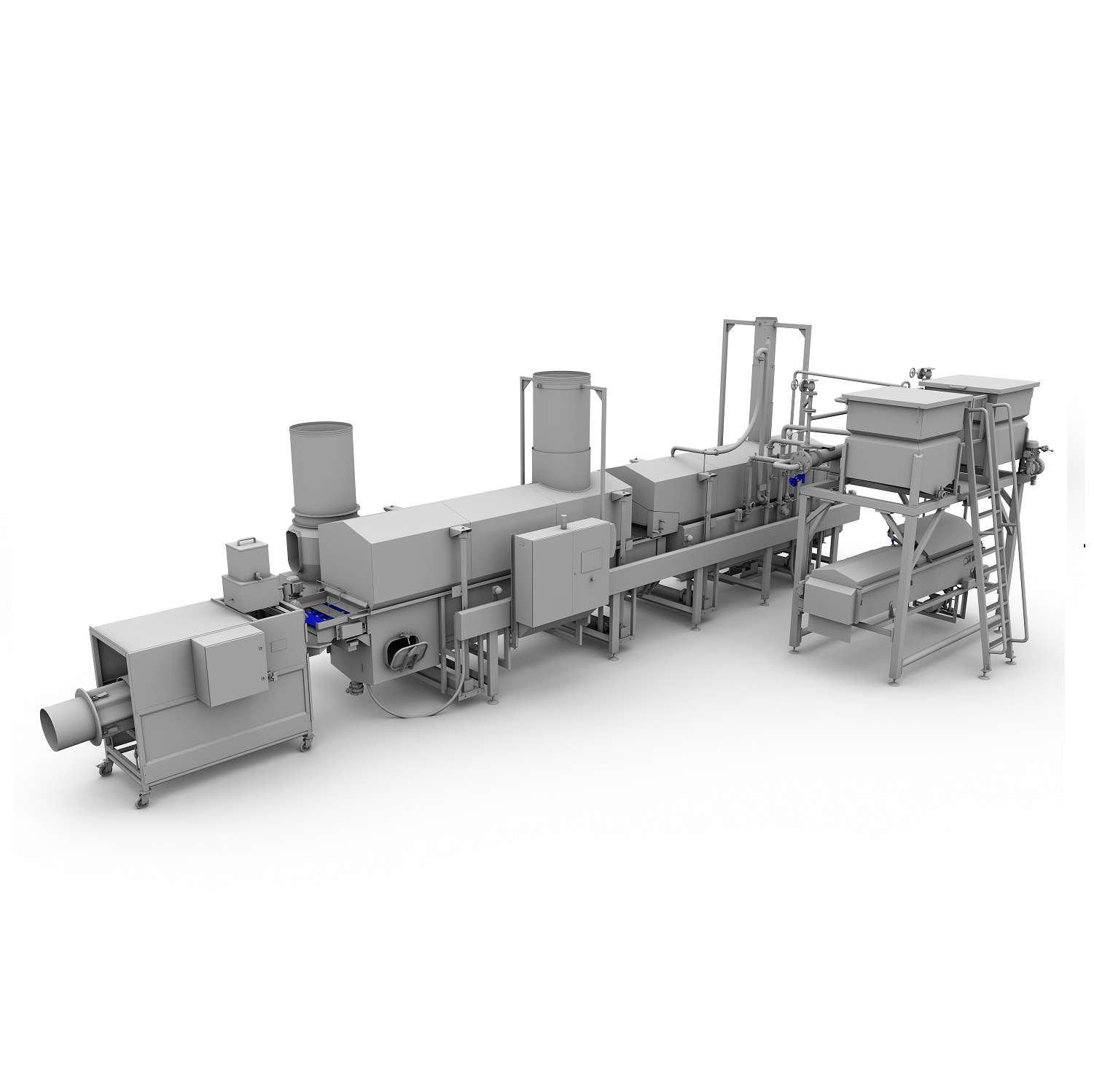
Peanut frying line
Fried peanuts are a very popular snack around the world. If you are looking to start a nut processing plan...
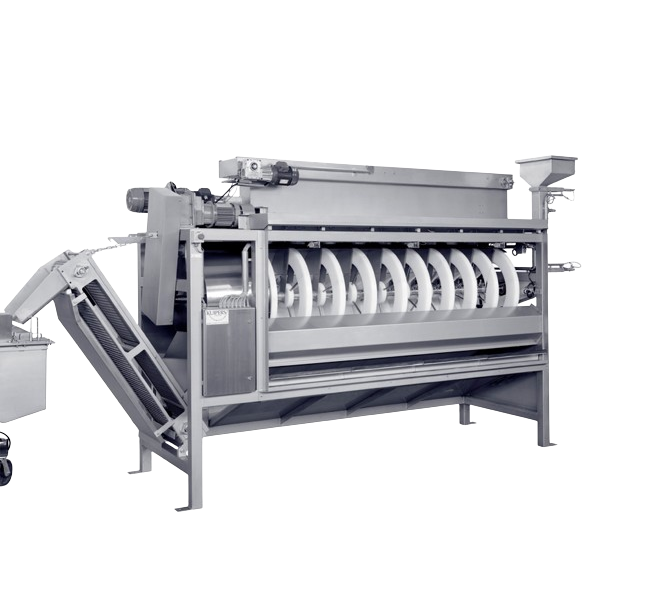
Continuous, automatic coating machine for peanuts
If you are in the peanut processing industry, bringing out delicious va...
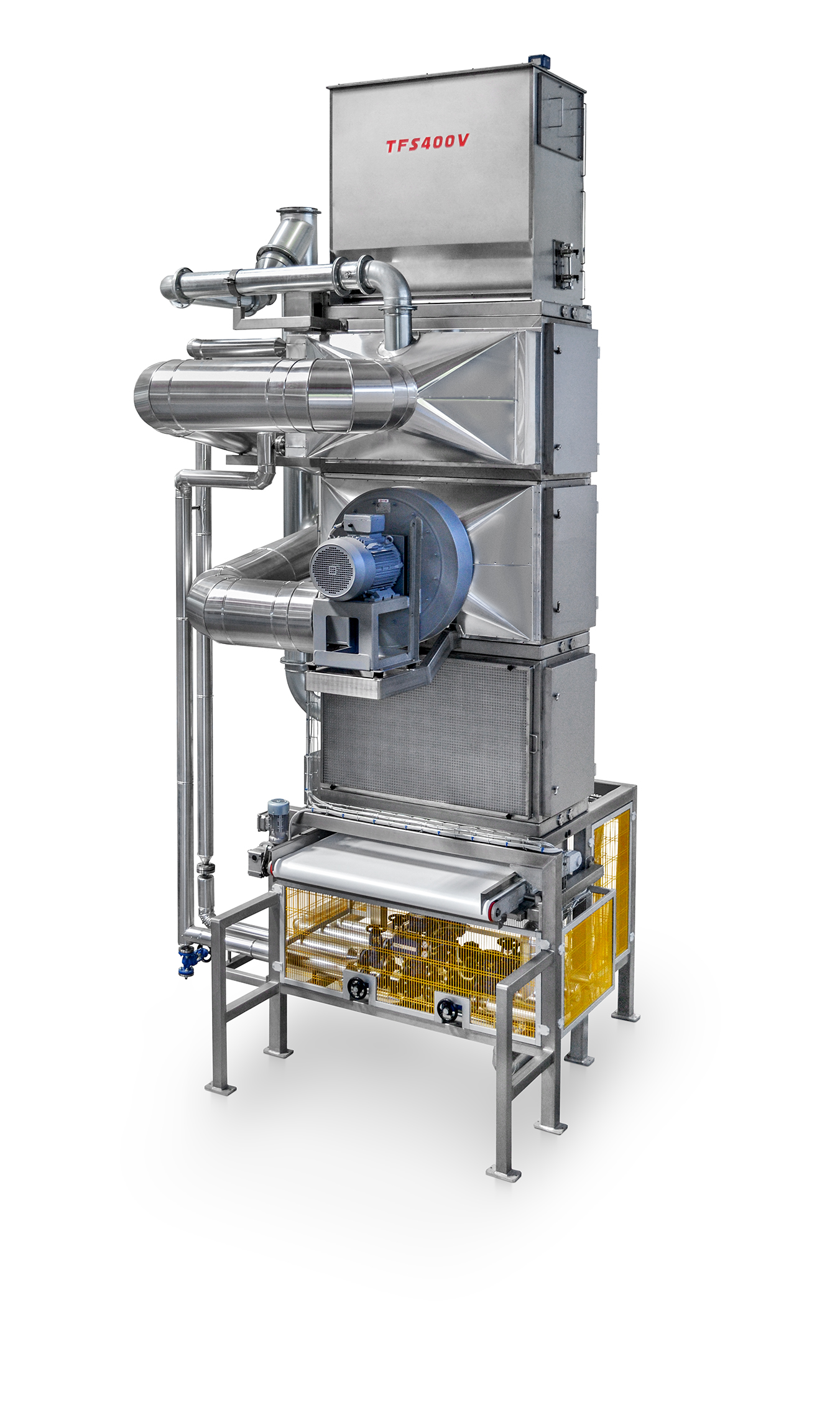
Industrial Nut Roaster
Moisture considerably depletes the shelf life of nut products. At the same time, however, manufacturer...
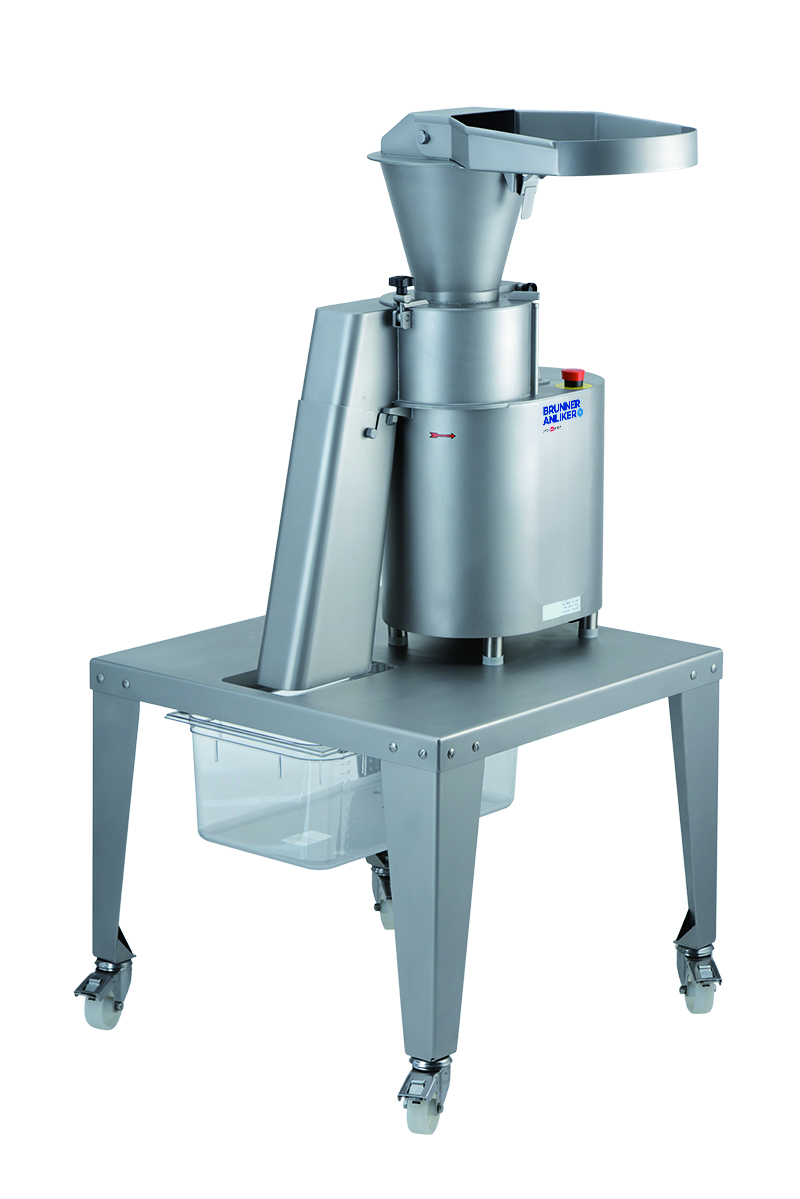
Nut and cheese grater
Smearing, clumping and crumbling are common problems when cheese and other soft textured foodstuffs are...
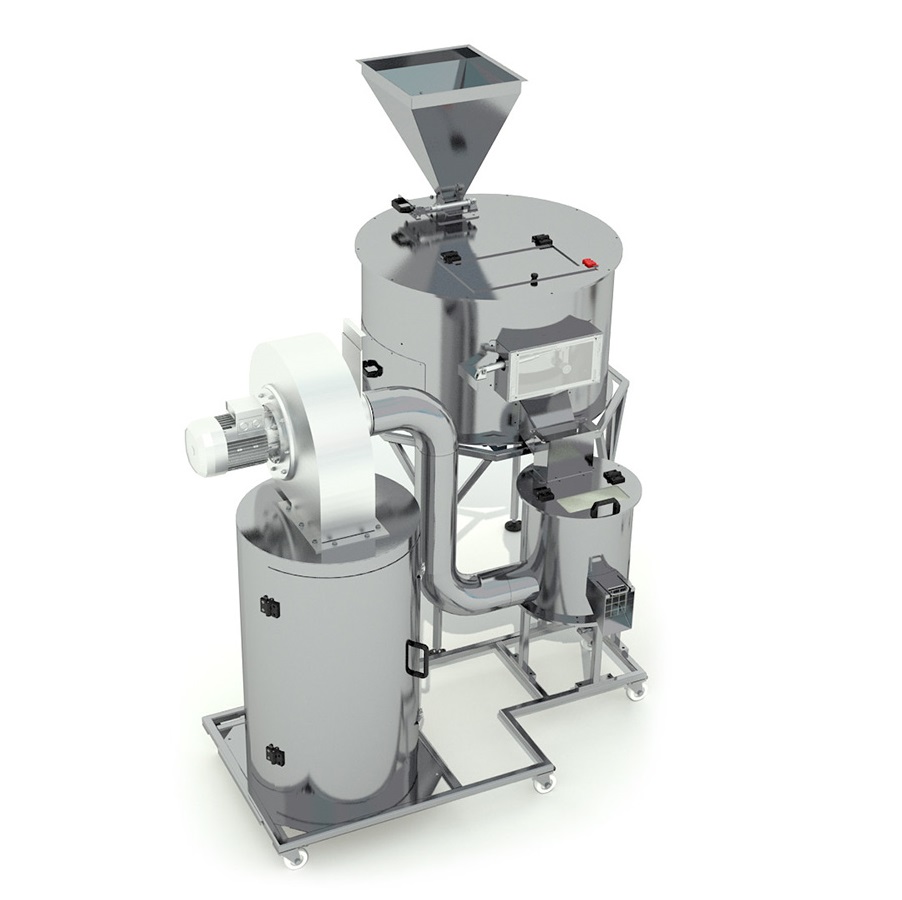
Entry-level infrared nut drying machine
For small scale production of cocoa beans and nuts, the use of traditional toasters...
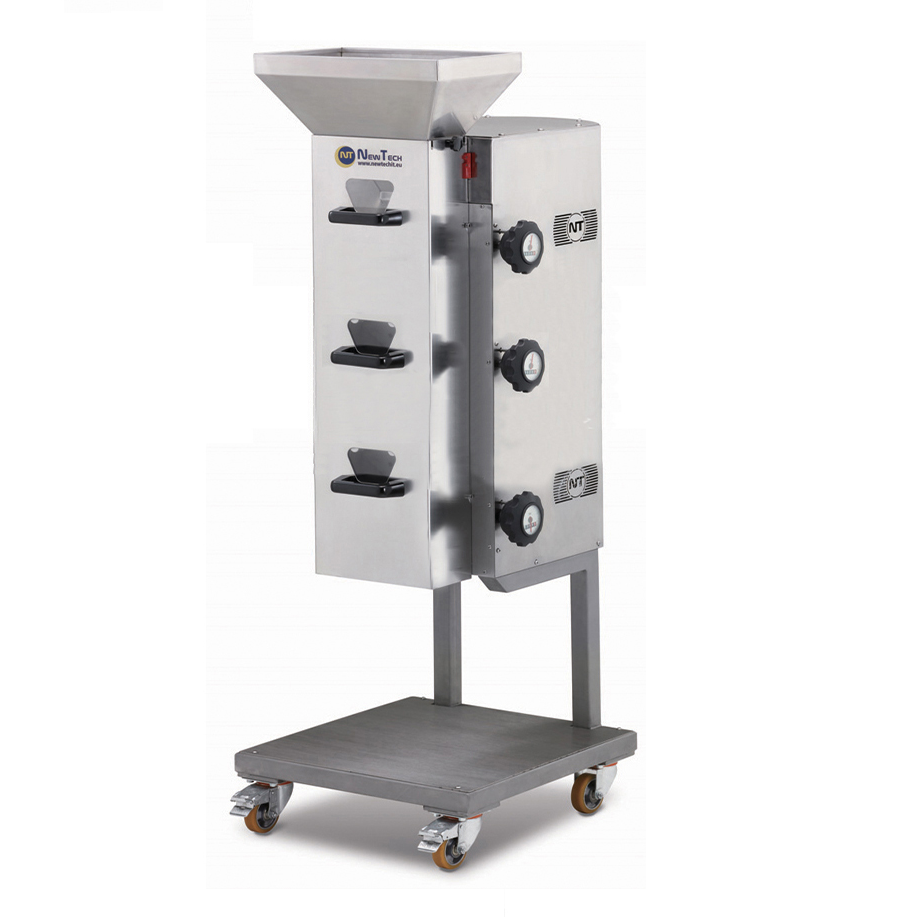
Small scale nut chopping machine
Many confectionery and bakery products use nuts as a key ingredient or decoration. The abil...
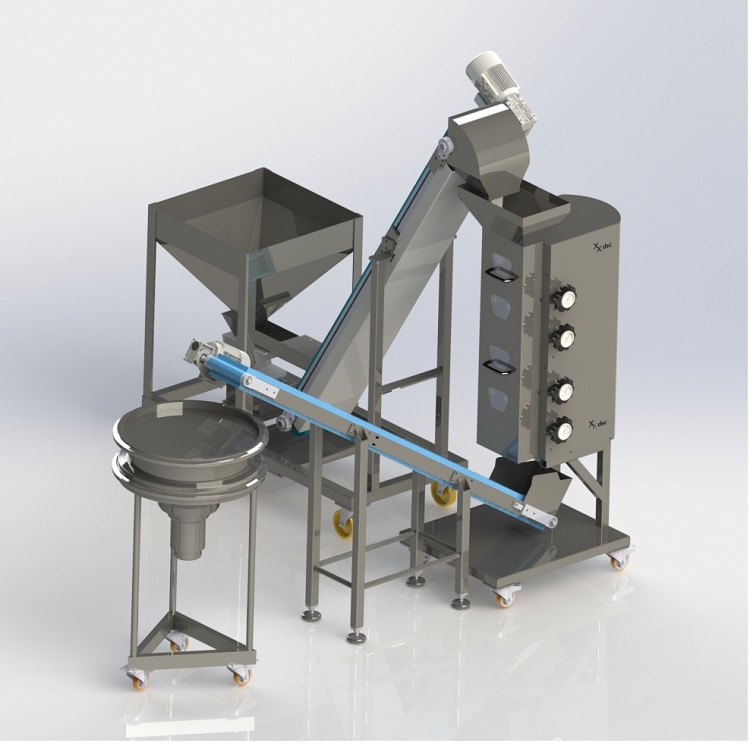
Small scale linear sieve for nuts
Removing dust and grading grains is an important part of producing a high quality chopped...
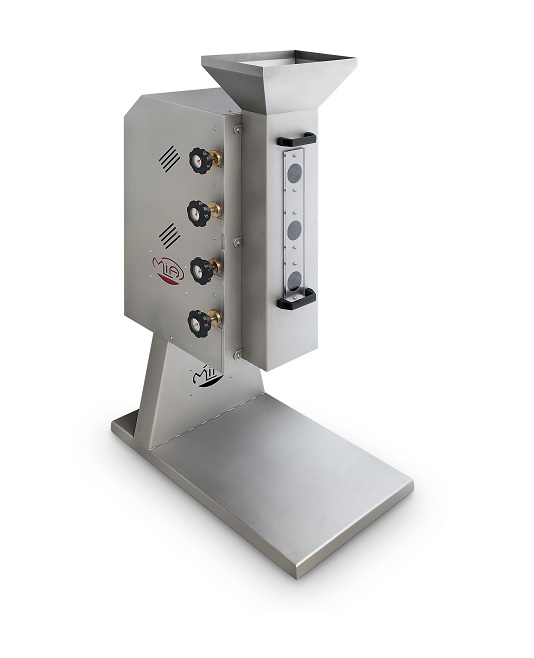
Small scale nut grinder
Many confectionery and bakery processes rely on the uniform grinding of raw ingredients such as nuts,...
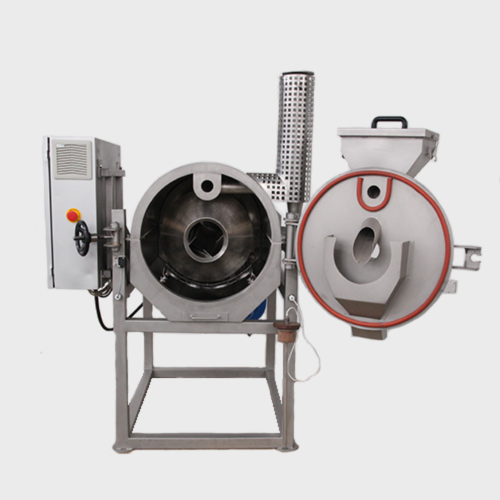
Compact cylindrical roaster for beans, nibs and nuts
Roasting times and temperature can vary depending on the type of pro...
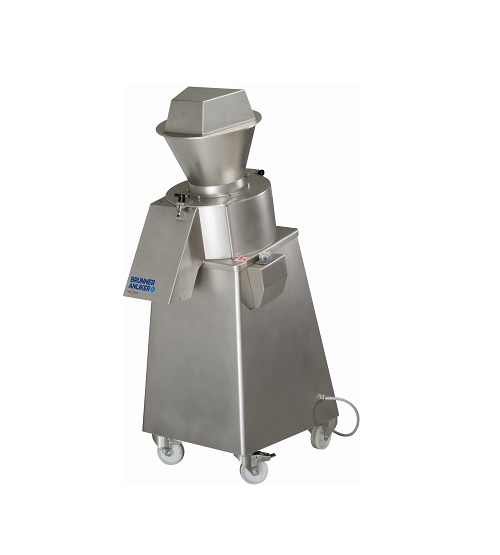
Industrial nut grater
Pressure from the grinding process can cause damage to food products as well as induce unwanted heating...
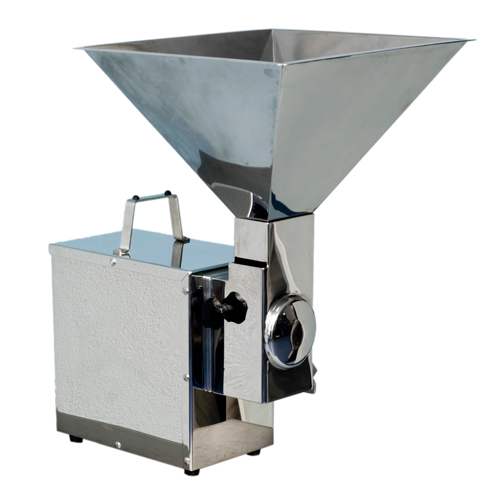
Nut dicer
Dicing nuts can generate a large volume of wasteful and messy powdered nut residue.
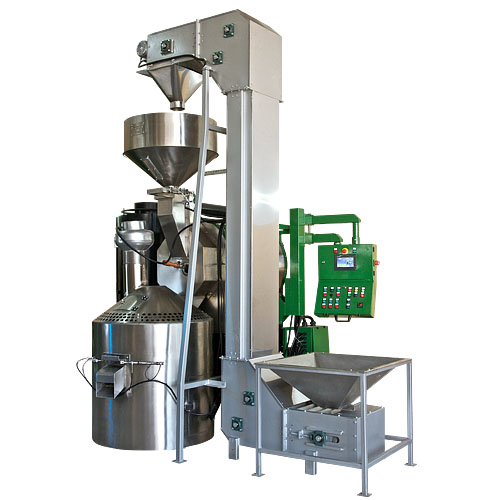
Nut roaster
Nut roaster that guarantees a high-quality roasting of nuts and seeds with a batching capacity of 40 and 120 kg, d...
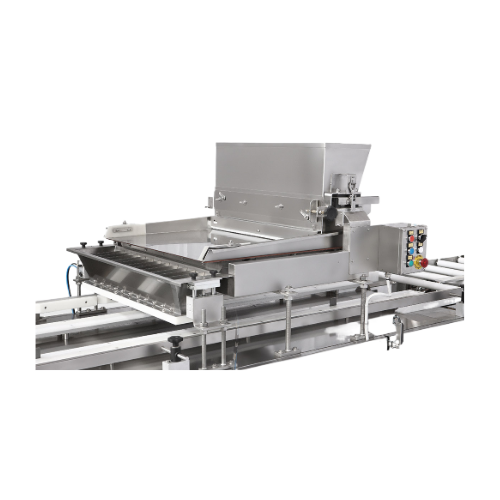
Topping depositor for pizzas and baked goods
Enhance your production line’s efficiency by uniformly adding both dry ...
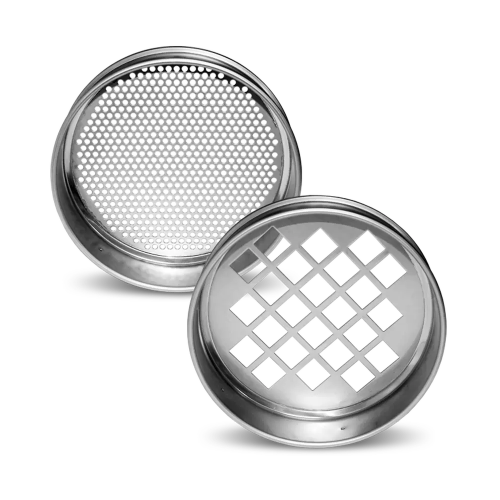
Perforated plate sieves for particle size determination
Optimize your particle size separation with high-stability stainl...
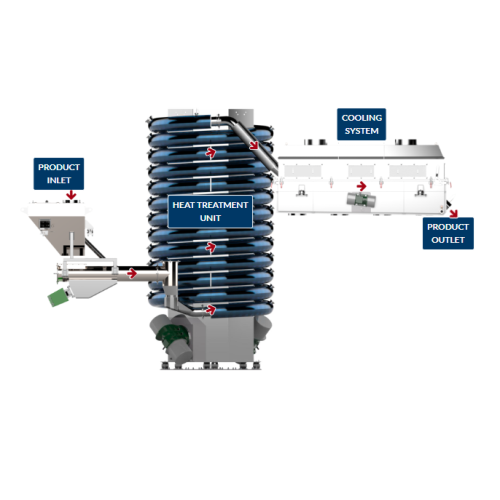
Industrial continuous heat treatment for dry ingredients
Optimize your production line with a continuous system that ensu...
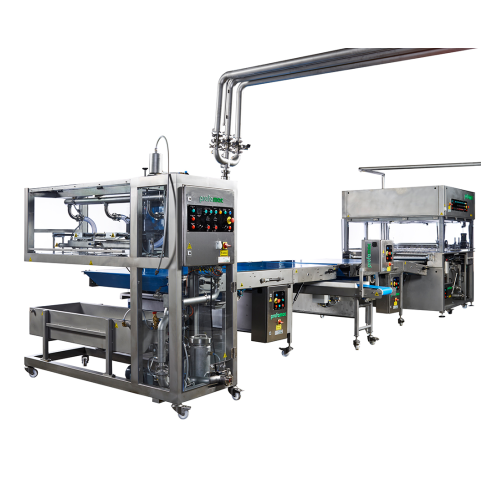
Chocolate decoration system for pralines and biscuits
Achieve intricate chocolate patterns and uniform coatings on confec...
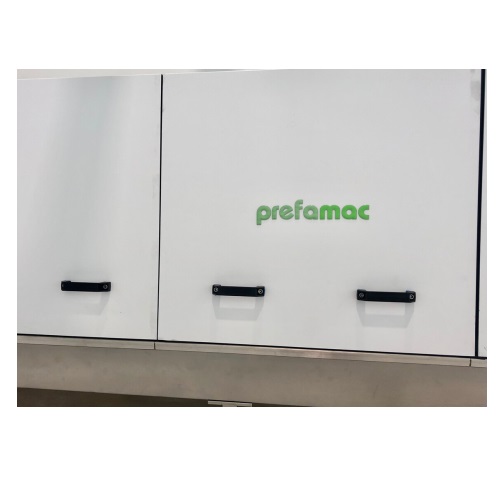
Modular system for chocolate drops production
Enhance your chocolate production with a versatile machine that forms and co...
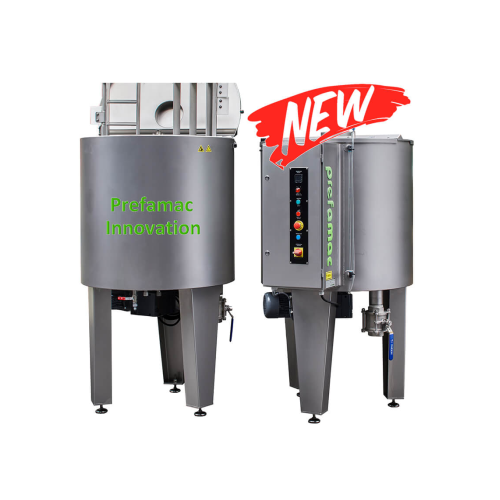
Melting and mixing kettle for chocolate production
Optimize your confectionery production with this versatile melting and...
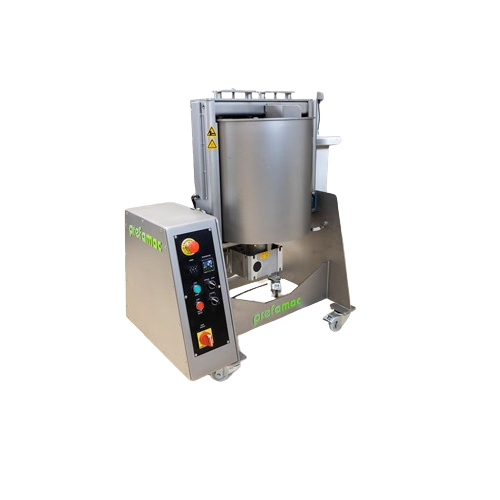
Precision chocolate production from cocoa nibs
Achieve ultra-fine chocolate textures by utilizing stone conching to bring ...
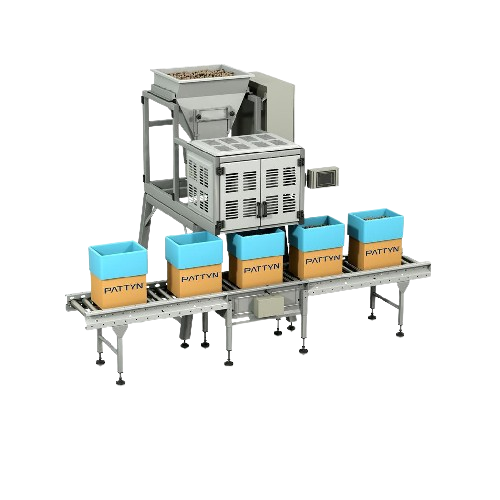
Linear vibratory weigh filler for fragile food products
Achieve precise and gentle filling of fragile food products with ...
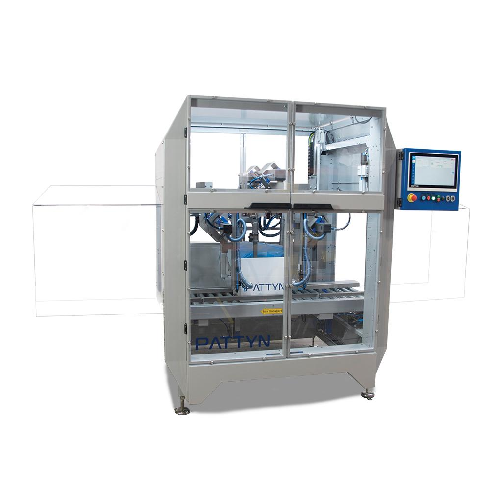
Automatic bag folding solution for bulk packaging
Enhance your production line efficiency and product protection by integ...
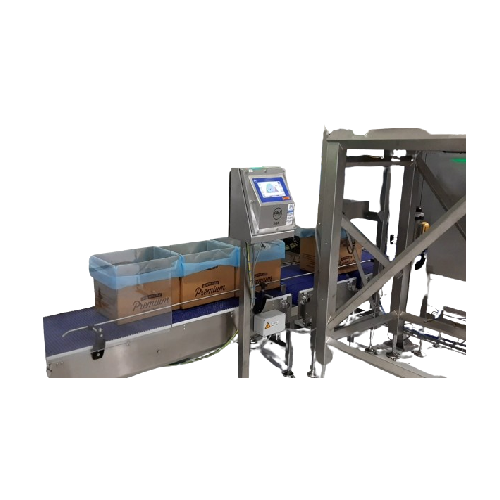
Linear weigh filler for accurate box packaging
Ensure precise weight-based filling for a variety of solid products, from d...
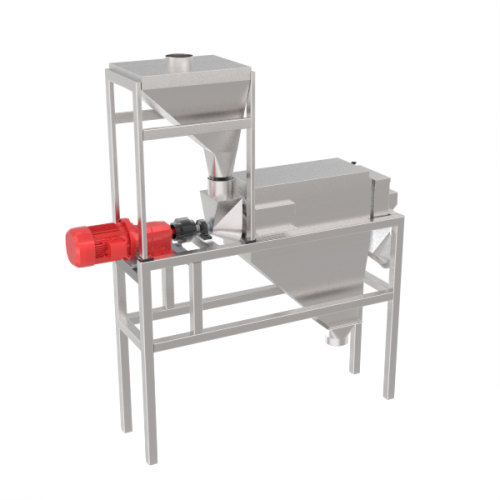
Almond hulling system for soft and semi-hard shells
Efficiently hull almonds with soft or semi-hard shells to streamline ...
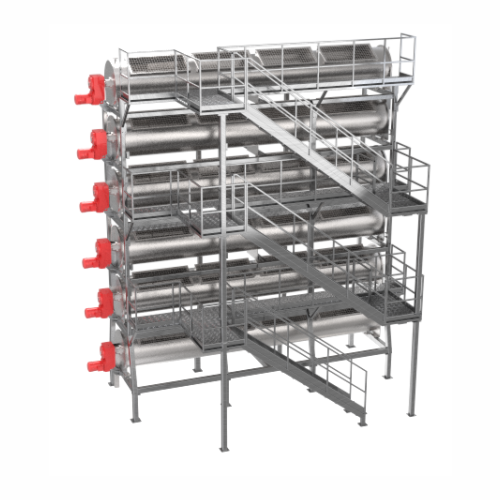
Sesame seed roaster
Achieve consistently roasted sesame seeds and nuts with optimal moisture control, designed to enhance fla...
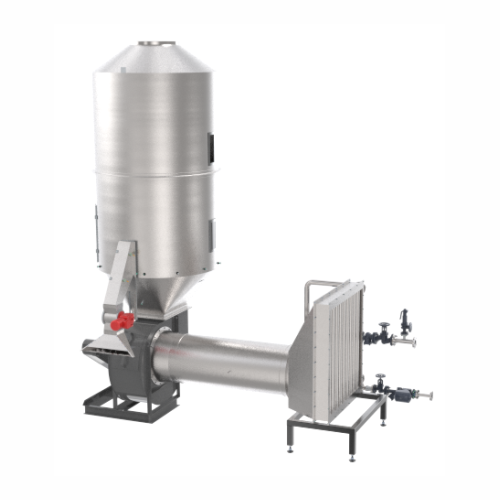
Sesame seed dryer
Optimize your sesame processing with efficient moisture removal, ensuring desired quality and consistency f...
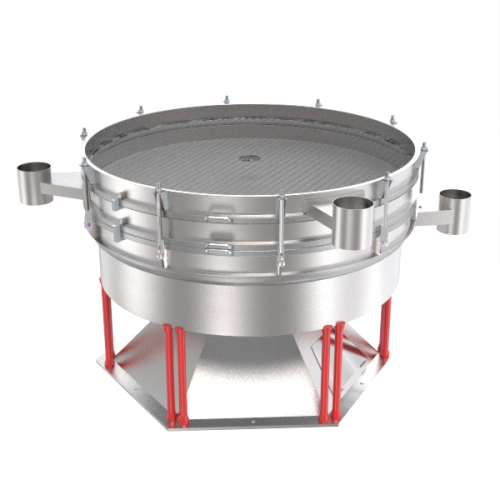
Circular sifter for fatty products and flours
Achieve precise separation and grading of nuts and flours, optimizing your p...
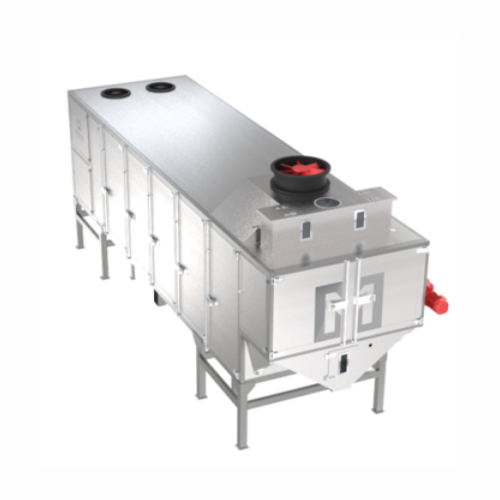
Cooling system for heat-treated products
Efficiently reduce temperatures of high-heat products to protect quality and textu...
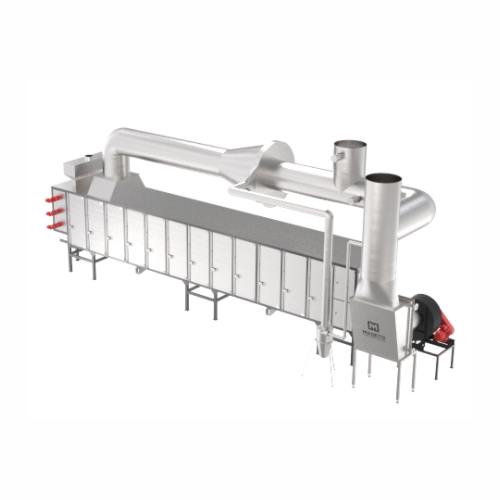
Horizontal tray dryer for moisture removal
Ensure consistent product quality in nut and olive processing by efficiently re...
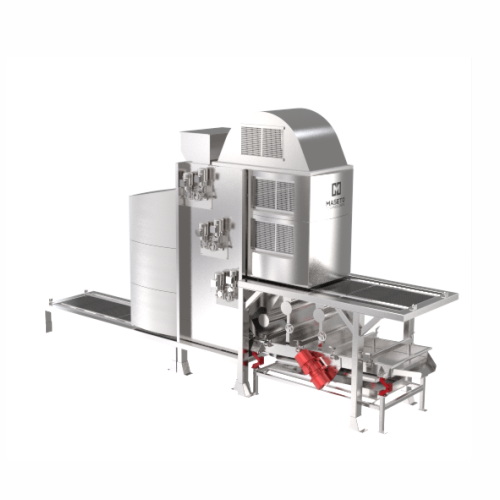
Industrial pistachio peeler
Efficiently remove the interior hull from pistachios with mechanical friction, ensuring high-qua...

Almond and apricot kernel blanching solution
Efficiently remove hulls from blanched almonds and apricot kernels to streaml...
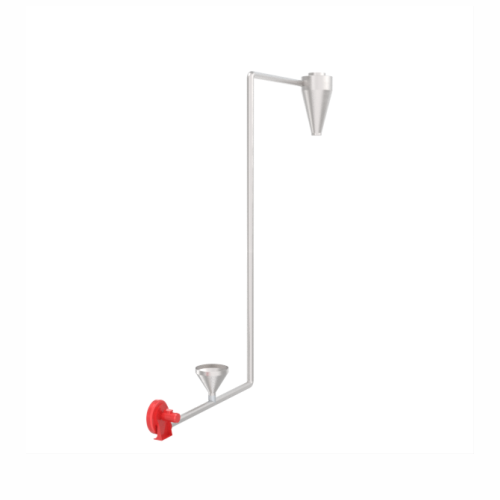
Pneumatic transport system for long-distance product conveyance
Efficiently convey solid and granular products across lo...
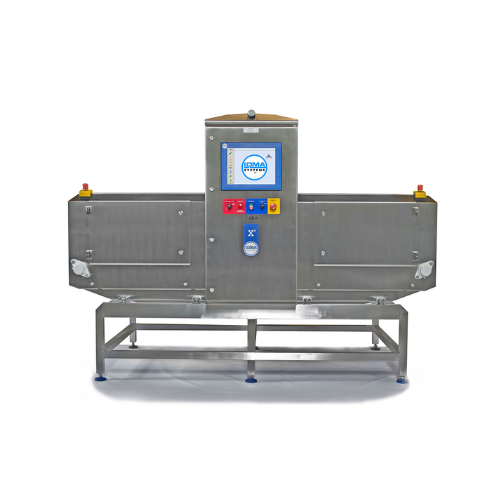
X-ray inspection system for large bulk products
Ensure consumer safety and product quality by efficiently detecting contam...
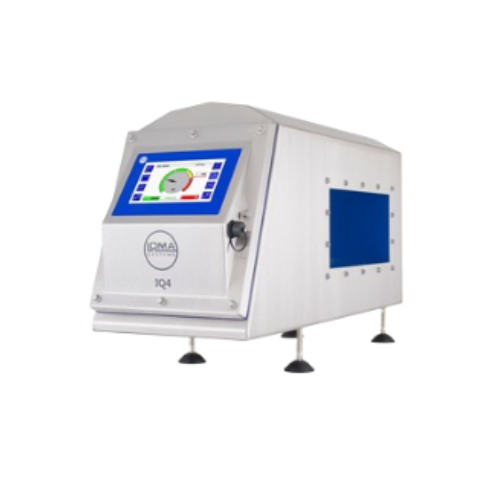
Industrial metal detector for food production lines
Ensure product safety and compliance by seamlessly detecting metal co...

Jar sealing system for plastic and glass containers
Achieve precise and efficient sealing of plastic and glass jars with ...
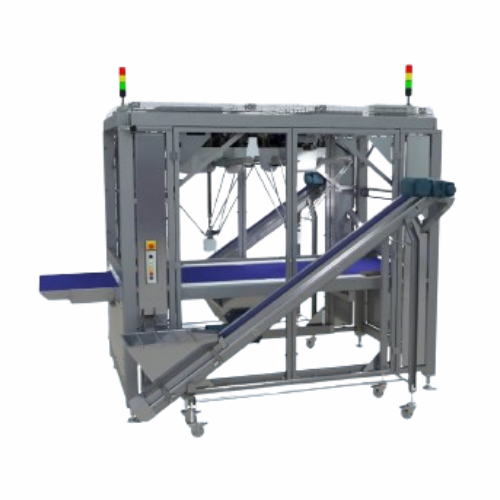
Pick and place robotic system for confectionery decoration
For food producers seeking precision in snack decoration, thi...
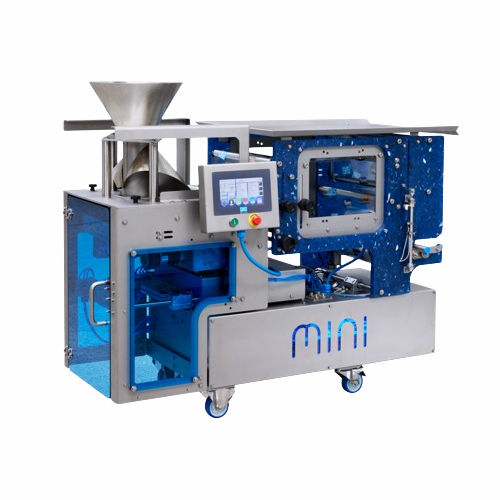
Vertical form, fill and seal packaging system for small bags
Maximize efficiency with small bag portioning for food and ...
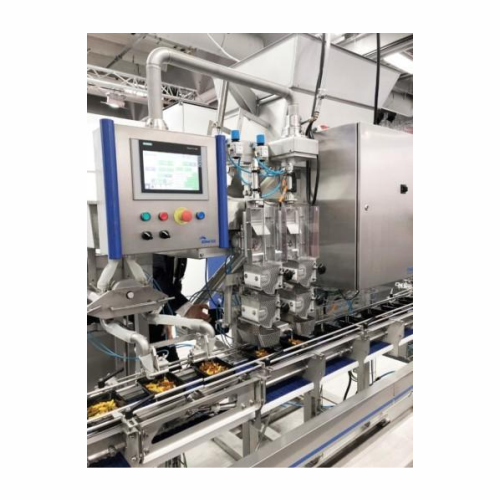
Food dosing systems for industrial applications
Optimize your food production efficiency by minimizing waste with precisio...
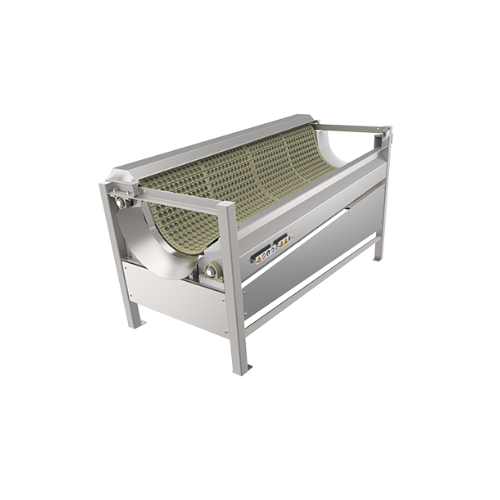
Small piece remover for food processors
When handling diverse food products, ensuring consistent product sizing is vital. T...
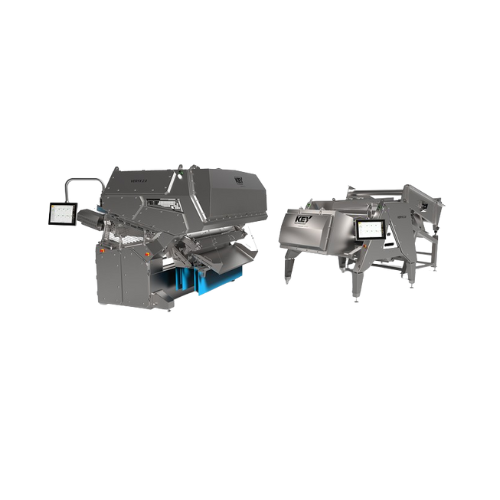
Optical sorting platform for food processing
For manufacturers aiming to enhance quality control, this platform offers pre...
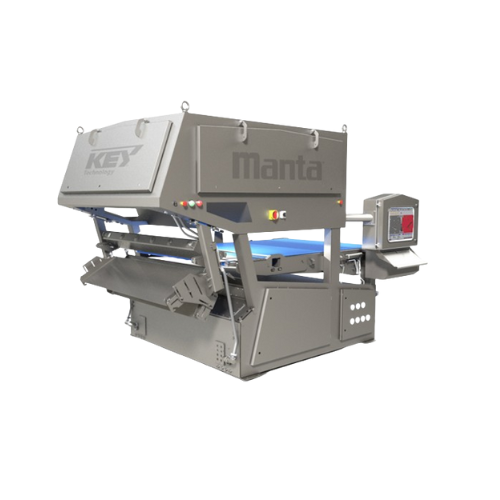
High-capacity optical sorter for food processing
Optimize your production line with precise sorting and separation, enhanc...
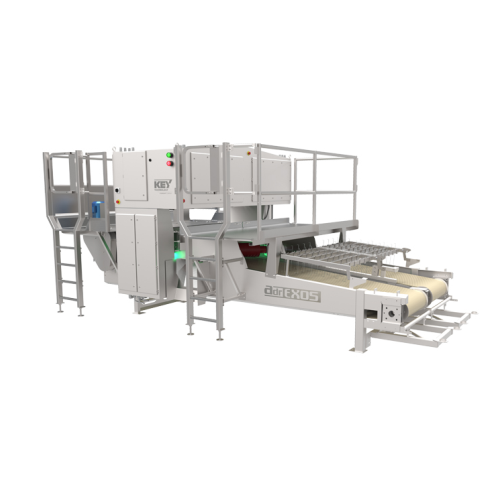
Inspection systems for poultry and seafood processing
Enhance the quality control of your food production with cutting-ed...
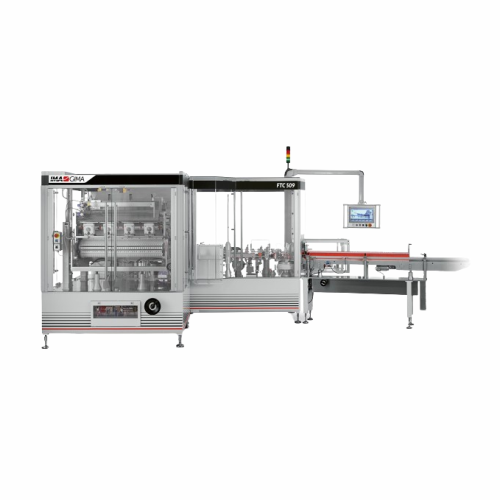
Vertical dosing and filling solution for confectionery packaging
Optimize your confectionery and nutraceutical packaging...
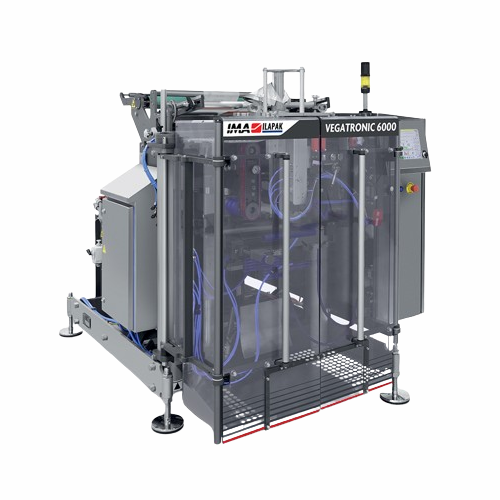
Continuous vertical form fill seal packaging solution
Experience unrivaled accessibility and efficiency in packaging fres...
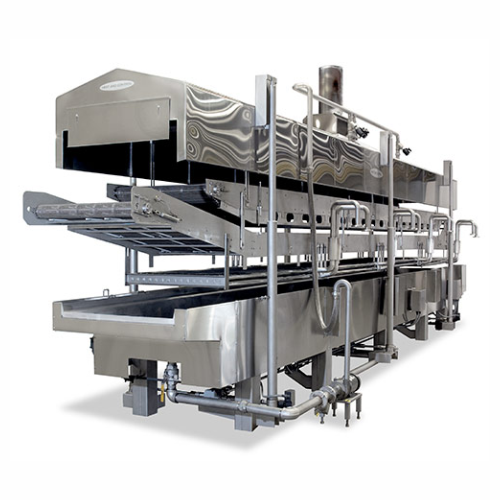
Snack food fryer with consistent thermal fluid heating
Achieve uniform frying with precise thermal fluid technology, ensu...
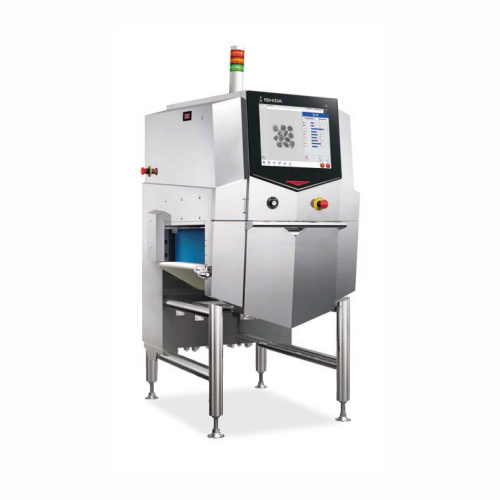
X-ray inspection system for low-density foreign objects
Enhance your inspection capabilities with advanced X-ray technolo...
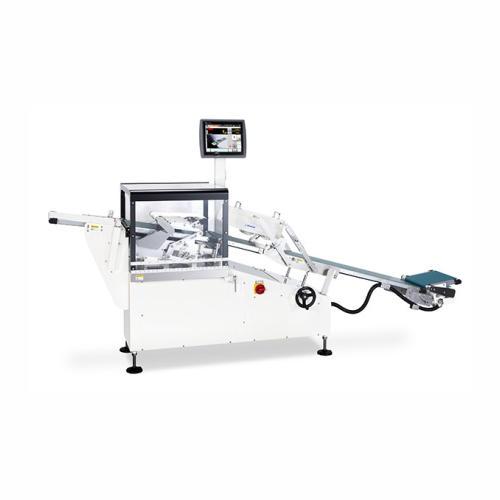
In-line seal checker for high-speed snack packaging
Ensure flawless package integrity with in-line leak detection, enhanc...
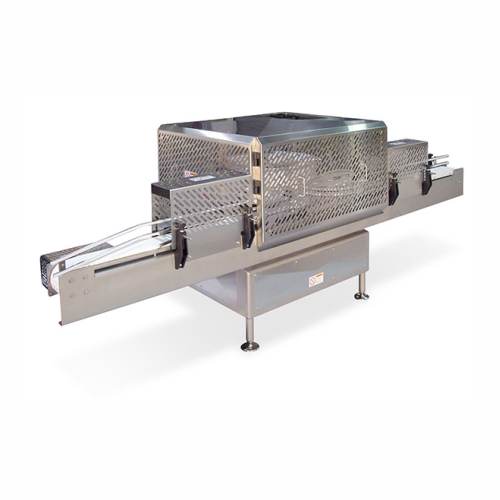
Rotary can filler for dry free-flowing products
Achieve precise, high-speed filling of dry free-flowing products like nuts...
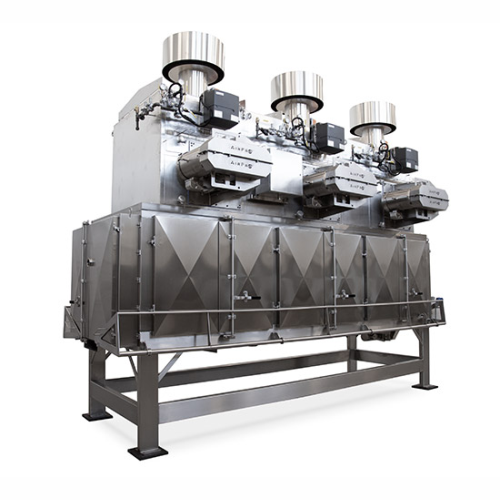
High volume rotary dryer roaster for continuous drying
Achieve uniform drying and roasting with a continuous, high-capaci...
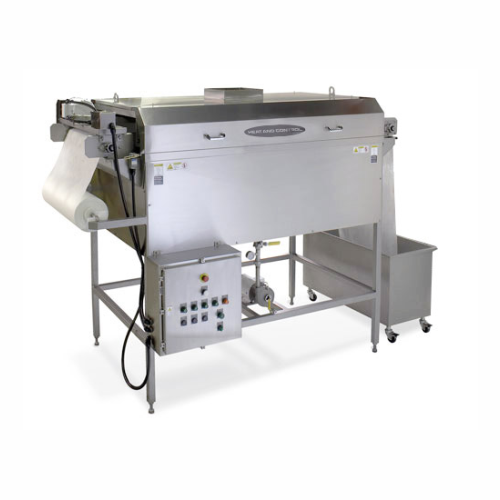
Continuous paper filter for frying oil
Ensure oil clarity and enhance product quality by continuously removing ultra-fine p...
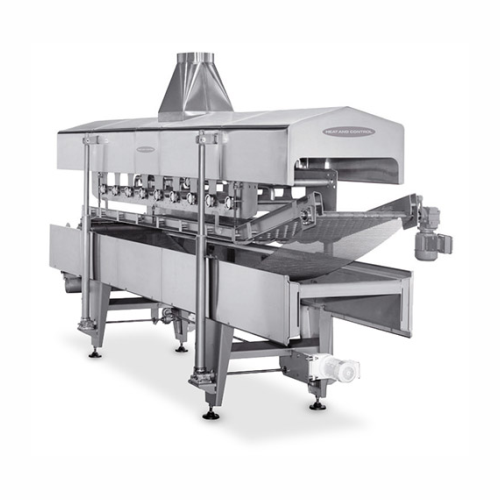
Oil curtain fryer for snack production
Enhance snack quality and shelf life by frying with rapid oil turnover and minimal o...
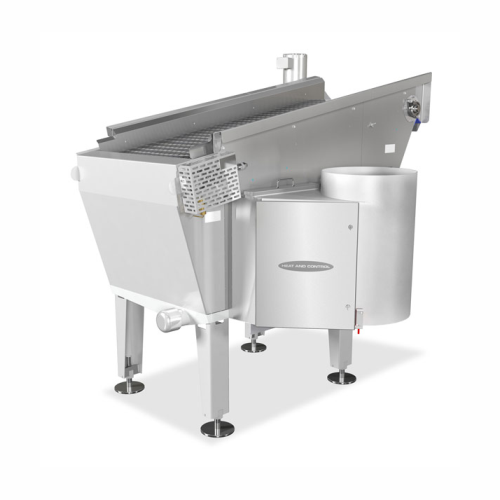
Ambient air cooling system for food products
Achieve precise cooling control with high-speed ambient air cooling systems, ...
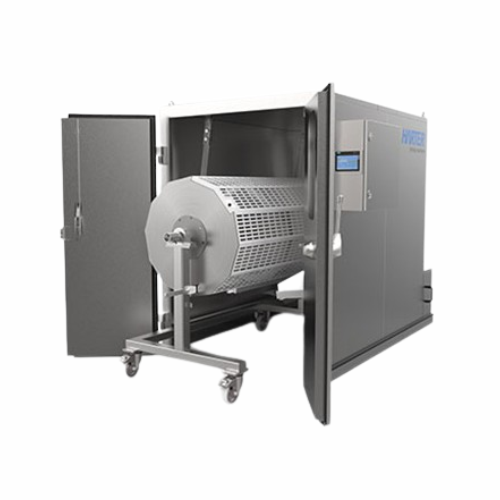
Drum dryer for animal feed
Achieve efficient and uniform drying for a variety of products, from nuts to medicinal cannabis, ...

Rotary drum dryer for robust food products
Achieve uniform and gentle drying for sensitive and robust products alike with ...
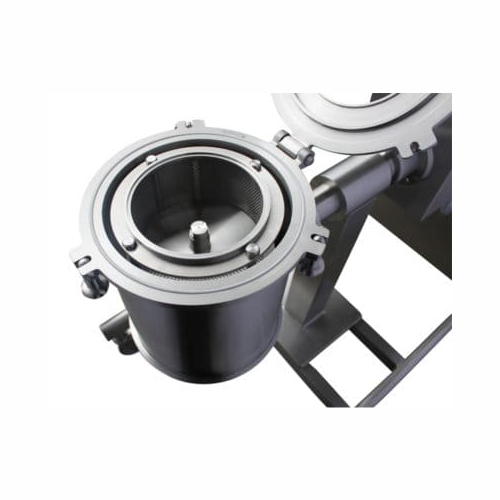
Centrifugal powder sifter for particle separation
Achieve consistent material quality with efficient powder sifting and d...
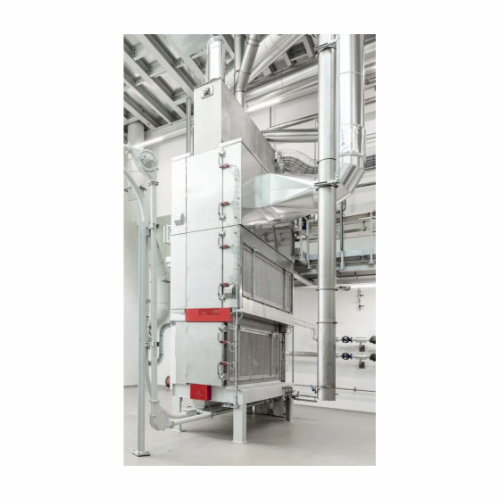
Continuous cocoa bean roaster
Achieve precise flavor profiles in cocoa and nut processing with a continuous roasting solutio...
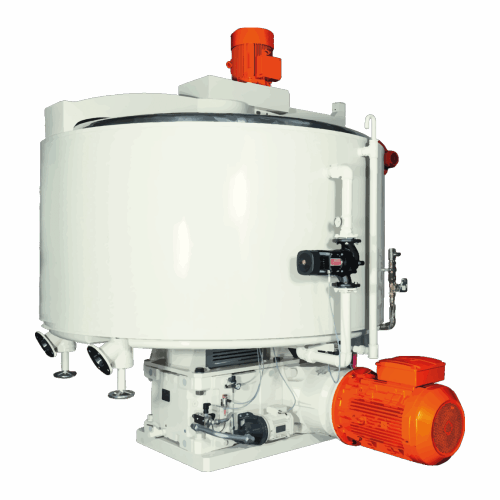
Batch conche for chocolate making
Achieve optimal texture and flavor development in your chocolate with precise control ove...
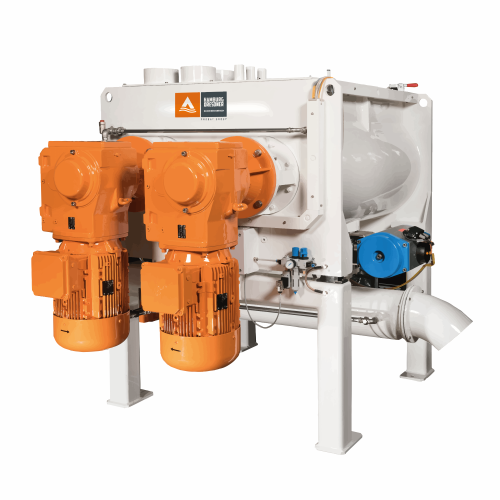
Double shaft batch mixer for chocolate production
Optimize your chocolate and confectionery production with precise mixin...
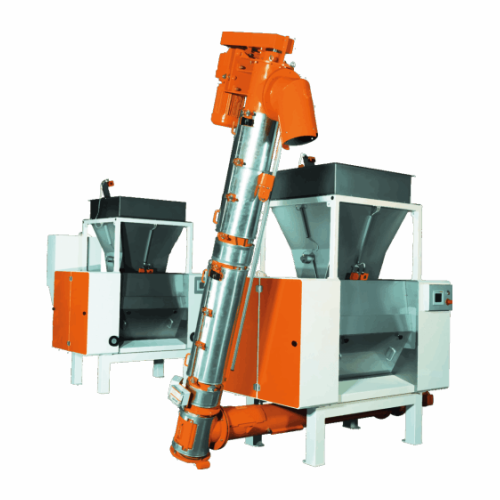
Pre-refiner for chocolate processing
Optimize pre-refining in chocolate and cocoa production with precise fineness control,...
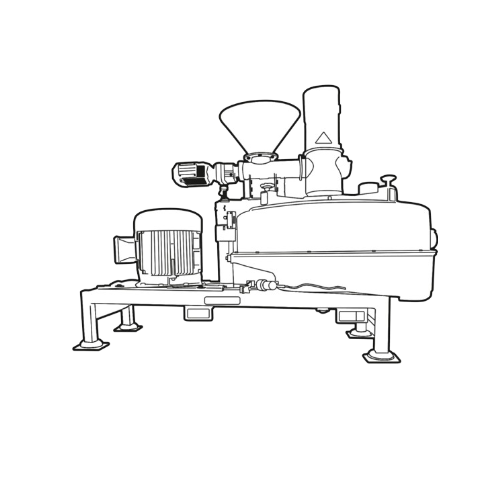
Cocoa nib grinding system
Optimize your cocoa and nut processing with precision grinding to achieve a pumpable mass, ensurin...
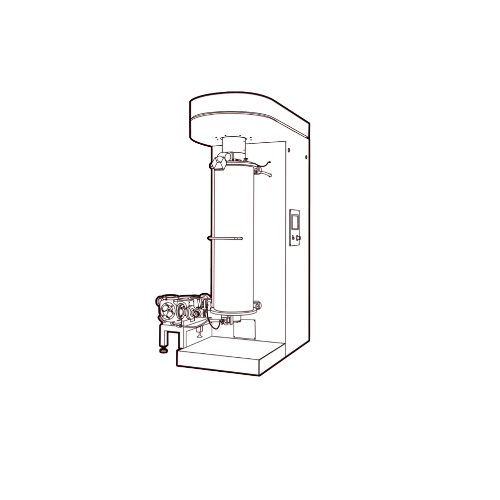
Spindle mill for fine and super fine grinding of cocoa liquor
Achieve precision in grinding cocoa liquor and nut pastes ...
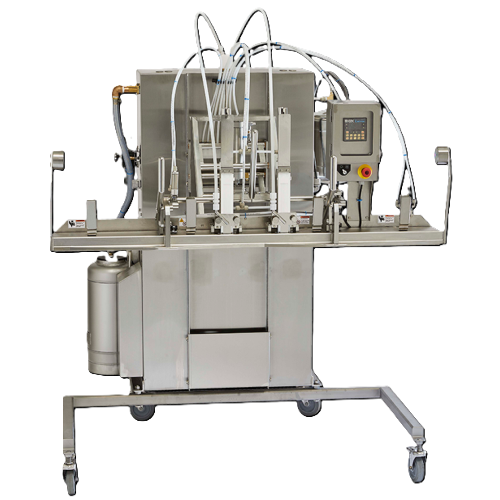
Modified atmosphere packaging for bulk bins
Achieve ultra-low oxygen levels and preserve product quality during bulk proce...
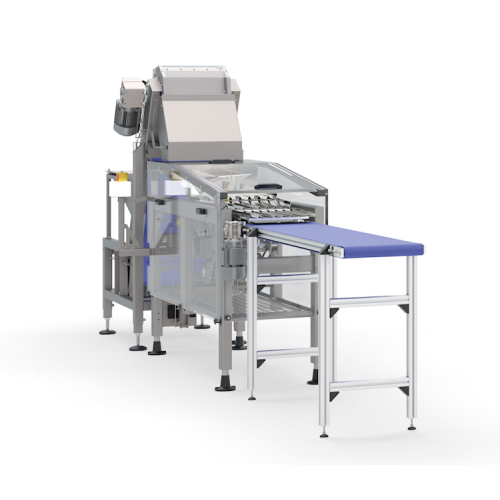
Product unscramblers for industrial automation
Efficiently organize and orient jumbled products for seamless integration w...
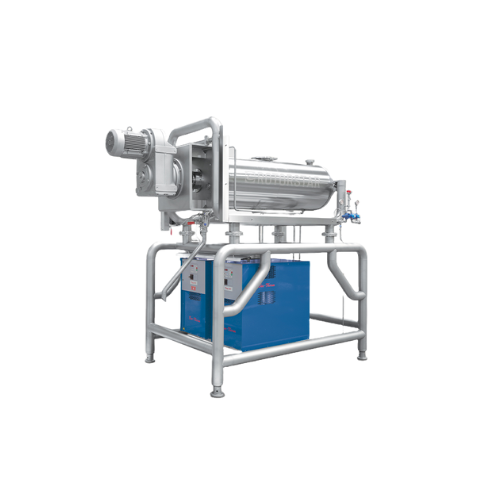
Continuous butter toffee processing system
Achieve precise caramelization and nut integration while maintaining the perfec...
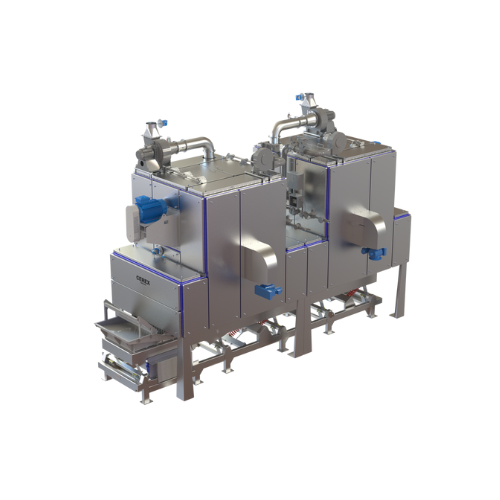
Industrial 2-zone toaster for optimal cereal processing
Achieve precise toasting of cereals and seeds with the 2-zone toa...
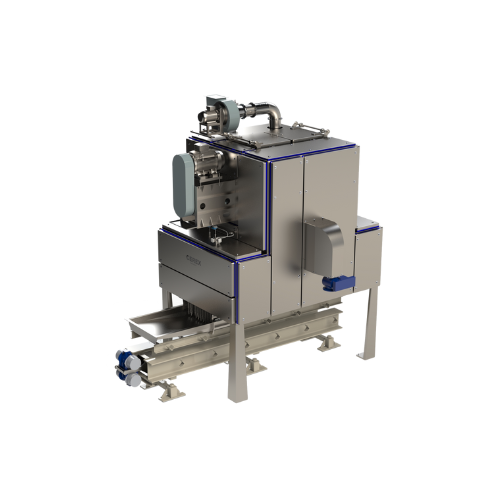
Single-zone toasters for raw grain processing
Optimize your cereal and snack food production by achieving consistent toast...
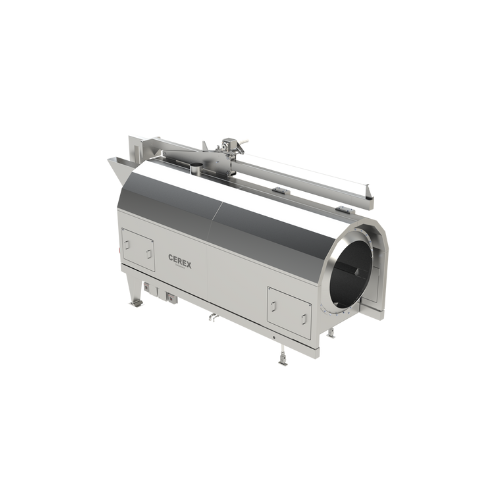
Industrial coating drum for breakfast cereals
Optimize your cereal production with a coating drum designed to enhance prod...

Coating dryers for breakfast cereal production
Achieve precise moisture control in coated cereal production with these mod...
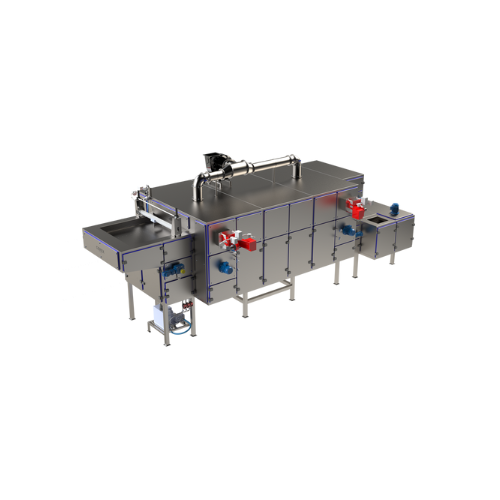
Multi-tier dryers for modern breakfast cereals
Optimize dry and cool cereal, nuts, and seed production with a compact modu...
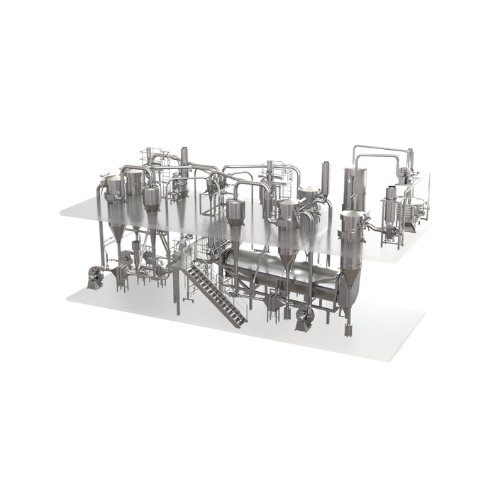
Grain puffing system for breakfast cereals
Achieve precise and efficient grain expansion in breakfast cereals with this ad...
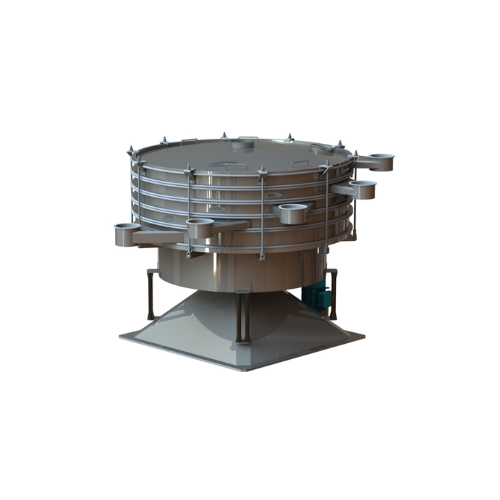
Industrial screeners for grain product processing
Optimize your cereal production line with specialized industrial screen...
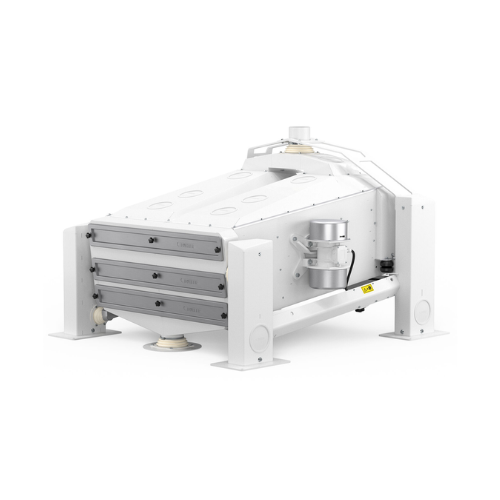
Grain separator for impurity removal in milling
Optimize grain cleaning with a high-performance separator designed to effi...
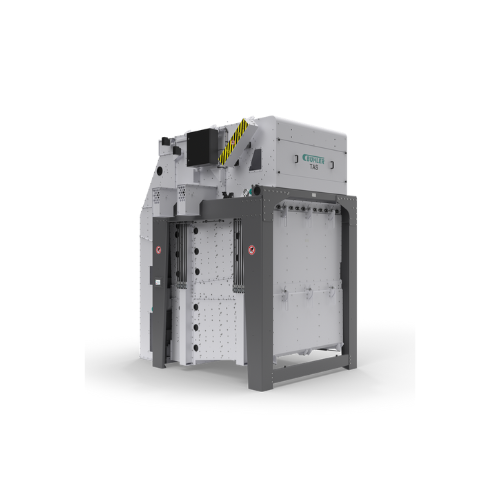
Grain cleaning system for high-quality processing
Optimize your grain processing with a versatile cleaning system designe...
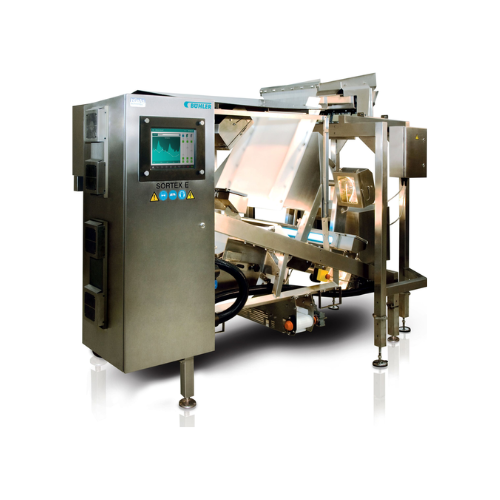
Optical sorter for frozen fruit and vegetable processing
Enhance your processing line’s efficiency with high-speed ...
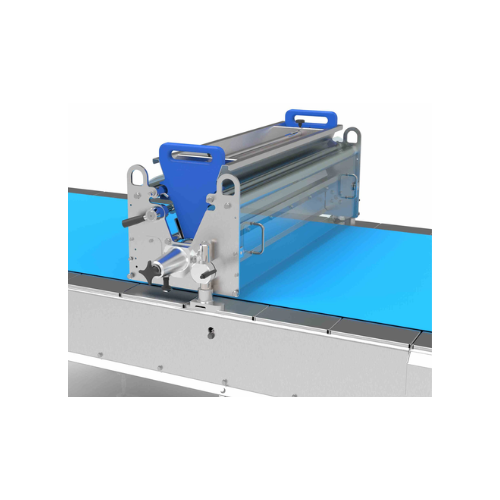
Sprinkling unit for confectionery and baked goods
Achieve precise and uniform toppings on baked goods with versatile and ...
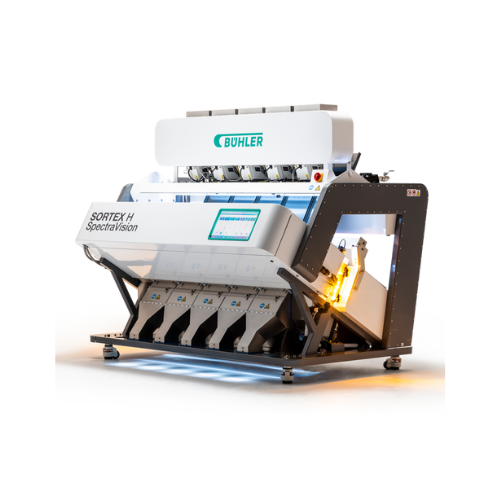
Optical sorter for coffee beans
Achieve precise color differentiation and advanced foreign matter detection, optimizing your...
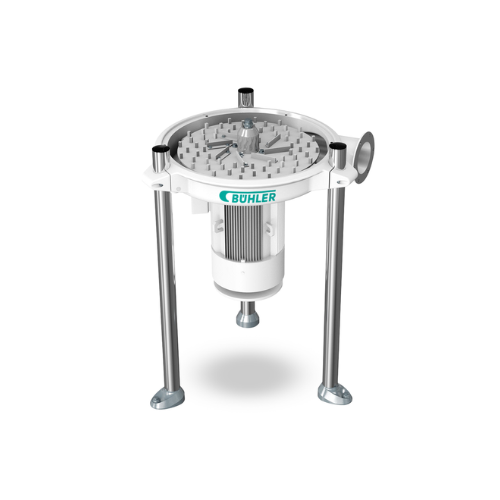
Impact machine for milling applications
Optimize your grain processing with this versatile impact machine, designed to refi...
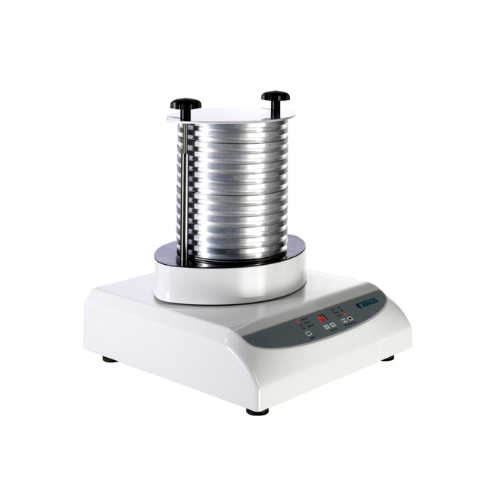
Laboratory plansifter for particle-size distribution
Optimize your grain milling and brewing operations with precise part...

Cooling tunnel for cream-filled wafer blocks
Ensure your wafer products maintain optimal texture and integrity with a stat...
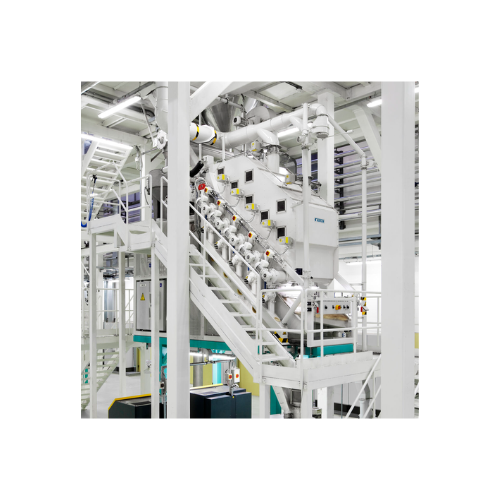
Winnowing system for cocoa processing
Achieve precise cocoa separation with a high-efficiency winnowing system designed for...
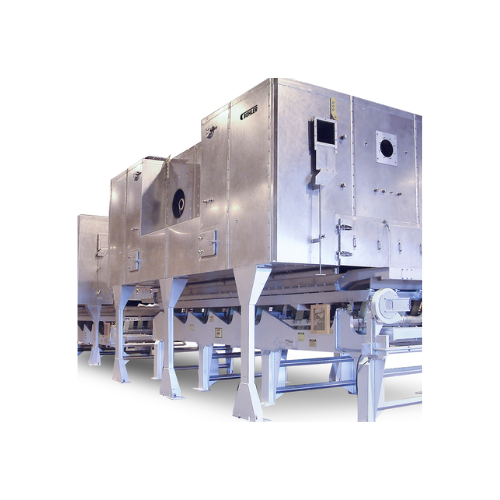
Fluid-bed toaster for cereal processing
Achieve precise control over texture and taste while reducing operating costs with ...
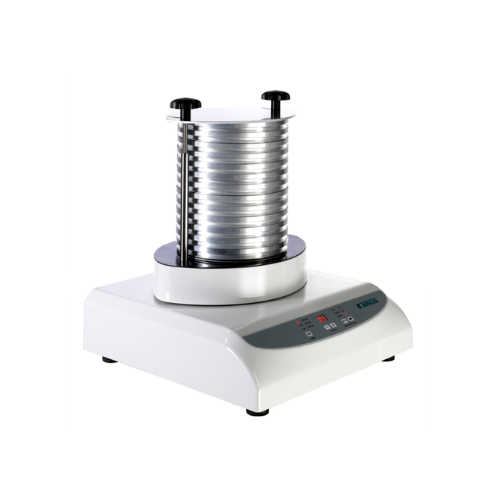
Laboratory plansifter for grain milling and brewing
Achieve precise particle-size distribution and quality control across...
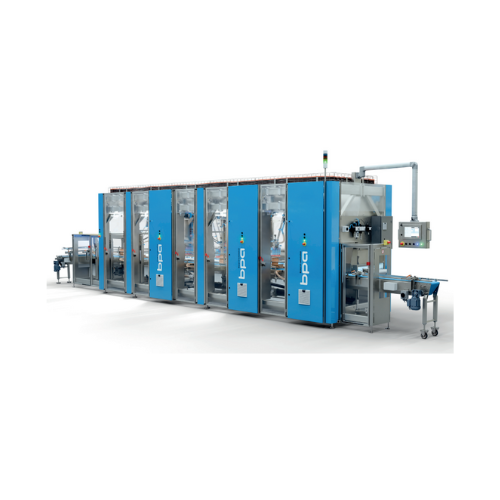
Vertical case packer for reusable and Rsc cases
Streamline your packaging line with versatile, high-speed case packing tha...
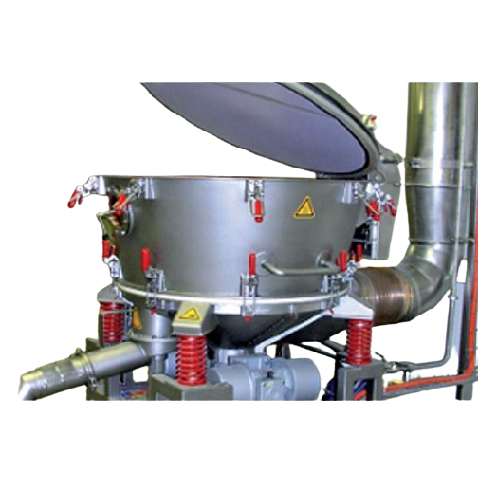
Vibration batch dryer for difficult solids
Ensure efficient drying of complex solids prone to sticking and shape irregular...
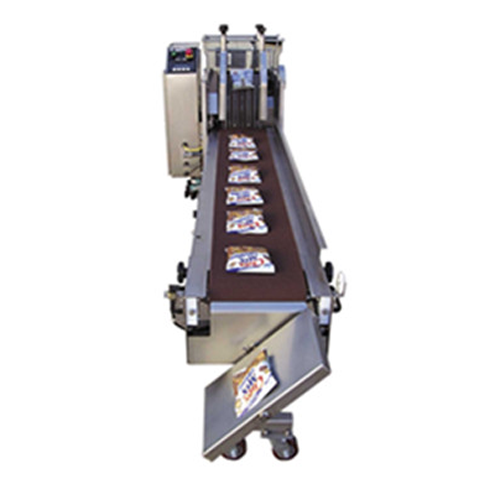
Single lane collator for packaging room
Streamline your packaging operations by efficiently collating, counting, and aligni...
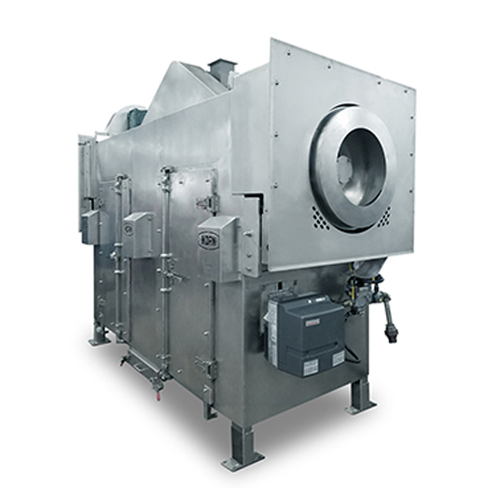
Modular rotary oven for snack food processing
Optimize flavor infusion and moisture control in snack production with a mod...
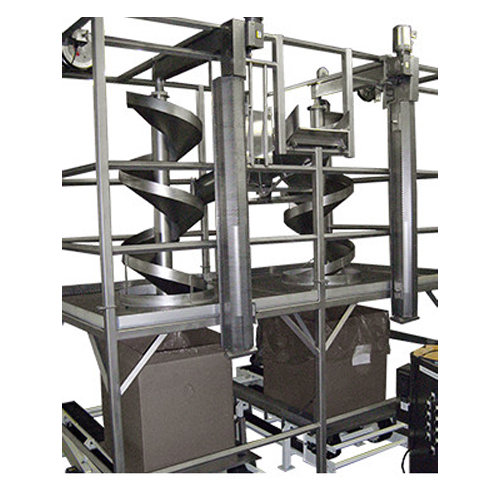
Retractable spiral chute for bulk material handling
Enhance the integrity of your products by gently transferring bulk ma...
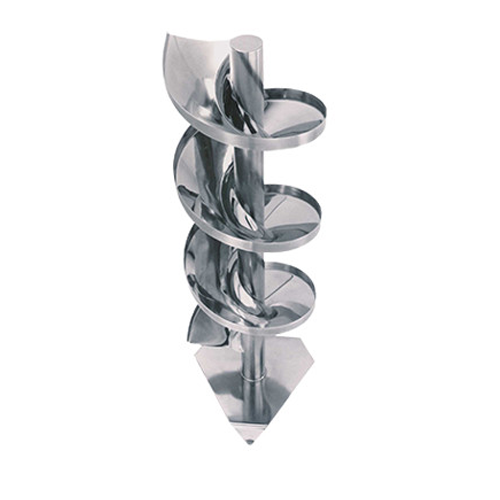
Spiral chute for gentle product handling in limited space
Optimize your snack and nut production by minimizing product d...
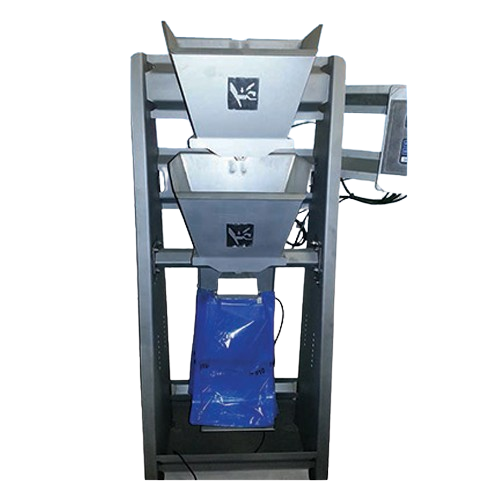
Industrial bagging system for high-speed processing
Optimize your packaging line with this engineered-to-order bagging sy...
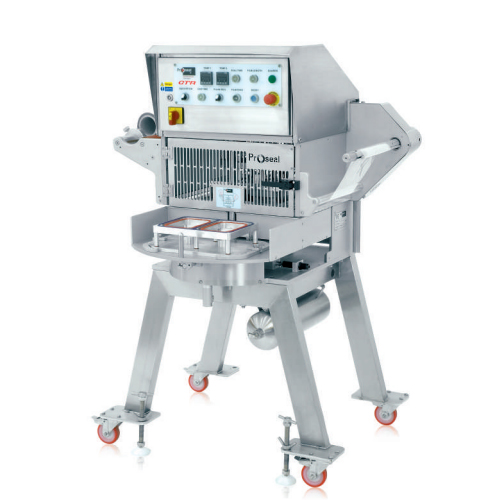
Semi-automatic tray sealing solution
Streamline your production line with a versatile tray sealing solution that enhances p...
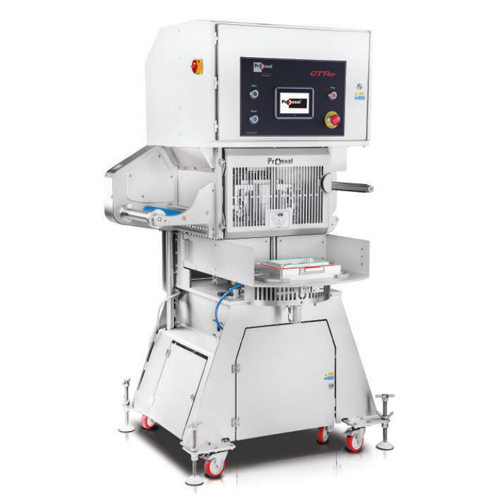
Semi-automatic tray sealing for ready meals
Achieve versatile packaging with a semi-automatic tray sealing solution design...
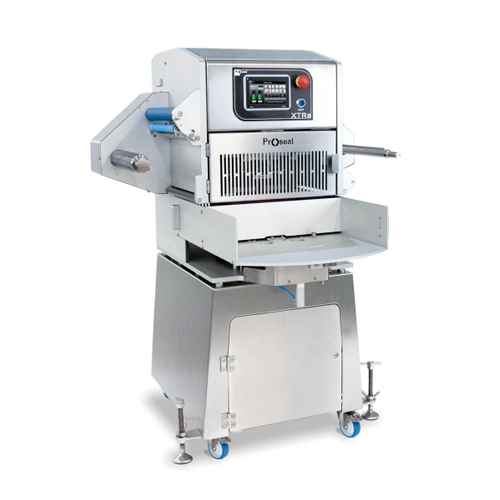
Semi-automatic tray sealer for ready meals
Achieve optimal freshness with consistent sealing, maximizing shelf life for va...
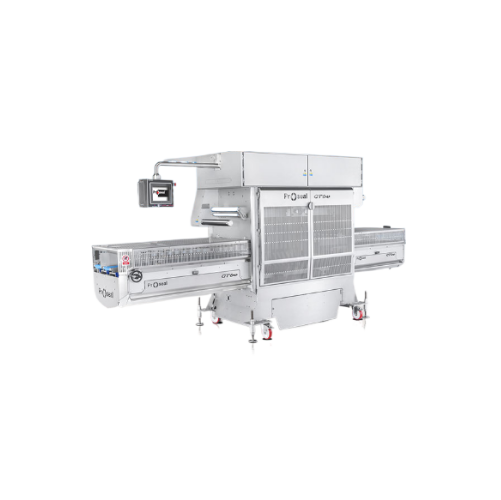
Automatic tray sealer for high-speed food packaging
Optimize your production line with a high-capacity tray sealing solut...
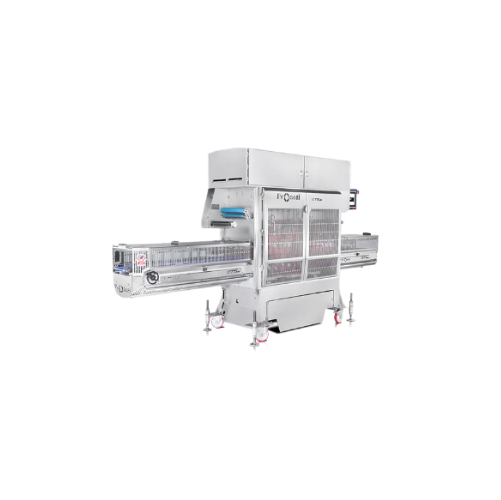
High-speed tray sealer for food packaging
Streamline your packaging process with high-speed tray sealing, reducing labor c...
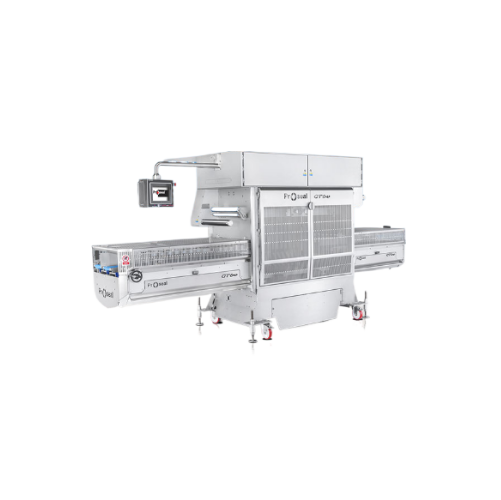
Automatic tray sealing system for high-speed packaging
Experience seamless high-speed packaging with this versatile tray ...
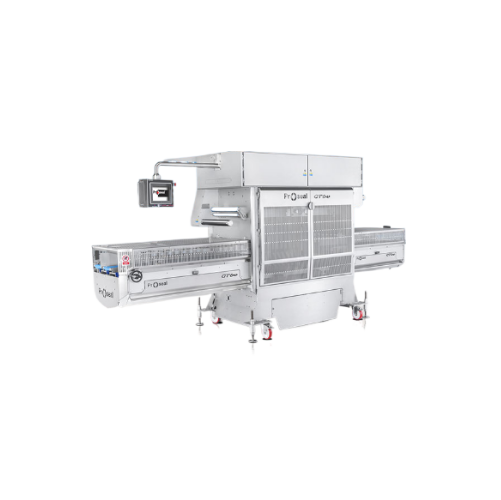
Automatic tray sealer for high-speed production
Ensure your product packaging stays fresh and secure with this high-capaci...
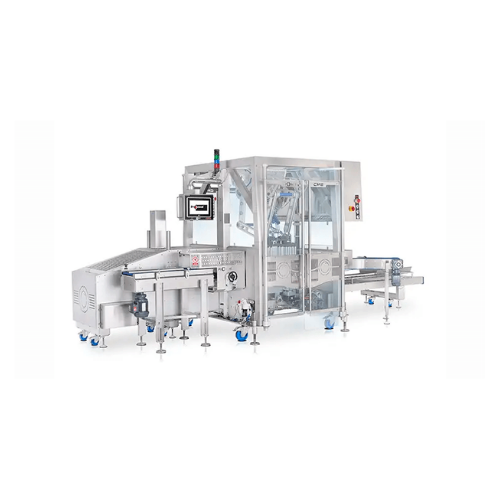
Industrial case packing solution for high-speed operations
Optimize your production line with a compact, efficient case ...
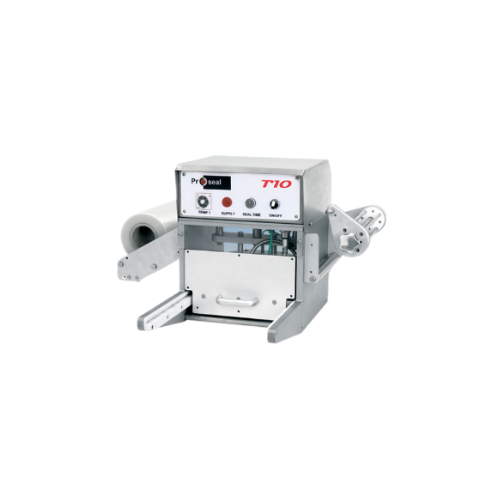
Bench mounted tray sealer for small-scale production
Perfect for pilot runs and small batches, this compact tray sealer e...
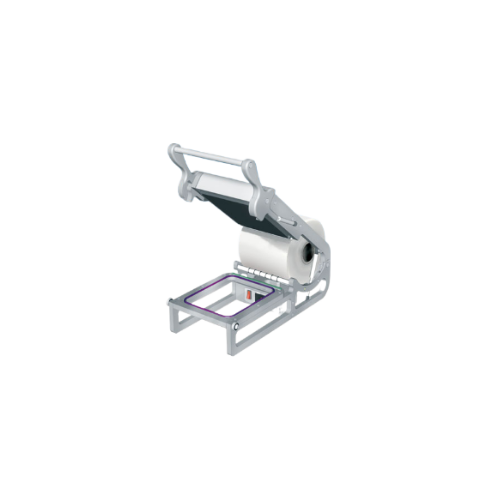
Hand operated tray sealer for small-scale food production
Optimize your packaging process with this compact tray sealing...
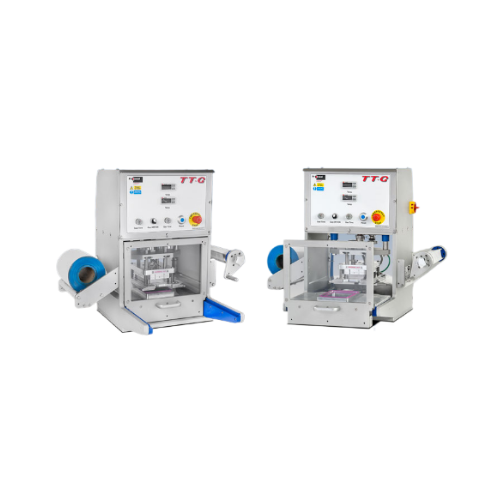
Bench mounted tray sealer with gas flush
Optimize your production line with a compact tray-sealing machine designed for pre...
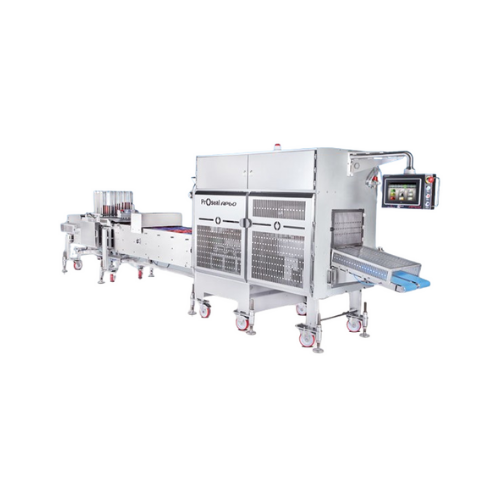
Linear conveyor tray sealing
Experience unparalleled flexibility and efficiency in tray sealing with high-speed integration,...
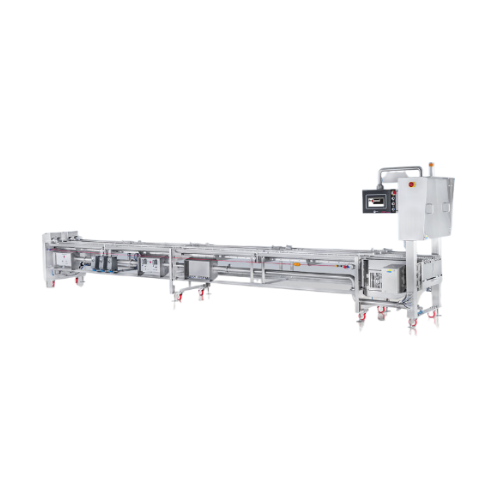
High throughput tray conveyor system
Looking to streamline your tray sealing process? This modular conveyor system integrat...
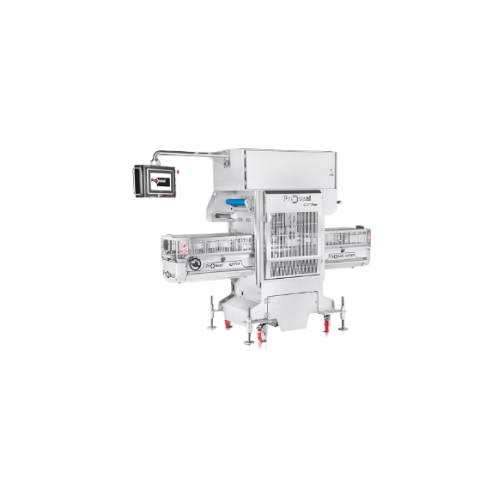
High-speed tray sealer for food
Enhance your packaging line’s efficiency with a high-speed, in-line tray sealer design...
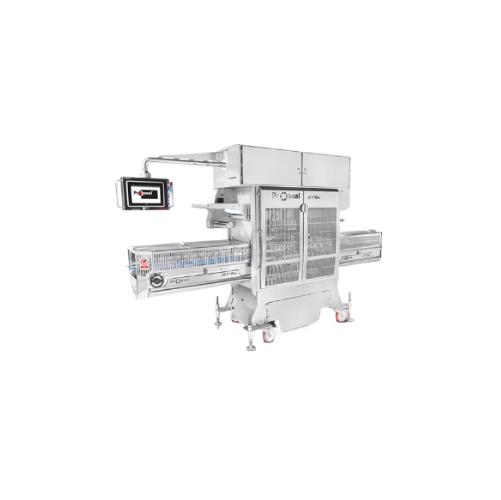
Industrial high speed tray sealer
Enhance your production line efficiency with precision sealing capabilities, accommodatin...
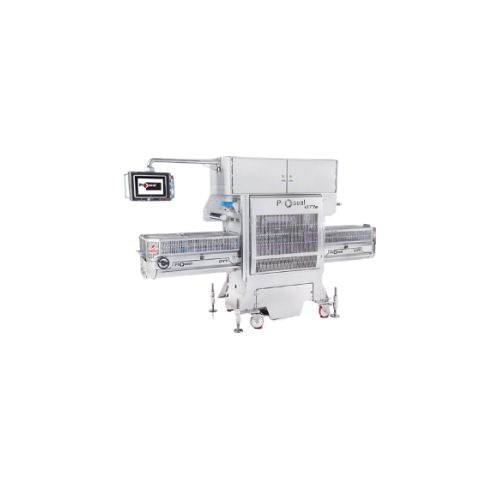
Automatic tray sealer
Maximize throughput and shelf life with our high-speed inline tray sealing solution, ideal for diverse ...
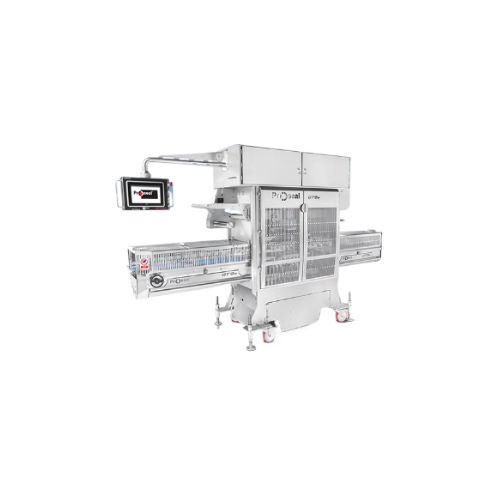
In-line tray sealer for high-speed packaging
Optimize your packaging line with a high-speed solution that accommodates mul...
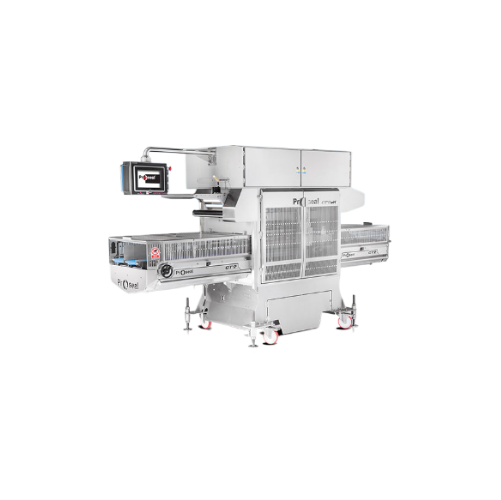
High-capacity tray sealer for vacuum gas packaging
Enhance your production efficiency with a versatile twin-lane tray sea...
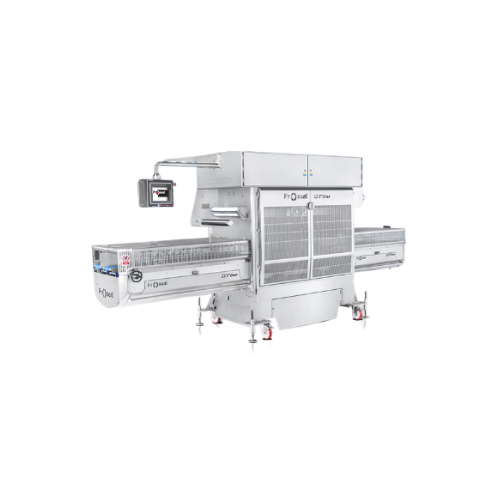
In-line tray sealing system
Streamline your packaging line by implementing a high-speed, in-line tray sealing system designe...
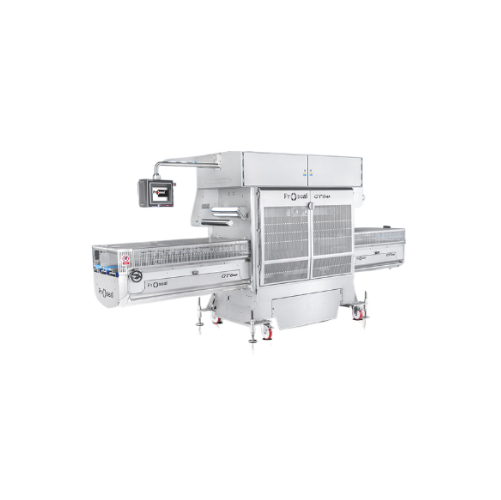
High-capacity tray sealer for poultry, meat & seafood
Optimize your high-speed packaging line with this large-capacity tr...
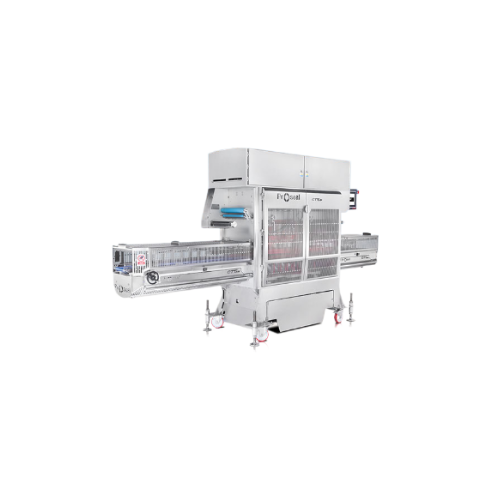
Automatic tray sealer for high-speed packaging
Streamline your packaging line with an in-line tray sealer that adapts to t...
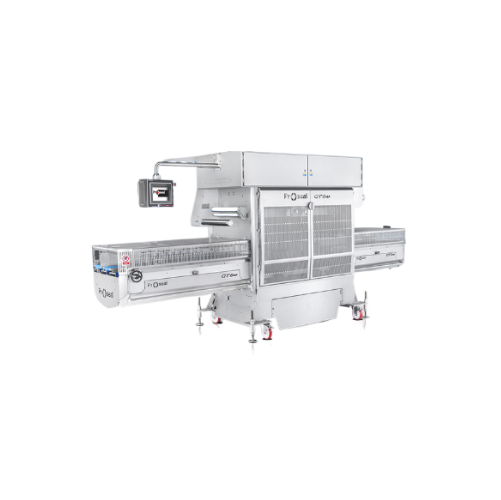
Large-capacity automatic tray sealer
Optimize your production line with this tray sealer, designed for high-speed sealing a...
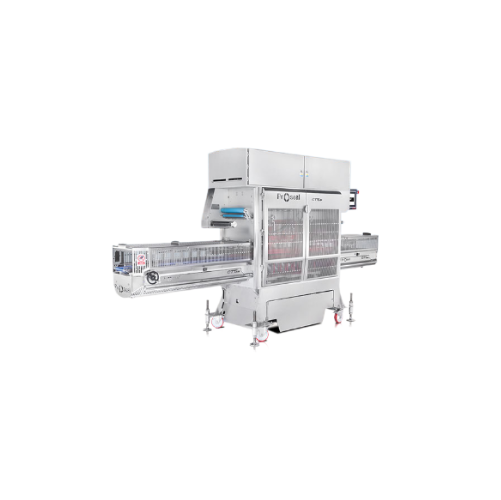
Automatic inline tray sealer for food packaging
Streamline your packaging process with high-speed, reliable tray sealing t...
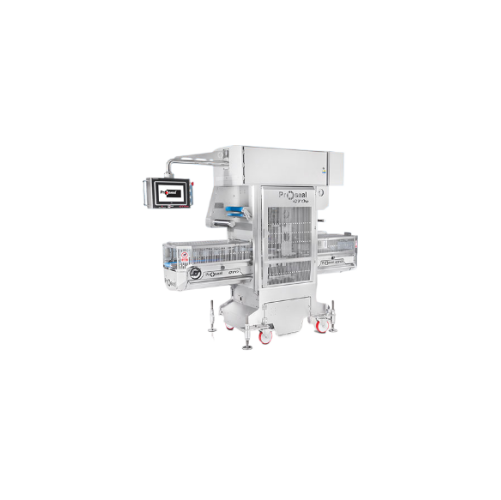
Automatic tray sealing system
Optimize your packaging line with versatile tray sealing technology that accommodates various ...
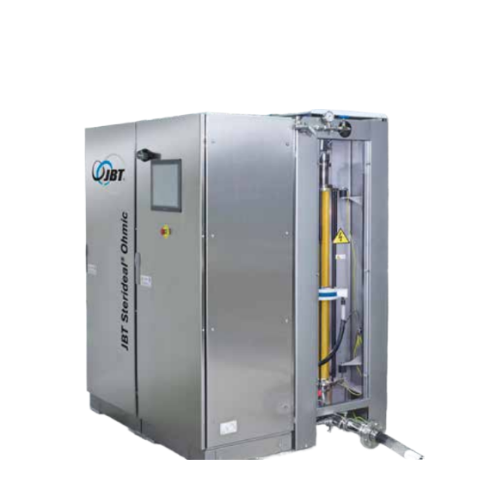
Heat exchanger for high viscosity products
For processors handling high viscosity products or those with fiber content, th...

Rotary atmospheric sterilizer for high acid canned foods
Optimize your canning process with uniform heat penetration and ...
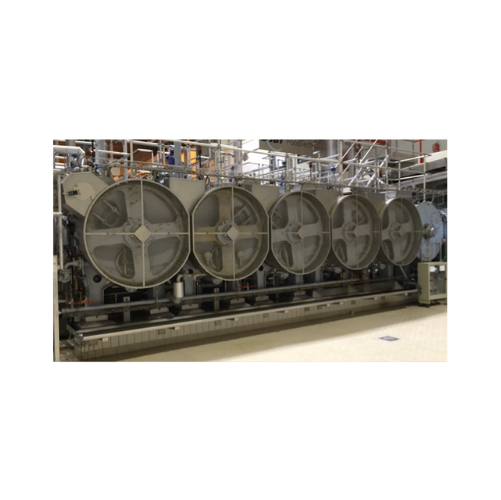
Rotary pressure sterilizer for canned food products
Streamline your canning operations with continuous high-speed sterili...
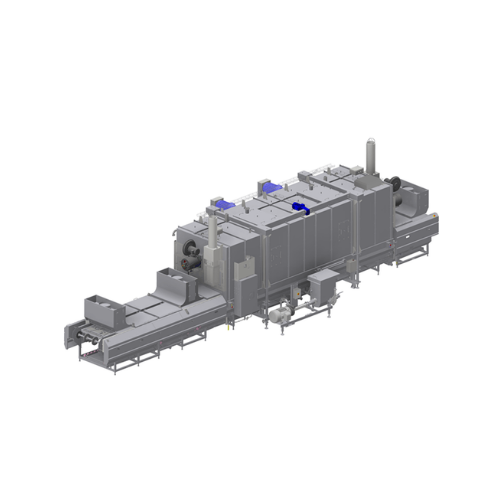
Surface pasteurizer for low moisture foods
Ensure a pathogen-free surface on low moisture products without altering their ...
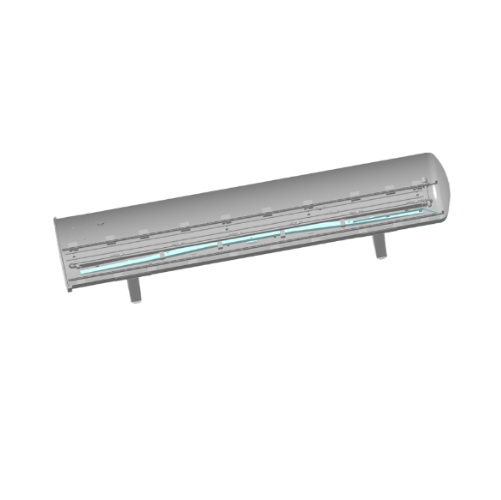
Low energy suction system for food processing retorts
Optimize your sterilization process with innovative suction technol...
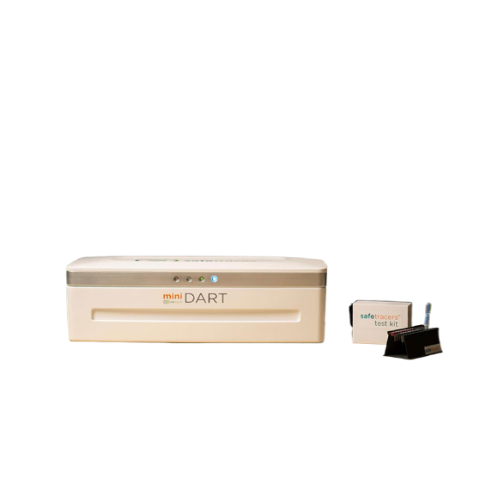
On-food traceability technology for produce
Enhance your product authenticity with a revolutionary traceability technology...
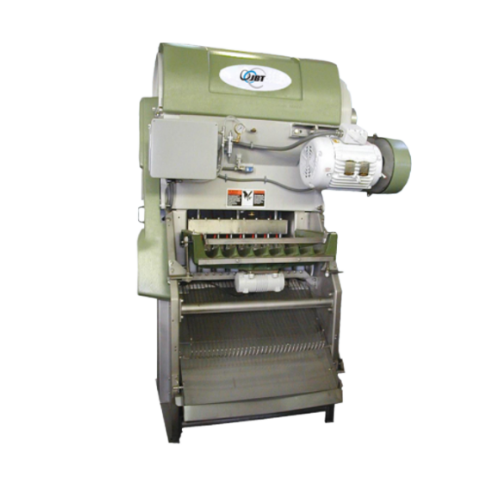
Citrus juice extractor for industrial juice production
Maximize juice yields while preserving exceptional quality with ou...
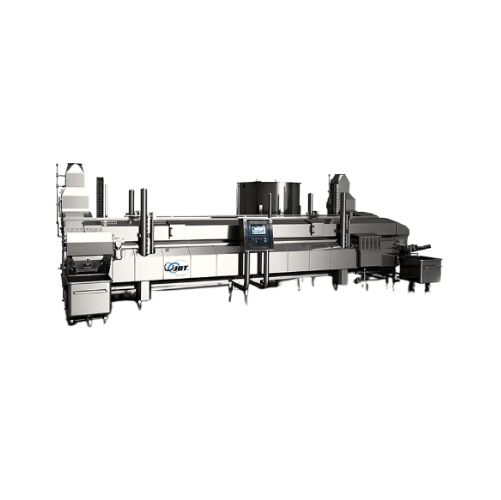
Direct heated immersion fryer for convenience food processing
Achieve superior temperature control and minimize oil cons...
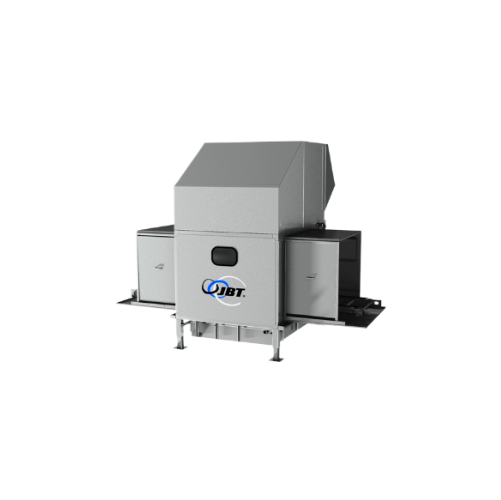
Industrial bin scrubbing system for fresh produce
Enhance food safety and operational efficiency with a bin scrubbing sys...
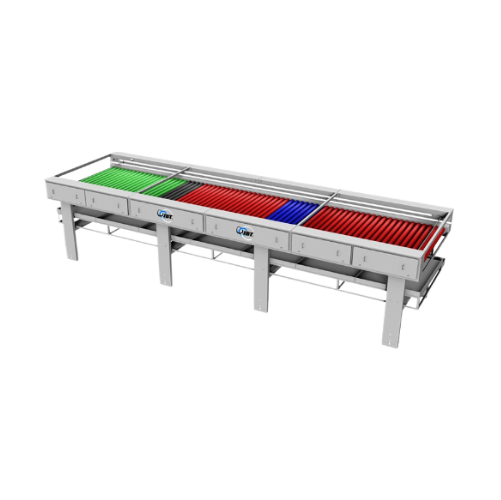
Brush bed system for fresh produce cleaning and waxing
Optimize your fresh produce processing with this advanced brush sy...
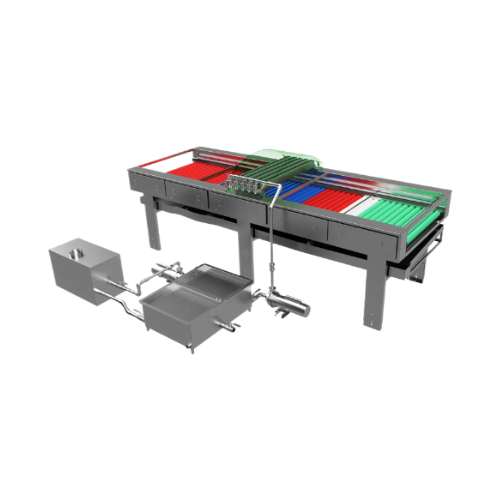
Heated flooder for sanitation in fresh produce processing
Optimize your fresh produce processing with a heated flooder, ...
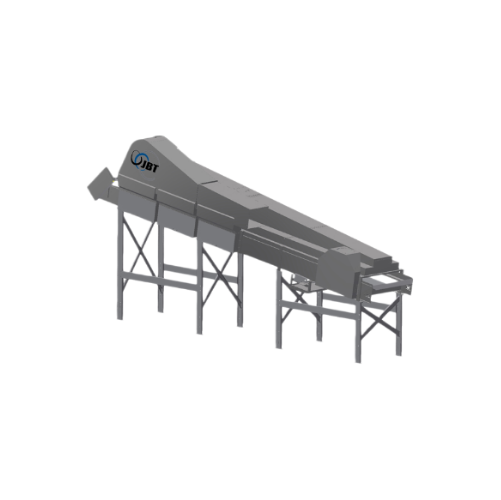
Single pass dryer for fresh produce
Optimize your fresh produce processing with a continuous drying solution that enhances ...
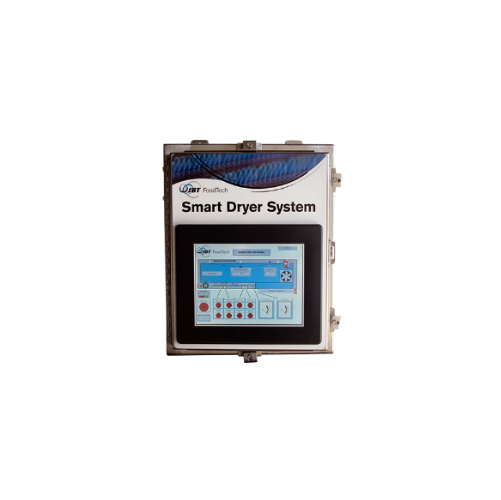
Smart dryer system for fresh produce
Optimize your fresh produce drying process while ensuring consistent quality and effic...
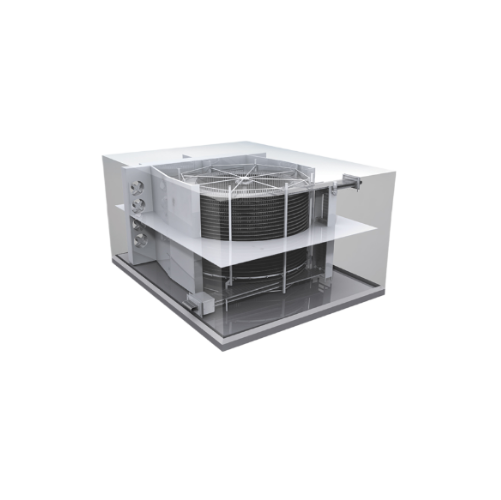
Structure supported spiral freezer for food products
Optimize your high-speed production with a versatile spiral freezer ...
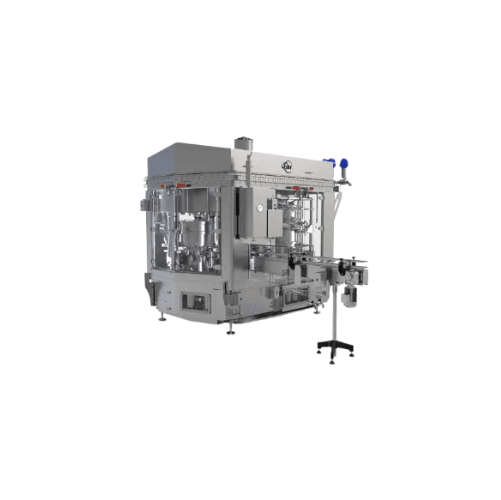
Rotary can filler and closer for metal cans
Achieve seamless integration in your production line with a solution that sinc...
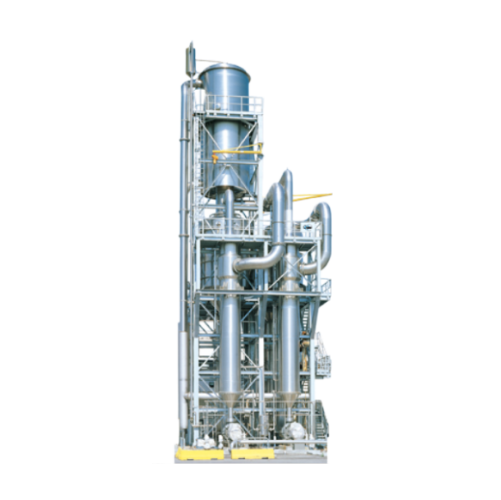
Forced circulation evaporator for tomato and fruit paste
Optimize your high-viscosity tomato and fruit paste production w...
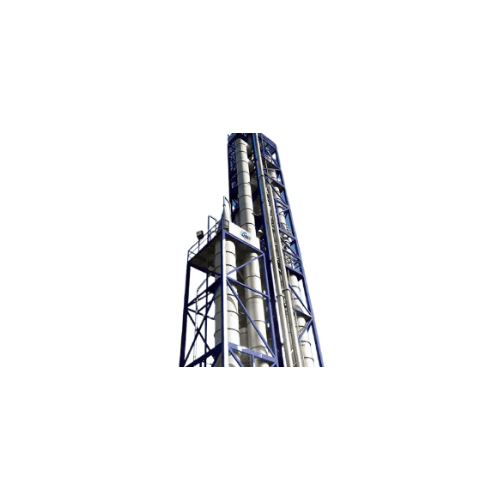
Hybrid evaporator for highly viscous tomato concentrate
Achieve superior concentration and energy efficiency with a versa...
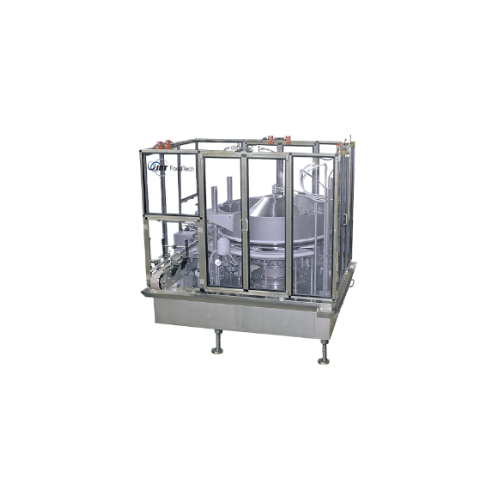
Granular filler for wide mouth containers
Ensure precise filling and minimize product loss with this granular filler, expe...
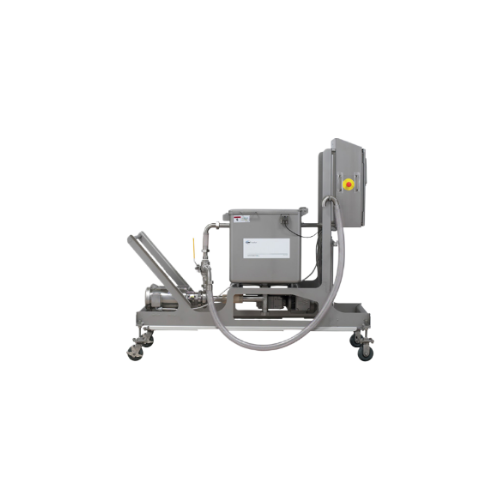
Batter mixer for small to medium food production lines
Achieve precise, consistent batter mixing with our semi-automated ...
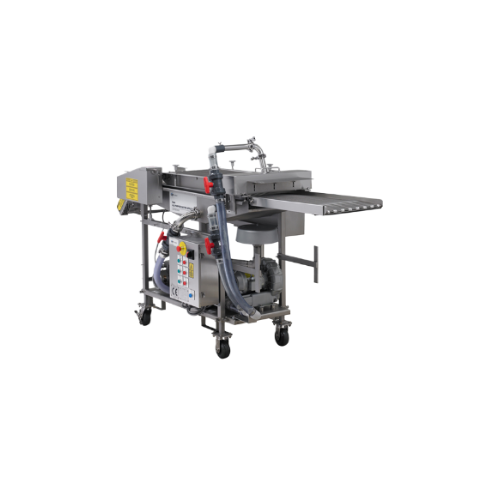
Batter applicator for meat and fish
Achieve consistent and uniform batter coverage on diverse food products, enhancing the ...
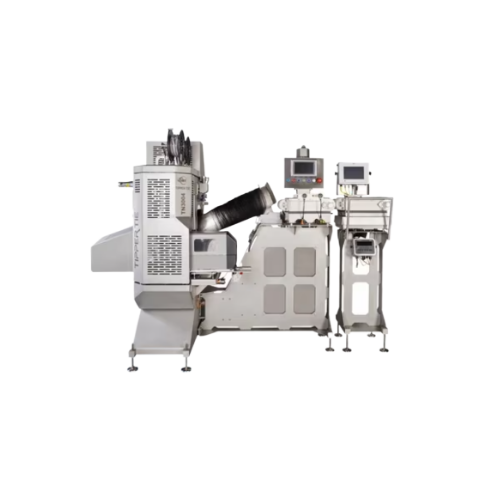
Automated clipped netting system for meat packaging
Enhance your packaging line with a system designed for rapid and prec...
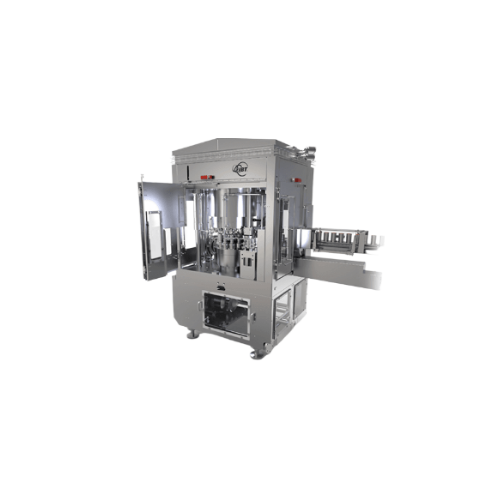
Can seamer for high-speed liquid applications
Ensure consistent seal integrity and maximize throughput with this advanced ...
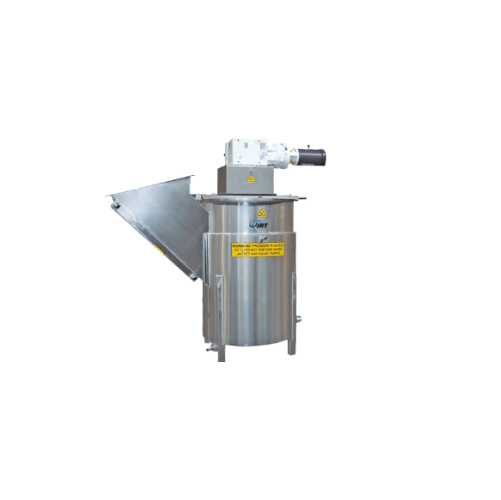
Industrial chopper/blender for frozen fruit processing
Efficiently transition frozen fruits and concentrates into a manag...
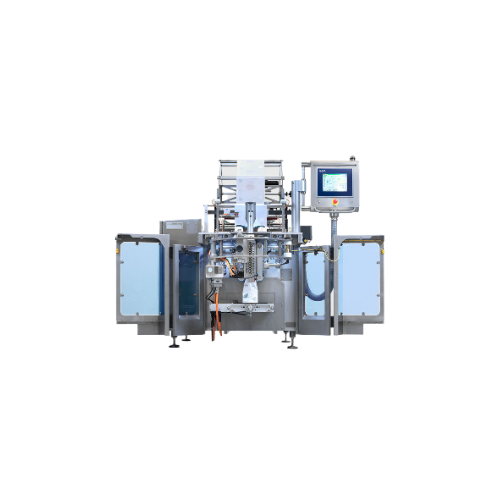
Vertical form-fill-seal for pillow bag packaging
Looking to enhance the speed and reliability of your packaging process? T...
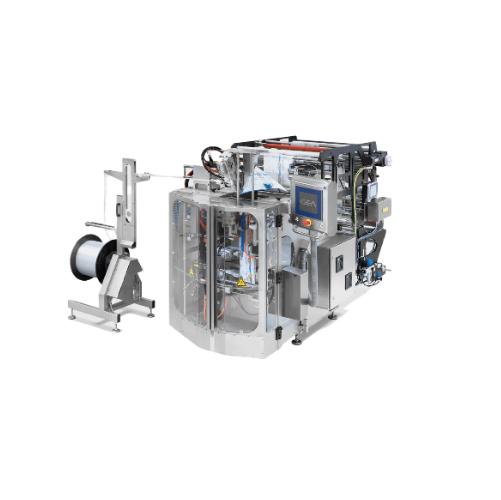
Vertical pouch packaging system for food products
Achieve high-speed, precise packaging with our vertical pouch system, i...
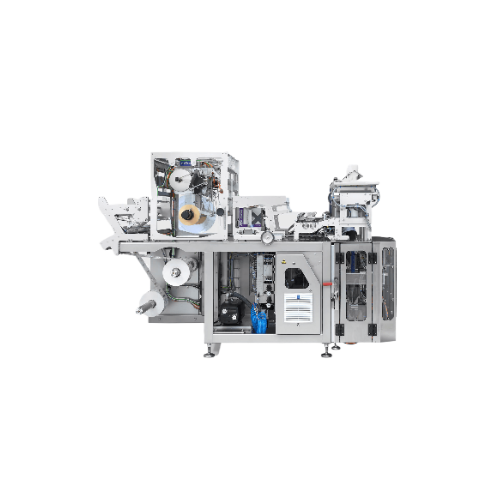
High-speed vertical packaging system for candy and snacks
Achieve up to 500 pillow bags per minute with our high-speed p...
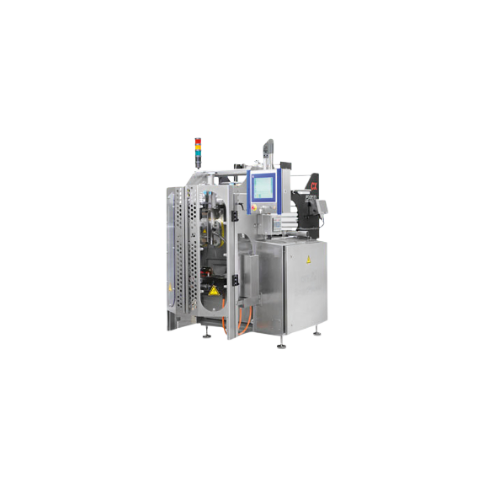
Vertical form fill sealer for high-speed packaging
Achieve consistent, high-speed packaging with flexible bag styles, per...
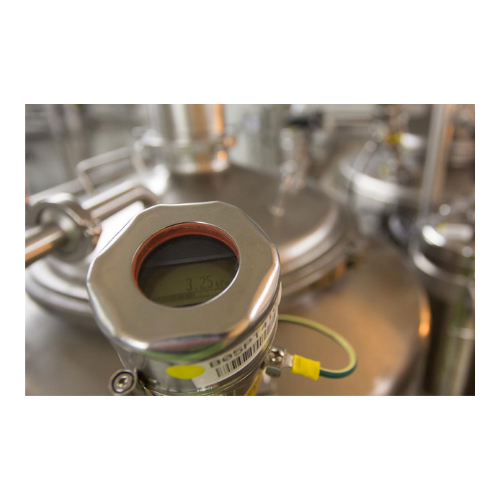
Powdered product shelf-life enhancement through inert gas packing
Extend the shelf life of sensitive powder products by...
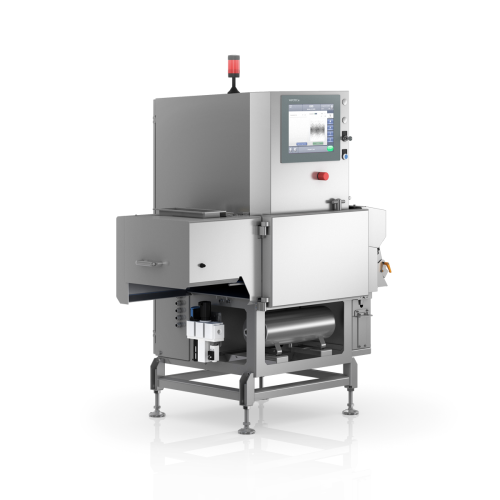
X-ray scanner for bulk material inspection
Ensure product safety and minimize downtime by intercepting foreign contaminant...
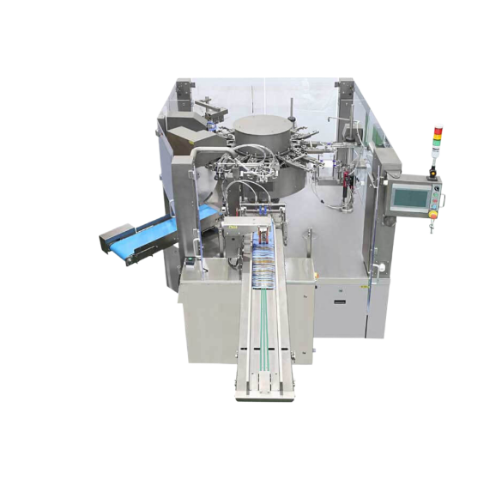
Rotary pouch packaging system for food and powder products
Streamline your packaging process with a rotary system that e...
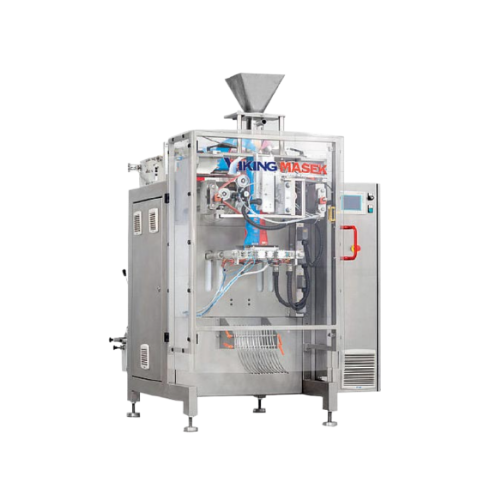
Continuous motion vertical form fill seal packaging system
Achieve high-speed, consistent packaging for diverse products...
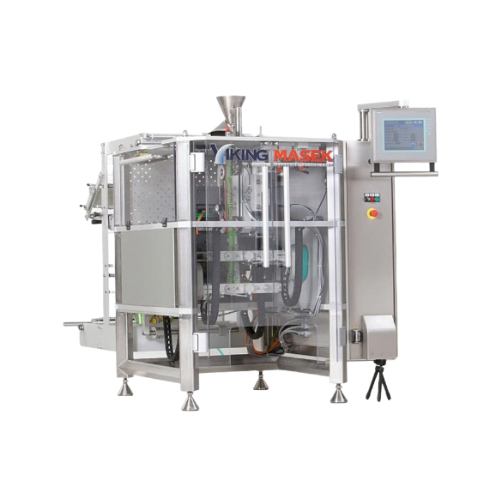
High-speed vertical form fill seal packaging machine
Optimize your packaging line with this high-speed vertical form fill...
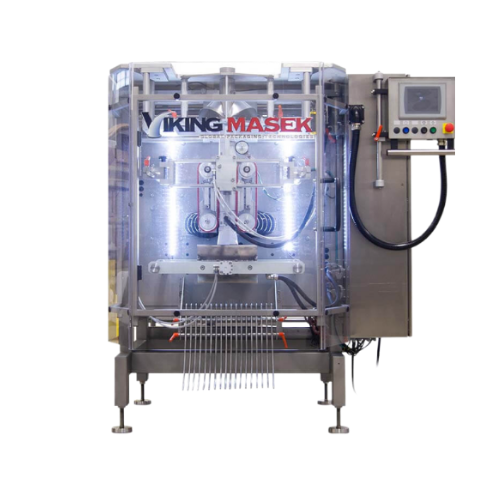
Vertical form fill seal for dusty and liquid products
Optimize your packaging line with a versatile solution designed to ...
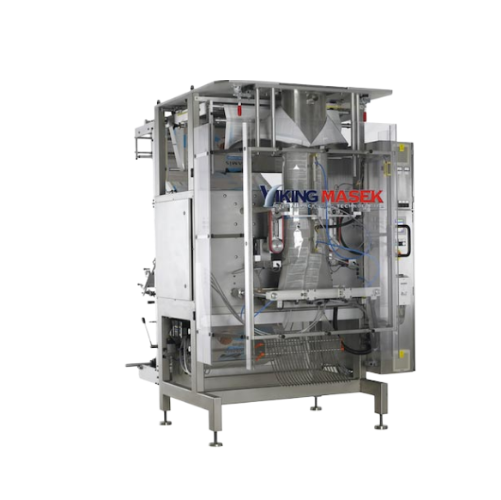
Vertical form fill seal for large bag packaging
For operations requiring precise, large bag packaging, this equipment ensu...
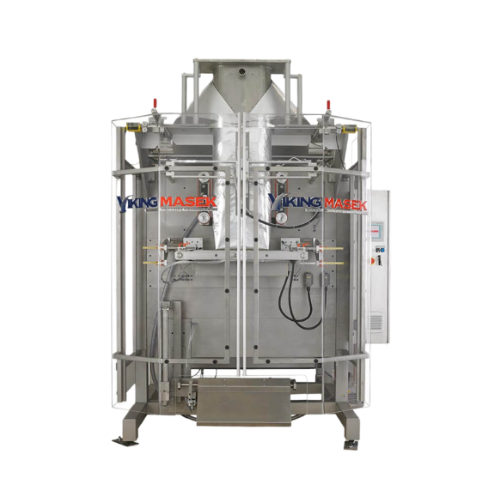
Vertical form fill seal for bulk bag packaging
Streamline your bulk bag packaging with efficiency and precision, ideal for...
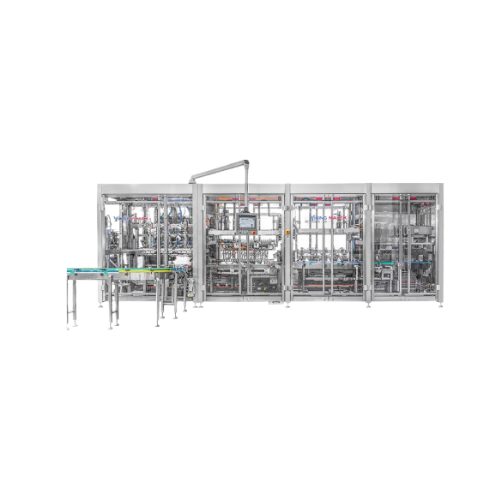
Topload cartoning system for efficient product packaging
Streamline your packaging line with this compact system that com...
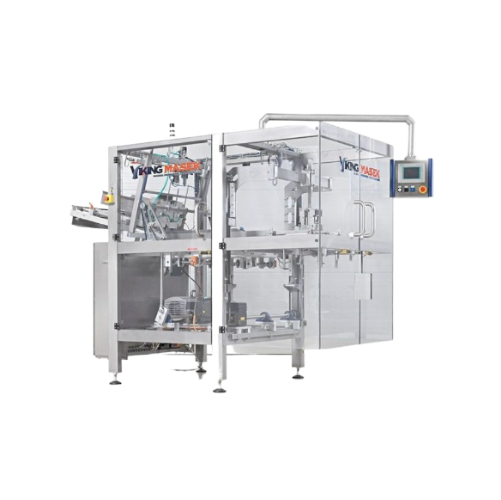
Top load cartoner for various carton shapes
Optimize your production line with a versatile cartoning solution, perfect for...
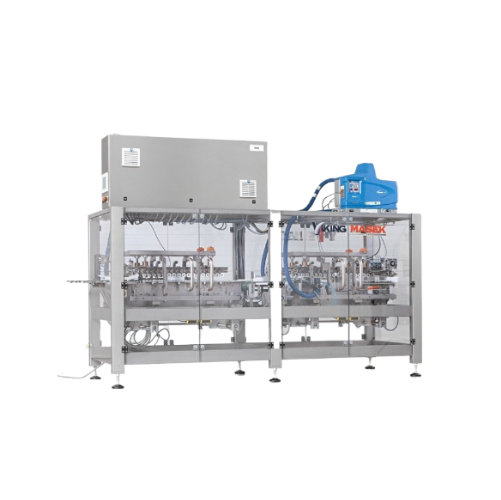
Topload cartoner for packaging cartons
Efficient flap closing for diverse carton sizes, ensuring gentle handling of sensiti...
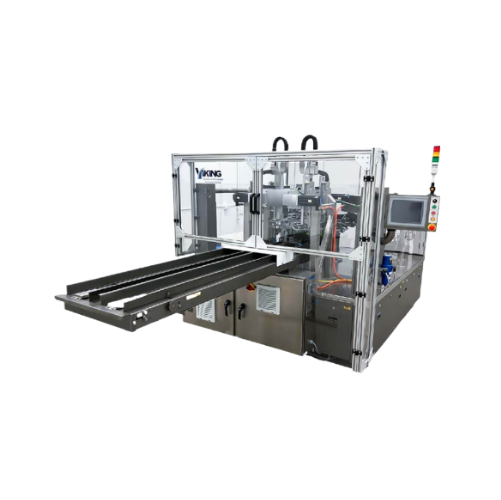
Rotary premade pouch filler and sealer
Maximize production efficiency by seamlessly filling and sealing diverse pouch sizes...
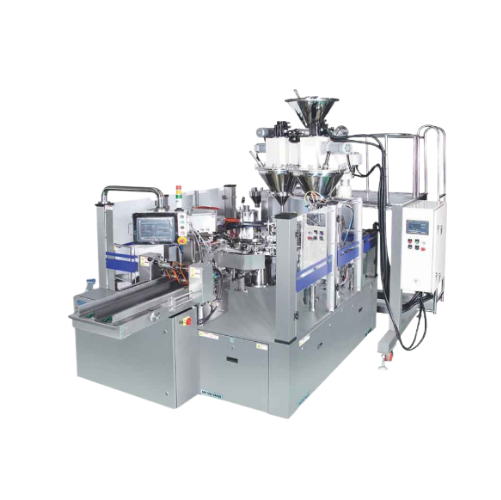
Automatic rotary filler and sealer for premade pouches
Enhance your production line efficiency with a dual-lane system th...
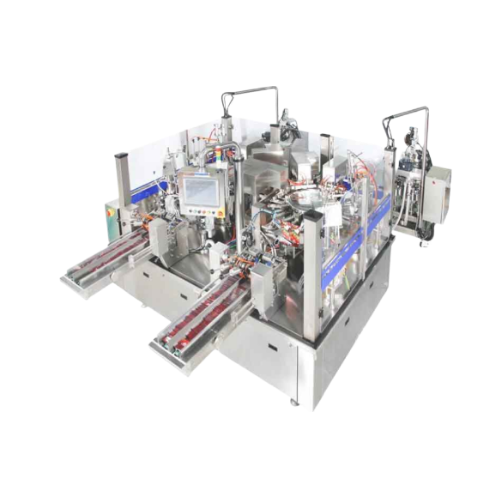
Automatic rotary premade pouch filler and sealer
Optimize your production line with high-speed pouch filling and sealing, ...
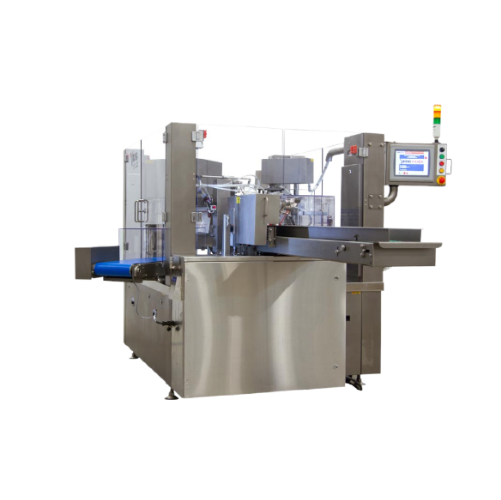
Automatic rotary premade pouch filler for various industries
Streamline your pouch packaging process with precision fill...
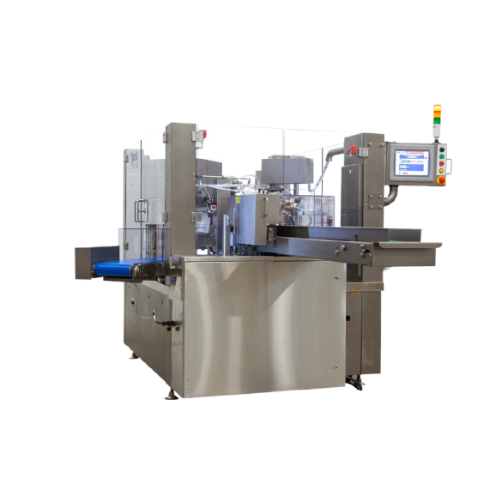
Premade pouch fill and seal solution
Effortlessly fill and seal various pouch sizes for streamlined packaging in diverse fo...
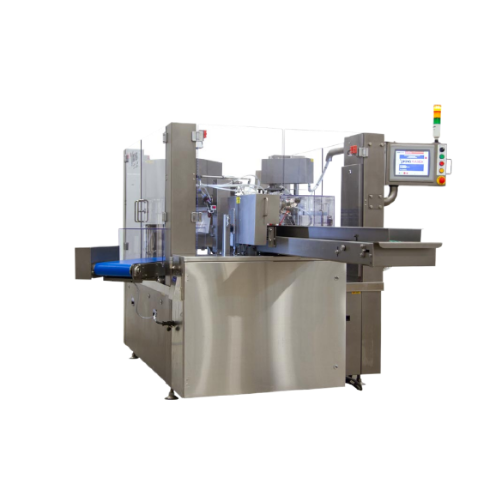
Automatic rotary premade pouch filler for food products
Enhance your packaging line with a high-speed solution designed t...
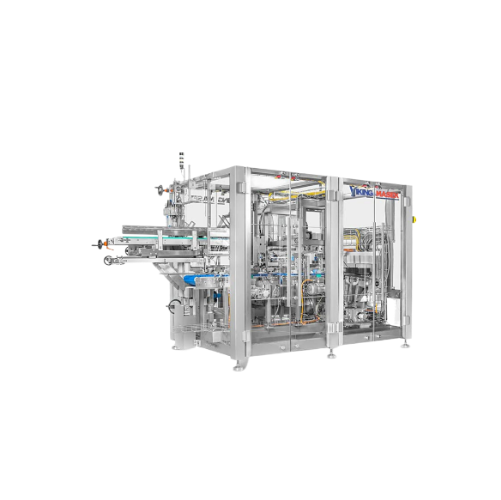
Sleeve cartoners for ready meals and salads
Optimize your packaging line with a high-speed sleeve cartoner designed to eff...
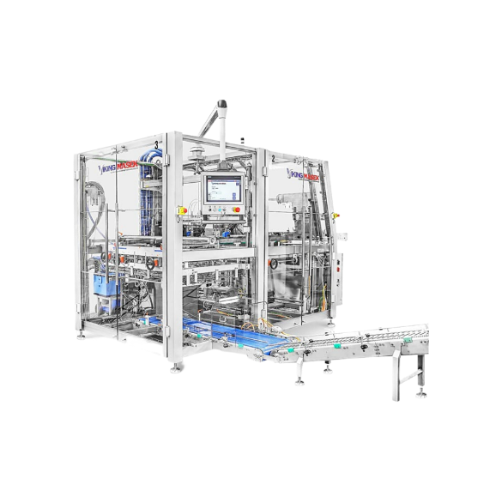
High-performance tray erector for packaging
Streamline your packaging process with a versatile tray erecting machine that ...
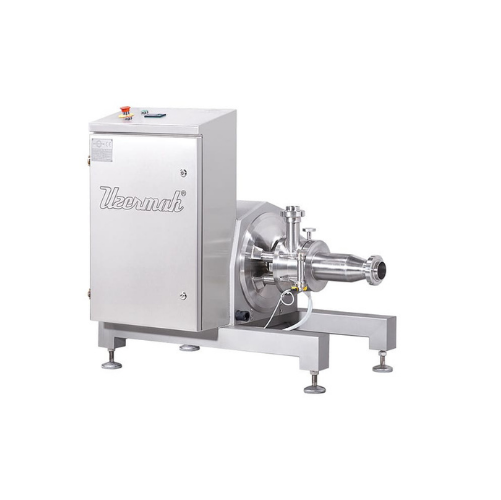
Inline mechanical homogenizer for food processing
Achieve precise particle size and uniform texture in your emulsions and...
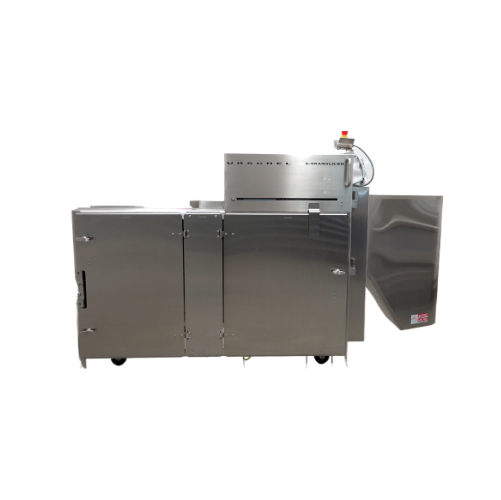
Slicer for food processing applications
Efficiently achieve precise cuts and textures for a variety of food products, enhan...
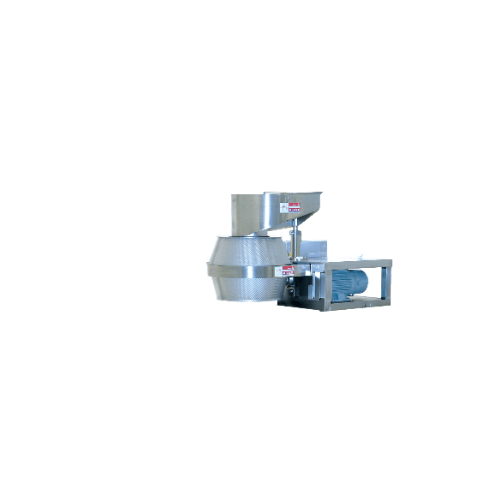
Industrial slicer for precise food cuts
Maximize your food processing efficiency with an industrial slicer that offers unpa...
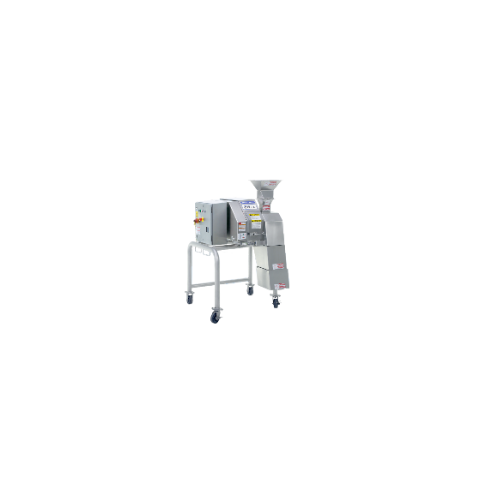
Industrial dicer for small to intermediate size ranges
Boost your production capacity with a versatile dicing solution th...
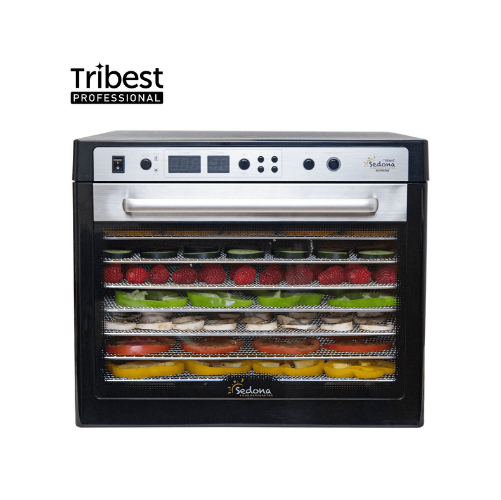
Large-capacity commercial food dehydrator
Achieve precise dehydration for a wide range of food items with unmatched consis...
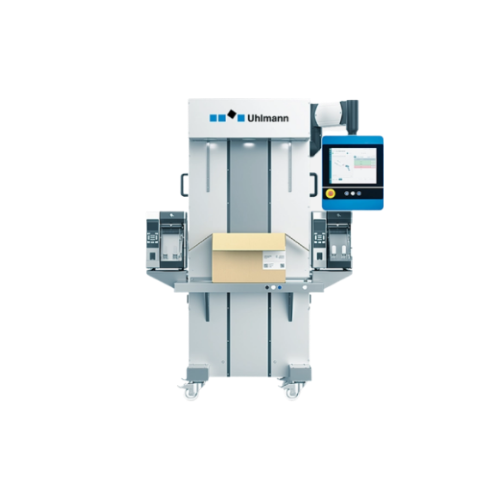
Jumbo twin gear slow masticating juicer for high-yield juice extraction
Achieve optimal nutrient retention and extended...
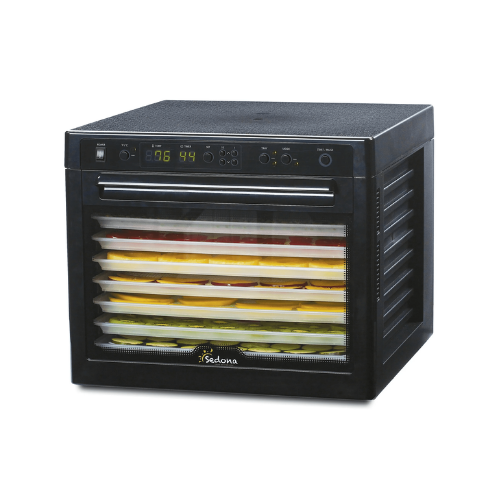
Food dehydrator with Bpa-free trays
Effortlessly retain nutrients while creating a variety of dehydrated snacks using dual ...
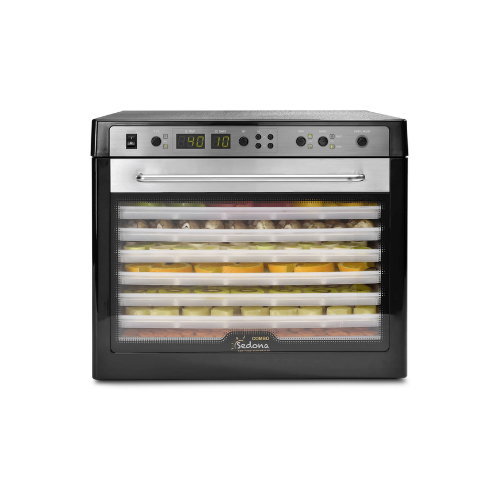
Food dehydrator with Bpa-free plastic trays
Achieve precise dehydration for fruits, vegetables, and snacks with advanced t...
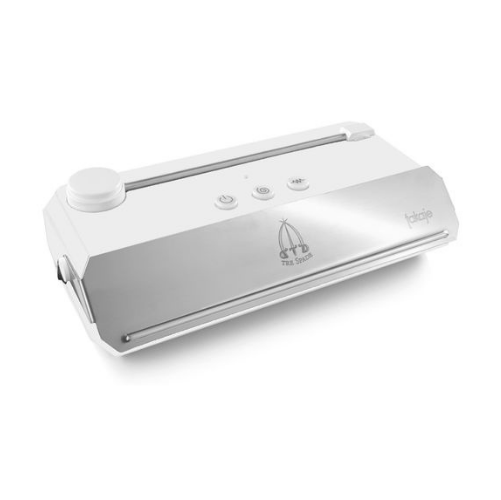
Vacuum sealing system for glass jars with metal lids
Efficiently vacuum seal glass jars with metal lids to transform pres...
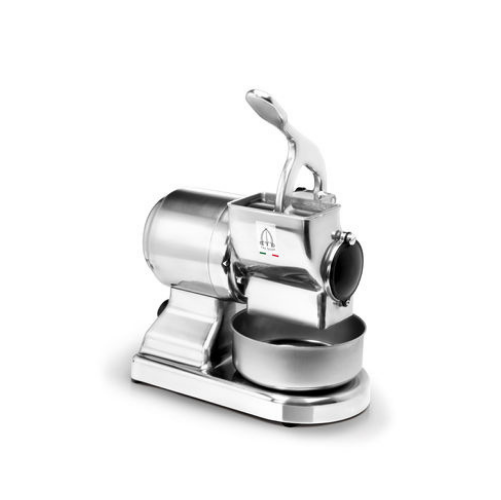
Industrial hard cheese grater
Optimize your food preparation process with high-speed grating, perfect for transforming hard ...
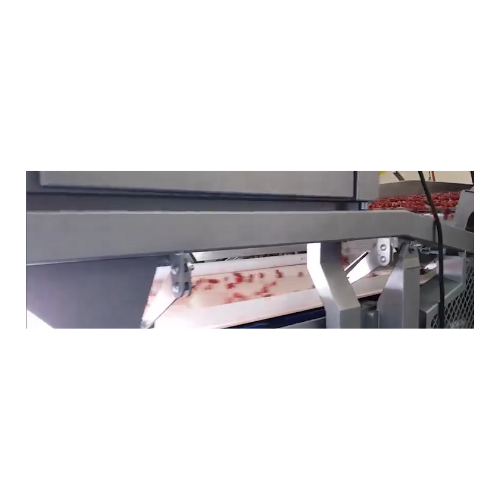
Belt sorter for potatoes and leafy vegetables
Enhance the precision and efficiency of your sorting process with a system d...
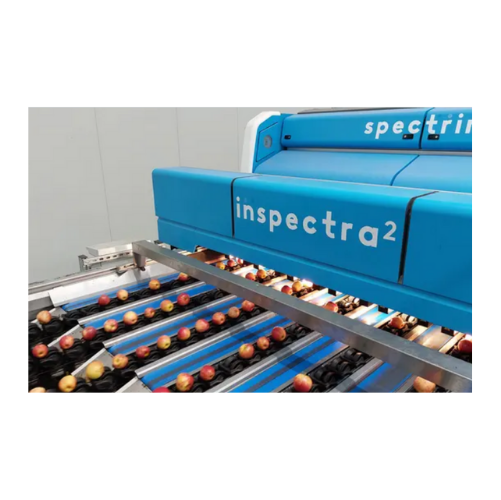
Advanced fruit sorting platform
Optimize your operations with a cutting-edge sorting solution designed to enhance product in...
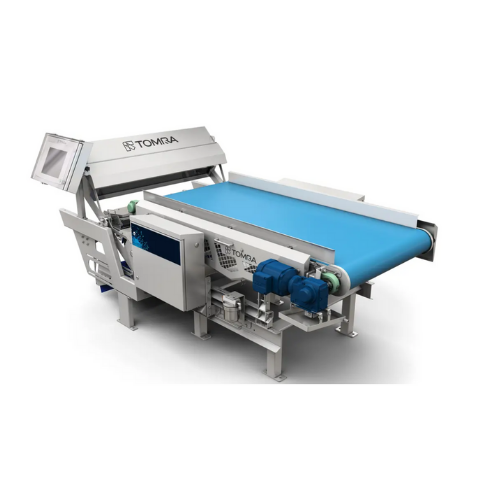
Advanced food sorter for tomatoes and peaches
Achieve precise sorting and defect removal for a variety of food products, e...
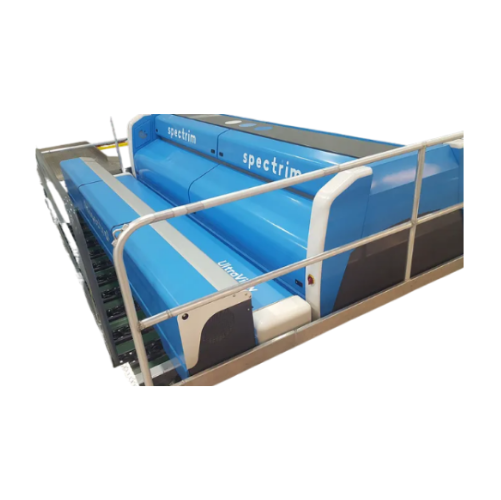
Single and dual lane sorters for fresh produce
Optimize your food processing line with precision defect detection and vers...
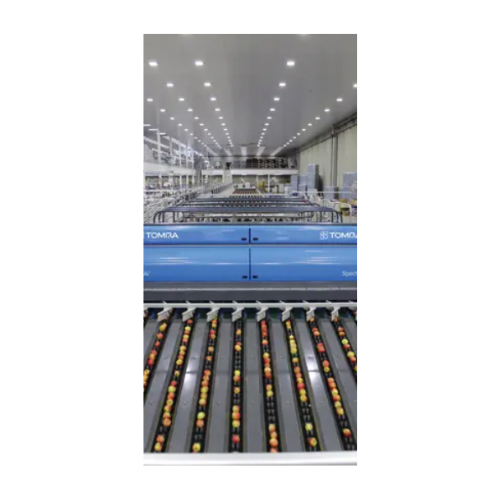
Intelligent optical fruit sorting and grading system
Enhance product quality and reduce waste with cutting-edge optical s...
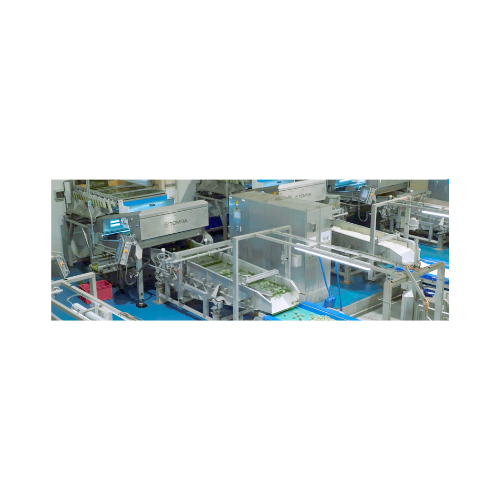
Blizzard sorter for Iqf fruits and vegetables
Optimize your frozen food production with a compact sorter that seamlessly r...
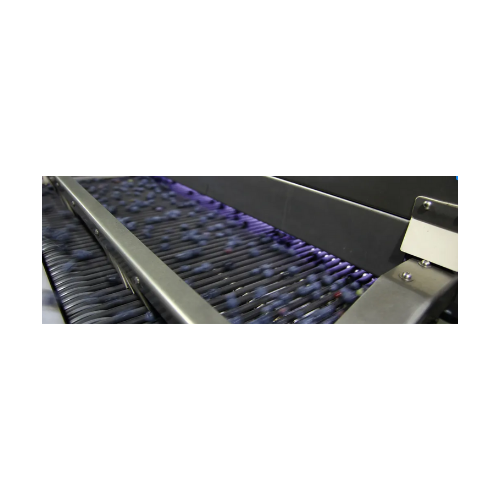
Color sorter for small fruits
Optimize your production line with a high-speed color sorting solution that enhances quality c...
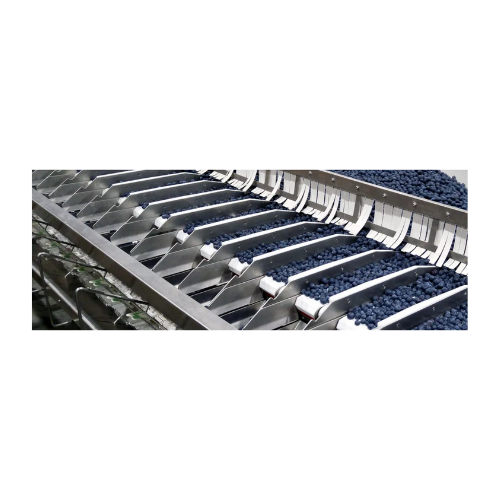
High-speed filling system for cherries and blueberries
Streamline your packaging process with a system designed for rapid...
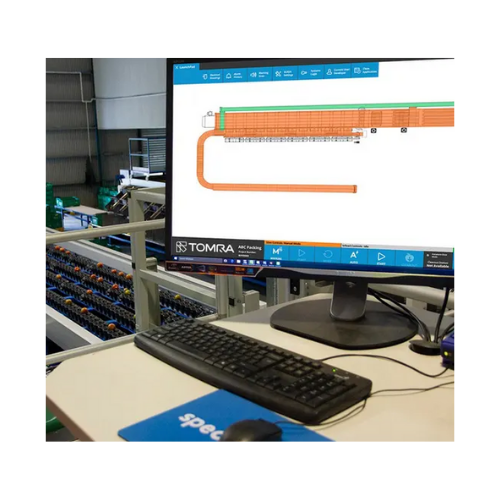
Line control and product tracking systems for post-harvesting
Optimize your production line with precision control and r...
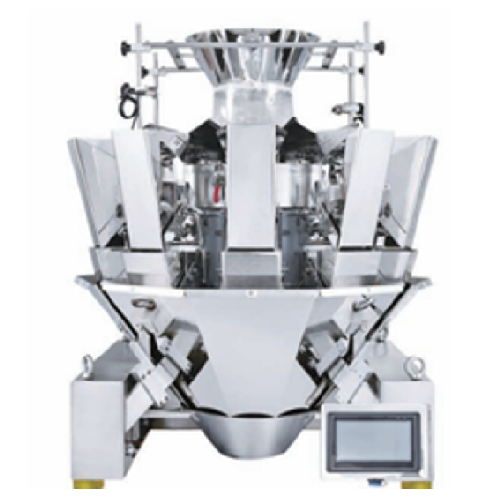
Multihead weighing system for dry free flowing products
Optimize your packaging line with precise weight measurements for...
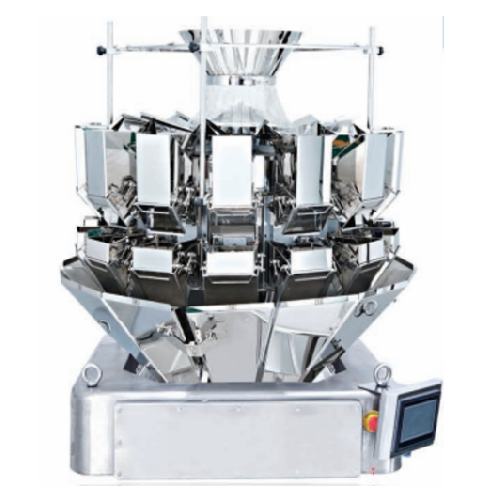
10 head multihead weigher for dry products
Optimize your weighing and packaging operations with precise and rapid handling...
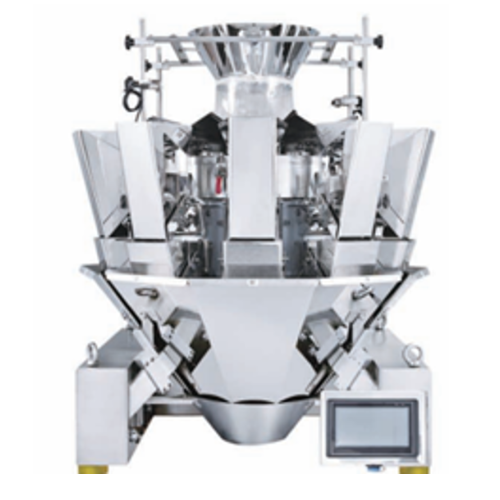
14 head multihead weigher for dry products
Achieve precise and rapid weighing for a variety of dry, free-flowing products ...
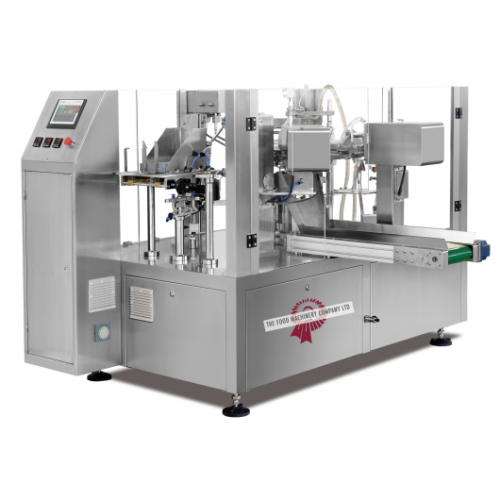
Rotary pouch filling system
Looking to efficiently manage pouch filling for diverse products? This rotary system seamlessly ...
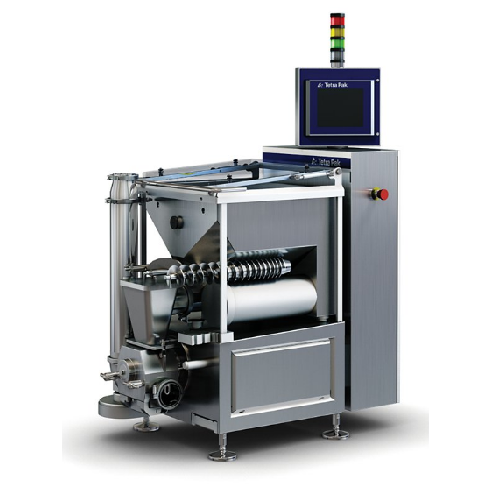
Ingredient doser for ice cream with large inclusions
Achieve precise and uniform inclusion of fruits, nuts, and candies i...
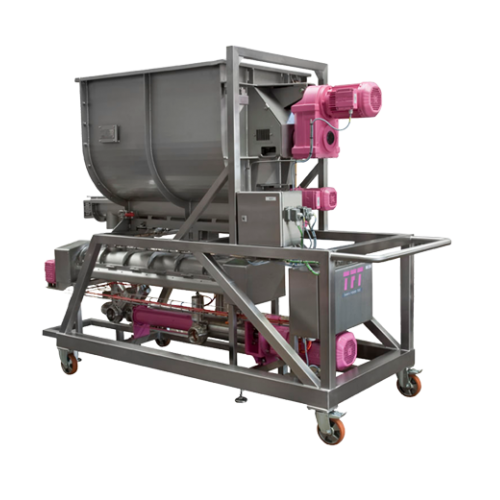
Dry ingredient blending solution for confectionery and bakery products
Achieve seamless integration of dry inclusions i...
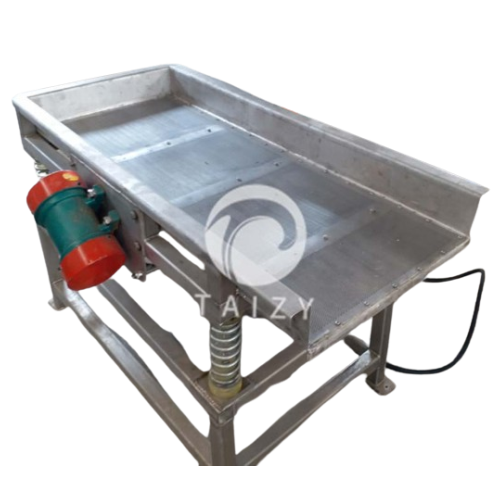
Vibration sieving machine for removing droplets or oil
Enhance your production line by efficiently removing surface liqui...
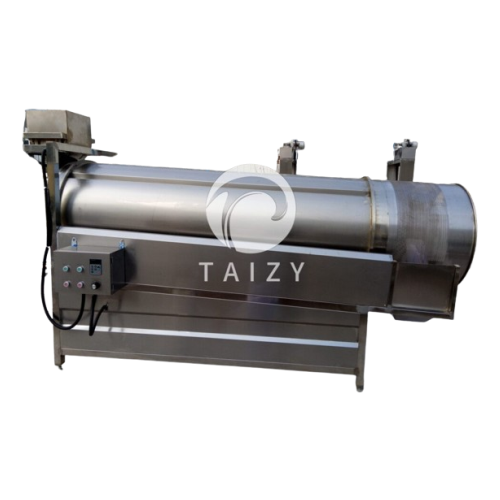
Continuous roller cleaning system for food production
Enhance your food processing efficiency with this high-speed soluti...
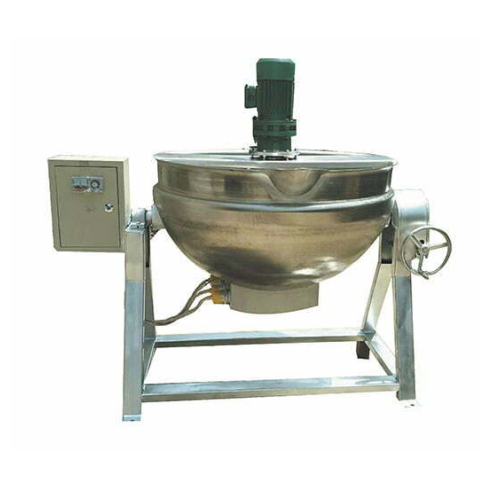
Automatic cereal bar production line
Efficiently transform diverse ingredients into consistent, high-quality cereal bars wi...
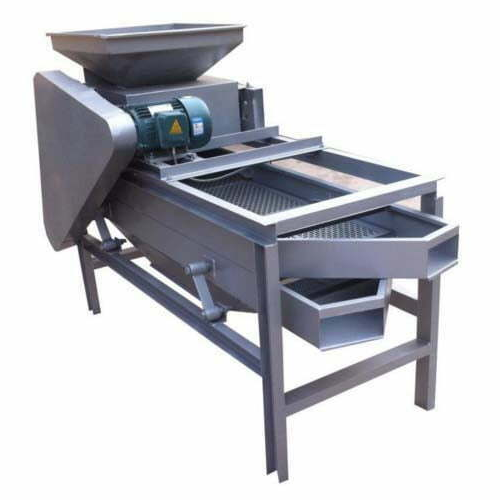
Almond sheller
Streamline your nut processing operations with a high-efficiency shelling machine designed for precision cracki...
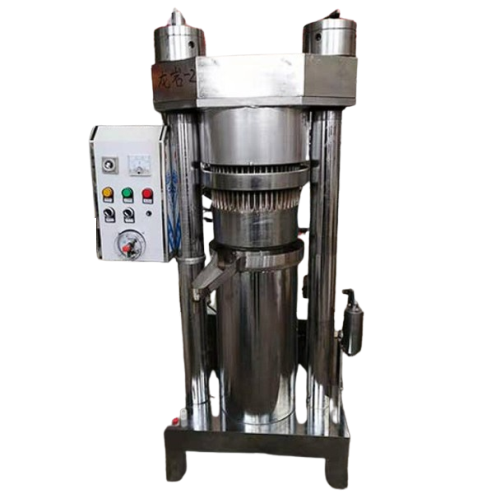
Hydraulic oil press for efficient oil extraction
Streamline your oil production with a hydraulic oil press that ensures hi...
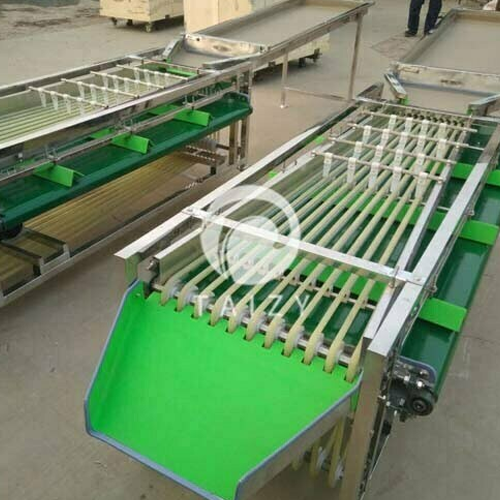
Jujube grading machine for round and oval fruits
Optimize your fruit and vegetable processing with precise size sorting, e...
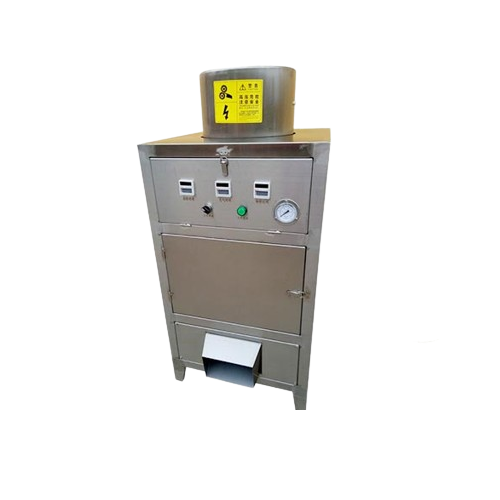
Garlic peeling equipment for industrial applications
Achieve optimal peeling efficiency with this garlic and nut peeling ...
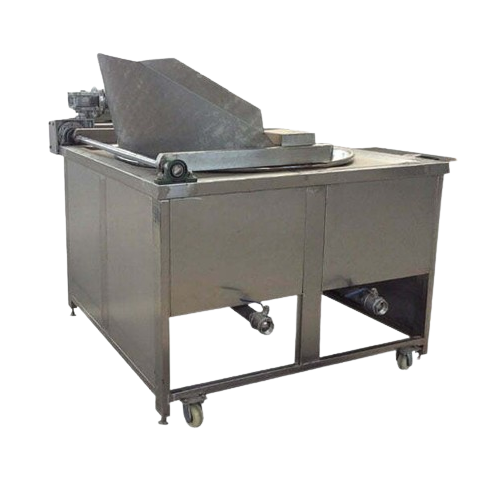
Fully automatic electric heating frying system
Streamline your frying operations with a versatile system that not only sav...
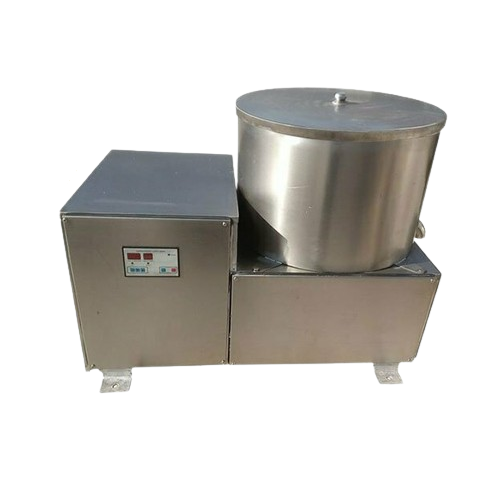
Small deoiling machine for potato chips production
Enhance your snack production line with rapid deoiling and dewatering,...
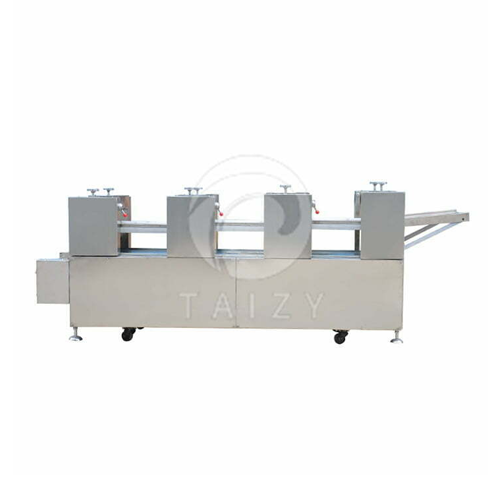
Caramel treats production line
Enhance your snack production with a comprehensive solution for crafting caramel treats, effi...
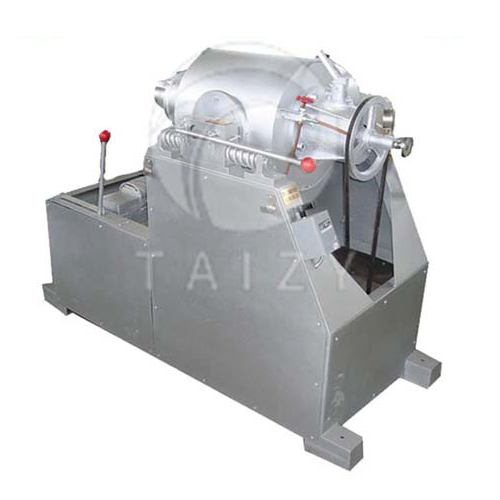
Airflow grain puffing machine
Unlock the potential of versatile snack production with precision-engineered airflow puffing t...
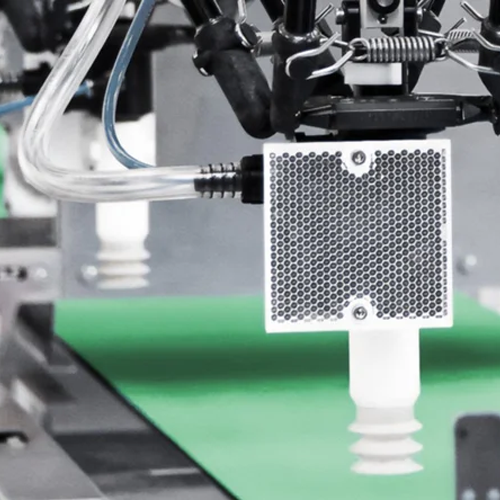
Robotic pick and place platform for food packaging
Enhance your packaging efficiency and product quality with a scalable ...
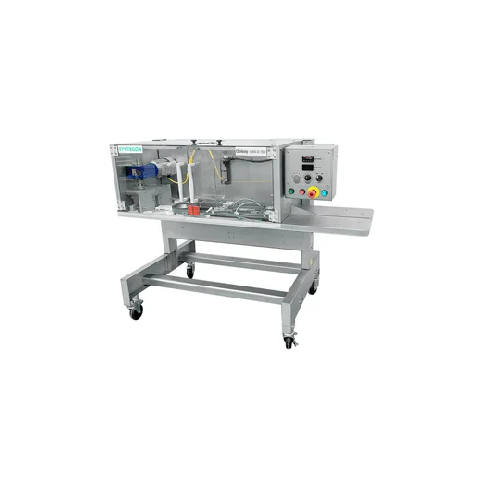
Industrial bag sealing solution for medical and food applications
Enhance your packaging line with reliable and versati...
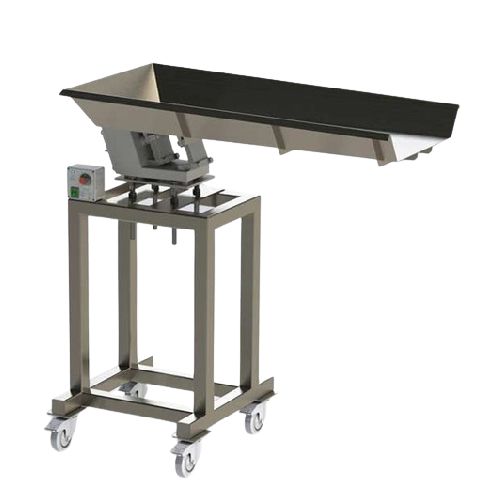
Electrostatic drum flavouring system for food industry
Enhance the consistency of your food products with precise flavour...
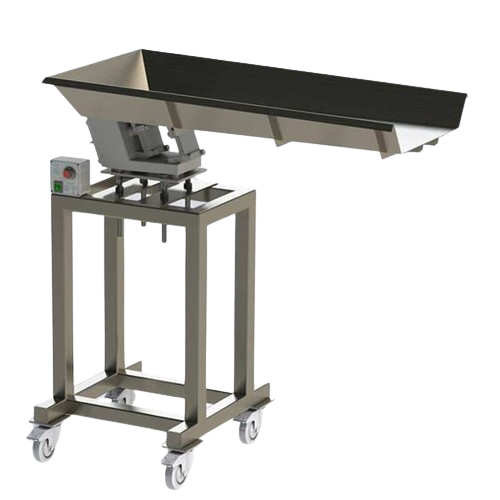
Electrostatic drum flavoring system for food processing
Enhance your snack production efficiency with a system designed t...
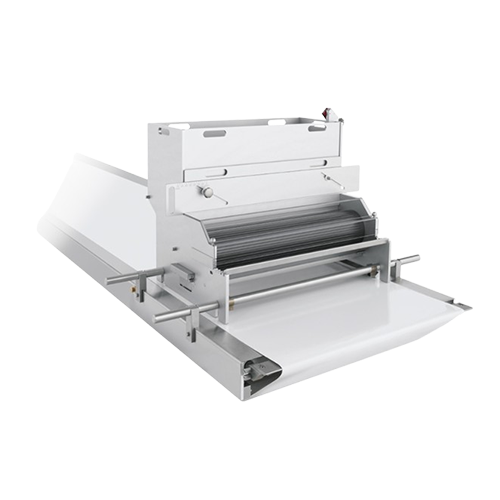
Sprinkling system for decorating confectionery products
Enhance your confectionery line with precision sprinkling systems...
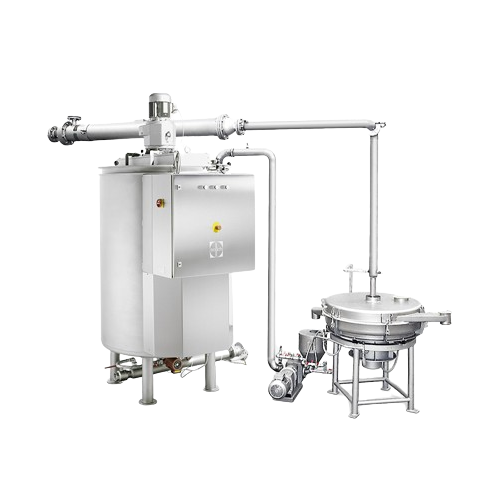
Sieving system for chocolate processing
Ensure product purity and consistency by seamlessly removing unwanted particles fro...
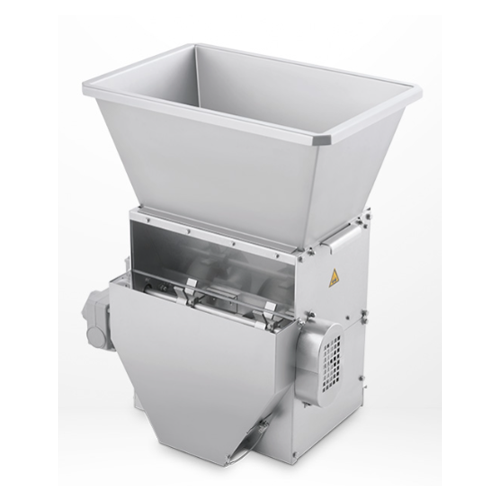
Precise metering system for dry confectionery ingredients
Achieve precise dosing of granular and dry ingredients like nu...
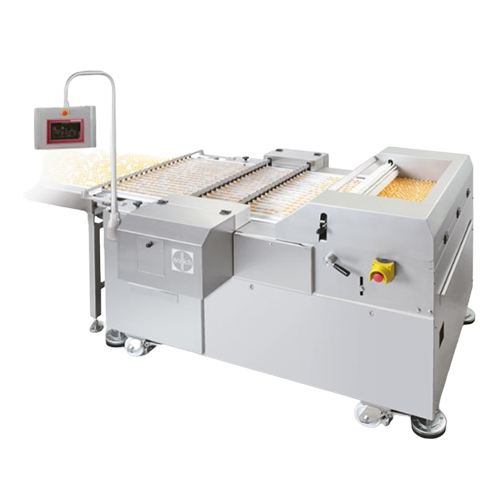
Automatic feeder for enrobing solid articles
Ensure seamless feeding for large-scale enrobing operations, enabling efficie...
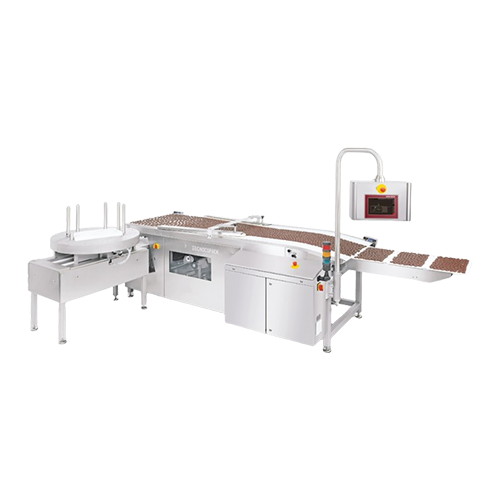
Praline and bar product take-off system
Streamline your confectionery production with a versatile take-off system designed ...
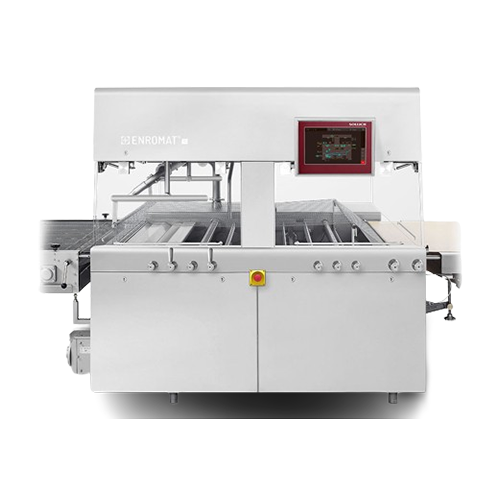
Industrial enrobing solution for quality coatings
Achieve high-quality coatings for pralines, bars, and pastries with a c...
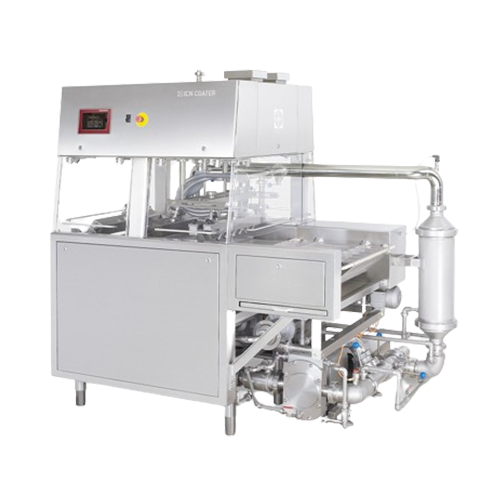
Ice cream coating system for enrobing applications
Achieve seamless chocolate and nut coatings on ice cream bars and conf...
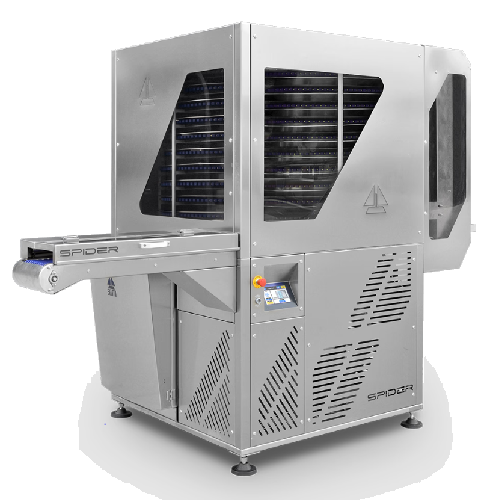
Vertical tunnel for cooling and moulding chocolate
Efficiently manage chocolate temperature control and molding precision...
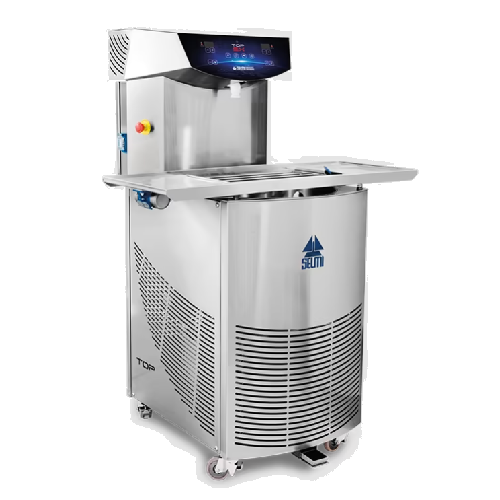
Professional chocolate tempering system
Enhance your chocolate production with a versatile tempering system that optimizes ...
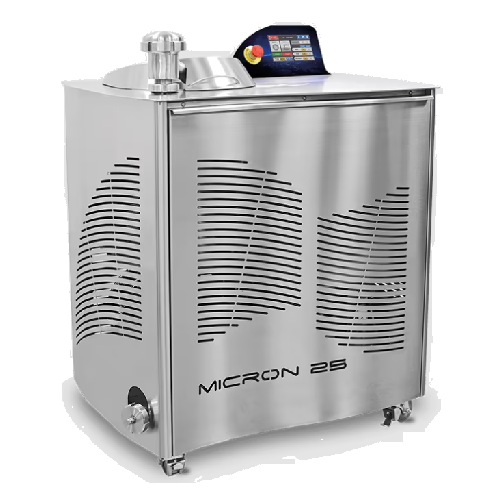
Refiner for spreadable cream and chocolate
Achieve optimal texture and consistency for your spreadable creams and chocolat...
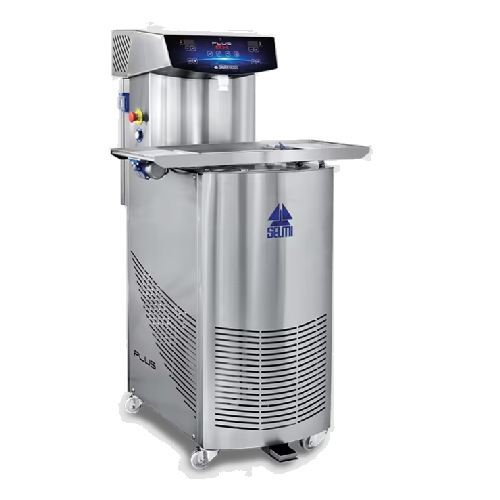
Professional chocolate tempering system for artisan chocolatiers
Achieve precise chocolate tempering with quick changeov...
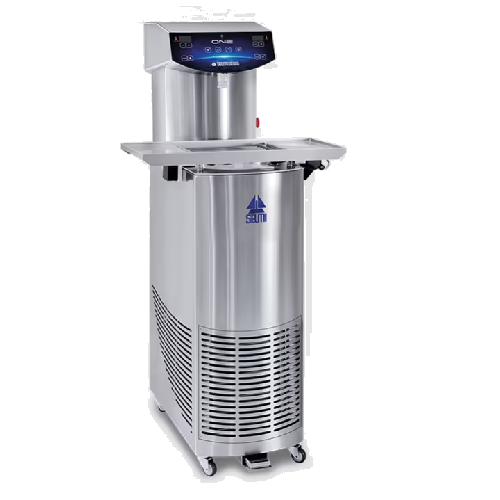
Chocolate tempering solution for small scale production
Efficiently temper chocolate for diverse confectionery creations ...
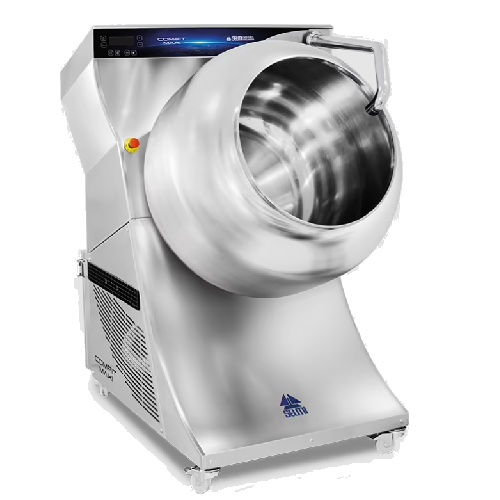
Chocolate and sugar coating system
Achieve consistent, high-quality coating for nuts, dried fruits, and confectionery with ...
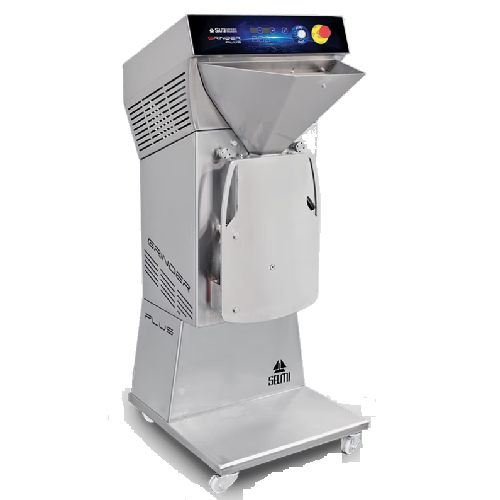
Industrial cocoa nib grinder for bean to bar production
Streamline your chocolate production with this versatile grinder,...

Professional chocolate tempering solution for large workshops
Enhance your chocolate production efficiency with a machin...
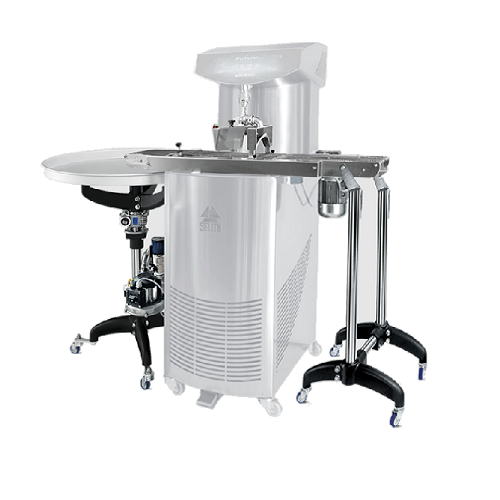
Chocolate truffle enrobing system
Enhance your chocolate production with a machine that delivers precision enrobing for tru...
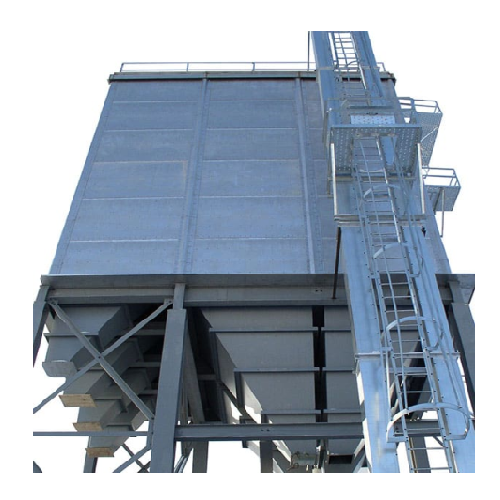
Modular bulk storage bins for efficient material handling
Maximize your storage efficiency with bolt-together solutions ...
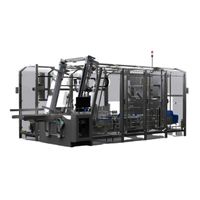
Side Load Case Packer For Packaged Food
Accuracy is a primary concern for case-packing pre-packaged foods such as milk or p...
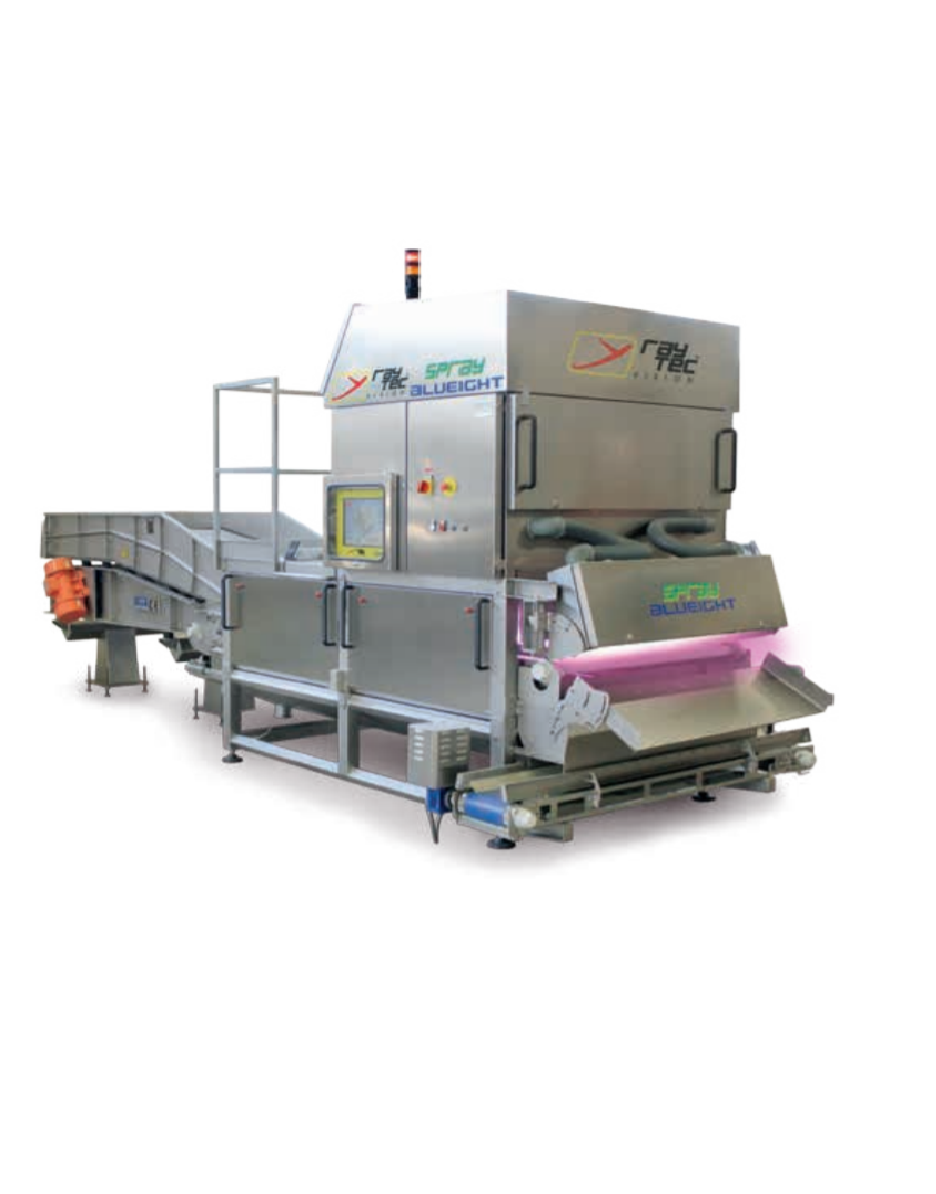
Optical sorter for fruit and vegetables
In fresh vegetable and fruit production, product quality is key to ensure a longer ...
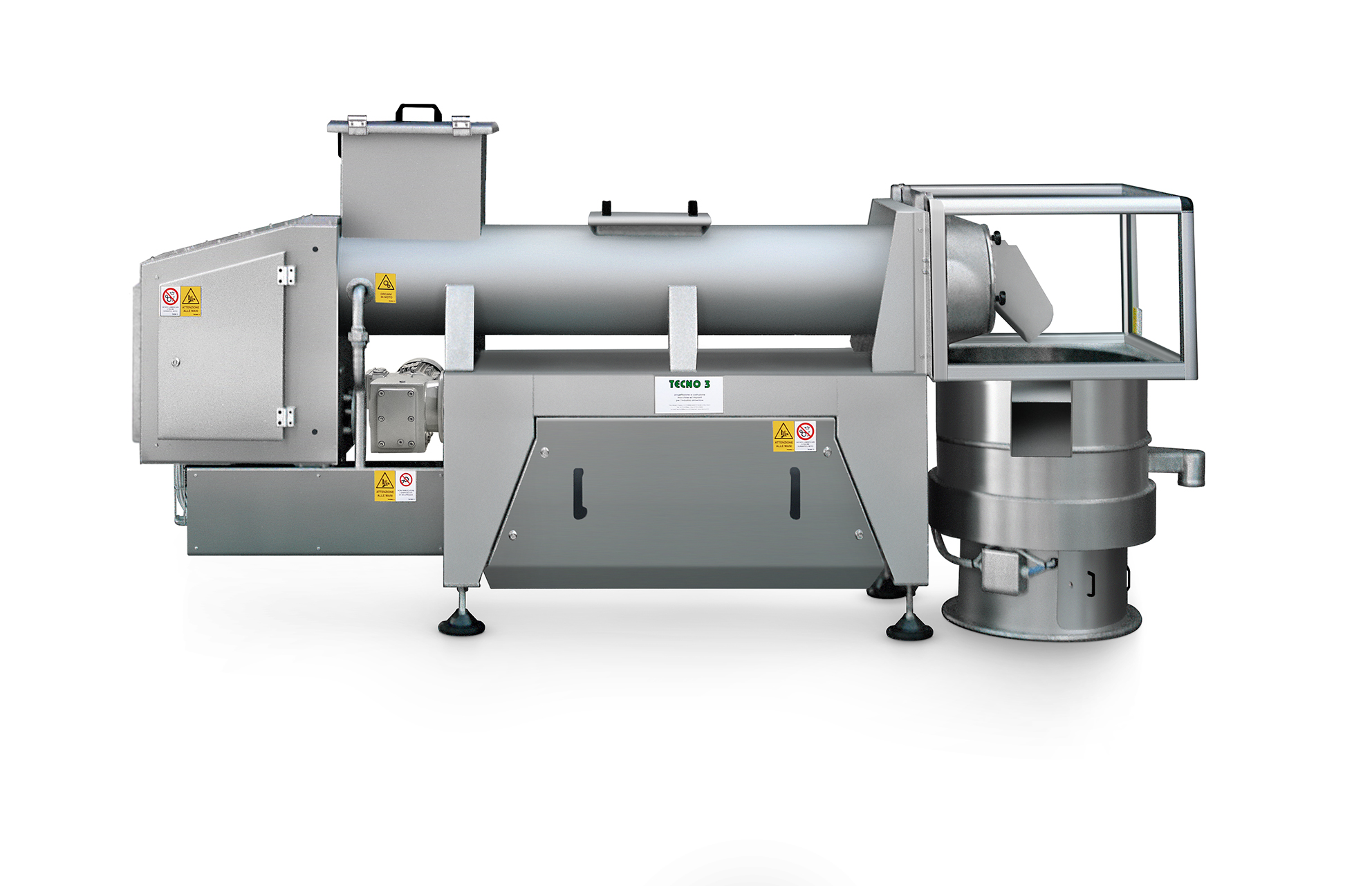
Industrial melter for chocolate rework
Wastage or out-of-specification products are not uncommon in the chocolate manufactu...
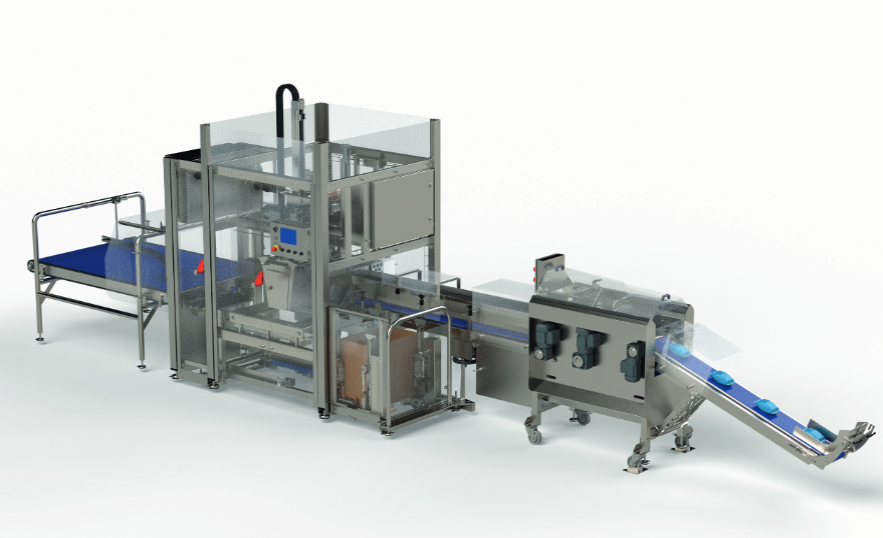
Semi-automatic case packer for chip bags
In small to medium scale production units, packing items manually can consume a lo...
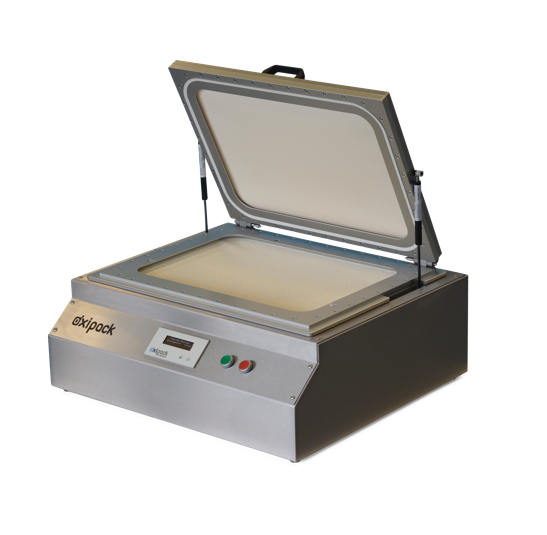
Leak tester for pouches and MAP packaging
Nuts are packed with unsaturated fatty acids, which means they are prone to oxid...
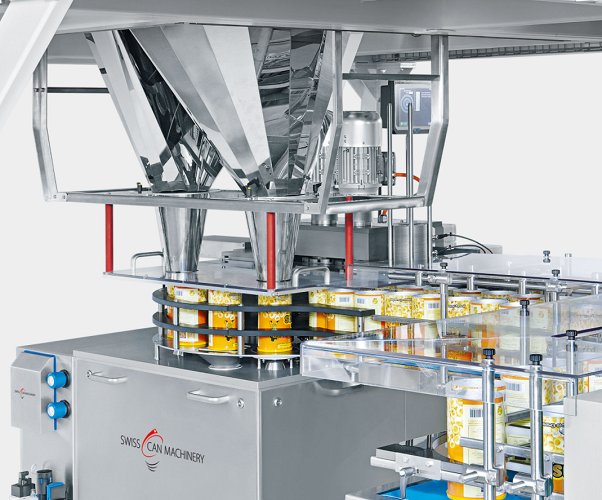
Filling and weight checking machine for food cans
Making sure the right quantity of product is in the packaging can be a ...
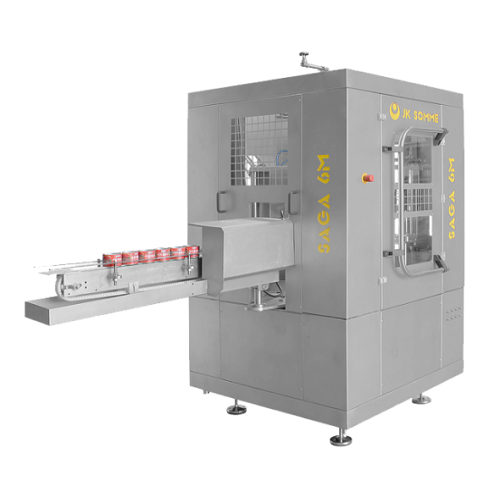
High speed can seamer
Tin plate thickness for cans has gradually reduced over the years, which makes it a hassle to use new c...
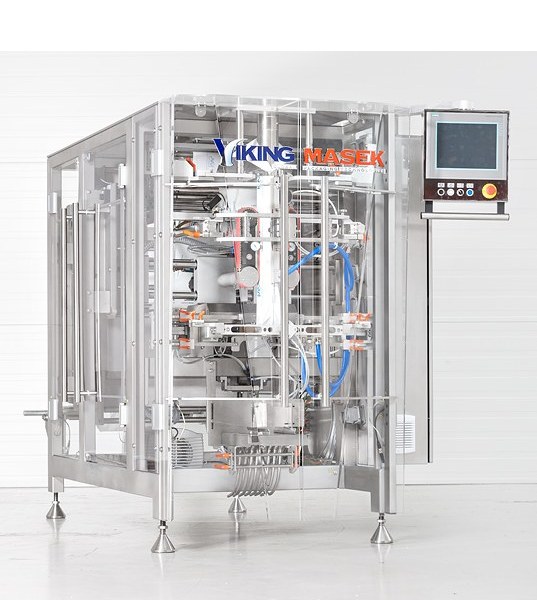
Bagger with mechanical driven jaw actuation
If you want to pack into unique bag styles like Quad-seal and Doypack, but you...
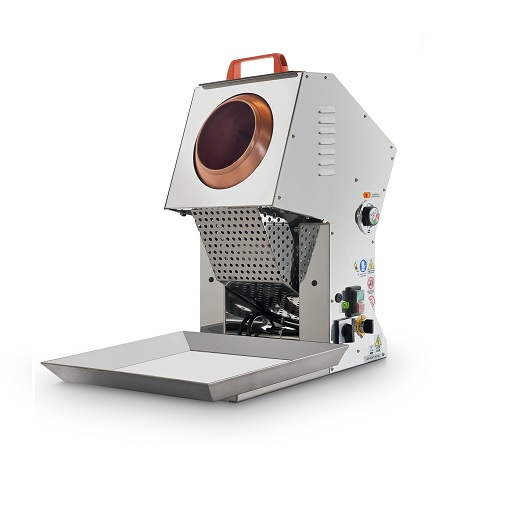
Mini sugar coating machine
The coating of grains or nuts with sugar is a popular process in the manufacture of many bakery p...
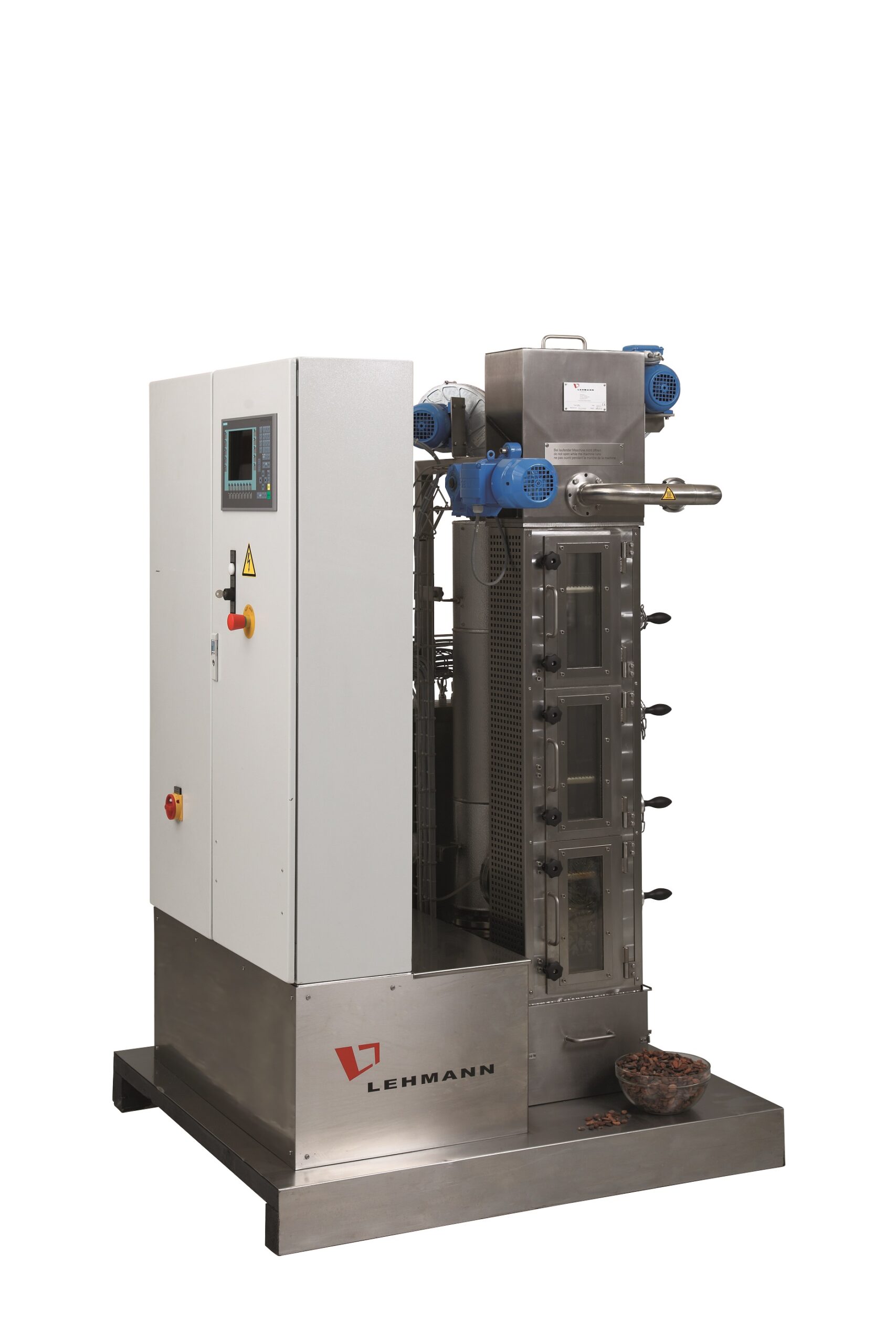
Continuous cocoa bean roasting line
When you are processing chocolate, after the conditioning and fermenting of cocoa, the ...
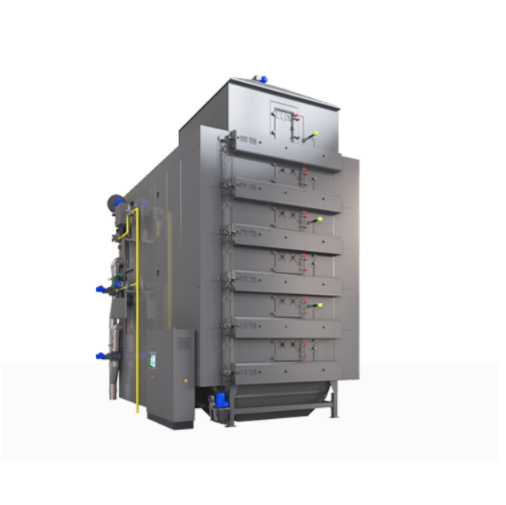
Recirculating batch dryer
Drying can be the most energy and time-consuming process in the food industry. This can have an ef...
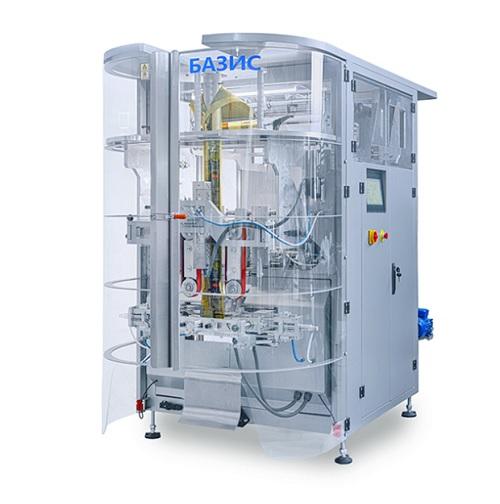
Pillow bag vertical packing machine
When packaging products such as seeds, cereal, snacks, candies, nuts, tea, dried fruits...

Infrared rotating drum dryer
Traditional drying methods are often slow and can actively damage ingredients, reducing the fin...
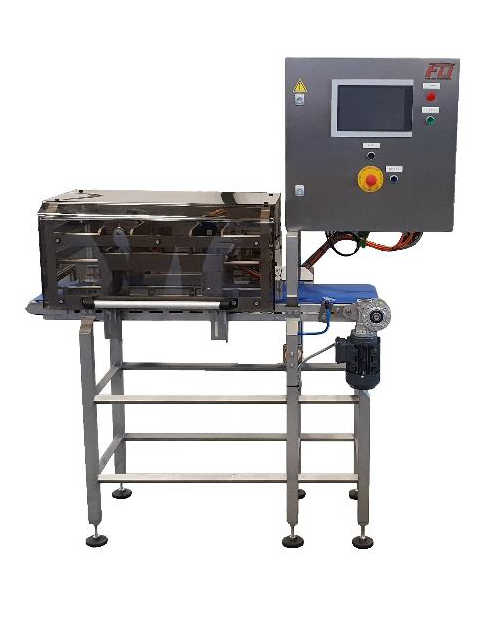
Entry-level high volume package seal tester
Manufactured food products need to be packed in gas-filled pouches to ensure t...

Small scale cocoa beans processing machine
For the highest quality chocolate production, complete control of the entire pr...
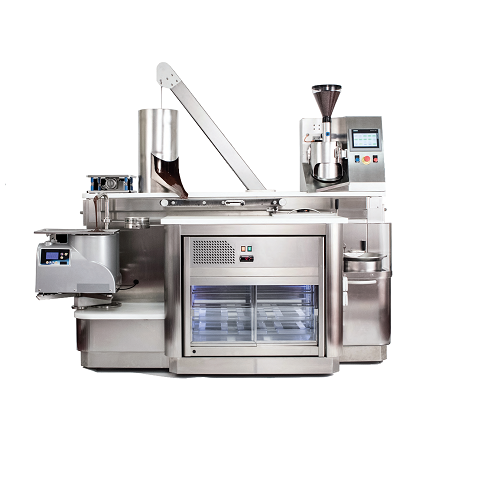
Entry level bean-to-bar machine
The production of high-quality chocolate from the bean can often be out of the reach of smal...
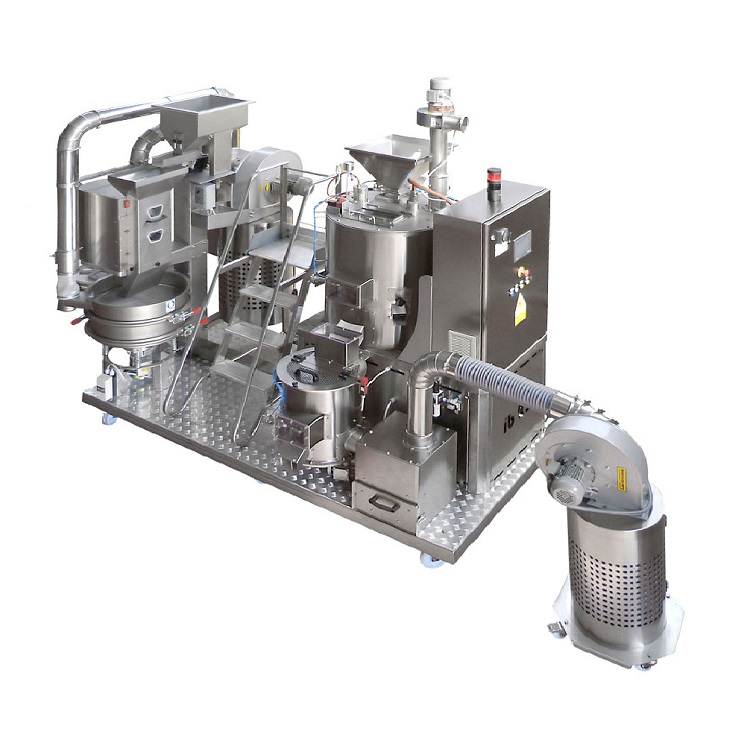
R&D roaster for cocoa beans
When designing a new chocolate line or experimenting with new ingredients for existing processes...
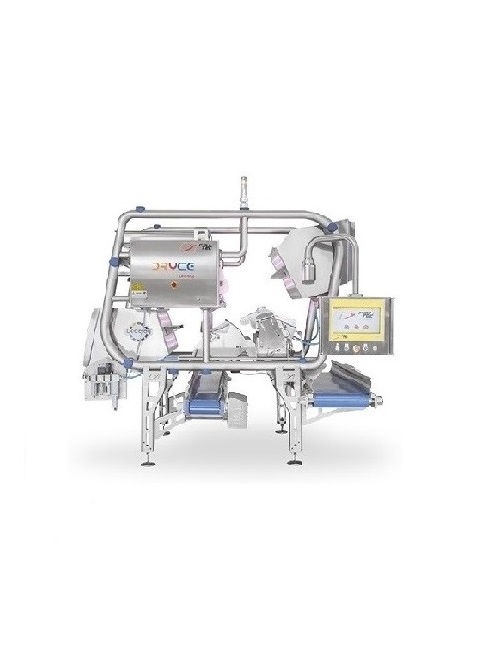
Optical sorter for dried and frozen fruits
Dried fruits, frozen fruits, frozen vegetables and nuts present a challenge for...
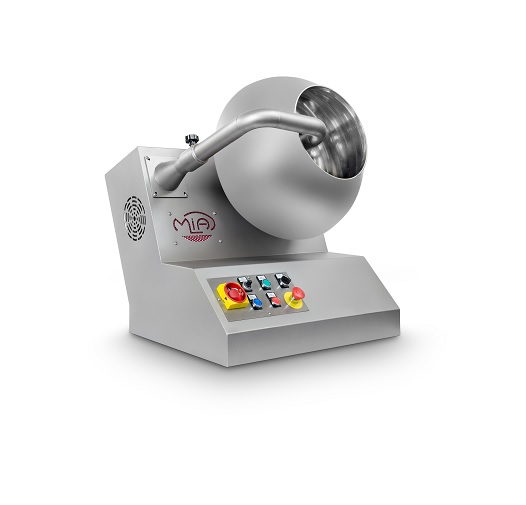
Small scale dragee coating machine
Coated dragée products such as Jordan Almonds or hard-coated candies are very popular, b...

Easy to use food processor for gastronomy sauces and pastes
For the development and production of high quality gastronom...
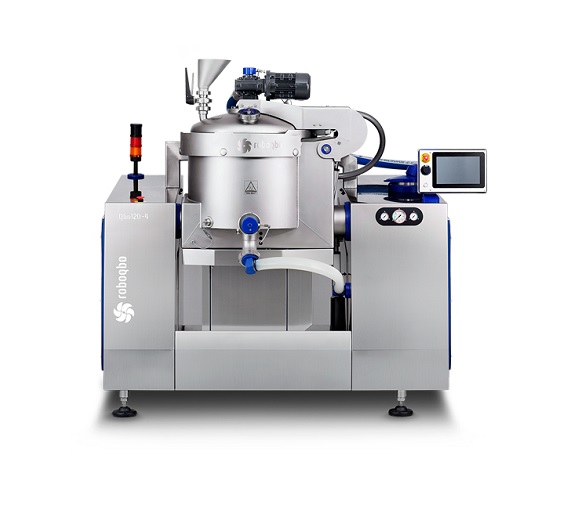
Food processor for making fruit jams for pastries
In a bakery environment fruit jams are often used for the decoration or...
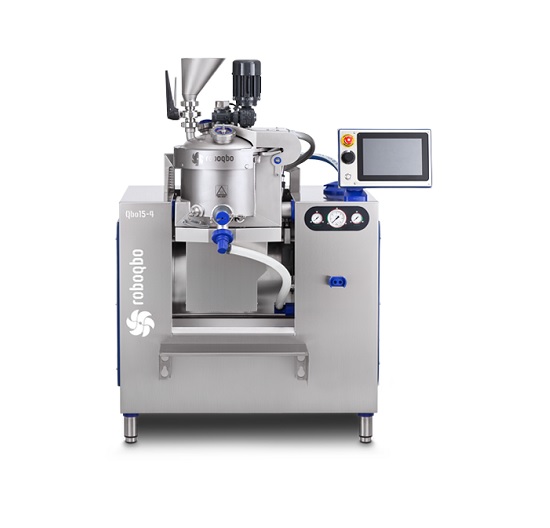
Multi-functional food processor for a high sugar percentage pastes production
For the development and production of hi...
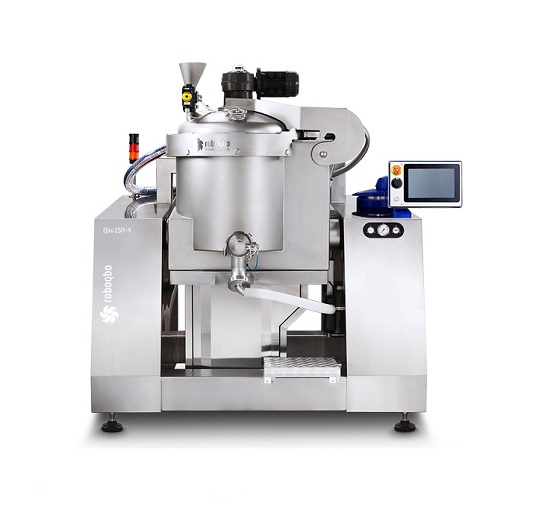
Vacuum cooker for concentrating sauces and purees
When producing high quality prepared food, concentrating products for s...
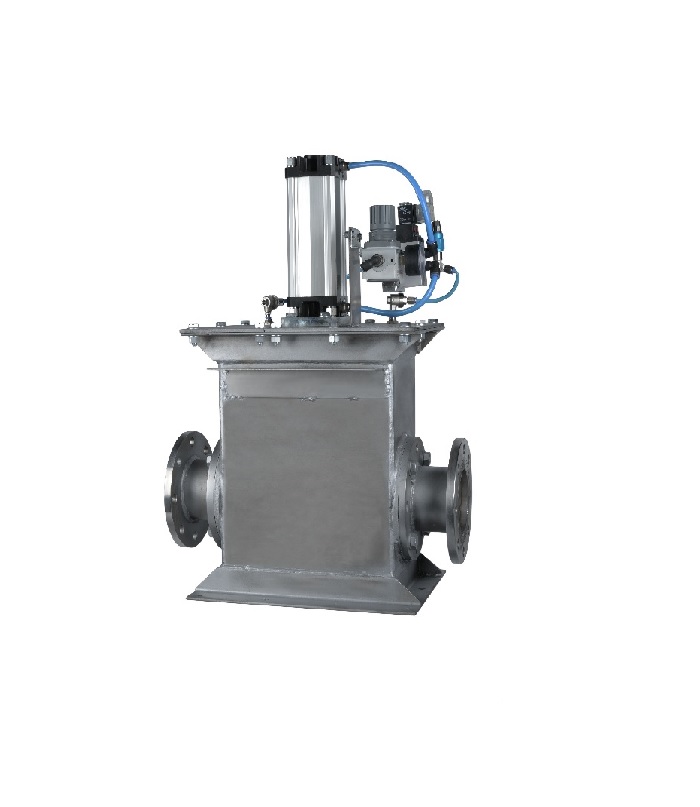
2-way diverter valves for pneumatic conveying
Products conveyed through pneumatic conveyor lines often need to be diverted...
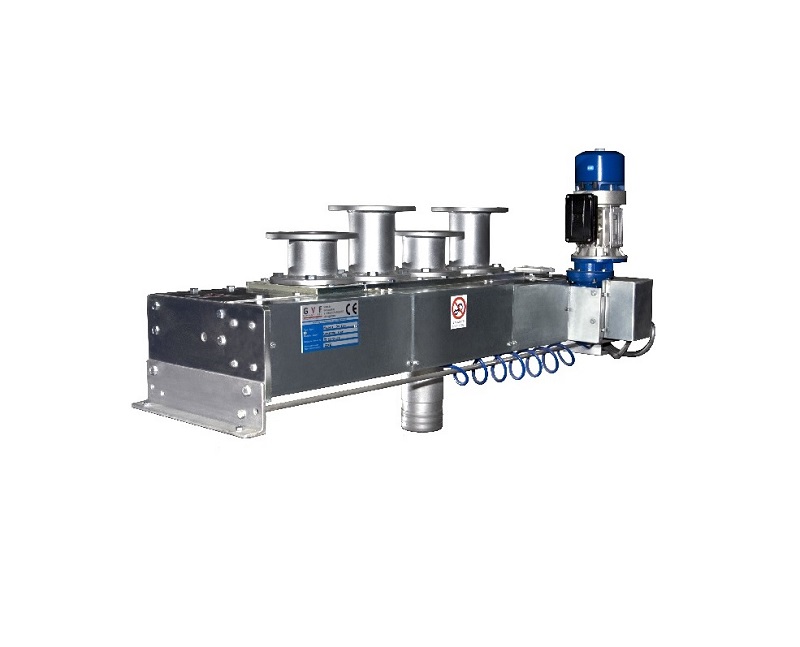
Multi-way diverter valve for pneumatic conveying
Products conveyed through pneumatic conveyor lines often need to be diver...
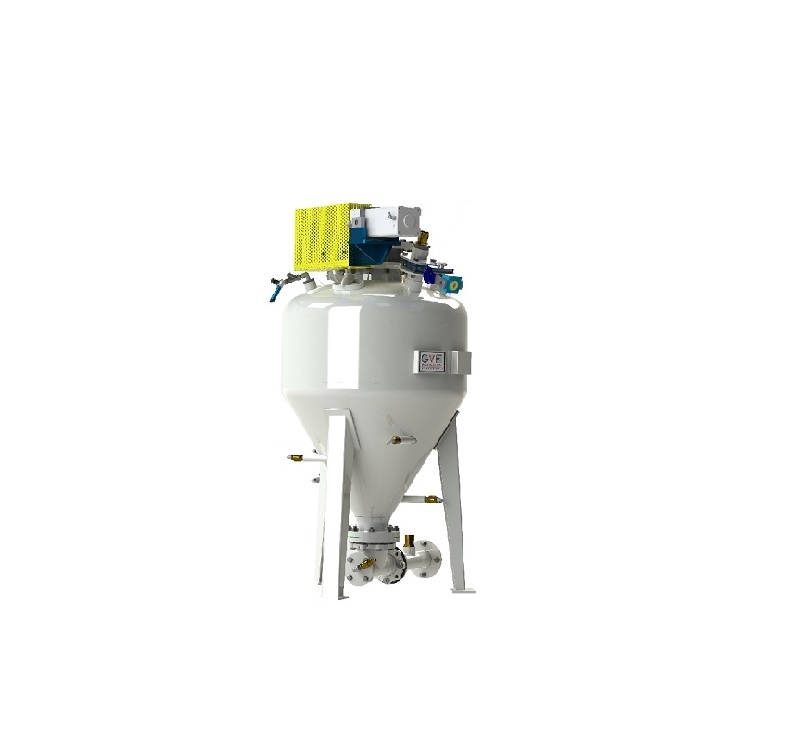
Dense phase conveyor for normal wearing materials
Dense phase pneumatic conveying is used for powders, granules, and grai...
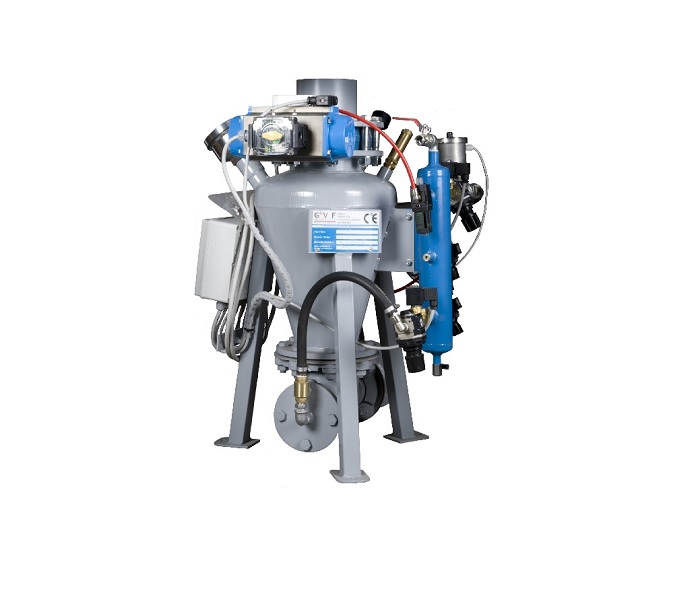
Dense phase conveyor for powders and granules
Some manufacturing and filling operations require a smaller pneumatic transp...
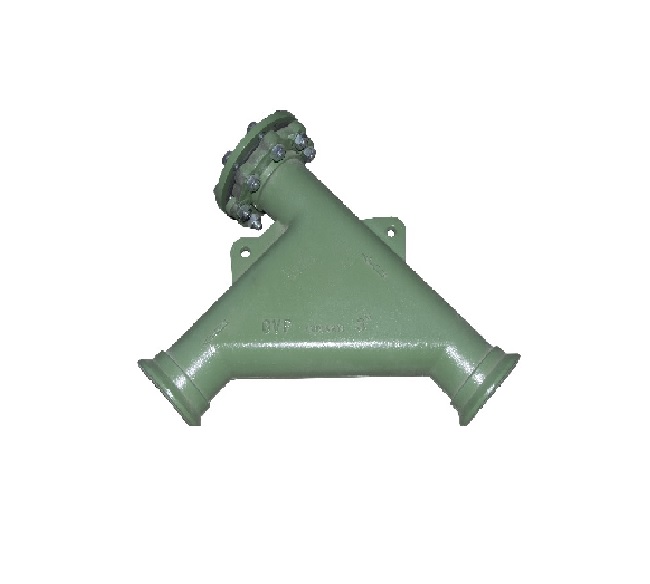
Wear resistant bends for pneumatic conveying
Bends in pneumatic conveyor lines cause load loss leading to lower flow rates...
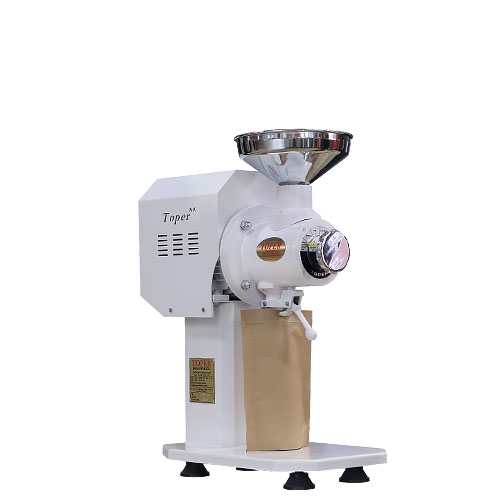
Shop coffee bean grinder
Do you want to grind your beans on-site at your coffee shop, but are you limited for space? Bench-to...
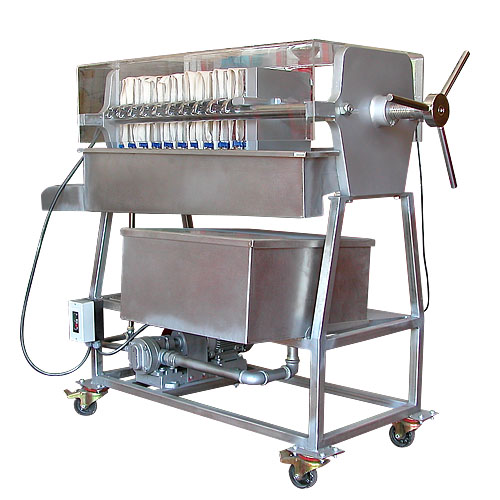
Small batch filter press for oil seeds
Getting a high-quality oil filtration can be a challenging task, with a filtration ...
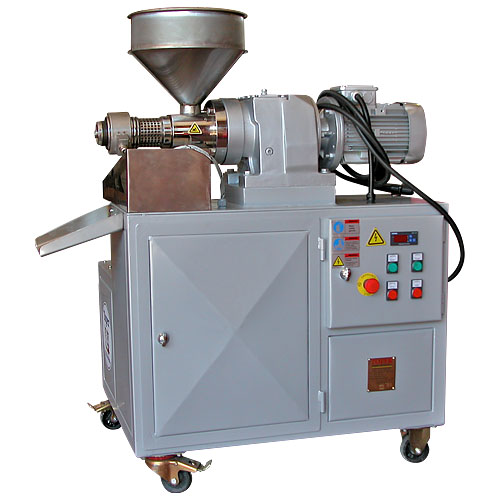
Cold oil press for seeds
With a cold oil press, you can optimize the process of extracting oil from a wide variety of oil see...
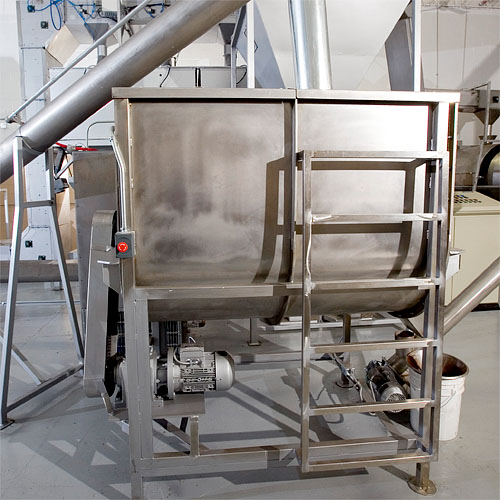
Basic mixer for granular foods
Straightforward blending solution for mixtures of beans, nuts, berries & powdered foods, ...
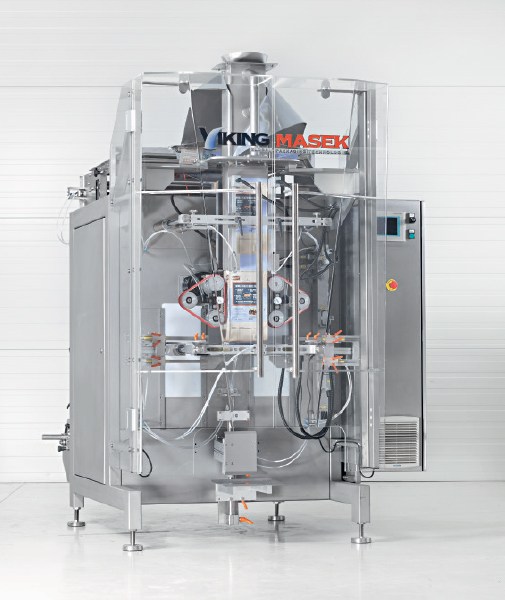
Continuous vertical bagger
Want a machine to pack unique bag styles such as quad-seal and Doy-pack bags at incredible speeds...
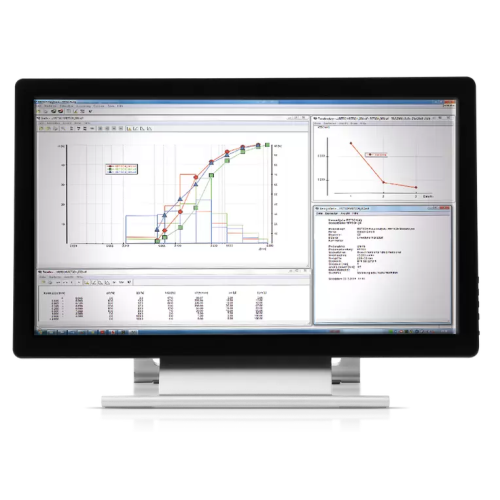
Sieve analysis software for automated evaluation
Streamline your sieving processes with automated data evaluation and prec...
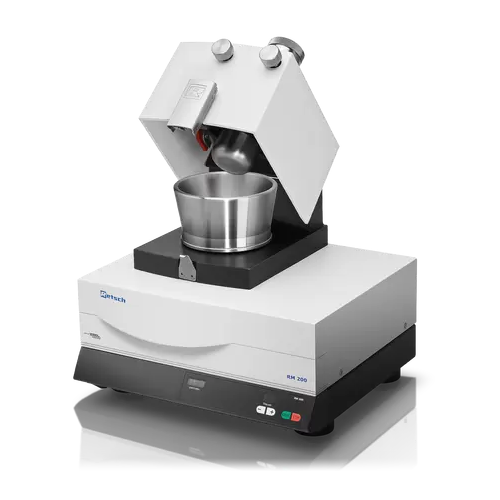
Mortar grinder for reproducible sample preparation
Achieve precise and consistent material preparation with this mortar g...
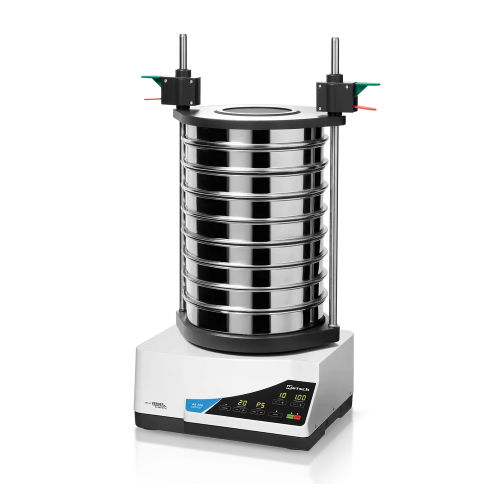
Electromagnetic sieve shaker for quality control
Achieve precise particle size distribution with this advanced electromagn...
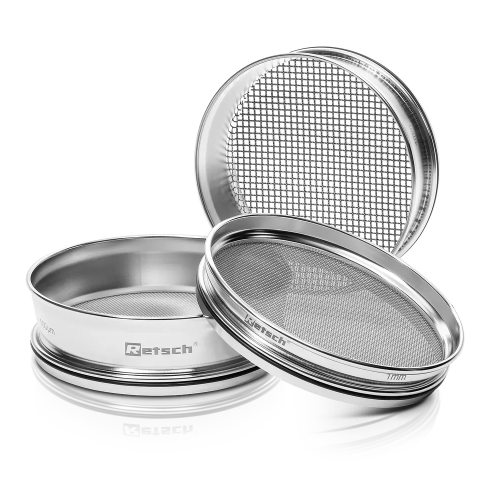
Mesh sieves for laboratory particle size analysis
Ensure precise particle size control for a wide range of materials with...
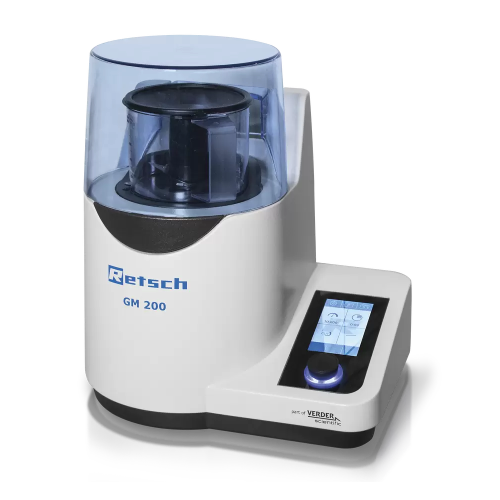
Knife mill for food and feed sample grinding and homogenization
Achieve consistent texture and precise size reduction of...
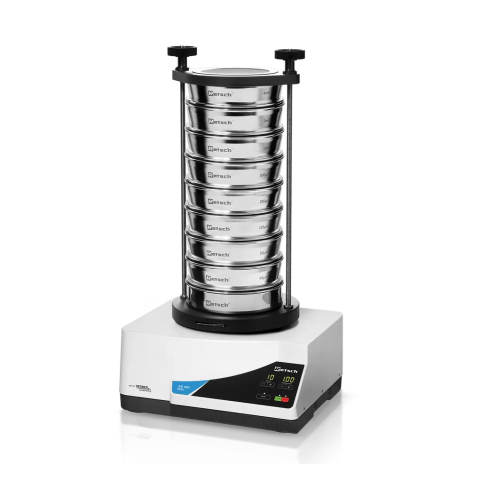
Vibratory sieve shaker
Enhance your quality control processes with this versatile sieve shaker, designed to efficiently separ...
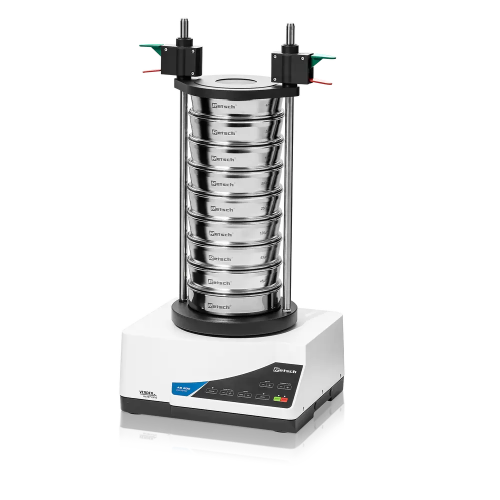
Vibratory sieve shaker for particle size determination
Achieve precise particle size analysis with rapid, reproducible re...
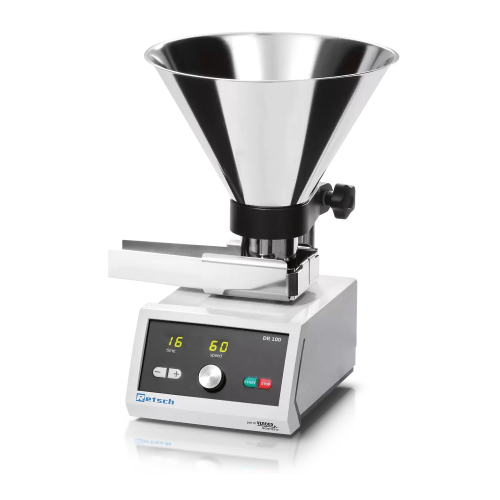
Vibratory feeder for bulk materials and fine powders
Ensure consistent material flow and precise feeding for optimized pr...
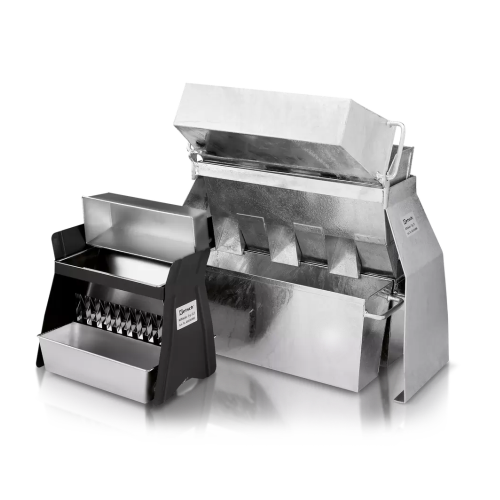
Sample divider for on-site reduction of bulk materials
Ensure consistent sample analysis with precise on-site material di...
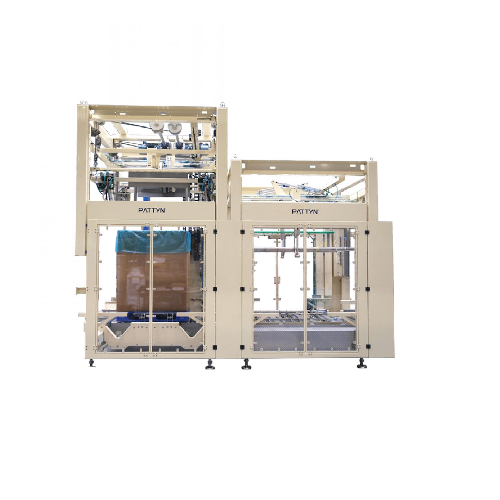
Industrial Xl bag sealer for large pallet containers
Eliminate manual handling and ensure perfect seals for bulk packagin...
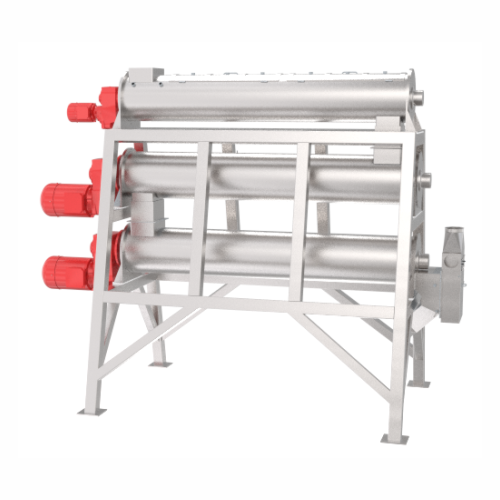
Sesame peeling system
Enhance your seed processing with a sesame peeling system that reduces water usage and eliminates chemi...
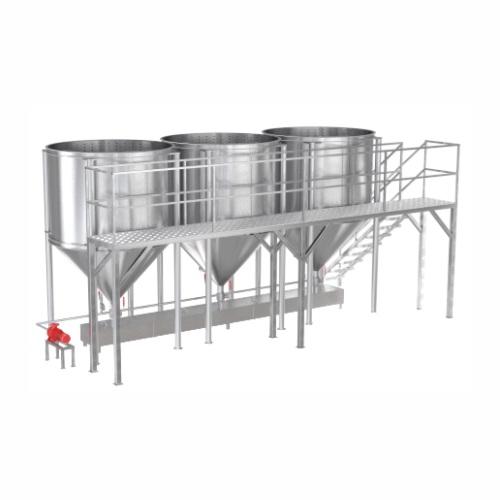
Sesame seed washing system
Eliminate the bitterness and impurities from sesame seeds efficiently, setting the stage for high...
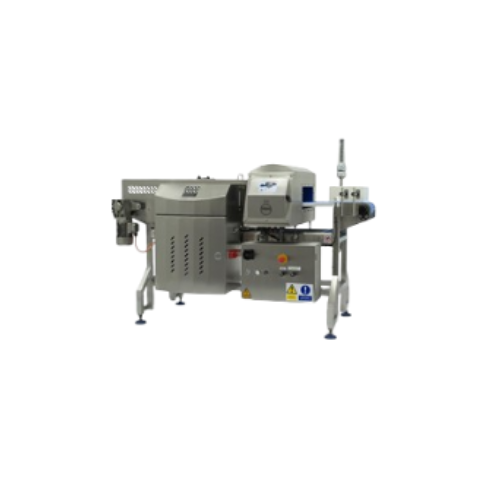
Metal detector for conveyorized applications
Enhance your production line by ensuring product safety with advanced metal d...
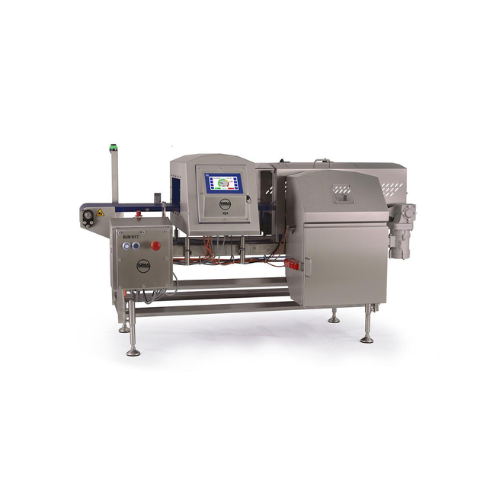
Conveyorized food metal detector for high-care environments
Ensure food safety with advanced metal detection tailored fo...

Gravity fed metal detector for dried foods
Ensure product purity and safety with metal detection between gravity feed hopp...
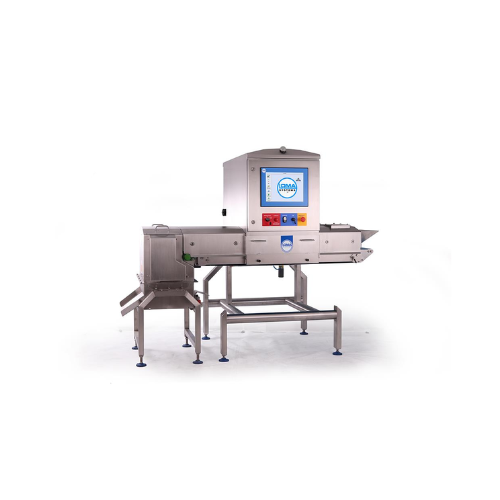
X-ray food inspection system for loose products
Ensure contaminant-free loose products by integrating a versatile inspecti...
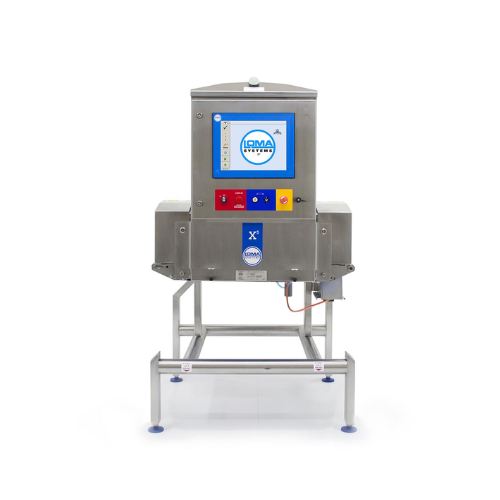
Compact x-ray inspection system for food safety
Enhance food product safety with advanced x-ray inspection, targeting both...
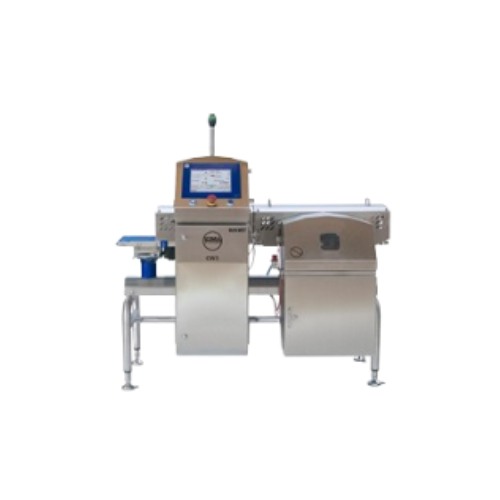
Checkweigher for high-care food environments
For facilities needing precision and hygiene, this high-care checkweigher ens...
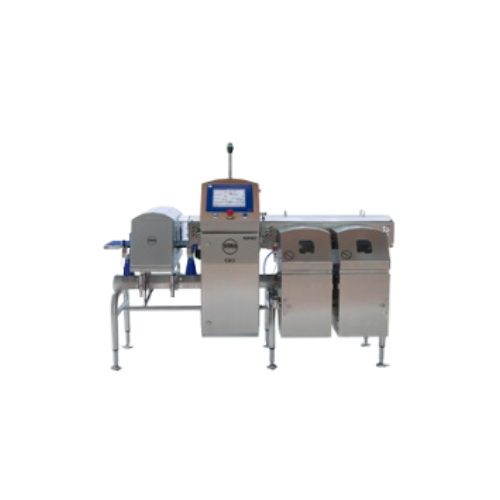
High-care food processing combination system with metal detection
Optimize your high-care food environment with a robus...
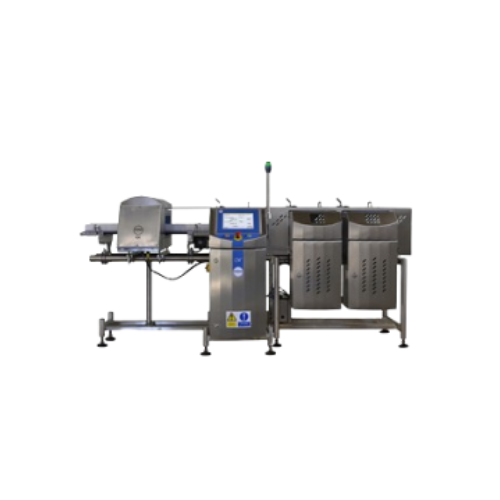
Metal detector checkweigher combination system for food products
Simultaneously detect metal contaminants while ensuring...
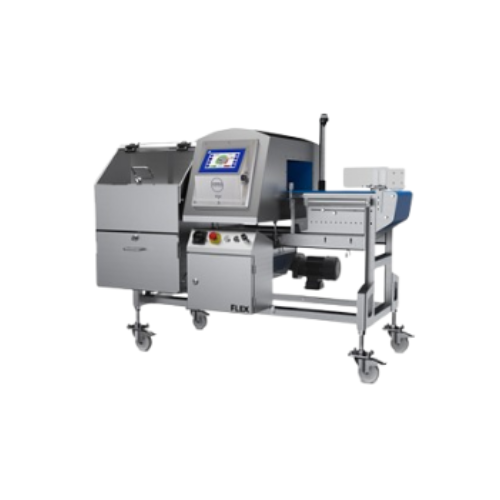
Metal detector conveyor system for food safety
Ensure product integrity across high-speed production lines with robust met...
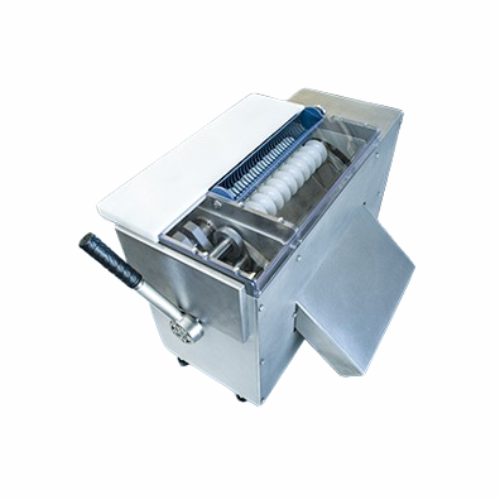
Rotationally symmetric product rolling machine
Achieve precision shaping of chocolate balls, candy drops, and more with ou...
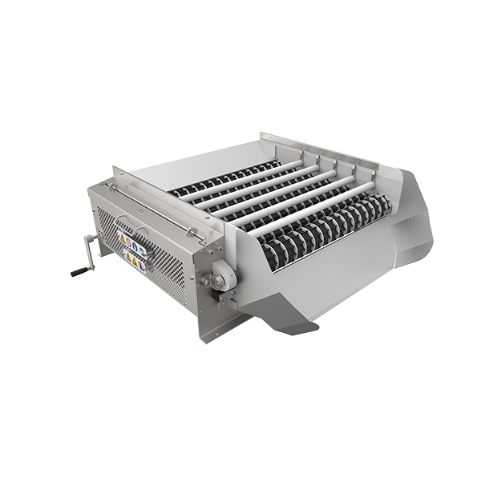
Rotary size grader for food processing
Enhance your production line by efficiently sorting and classifying produce to ensur...
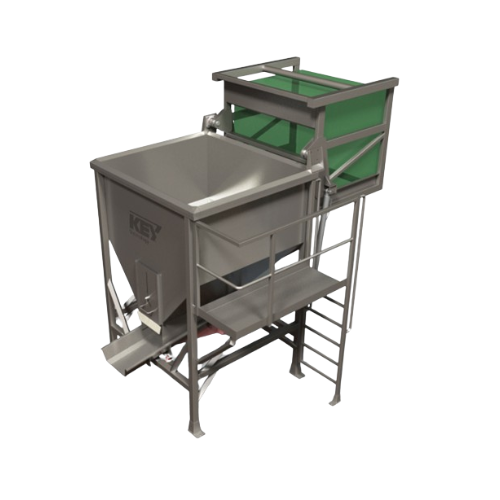
Tote bin dumper for bulk product transfer
Streamline your bulk product handling with a solution that efficiently transfers...
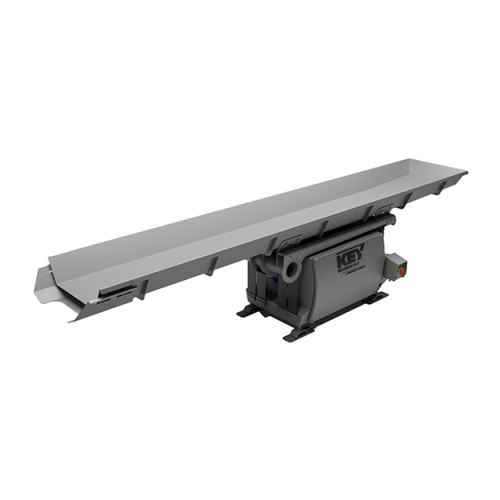
Industrial transfer conveyor system
Efficiently transport and sort diverse food products with precision, ensuring seamless ...
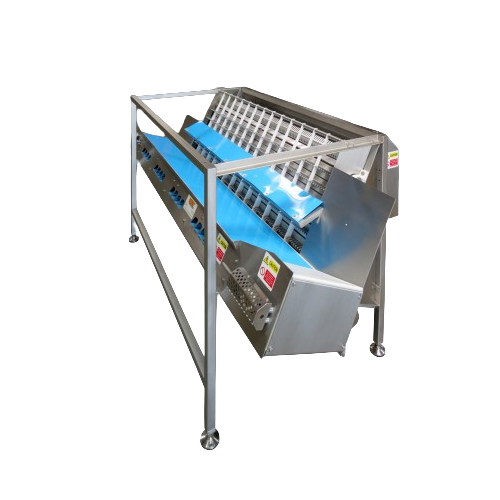
High-performance food processing and sorting solutions
Optimize your production line with integrated processing, conveyin...
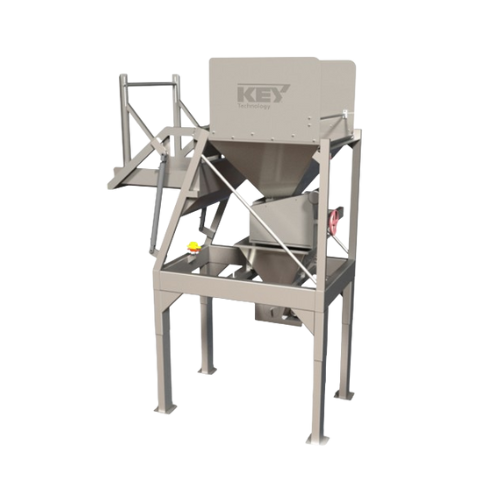
Food processing mixing system for vegetables
Tackle complex product mixing challenges with a system that seamlessly integr...
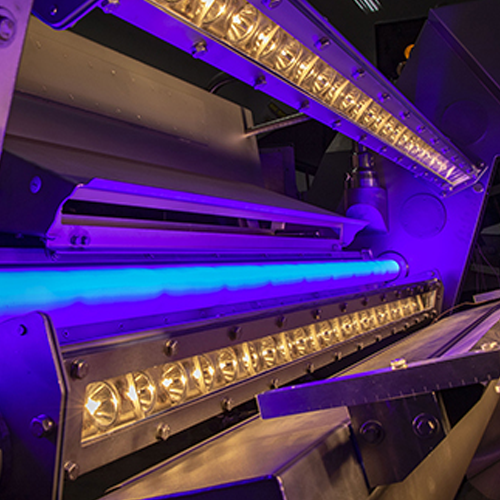
Optical sorter for blueberries
Enhance product quality and yield by precisely sorting blueberries, ensuring only optimal fru...
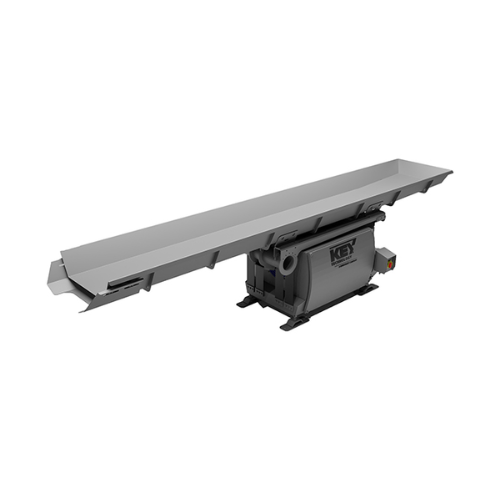
Large capacity horizontal motion conveyor for fragile products
Achieve gentle handling and minimize product damage with ...
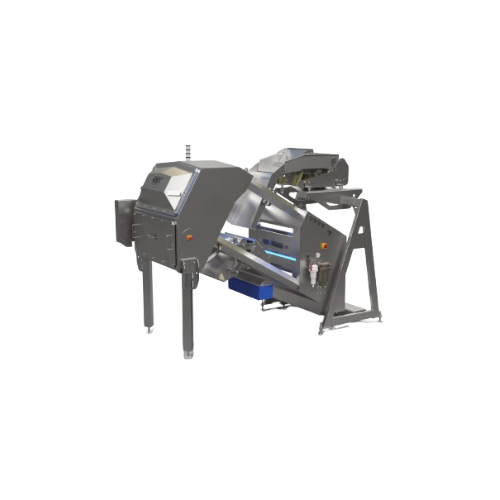
Optical sorter for food processing
Enhance your production line with advanced sorting technology that meticulously inspects...
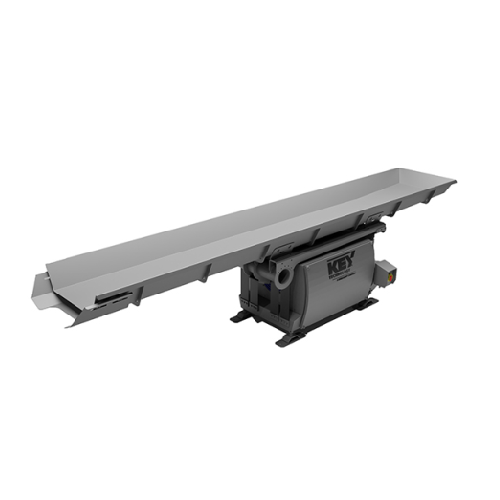
Distribution conveyor systems for food processing
Streamline your food processing pipeline with precision-engineered dist...
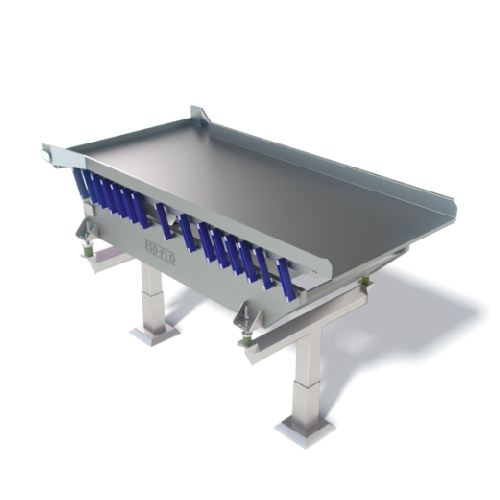
Feed conveyors for efficient product presentation
Optimize your production line with feed conveyors designed to streamlin...
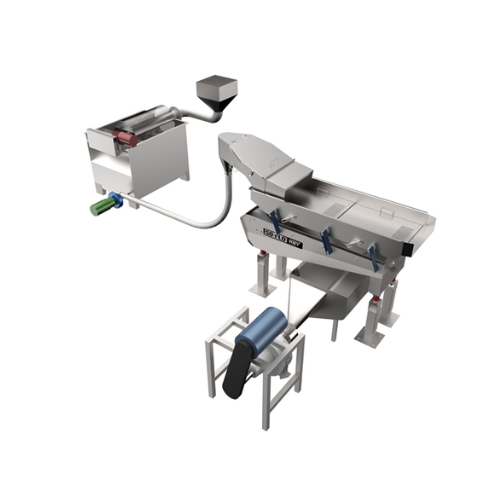
Hydro-flo food processing pump for vegetable transfer
Optimize food handling with a gentle, space-saving pump that protec...
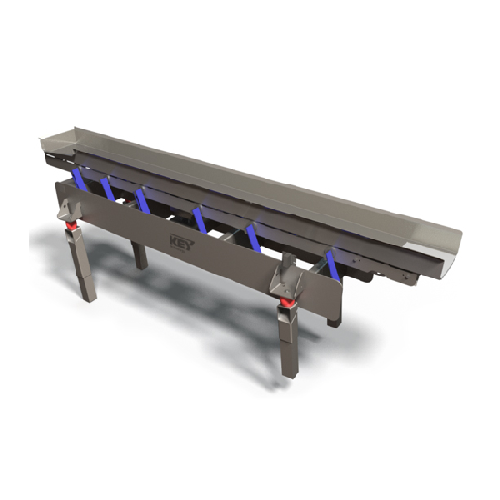
Industrial food grading system for vegetables
Optimize your production line with a versatile food grading system, ensuring...
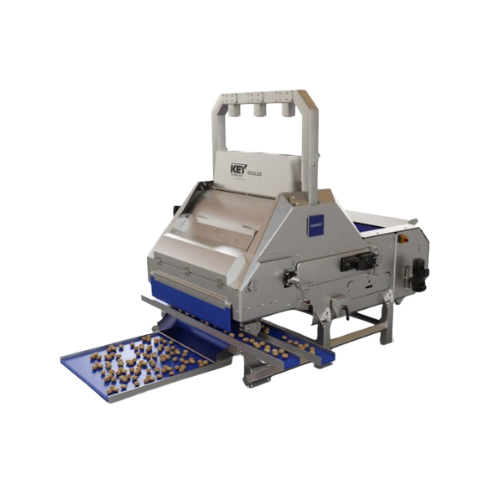
Optical potato sorter
Ensure precise sorting with advanced optical technology that identifies and separates defects in a wide...
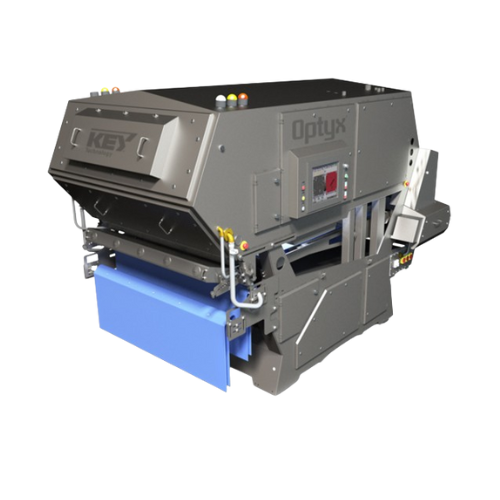
Optical sorting solution for food processing
Achieve precise sorting and maximize yield with a cutting-edge optical soluti...
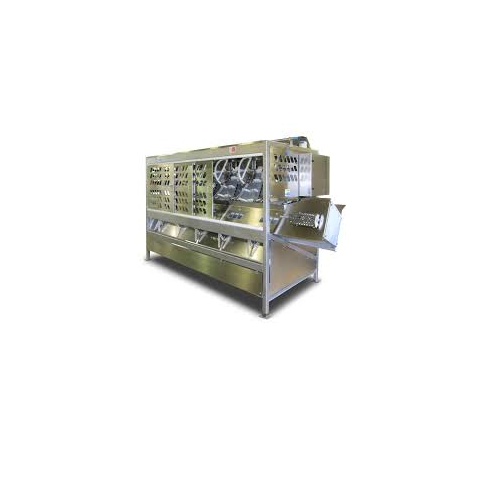
Sorting system for blueberries
Streamline diverse food processing tasks by efficiently conveying, processing, and sorting pr...
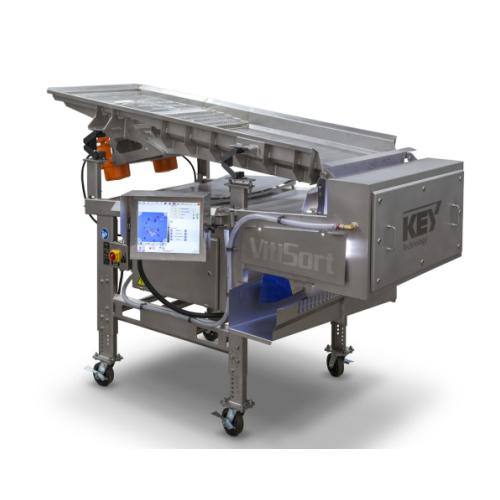
Vibratory conveyor for efficient bulk material transportation
Optimize your processing line with robust vibratory convey...
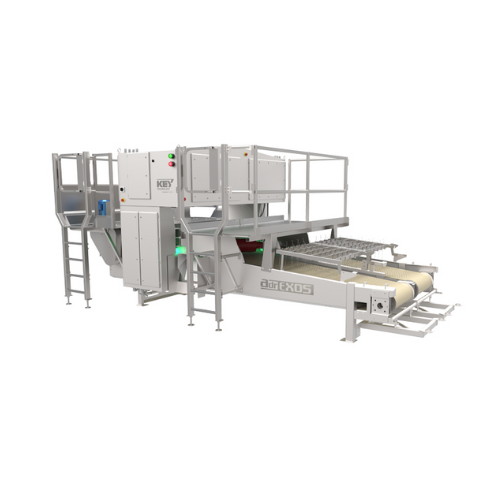
Automatic defect removal for french fries
Maximize yield and enhance quality in potato strip production with precision cut...
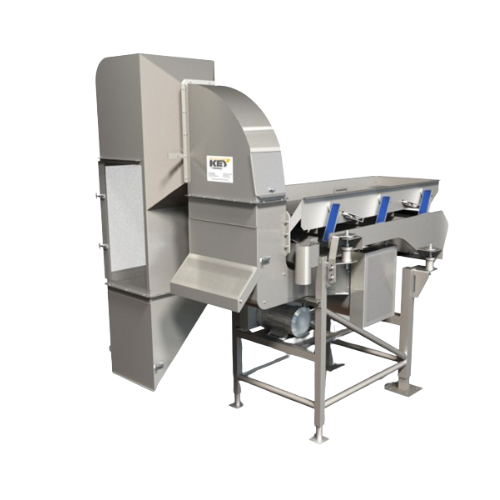
Industrial air cleaner for food processors
Optimize your production line with high-speed air separation, effectively remov...
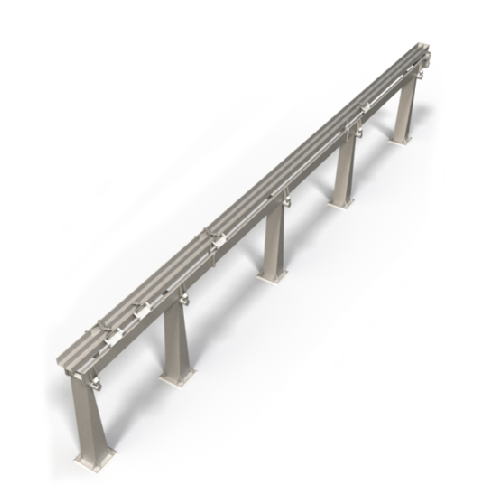
Collection conveyors for food processing
Optimize your production line by efficiently collecting and conveying solid produc...
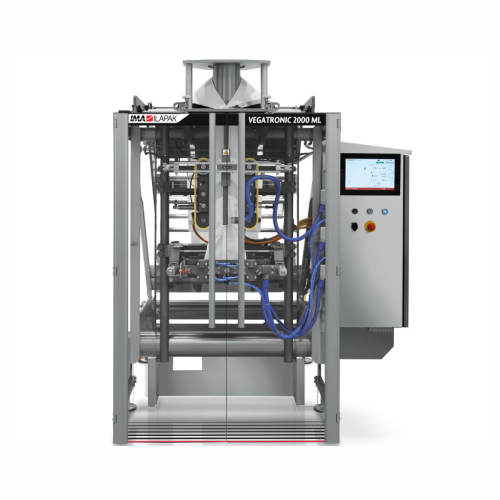
Vertical bagging system for heat sealing films and Lpde
Achieve unparalleled flexibility with a versatile vertical baggin...
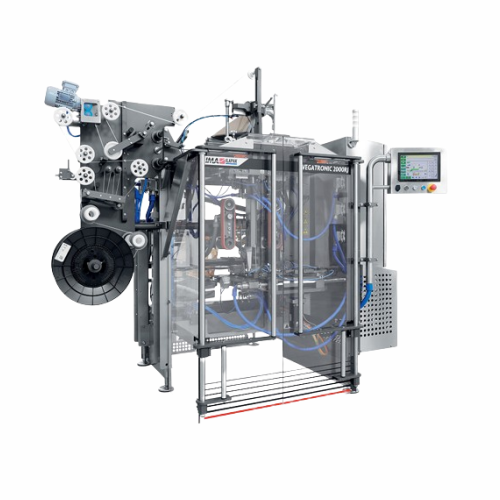
Intermittent vertical form fill seal for confectionery packaging
Optimize your packaging operations with this versatile ...
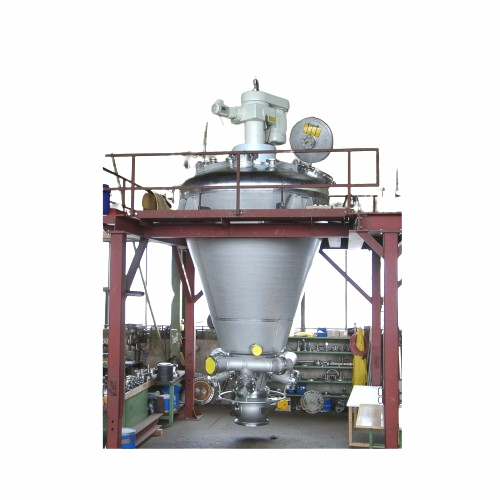
Conical screw cooker for food production
Optimize batch and continuous operations in your production line with efficient mi...
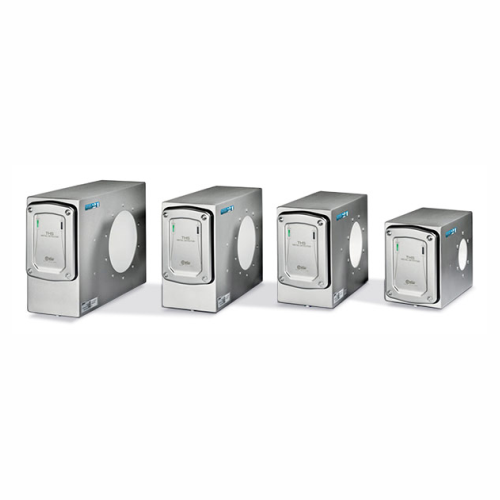
Industrial metal detector for gravity feed applications
Ensure the purity of your products by detecting and removing both...
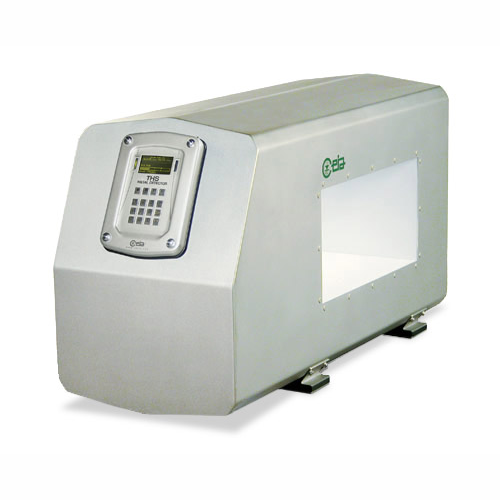
Ferrous-in-foil metal detection system
Enhance quality control for foil-packaged goods with precise ferrous metal detection...
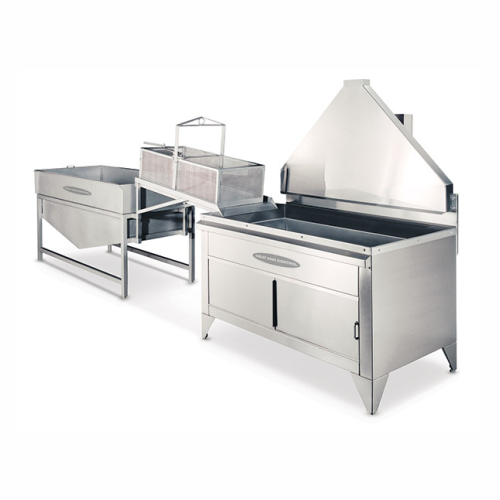
Heavy-duty batch fryer for snack and prepared foods
Effortlessly transform diverse ingredients into high-quality fried pr...
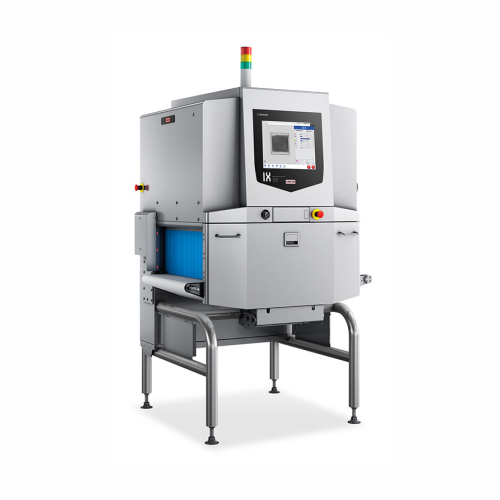
X-ray inspection system for contaminant detection
Detect and eliminate foreign contaminants in a wide range of food produ...
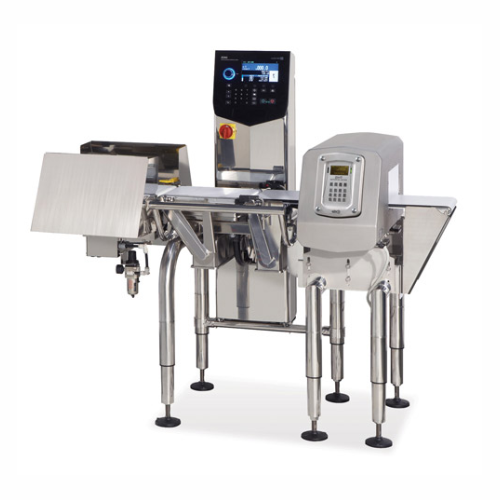
Metal detection and weight verification system
Optimize space and boost inspection accuracy by combining metal detection a...
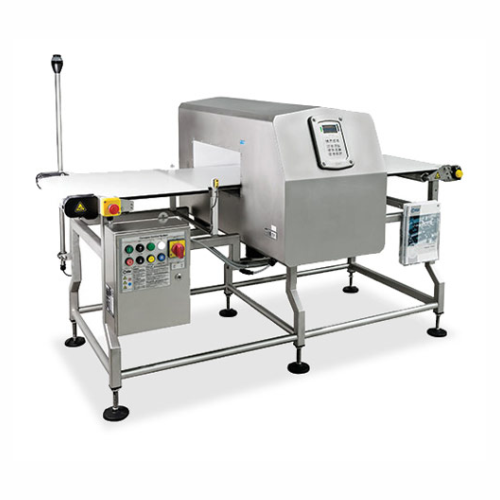
Conveyor belt metal detection system for food processing
Enhance product safety and ensure compliance with the most strin...
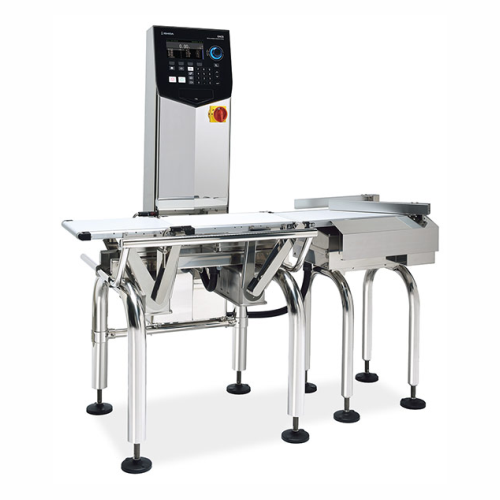
Checkweigher for packaged goods inspection
Ensure precision and compliance with this high-speed checkweigher, perfect for ...
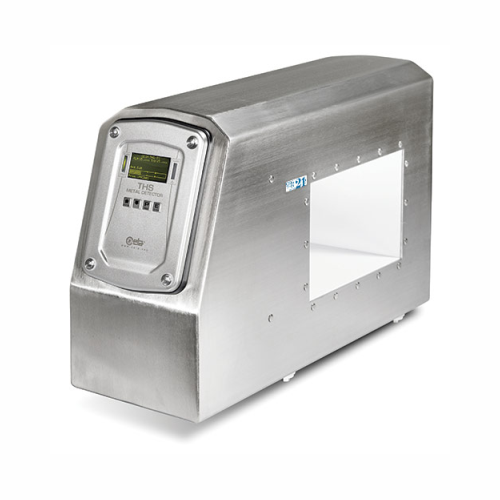
Advanced metal detection for food processing
Maximize your production line’s safety and efficiency with a cutting-ed...
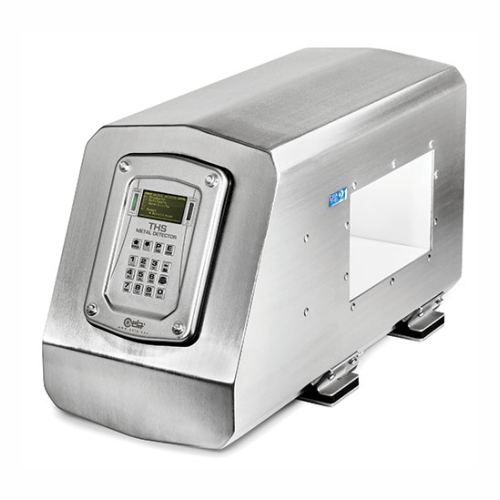
Multi-spectrum metal detector for food industry
Achieve unmatched detection accuracy in your food processing line with thi...
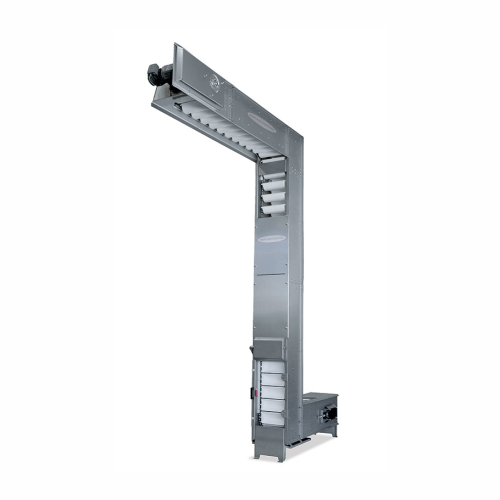
Bucket conveyor for wet and dry free-flowing products
Seamlessly elevate, lower, or convey free-flowing products without ...
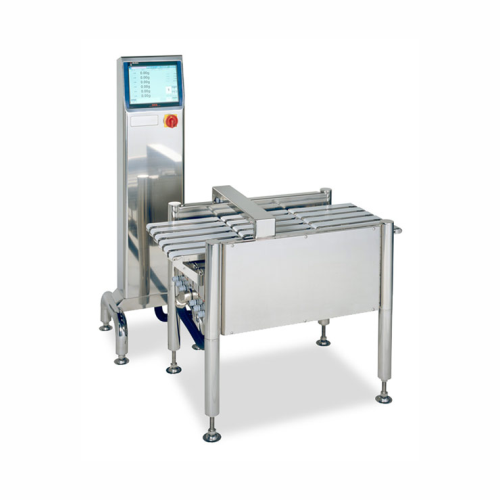
Multi-lane checkweigher for mixed-application production lines
Achieve precise weight verification across multiple lanes...
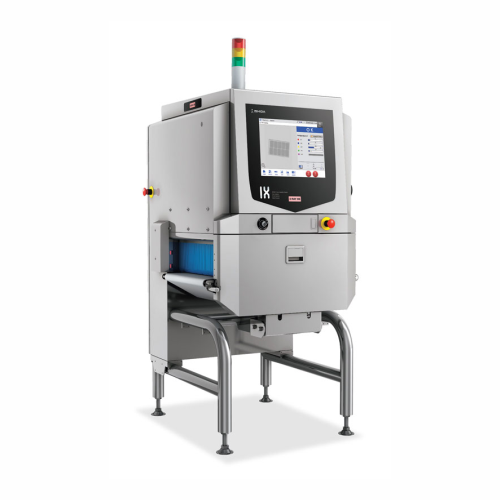
X-ray inspection system for identifying foreign bodies in food products
Ensure precise detection of foreign materials i...
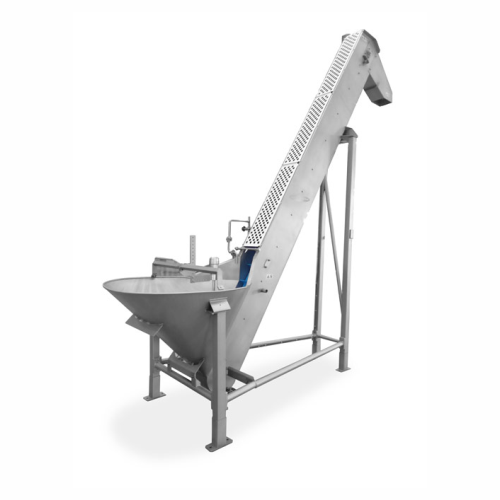
Potato chip production slicer feeder
Ensure optimal slicing and consistent chip quality with a feeder that delivers a stead...
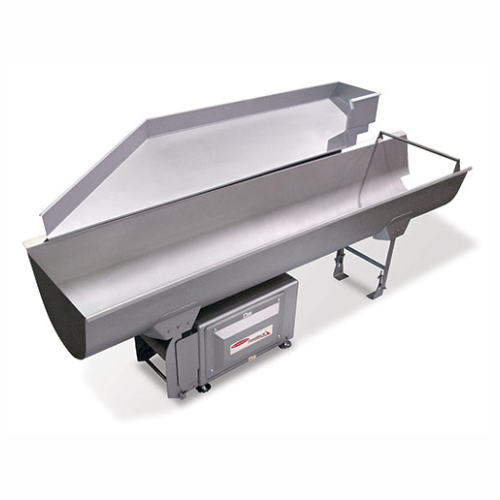
Accumulation conveyor for snacking industry
Optimize your production line with a space-saving accumulation conveyor that r...
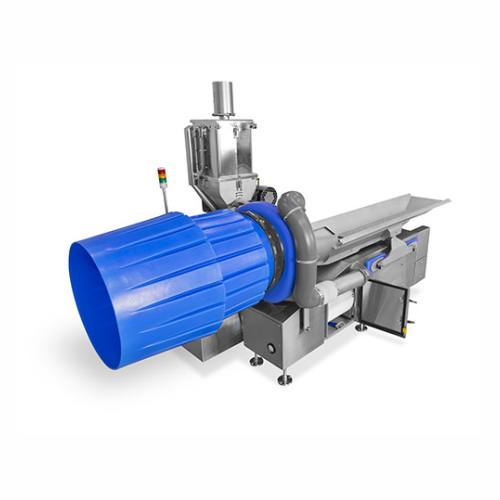
On-machine seasoning system for potato chips
Achieve uniform seasoning coverage for various snack foods with minimal wasta...
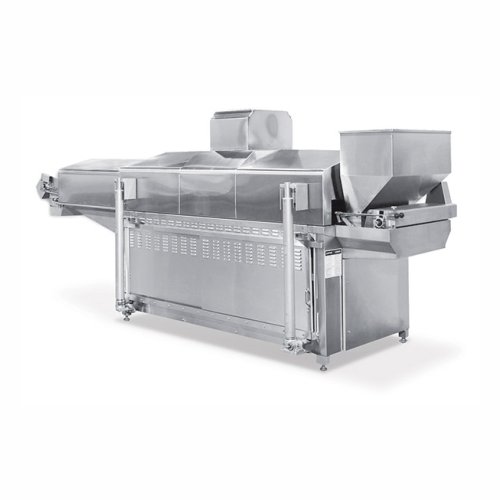
Industrial snack food fryer
Achieve precise temperature and conveyor speed control for consistently uniform snacks with this...
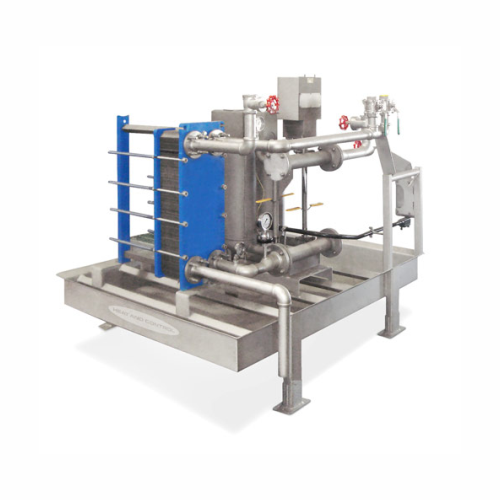
Oil cooling module for industrial fryers
Quickly cool frying oil to prevent thermal shock and maintain oil quality, allowin...
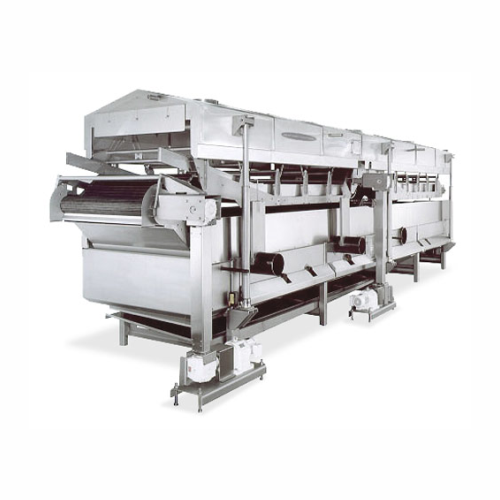
Continuous french fry fryer
Achieve optimal frying conditions with precise temperature control and rapid load adjustments, e...
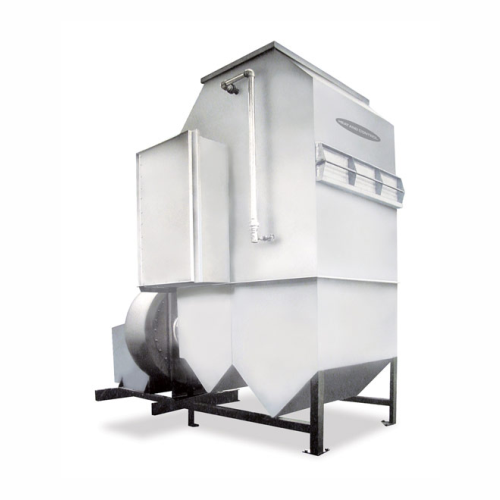
Industrial heat recovery system
Transform exhaust heat from fryers into usable energy, reducing operational costs and boosti...
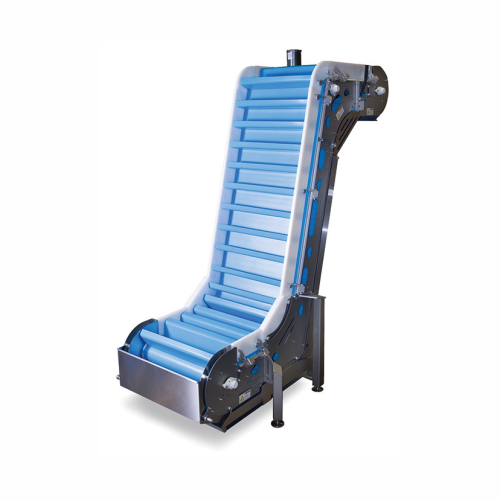
Incline transfer conveyors for dry, fresh, and frozen food products
Efficiently transfer a variety of solid and granule...
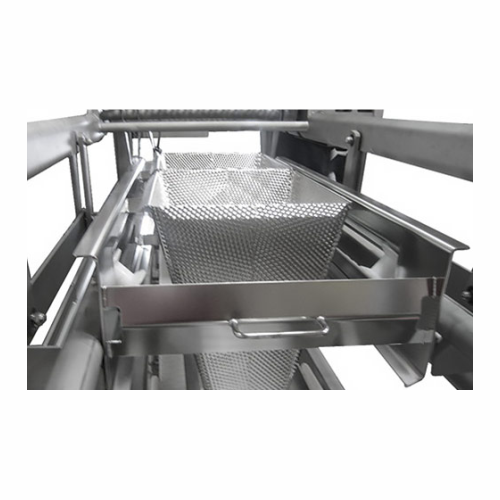
Versatile dual axis funnel filling system
Eliminate messy spills and maximize efficiency by synchronizing conveyor and tra...
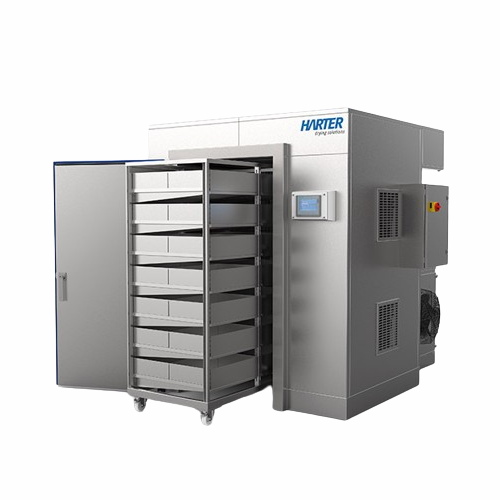
Food drying system for diverse products
Achieve precise moisture control and versatile drying for your diverse product line...
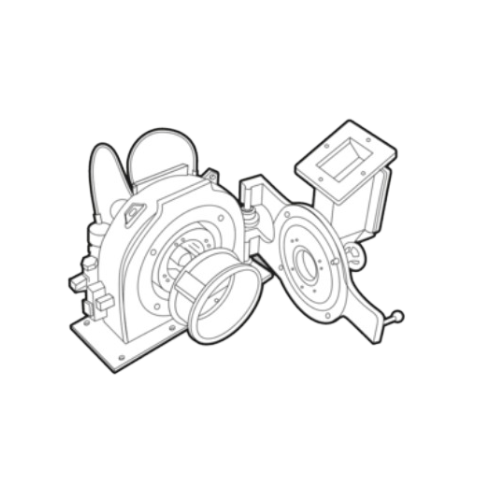
Inline cocoa bean roaster
Streamline your cocoa production by achieving consistent roast quality with precision heat control...
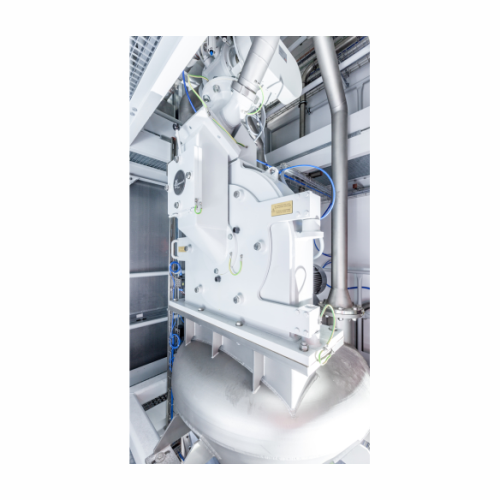
Industrial sugar grinding mill
Optimize sugar fineness with a compact grinding solution, ensuring high-speed operation and l...
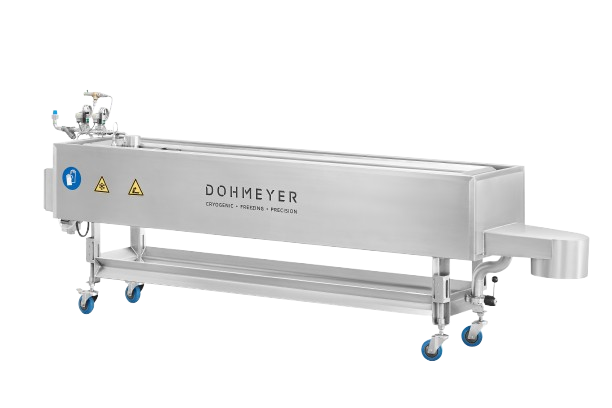
Cryogenic immersion bath for rapid freezing
Achieve rapid and intense cooling by immersing products in liquid nitrogen, id...
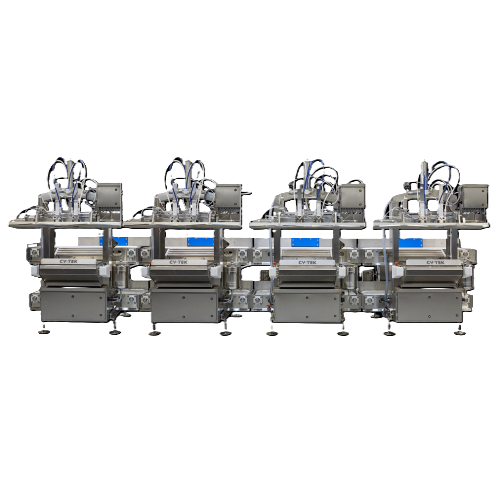
Multi-station modified atmosphere packaging system for bulk products
Optimize your packaging efficiency with a system d...
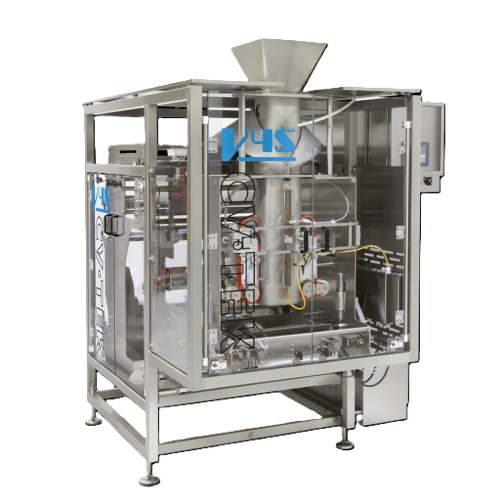
Vertical form fill seal packaging for high washdown environments
Ensure optimal packaging in demanding environments with...
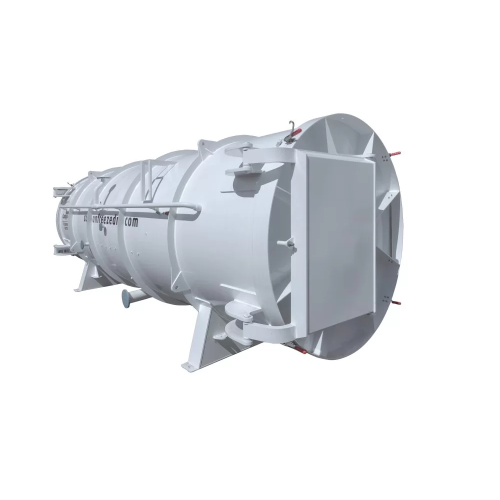
Large-scale industrial freeze dryer
Achieve precise moisture control and preserve product integrity with a large-scale free...
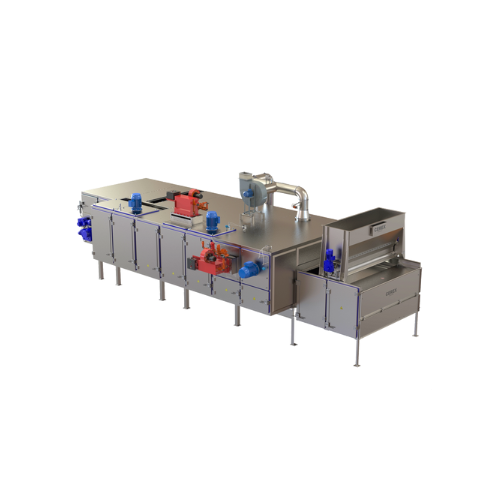
Granola drying solution
Optimize your granola production with modular drying technology that ensures precise moisture control...
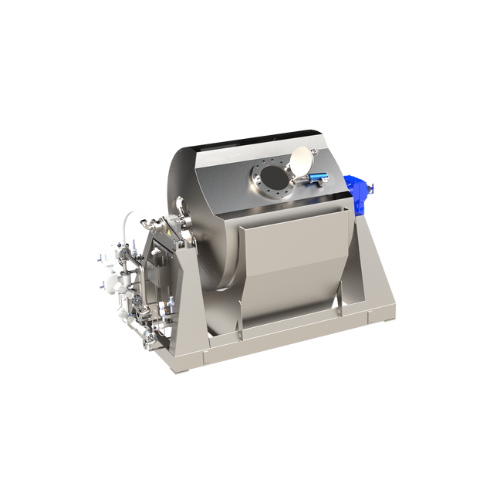
Rotary cooker for uniform steam heating in cereals production
Achieve consistent product quality in high-volume cereal p...
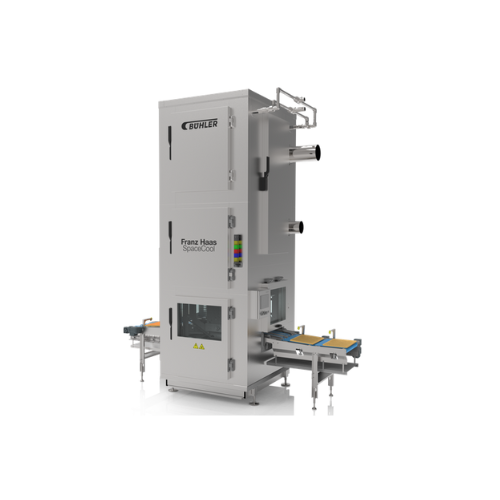
Wafer block cooling tower
Optimize your confectionery production with seamless wafer cooling, ensuring precise temperature c...

Efficient grain destoning and concentrating system
Optimize your grain processing with a solution that ensures precise se...
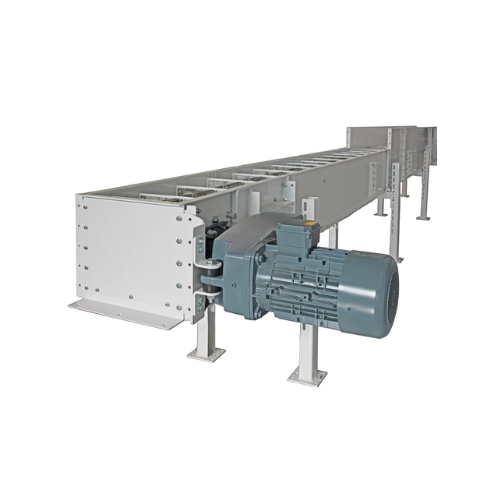
Chain conveyor for grain and floury products
Ensure seamless material handling with a versatile chain conveyor designed fo...
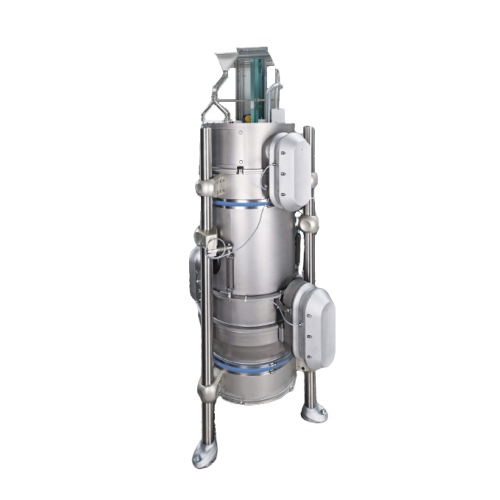
Advanced superheated steam drying solution
Harness the power of consistent drying technology to achieve optimal moisture c...
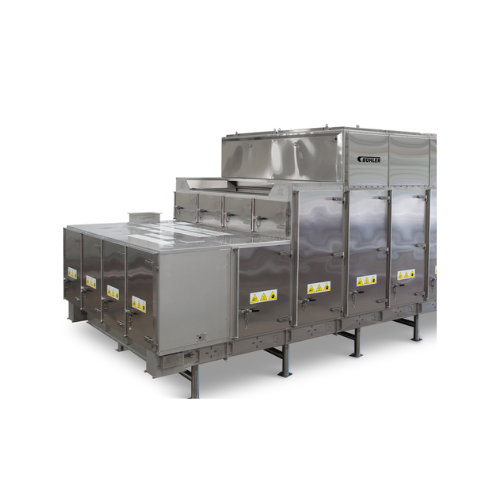
Multi-pass pet food dryer for consistent moisture content
Achieve precise moisture control and enhanced product quality ...
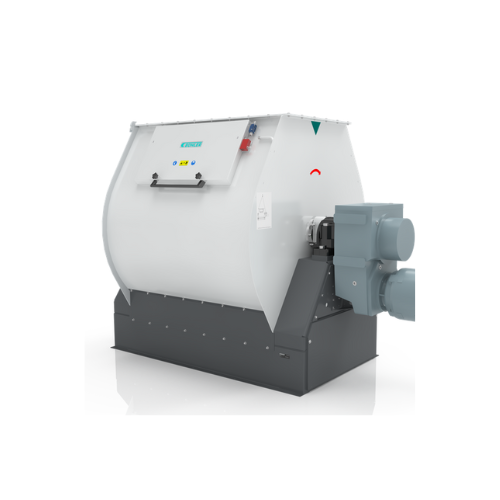
Batch mixer for animal feed
Streamline your mixing process with a high-speed batch mixer that delivers up to 20 mixing cycle...
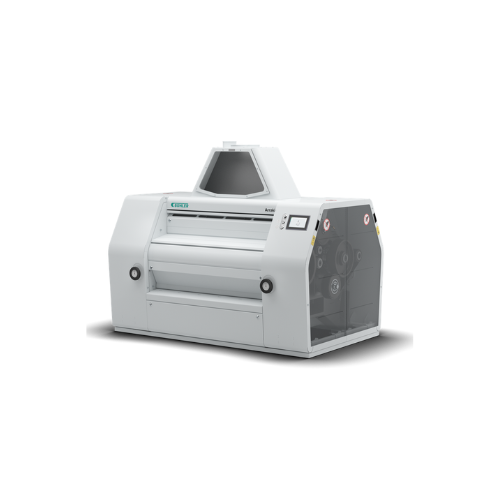
Four-roller and eight-roller mill for wheat and grain grinding
Optimize your grinding operations with this versatile rol...
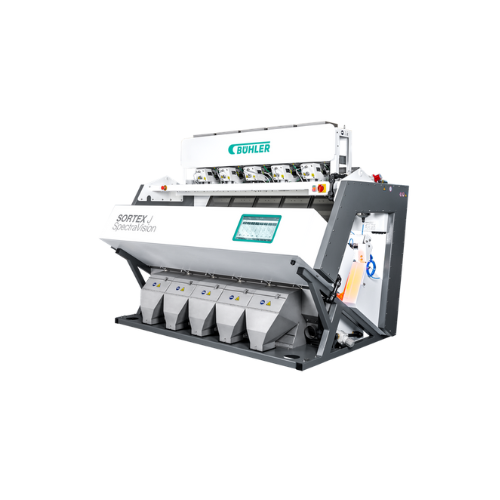
Optical sorter for grains, seeds, and plastics
Enhance sorting efficiency with cutting-edge optical technology that distin...
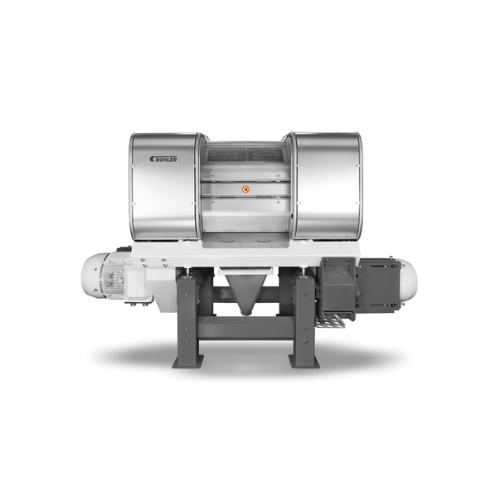
Flaking mill for grain and cereal production
Achieve consistent flake thickness and high throughput with advanced roller t...
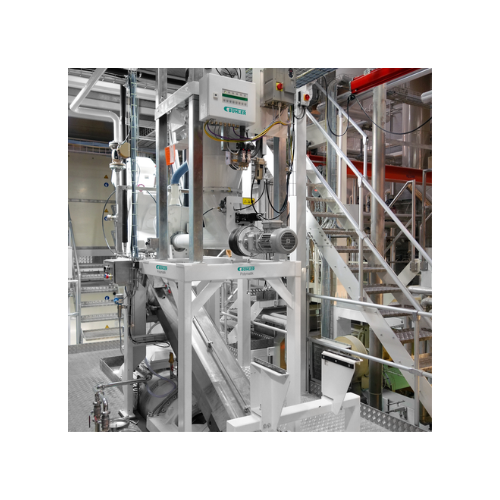
Commercial pasta press for diverse ingredients
Optimize your pasta production with a flexible solution capable of handling...
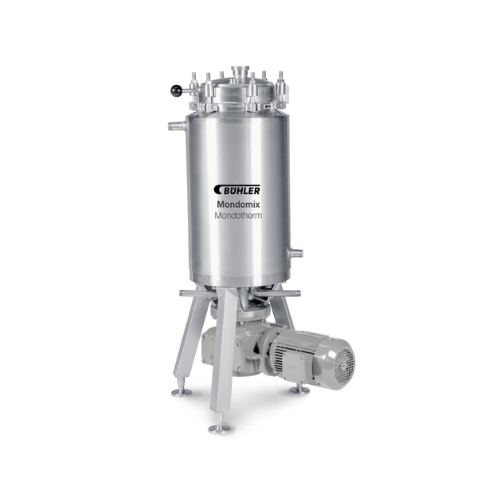
Scraped surface heat exchanger for viscous liquids
Optimize heating and cooling of viscous liquids efficiently with conti...
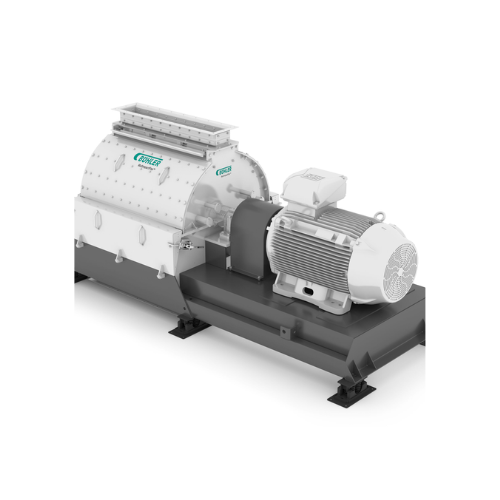
Hammer mill for fine grinding in food and feed industries
Achieve exceptionally fine particle-size distribution with a h...
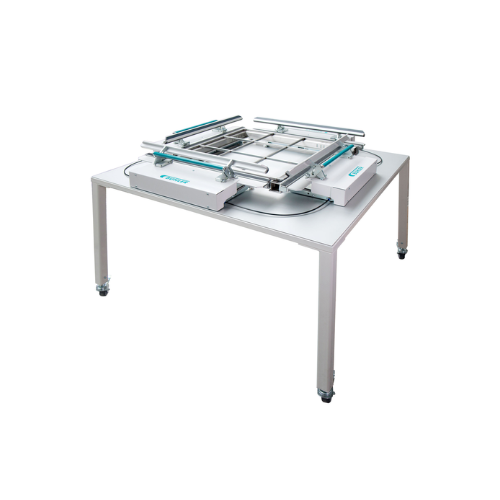
Sieve tensioning device for milling applications
Achieve precise and consistent tensioning across various sieve frames wit...
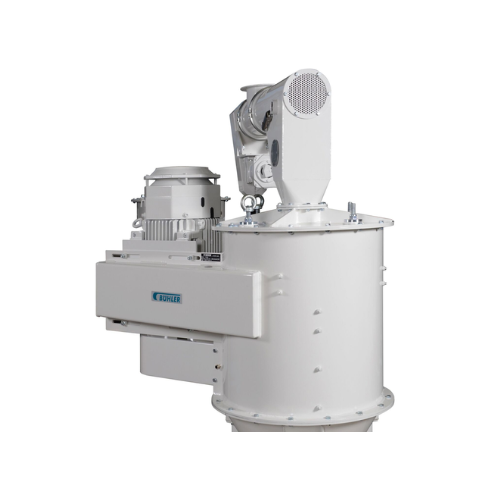
Impact dehuller for sunflower, soybean, and cottonseed
Enhance oil extraction efficiency with a dehulling solution that g...
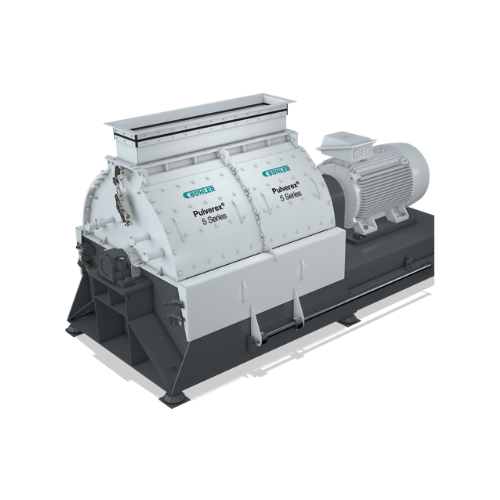
Pulverizer for fine grinding applications
Achieve optimal particle size distribution and enhance throughput with this adva...
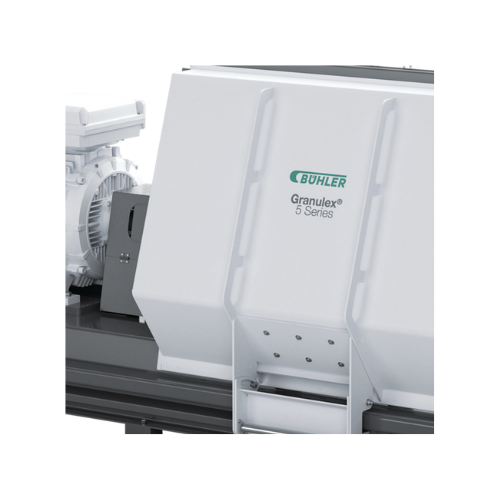
High-throughput hammer mill for animal feed production
Ideal for high-throughput operations, this hammer mill ensures pre...
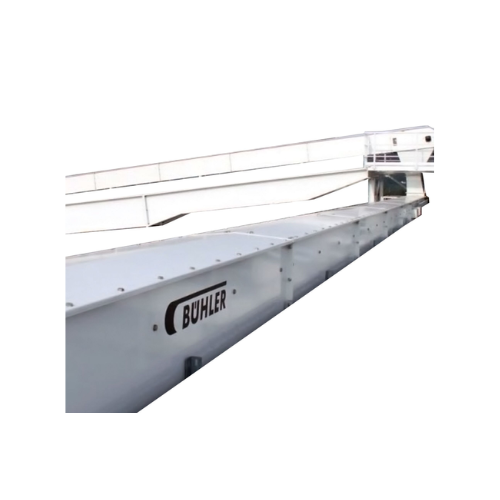
Heavy-duty trough chain conveyor for high throughput applications
Optimized for high-capacity operations, this robust c...
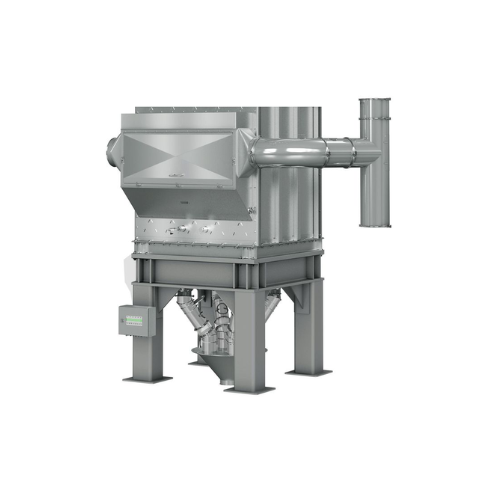
Hydrothermal kiln for oats and sorghum
Optimize your grain production with advanced enzyme inactivation and hydrothermal tr...
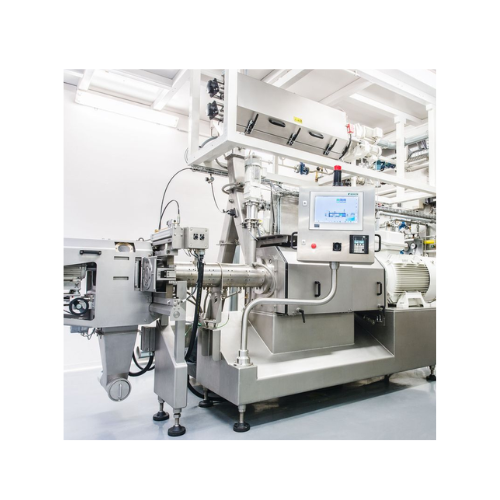
Twin-screw extruder for breakfast cereals production
Enhance your product range with flexible twin-screw extrusion techno...
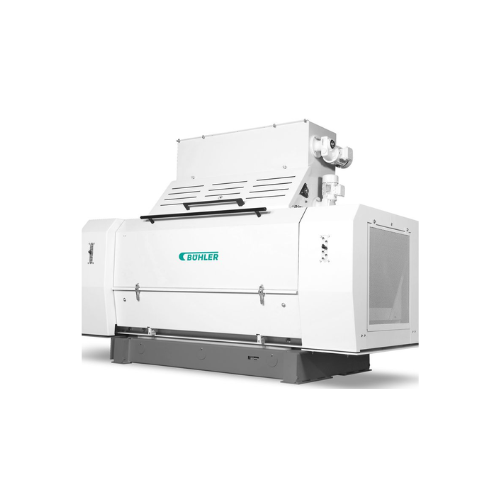
Oilseed flaking and milling system
Optimize your oilseed processing with a flaking system that enhances extraction efficien...
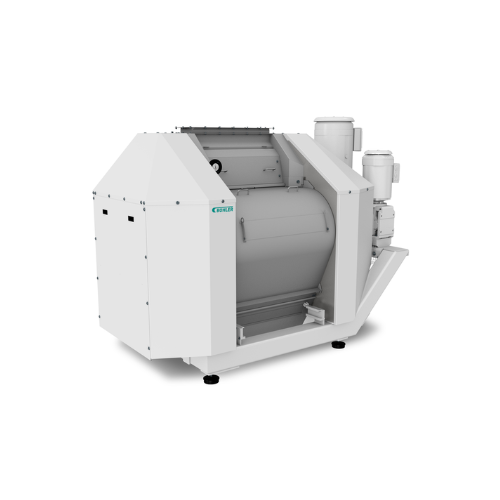
Industrial grain flaking mill
For efficient grain processing, achieve uniform flake quality with advanced temperature-contro...
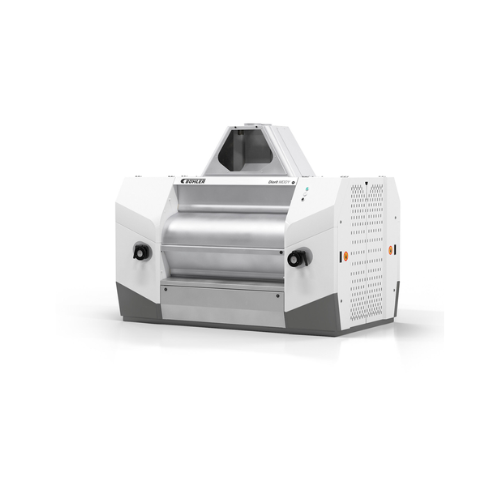
Four-roller and eight-roller mill for grains
Optimize your grain processing with precise roller configurations, ensuring c...
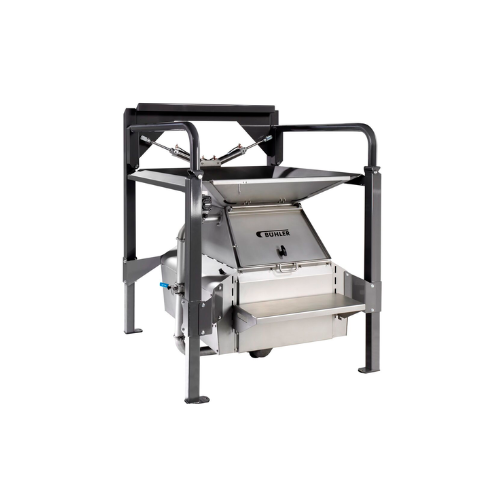
Discharge station for bags and big bags
Ensure consistent material flow and hygiene in your production line with a versatil...
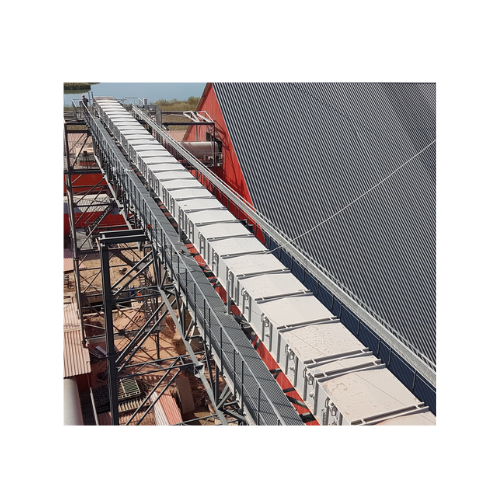
Enclosed belt conveyor for grain handling
Optimize your material transportation and ensure dust-free operations with this ...
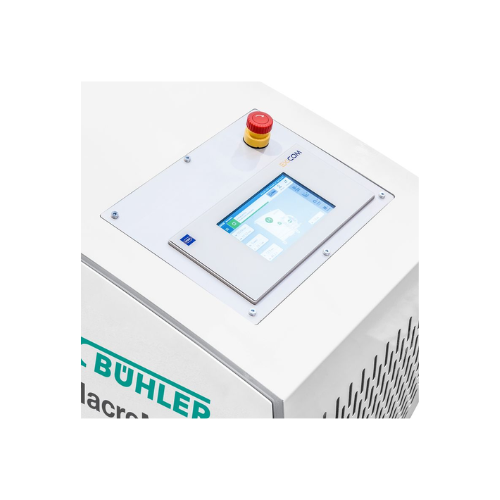
Control systems for wet grinding industry
Enhance precision and efficiency in your production line with advanced control s...
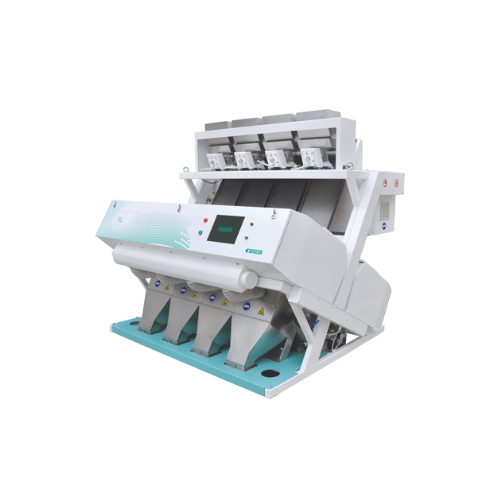
Optical sorter for grain and seed sorting
Ensure precise defect detection and efficient sorting of grains, pulses, and see...
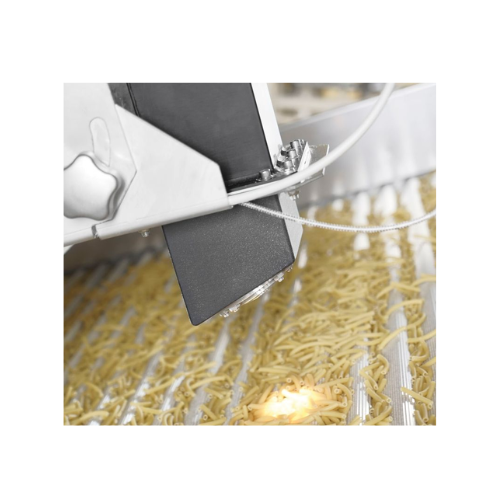
Digital process service for regulating water in dough preparation
Achieve consistent dough moisture levels with this di...

Vertical conveyor for bulk materials
Optimize your handling of bulk materials with a cost-effective solution that ensures h...
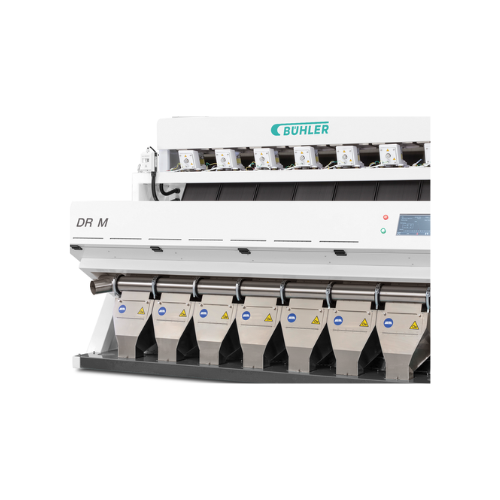
Optical sorter for wheat applications
Effortlessly enhance product purity by eliminating color defects and foreign material...
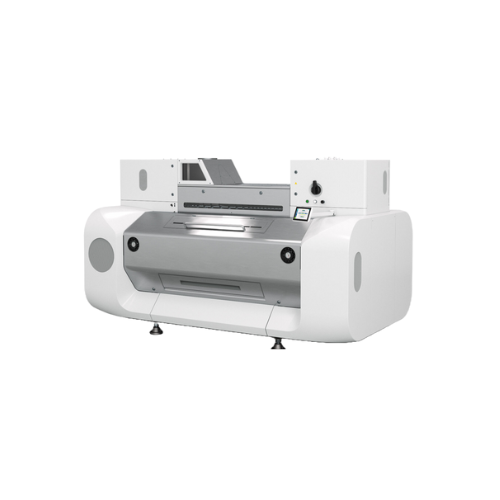
Integrated grinding system for wheat and grain
Optimize your grinding process with a system that delivers consistent parti...
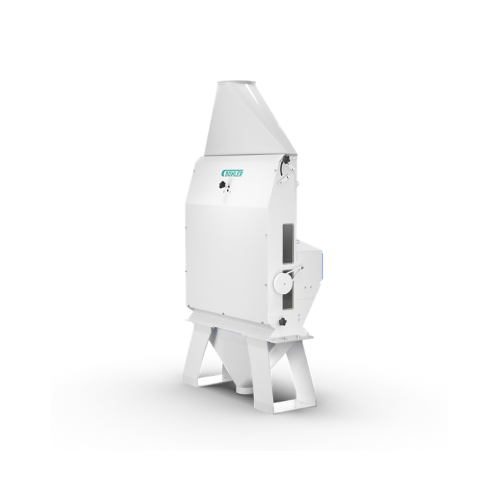
Aspiration channel for grain cleaning
Achieve superior product quality by efficiently removing light impurities from granul...
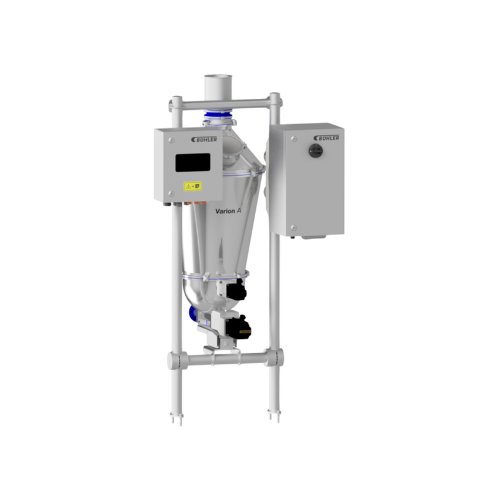
Batch scale for high accuracy weighing of powdery products
Achieve unparalleled precision in powder dosing with our batc...
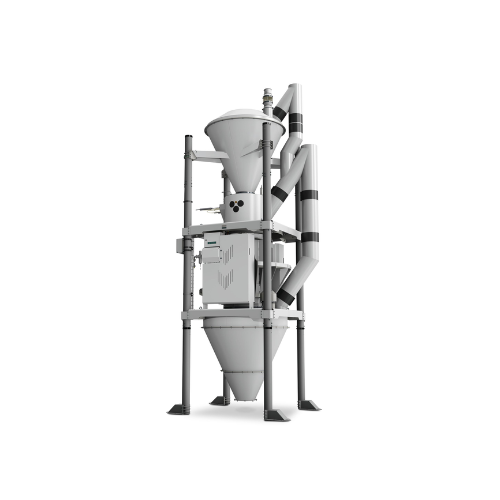
Fully automatic batch scale for powdery and granular products
Achieve precise and repeatable dosing for powdery and gran...
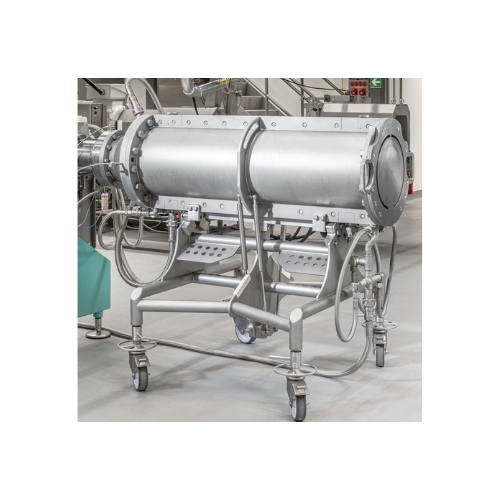
Industrial cooling die for wet textured proteins
Maximize production efficiency by creating diverse, high-quality protein ...
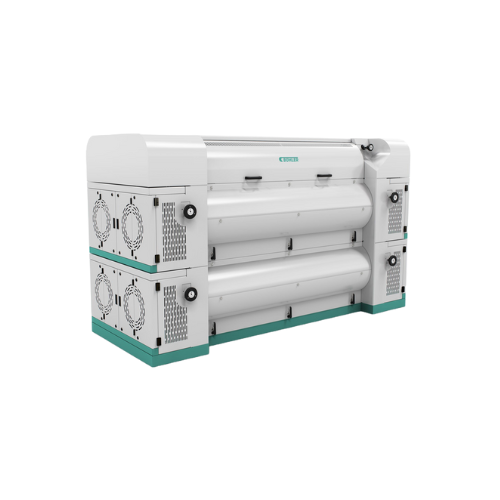
Cracking mill for oilseeds and feed processing
Maximize your production efficiency with advanced cracking and milling solu...

Twin-screw extruder for breakfast cereal
Optimize your production with a robust twin-screw extruder that accommodates high ...

Ultra-fine pulverizer for aqua feed and pet food
Achieve precise granulation with high efficiency for your feed and food p...
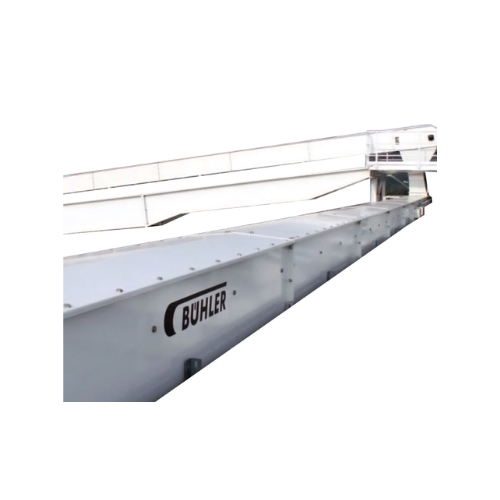
High-capacity horizontal conveyor for bulk storage
Optimize your high-speed bulk material handling with a durable and eff...

Air cleaners for grain dust removal
Enhance safety and operational efficiency by effectively removing dust and light partic...
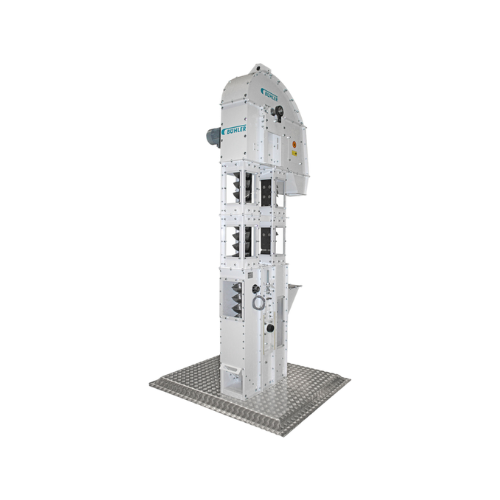
Vertical grain conveying solution for animal feed and bulk materials
Efficiently transport and elevate various bulk mat...
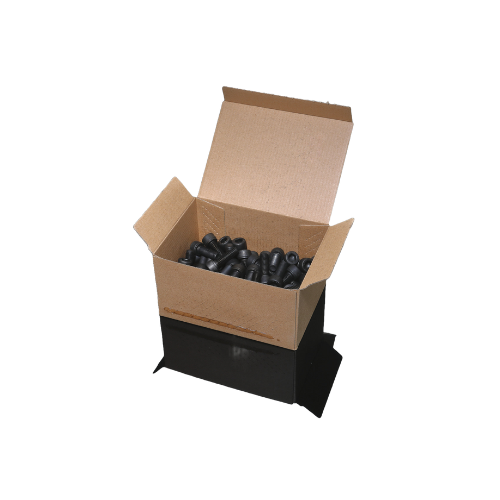
Automatic fasteners packaging system
Streamline your fastener packaging process with a system that automates sorting, dosin...
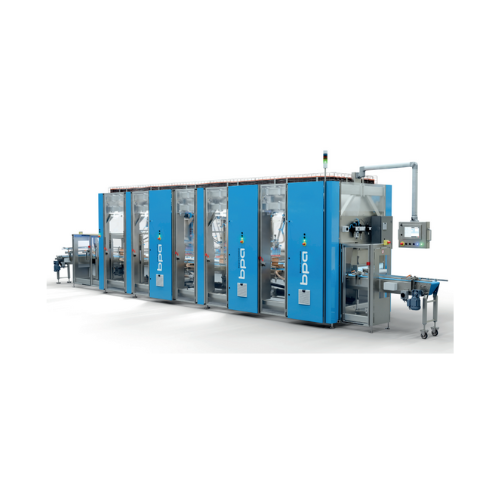
Top load and side load case packer with vision guided robotics
Optimize packing efficiency and flexibility with a versat...
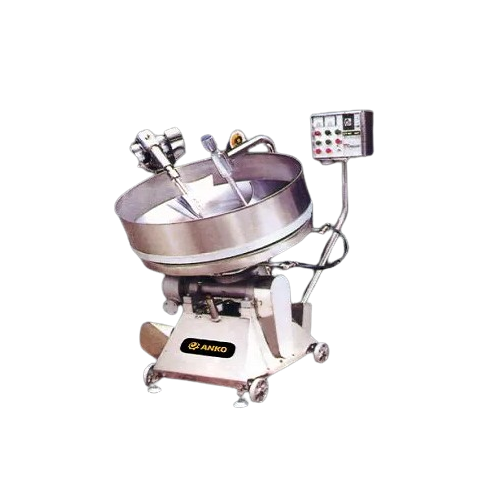
Stir fryer for industrial food production
Streamline your culinary operations with this innovative stir fryer, designed to...
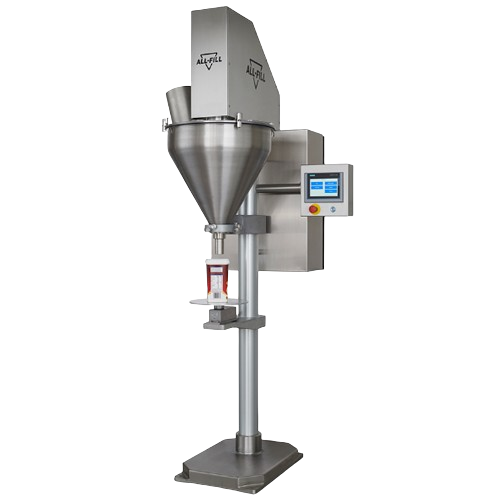
Gravimetric filling solution for inconsistent density products
Achieve precise weight accuracy in your filling processes...
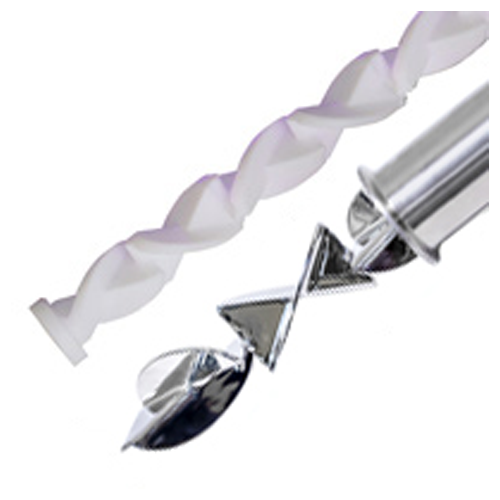
Sanitary static blender for food and beverage
Optimize your mixing process with low shear, energy-efficient blending desig...
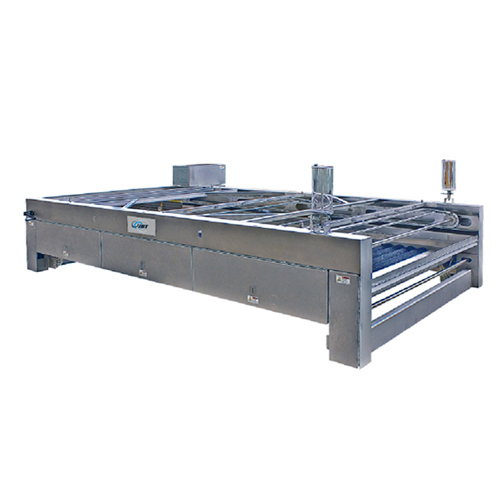
Citrus brush washer for fruit cleaning
Ensure your produce is impeccably clean with a brush washer designed to efficiently ...
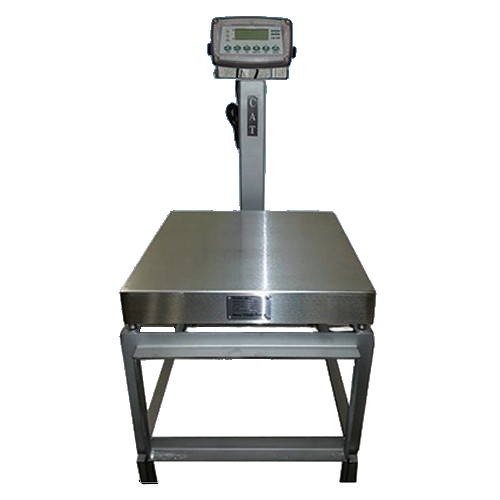
Compact digital bench weighing scale for food processing
Ensure precise portioning with this compact and durable digital ...
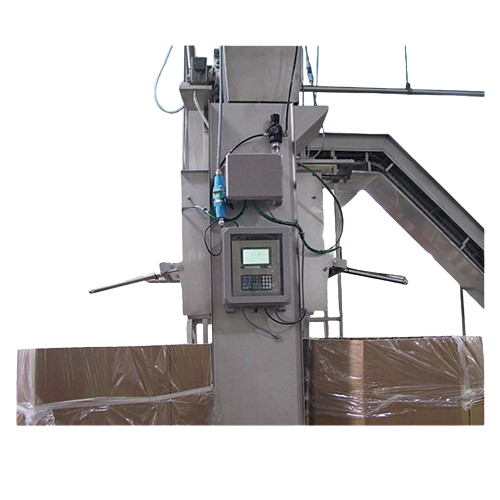
Bi-directional frame scale for industrial weighing
Achieve precise product accumulation and streamlined batch processing ...
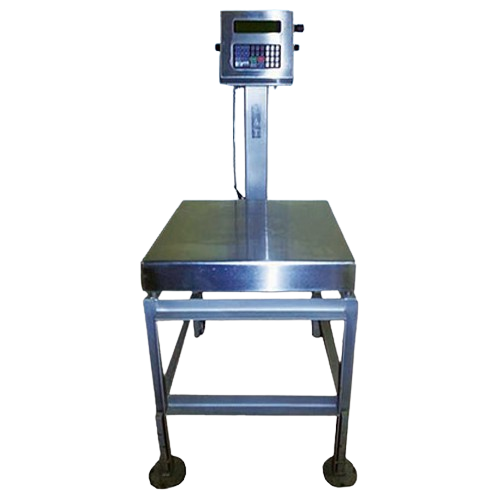
Industrial weight tracking system for injected products
Optimize your production line by accurately tracking product weig...
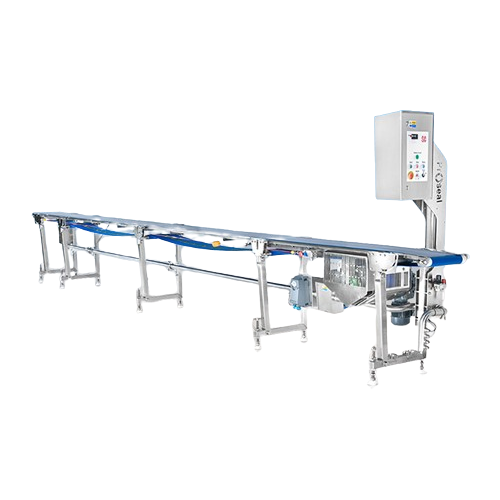
Flat belt product transfer conveyor for food processing
Efficiently streamline your production line with a hygienically d...
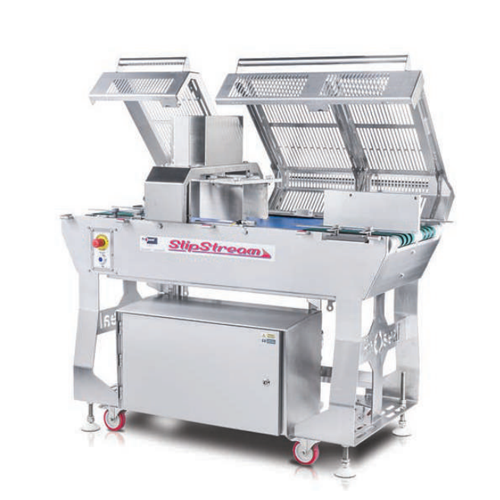
Twin lane separator for automated tray sealing
Optimize your production line with this conveyor system designed to effortl...
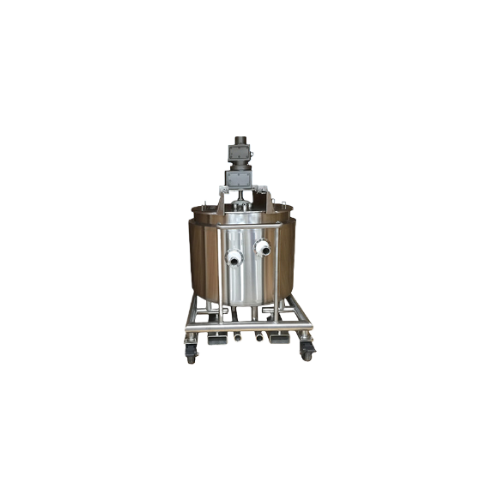
R&d vessels for research and development centers
Optimize your R&D operations with versatile vessels designed to hand...
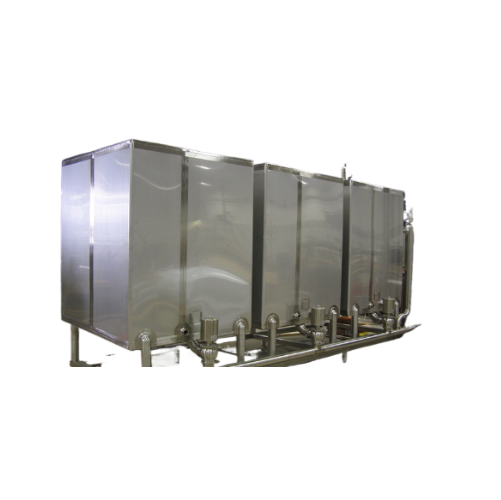
Clean-in-place tanks for industrial sanitation
Optimize your sanitation processes with clean-in-place tanks, designed to r...
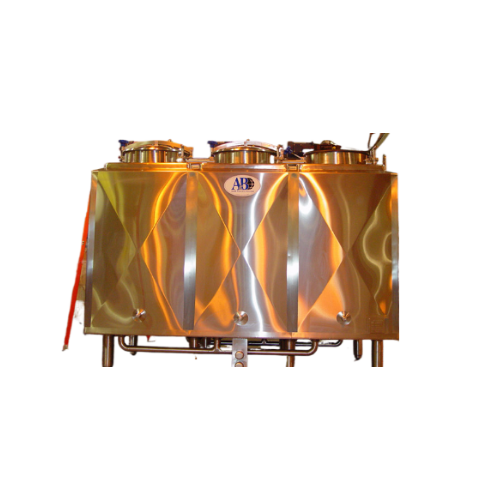
Flavor vats for ice cream and food production
Maximize your product line versatility with customizable flavor vats, design...
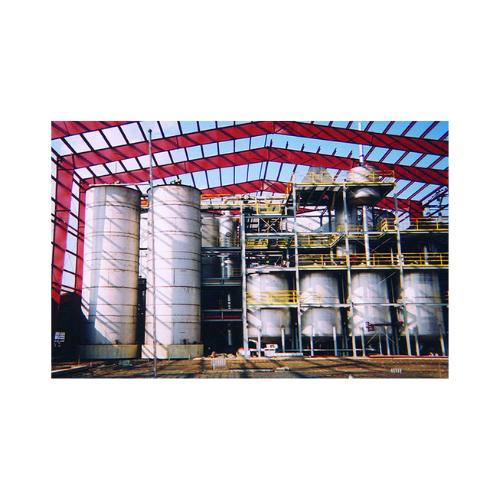
Custom fabricated industrial tanks
Optimize your production with these industrial tanks, designed to handle a diverse range...
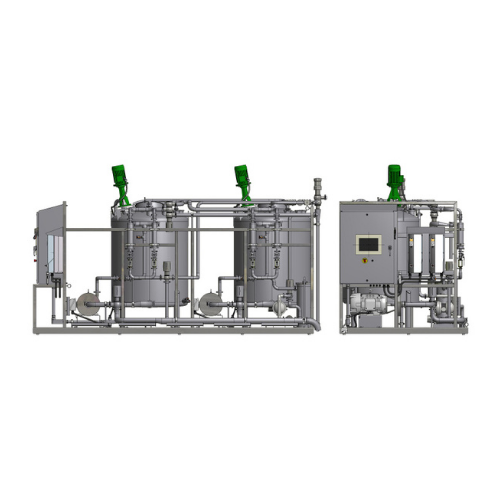
Two-stage defect removal system for citrus juice
Ensure your juice production achieves maximum yield and purity with a two...
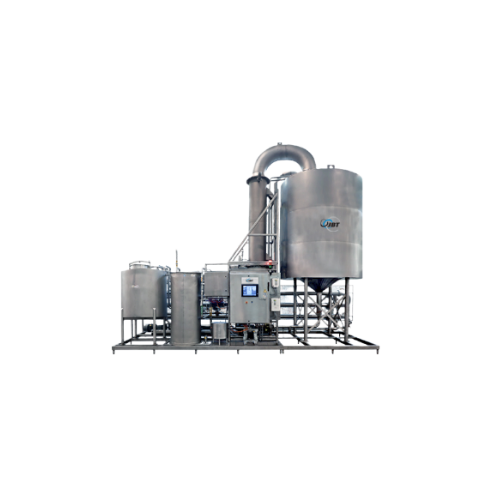
D-limonene extraction system for citrus processing
Enhance your citrus processing capabilities by efficiently extracting ...
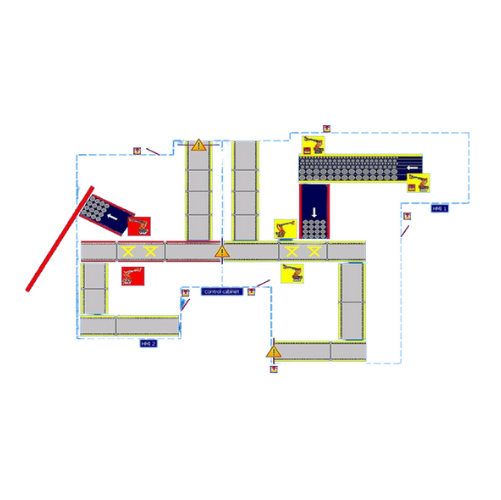
Basket tracking system for automated batch retort systems
Efficiently manage and monitor your batch processing with a sy...
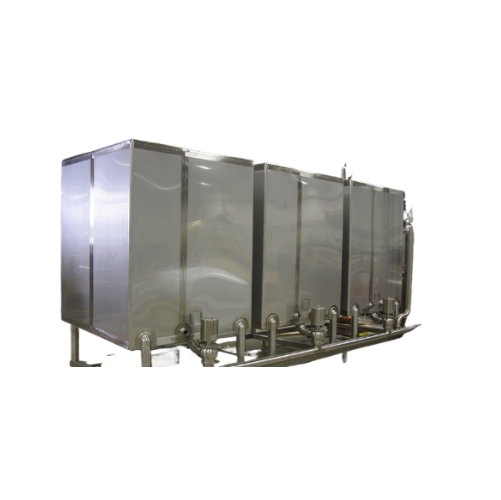
Industrial clean-in-place (cip) system
Ensure seamless cleaning and sanitation in your production line with innovative CIP ...
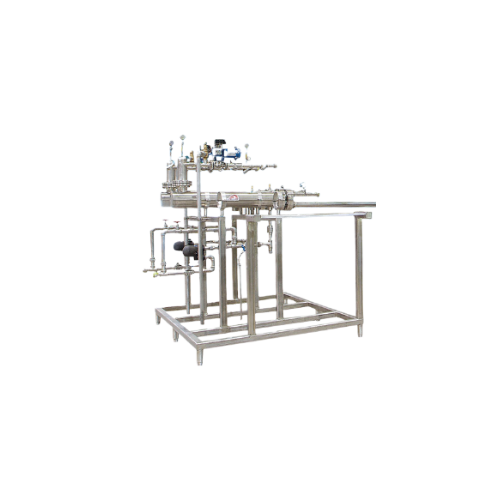
Industrial hot water heating system
Optimize your production line’s efficiency with precise water temperature control...
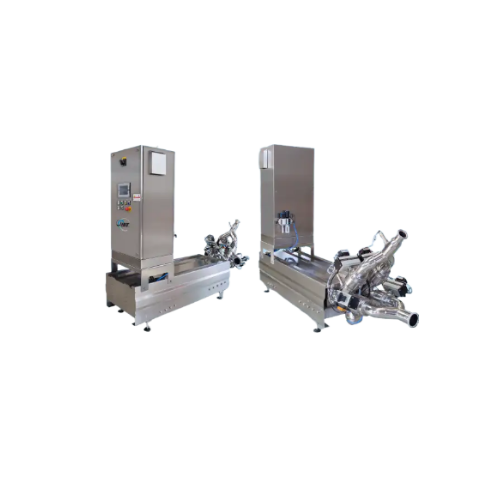
Pump for products with large particulates
When handling products with large particulates, maintaining integrity is paramou...
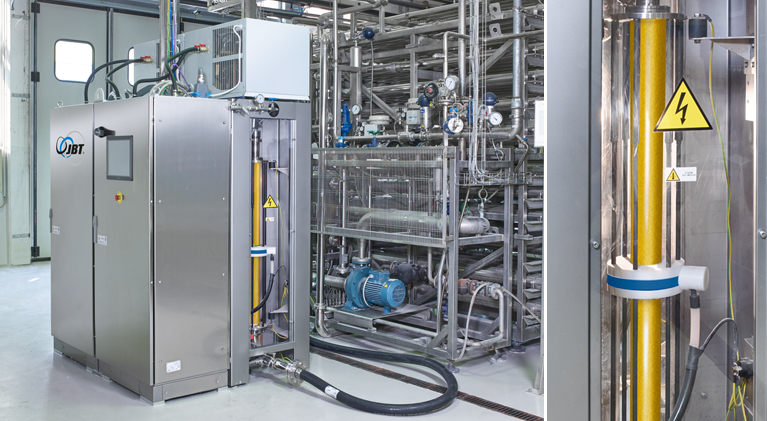
Ohmic heat exchanger for high viscosity foods
Optimize the thermal processing of heat-sensitive foods with precise ohmic h...
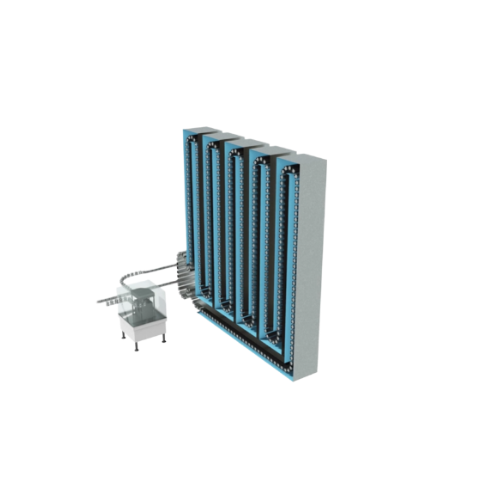
Hydrostatic sterilizer for continuous food processing
Maximize your production line’s efficiency with a continuous ...
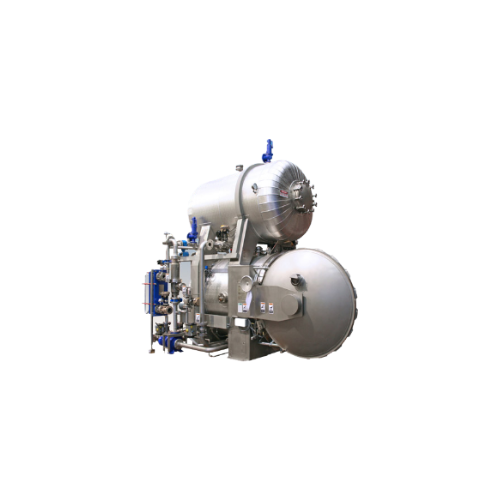
Multi-purpose laboratory sterilizer for food processing
Achieve precise thermal process design and flexibility with a ste...
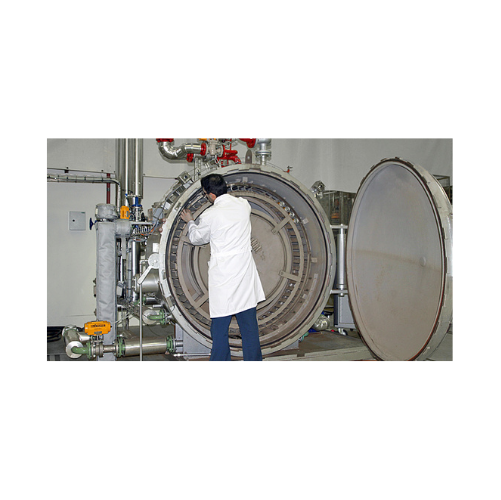
Pilot rotary retorts for laboratory sterilization
Optimize your prototype testing with precision thermal simulations to p...
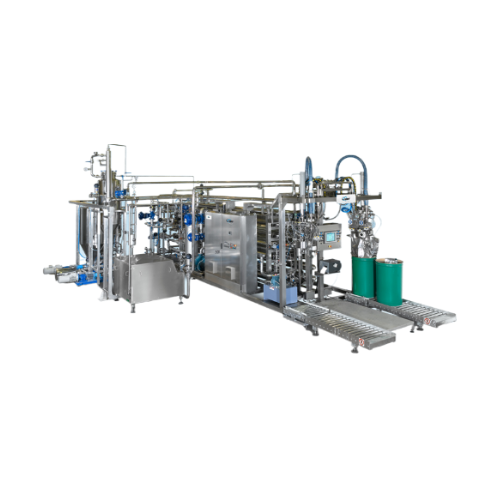
Aseptic processing system for food products
Streamline your food processing line with an efficient aseptic processing syst...
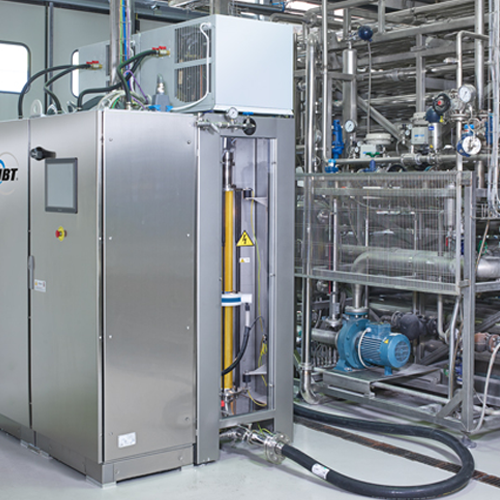
Heat exchanger for liquid and semi-liquid foods
Optimize your heating and cooling processes with superior heat transfer ef...
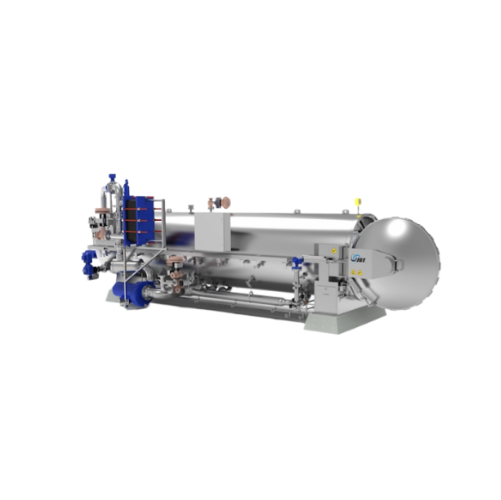
Agitating batch retort for food sterilization
Ensure superior heat distribution and precise control in your sterilization ...
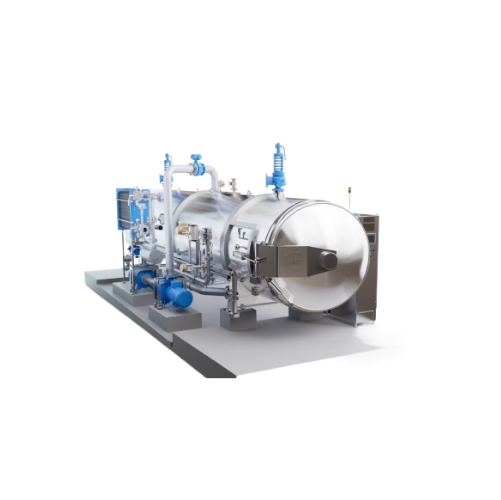
Industrial retort for food sterilization
Achieve uniform sterilization and cooling in your batch production processes while...
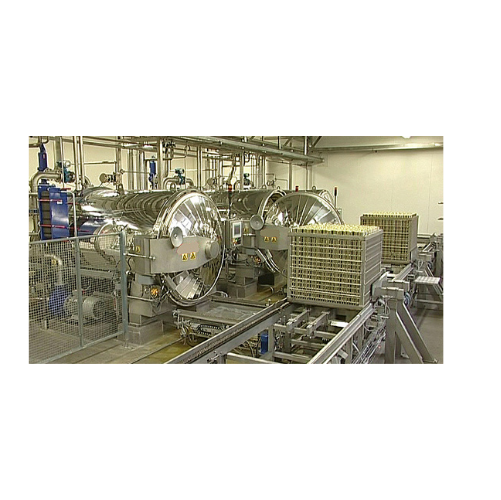
Automated batch retort system for food sterilization
Optimize your sterilization process with seamless transportation fro...
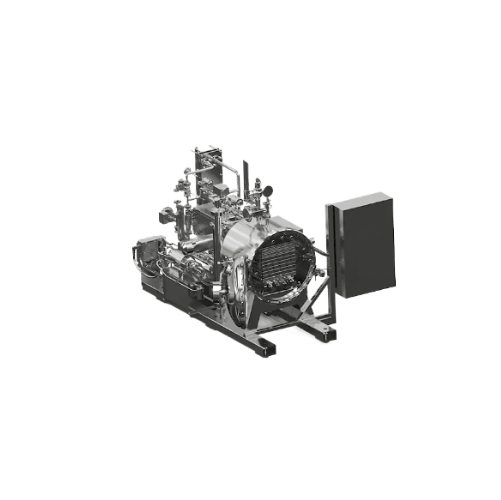
Efficient agitation system for retort packages
Enhance product quality and reduce processing time with this advanced agita...
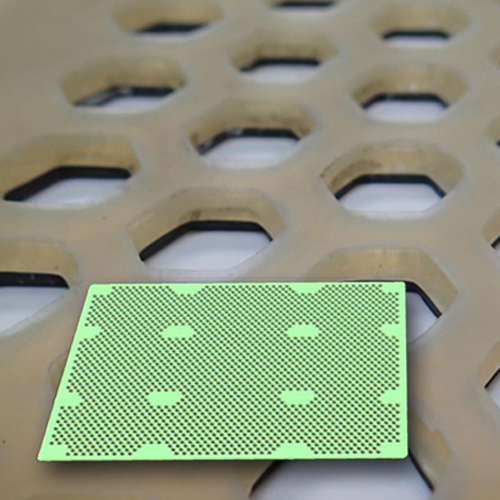
Layer pad for agitating retorts in food processing
Efficiently secure and process irregularly shaped containers in retort...
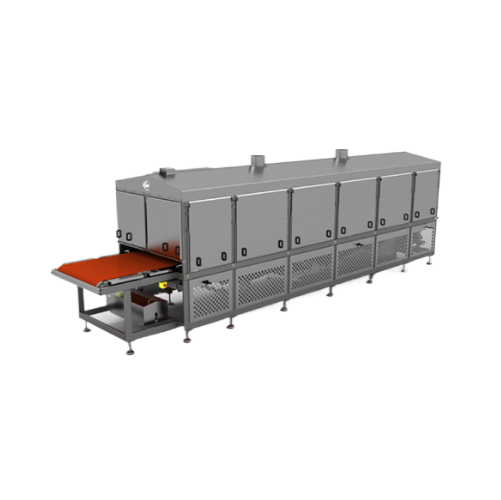
Contact cooker for browning and searing
Optimize your cooking process with continuous heat transfer technology that enhance...
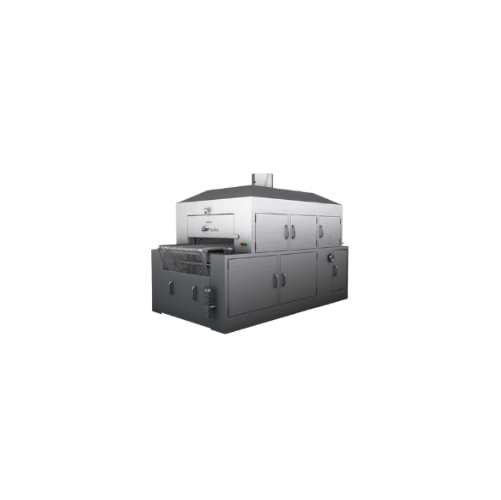
Chargrill and bar marker for protein searing
Enhance product appearance and taste with precision searing and grill marking...
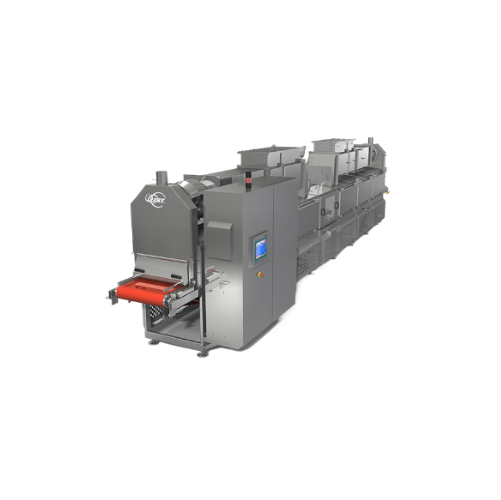
Industrial conduction and convection cooker for proteins and vegetables
Enhance your production line with advanced cook...
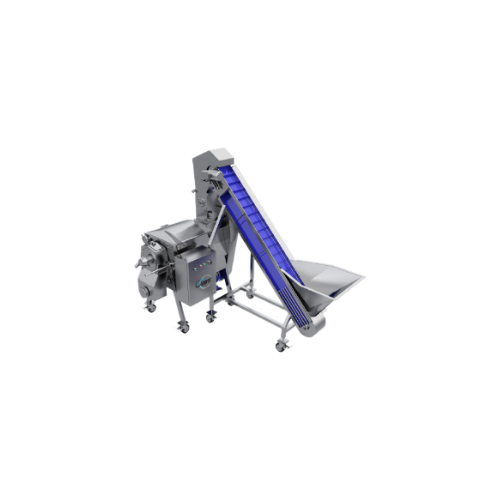
High speed fruit and vegetable juicer
Optimize your production with a high-capacity juicer designed to efficiently process ...
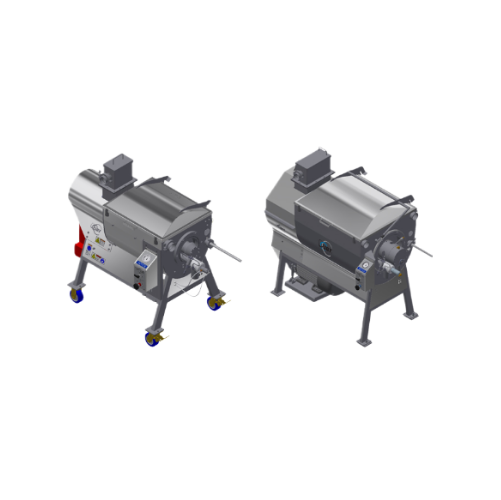
Screw finishers for citrus processing
Optimize your production line with screw finishers designed to efficiently separate l...
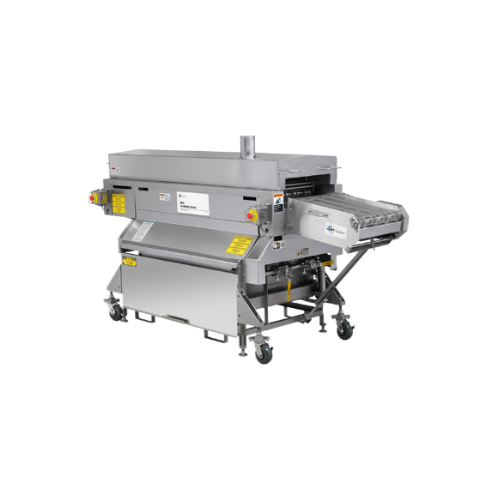
Laboratory fryer for food product development and small runs
Ideal for perfecting culinary creations, this fryer facilit...
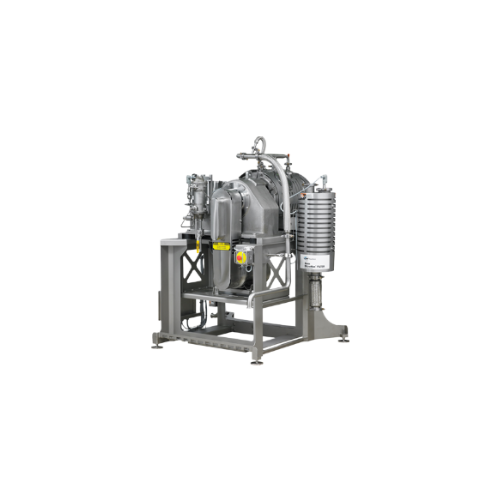
Centrifugal hot oil filter for frying applications
Enhance oil quality and extend usability with this advanced centrifuga...
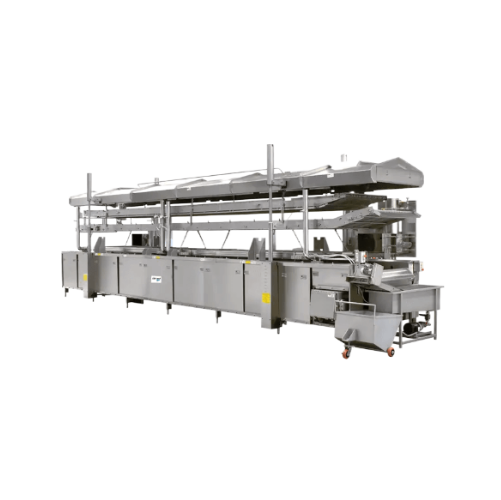
Conveyorized thermal fluid immersion fryer for coated food products
Optimize frying processes with precise heat control...
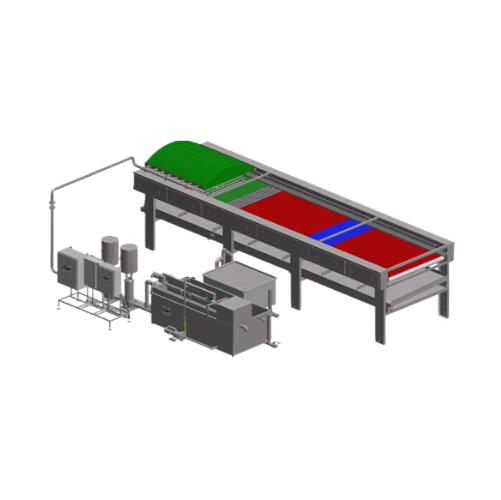
High pressure washer for citrus and avocados
Achieve perfect cleanliness in your fruit and produce processing with a syste...
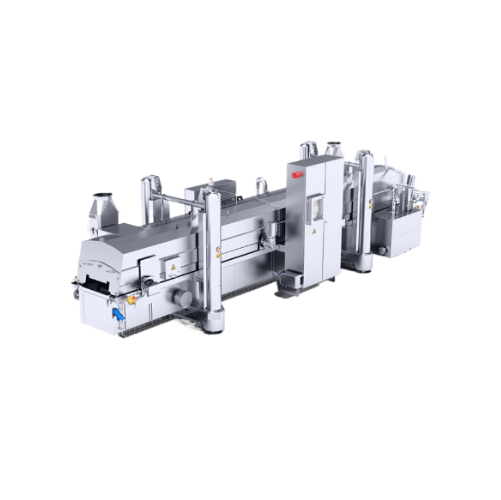
Industrial fryer for meatballs and vegetarian food
Enhance your production with a versatile industrial fryer that offers ...
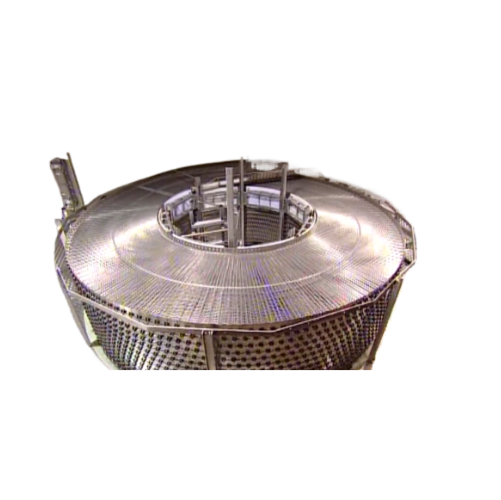
Self-stacking belt for industrial freezers
Enhance your production line with advanced self-stacking belt technology, desig...
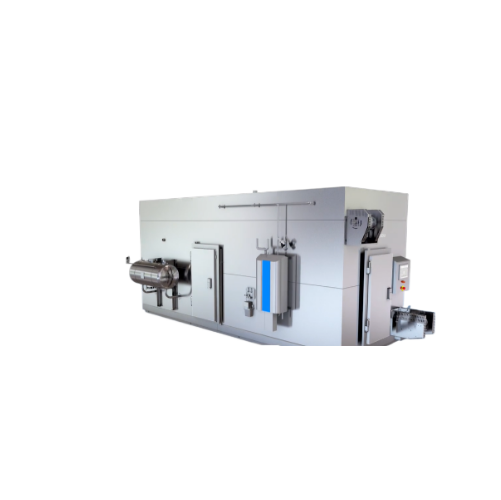
Compact spiral freezer for food processing
Enhance your production efficiency and hygiene standards with a compact, self-s...
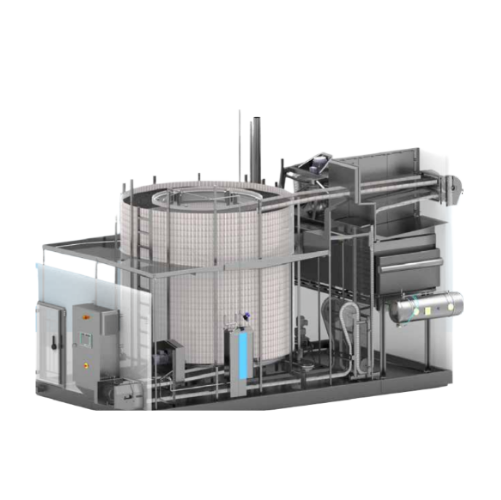
Spiral freezer for high-capacity food freezing
Enhance your production line by efficiently freezing up to 3,500 kg/hour, o...
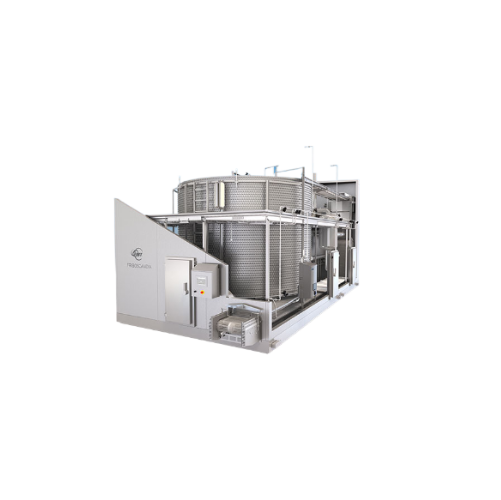
Spiral freezer for frozen food production
Optimize your product’s shelf life and quality with advanced freezing tech...
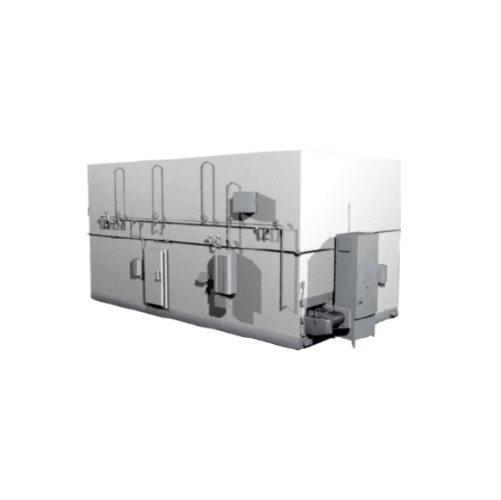
Industrial spiral freezer for high-volume food processing
Optimize your production line with a modular spiral freezer th...
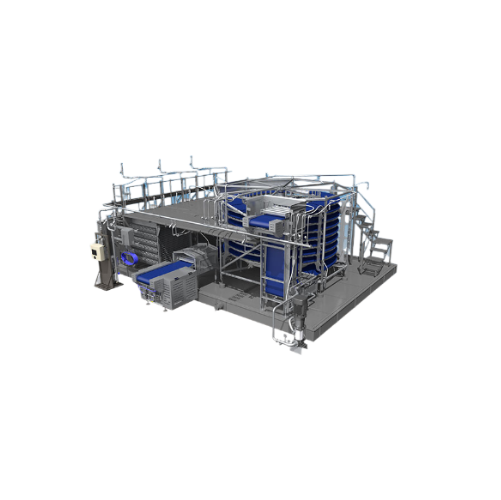
Spiral freezer for high-volume food products
Achieve rapid, sanitary freezing with this spiral system, designed to handle ...
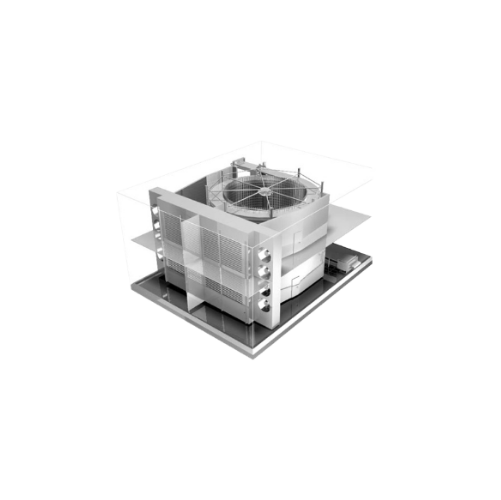
Industrial spiral freezer for high-volume processing
Optimize your high-volume food production with a robust spiral freez...
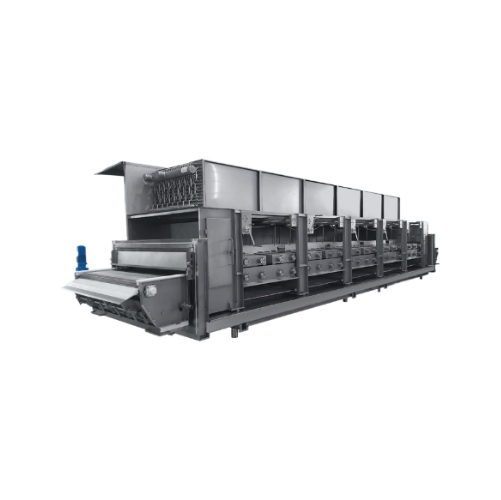
Impingement freezer for thin product freezing
Optimize your freezing process with advanced airflow, ensuring quick and uni...
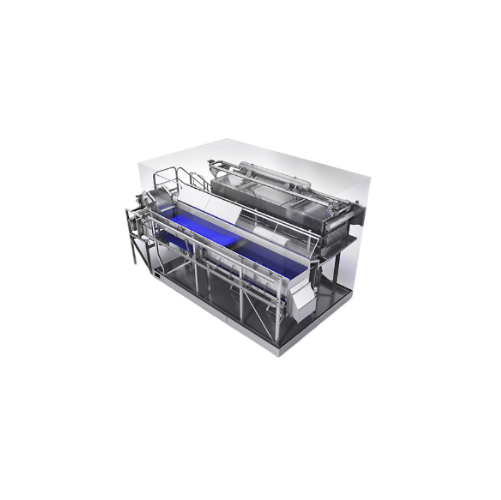
Iqf freezer for fruits and vegetables
Achieve perfect individual quick freezing with fluidization technology, ensuring deli...
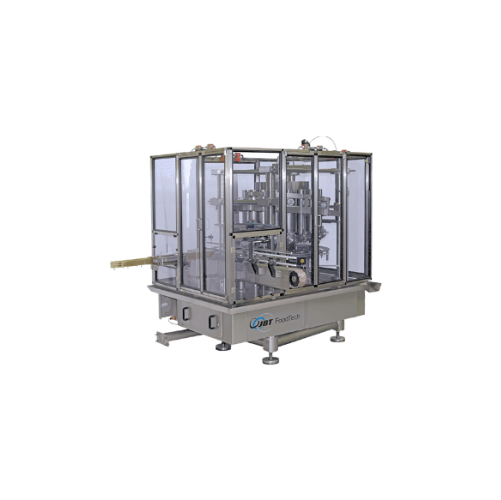
Volumetric piston filler for liquid and viscous products
Achieve precise volume control and enhance product integrity wit...
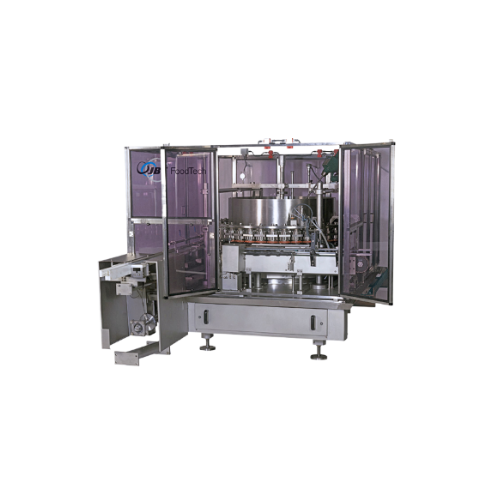
Vacuum filler for low viscous products
Achieve precise vacuum filling for liquid and granule products while effectively eli...
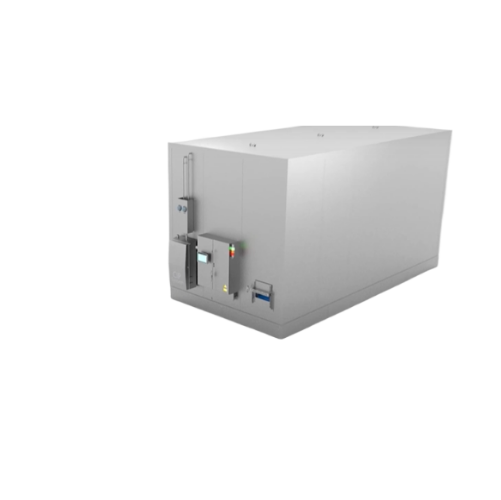
Spiral freezer for bakery and confectionery
Maximize space and efficiency while preserving the quality and freshness of di...
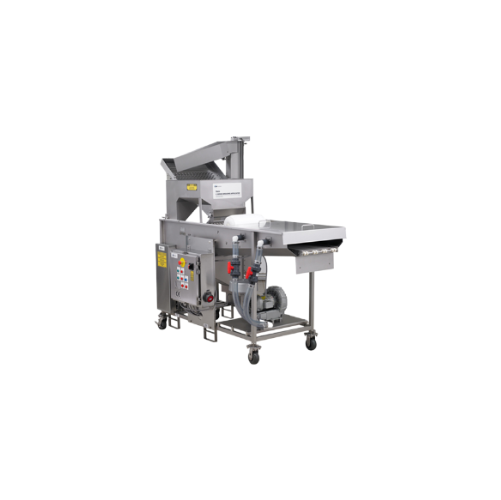
Economy breading applicator for granular coatings
Achieve consistent coating uniformity with a conveyorized breading syst...
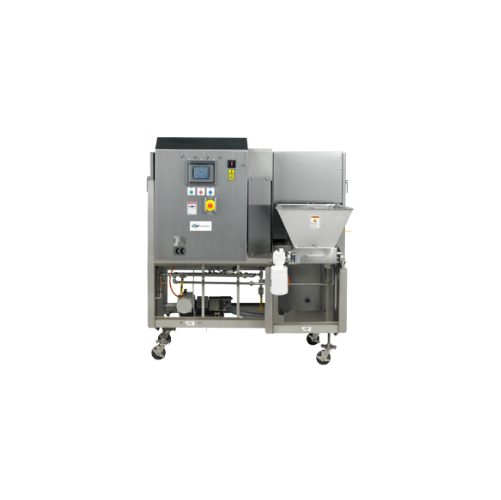
Automatic tempura batter mixer for poultry and seafood
Enhance the consistency and quality of your tempura coatings while...
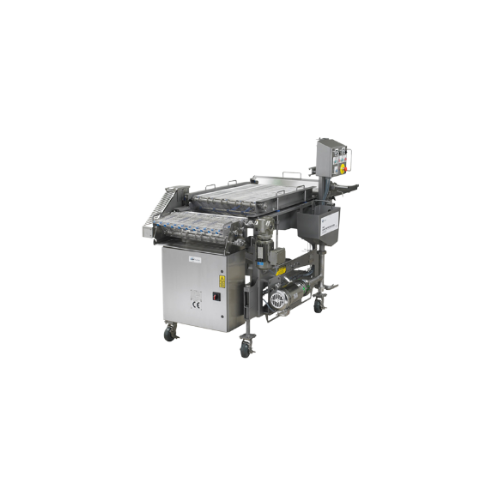
Batter applicator for poultry, meat, and seafood
Achieve precise batter application with adjustable submerger controls, en...
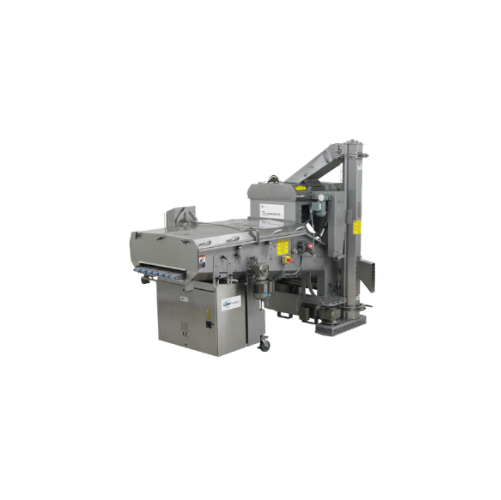
Breading applicator for poultry, meat & seafood products
Improve your production line with versatile breading and predust...
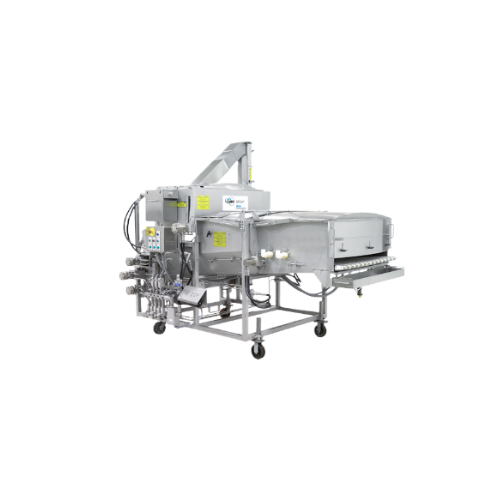
Breading applicator for high-volume poultry processing
Achieve uniform coating with precision hydraulics, ensuring every ...
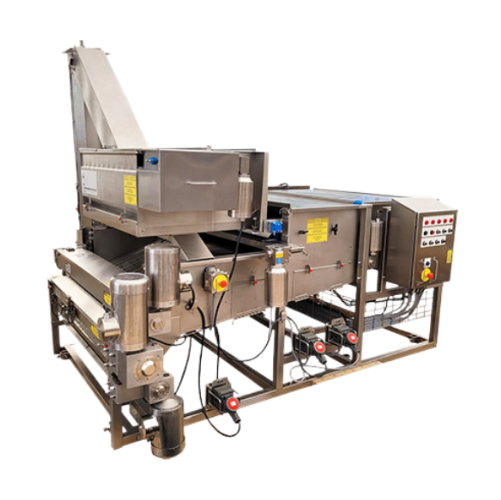
Electric breading applicator for high-volume food production
Enhance coating precision and ensure dust containment with ...
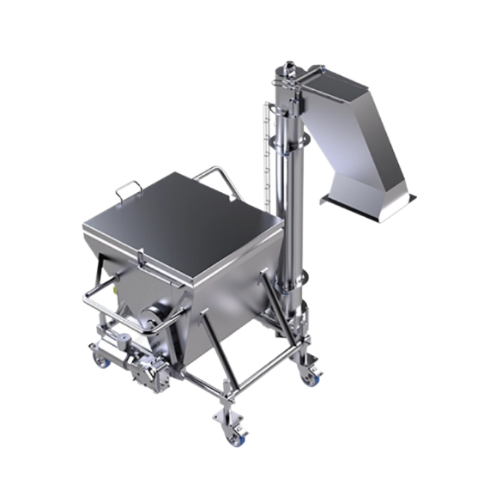
Flour and crumb feeders for breading and pre-dusting processes
Optimize your breading and pre-dusting operations with ad...
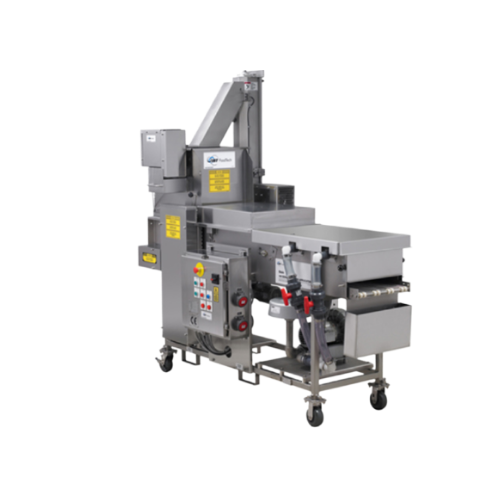
Breading applicator for poultry, meat & seafood
Ideal for optimizing your coating line, this applicator efficiently handle...
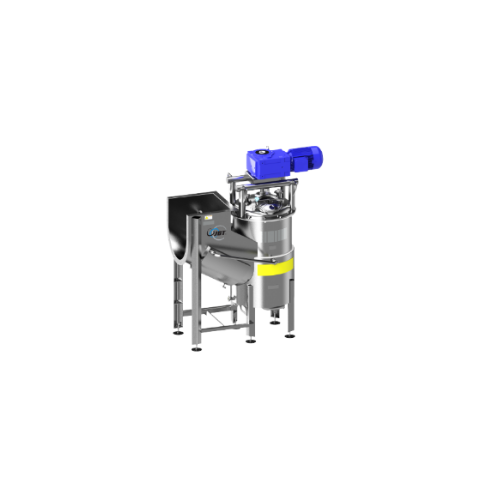
Industrial chopper blender for thawing frozen products
Quickly transform frozen produce into pumpable liquids, optimizing...
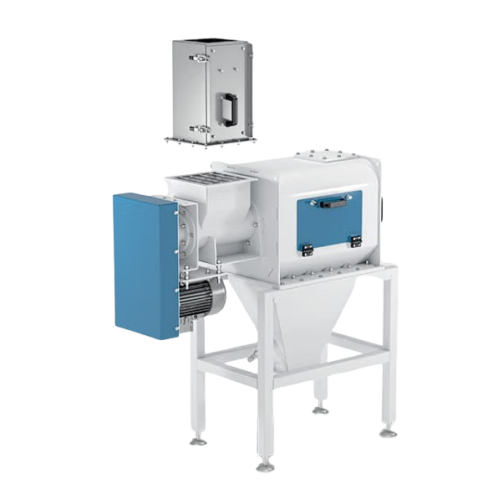
Rotary cleaner for raw material sieving
Ensure precise raw material quality with a rotary cleaner that efficiently sieves a...

Industrial refrigeration reciprocating compressor
Optimize your refrigeration systems with advanced reciprocating compres...
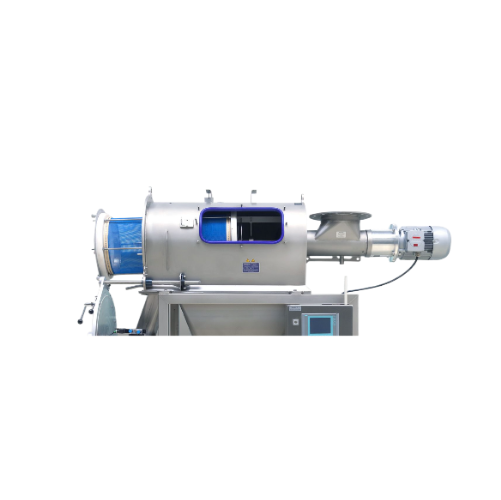
Rotary sifter for bulk material separation
Eliminate foreign particles and ensure precise grain size verification with a h...
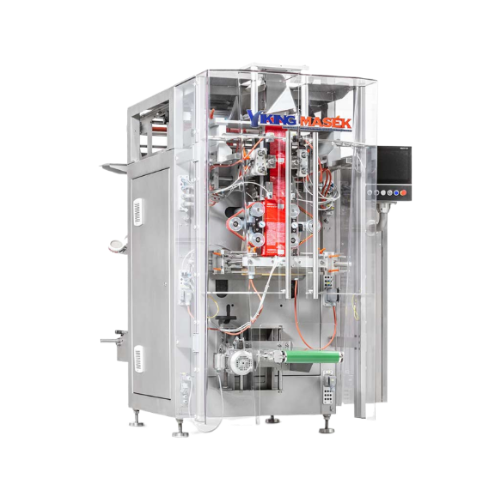
High-speed vertical form fill seal for various packaging needs
Streamline your packaging process with an advanced vertic...
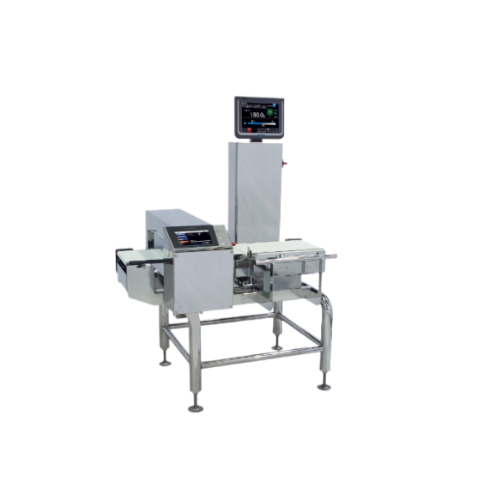
Product inspection systems for contamination control
Ensure product safety and compliance with precision inspection techn...
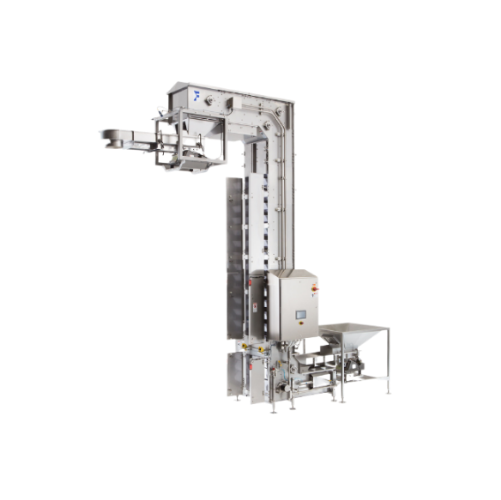
Automated infeed and outfeed systems for packaging lines
Streamline your production line by integrating reliable infeed a...
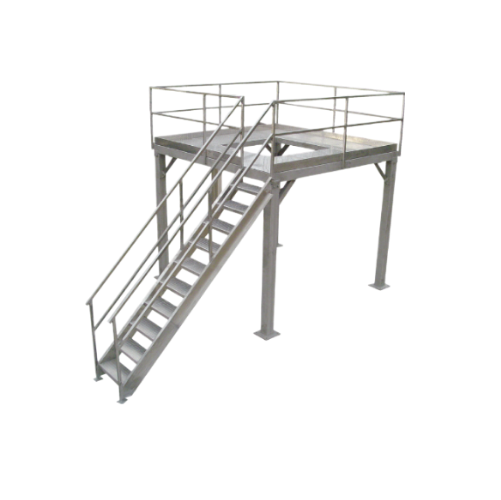
Support structures for packaging lines
Enhance safety and efficiency in your production line with robust support structures...
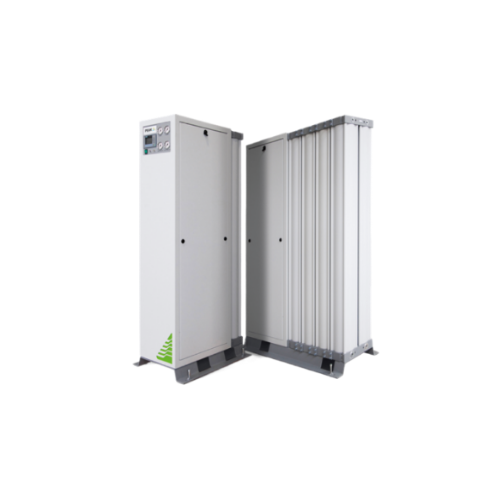
Modified atmosphere packaging solutions for perishables
Extend the freshness and shelf life of perishable goods with prec...

Robotic palletizing and depalletizing systems
Enhance your production efficiency by automating the repetitive and labor-in...
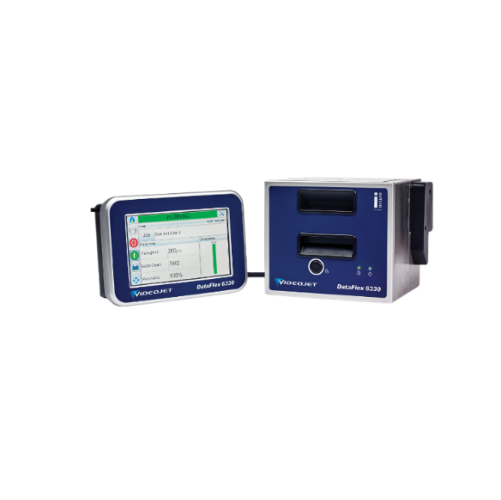
Industrial printers and labelers for packaging
Ensure precise package identification and traceability with robust printing...
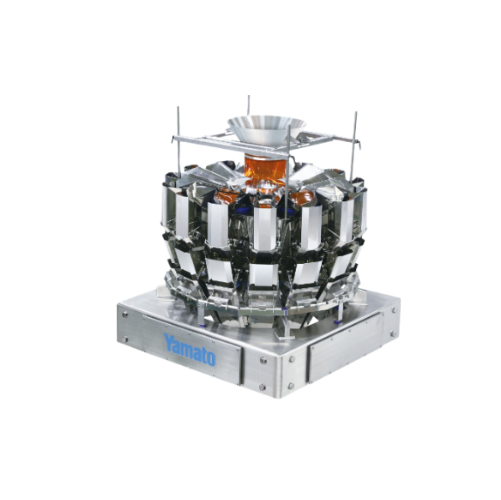
Industrial product fillers for precise packaging
Achieve consistent package weights and volumes with precision filling sol...
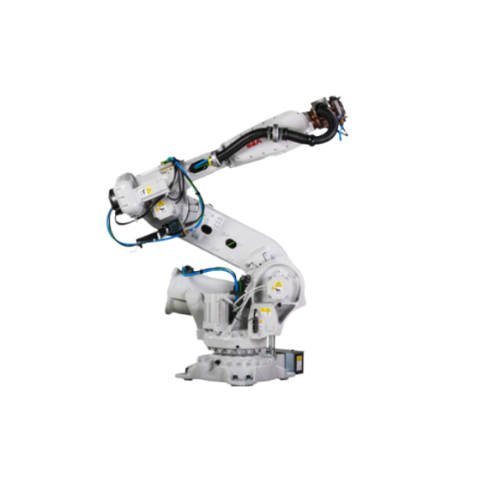
Robotic packaging integration for automated systems
Enhance your production line efficiency with seamless robotics integr...
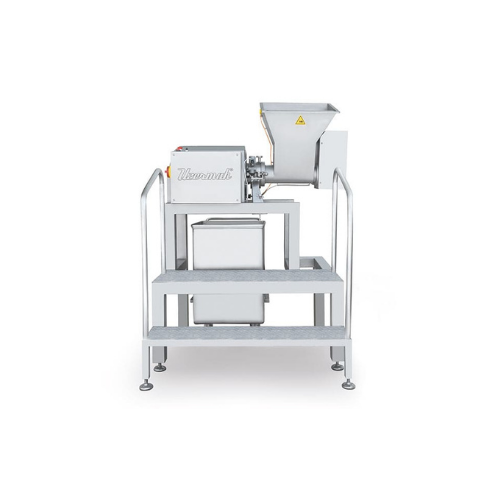
Mechanical homogenizer for fine cutting and emulsifying
Achieve precise particle size control and consistent texture in y...
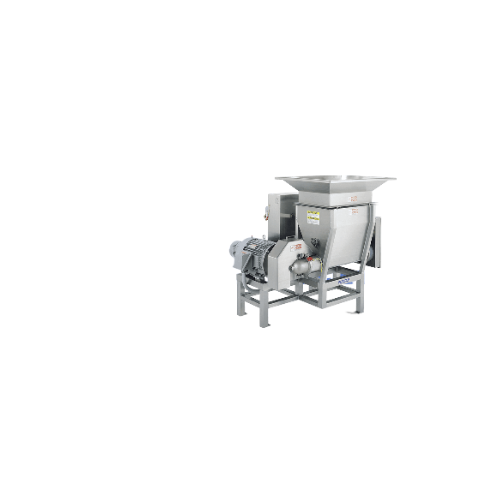
Industrial milling systems for food processing
Streamline your food production line with robust milling and cutting soluti...
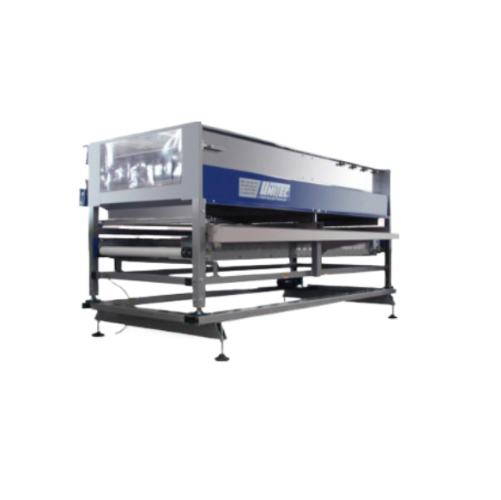
Brushing systems for agricultural produce
Enhance the precision and efficiency of fruit and vegetable processing with vers...
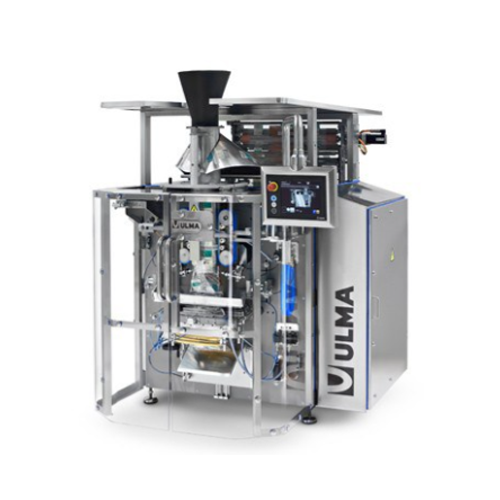
Vertical packaging system for medium-high speed applications
Optimize your packaging line with a system that delivers pr...
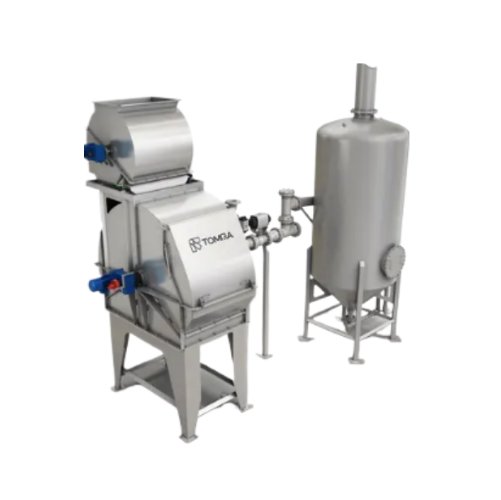
Steam peeler for vegetables and fruits
Optimize your food processing with a versatile steam peeling solution that efficient...
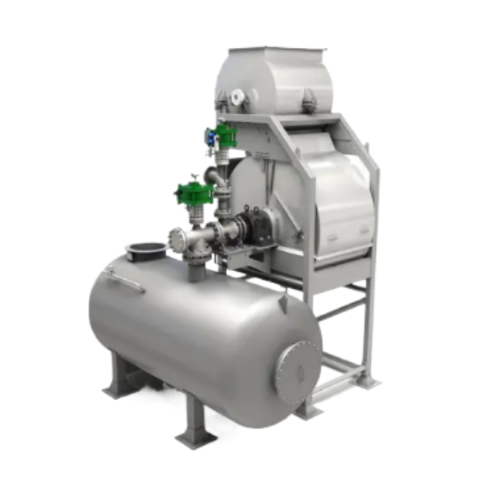
Steam peeler for vegetables
Optimize your peeling process with a versatile steam peeler that minimizes waste and enhances th...
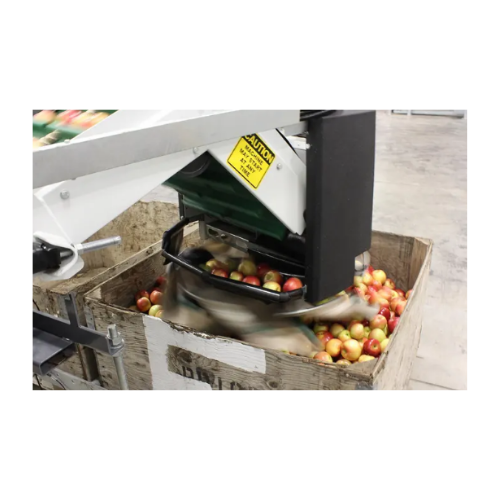
Dry bin filling for delicate fruit
Achieve gentle, high-throughput filling of delicate fruits with minimized manual interve...
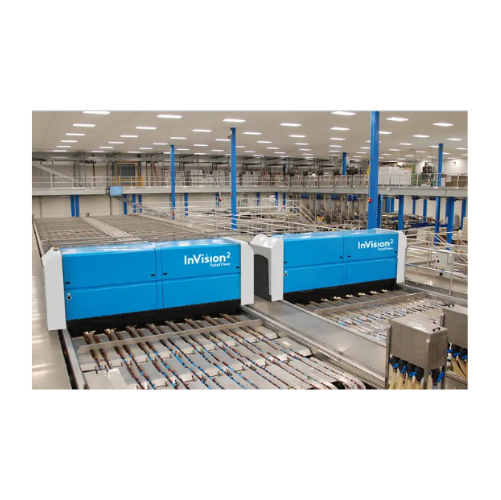
Small fruit sorter for sensitive cherry varieties
Optimize your packhouse throughput and consistency with advanced sortin...
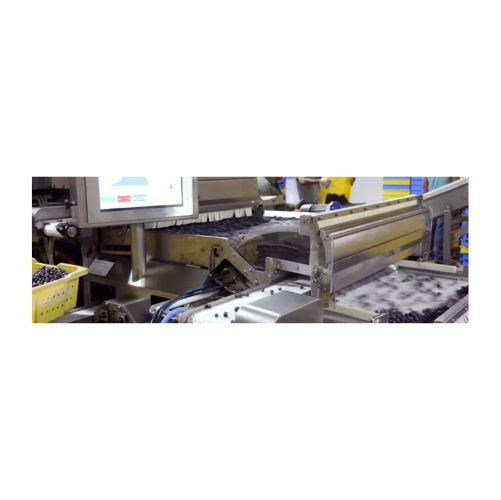
Soft fruit sorter for packing lines
Enhance your production line’s efficiency by accurately sorting and removing unwa...
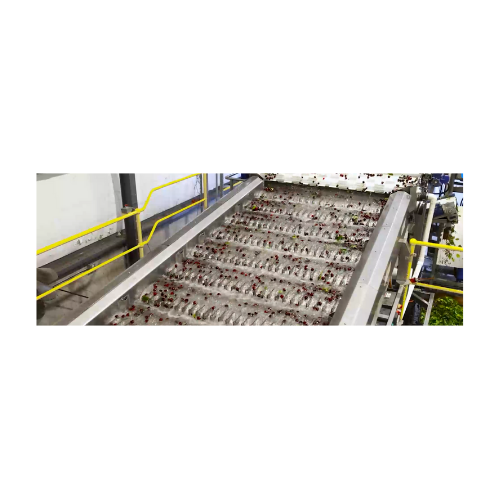
Cherry singulation system
Effortlessly streamline cherry processing with a system that ensures gentle handling and superior ...
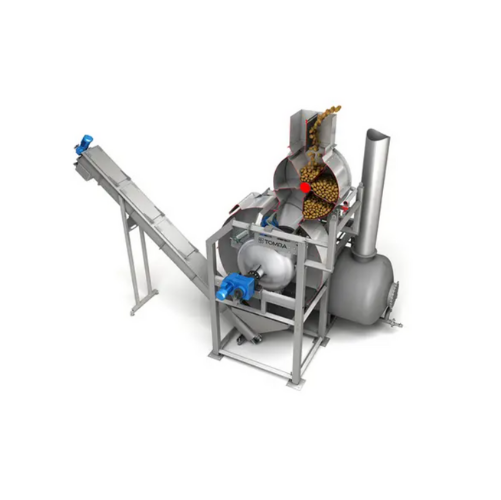
Industrial steam peeler for potatoes
Optimize peeling efficiency while minimizing waste and energy usage with this high-spe...
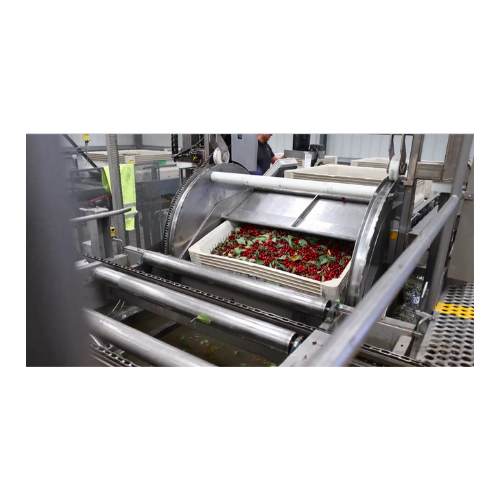
Cherry sorting system with deep learning technology
Boost your fruit processing efficiency by utilizing advanced deep lea...
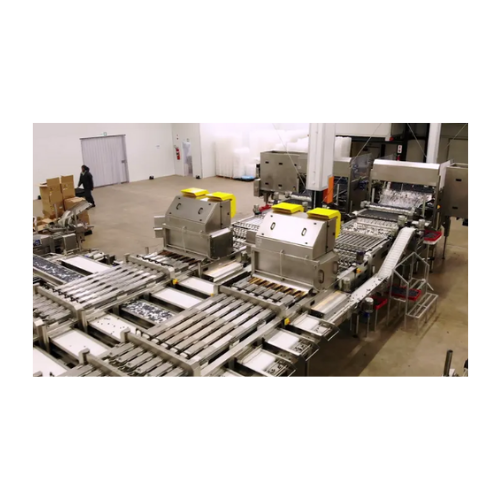
Blueberry sorting and grading system
Enhance your fruit processing line with a cutting-edge system designed for precision s...
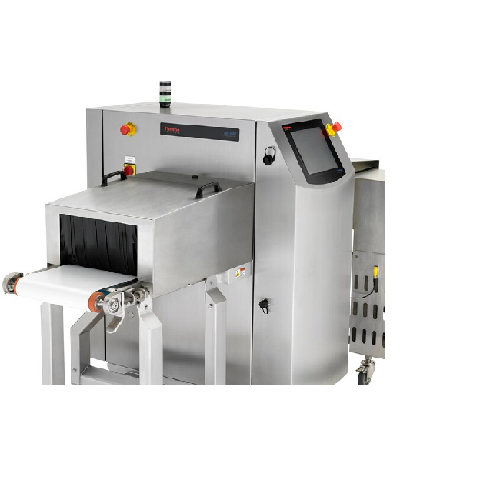
X-ray detection for food inspection
Ensure product integrity in high-speed packaging lines by detecting metallic and non-me...
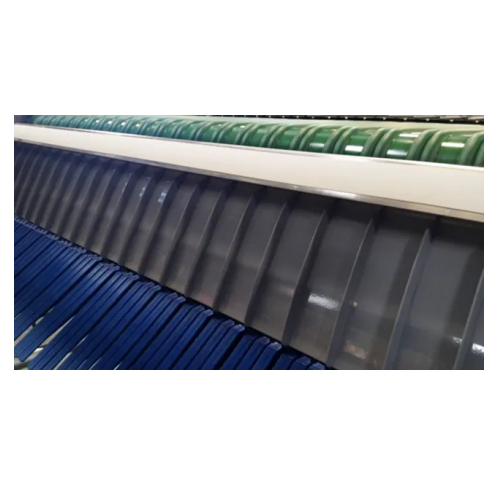
Corn seed sorting solution
Ensure precision in sorting and grading corn with optical and infrared technologies, enhancing pr...
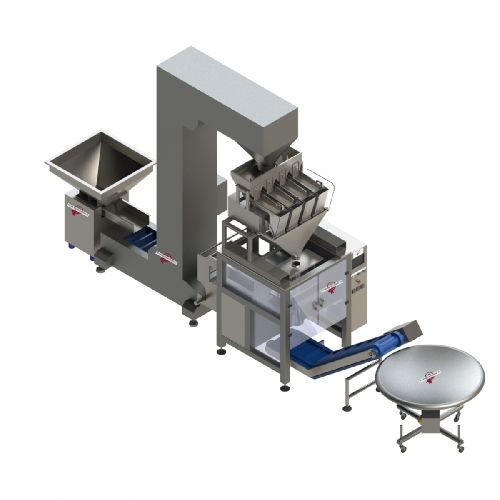
Modular linear packing system for granular products
Streamline your packing operations with a versatile system that integ...
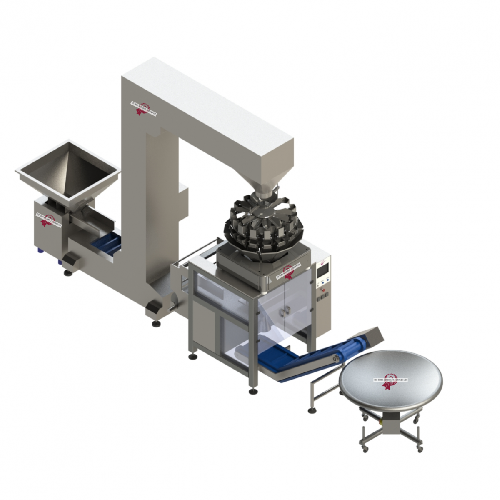
Modular packing system for multihead weighing
Streamline your production with a versatile multihead system designed for pr...
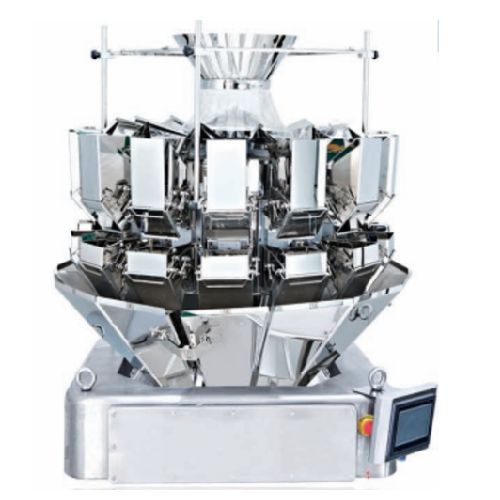
multihead weigher for dry products
Optimize your production line with precise weighing for dry products, ensuring high-spee...
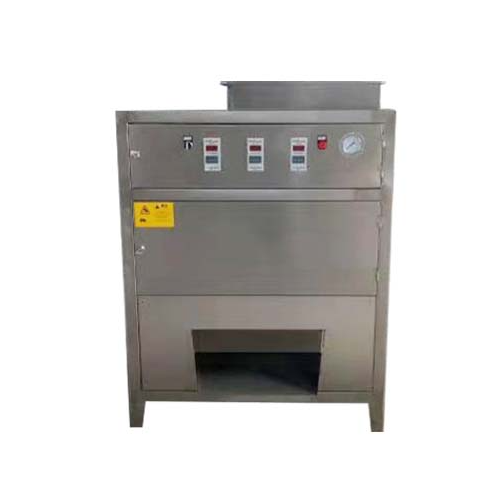
Automatic onion peeling system
Efficiently peel and prepare onions with precision using this high-speed, fully automatic sys...
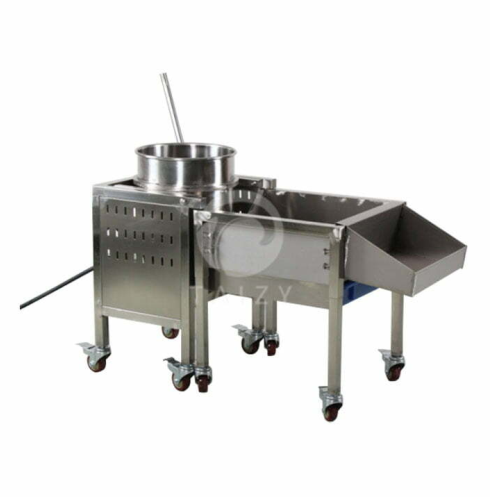
Industrial cereal popcorn making solution
Enhance your snack production with a versatile solution designed for creating a ...
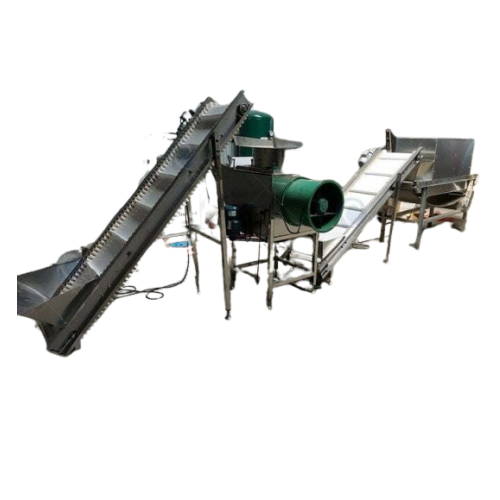
Garlic splitting and peeling line
Streamline garlic processing with this high-speed line designed to efficiently split, pee...
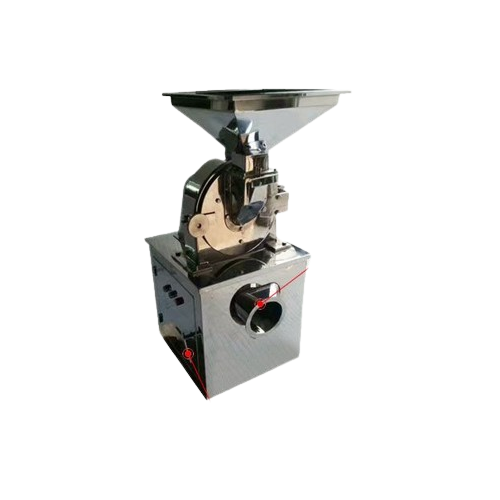
Chili powder milling machine
Transform raw spices into finely milled powders effortlessly with this high-speed grinding solu...
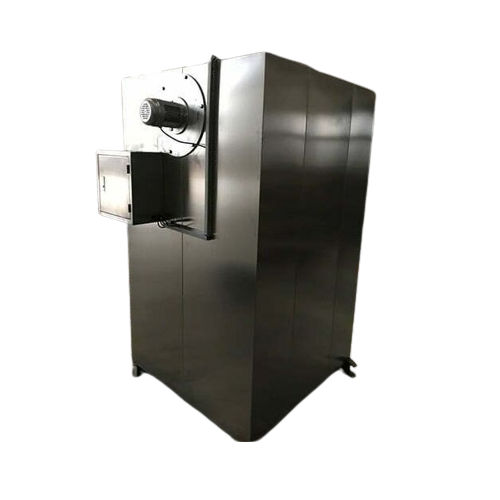
Industrial food drying oven
Achieve efficient dehydration and heat curing with precision control, ensuring uniform drying ac...
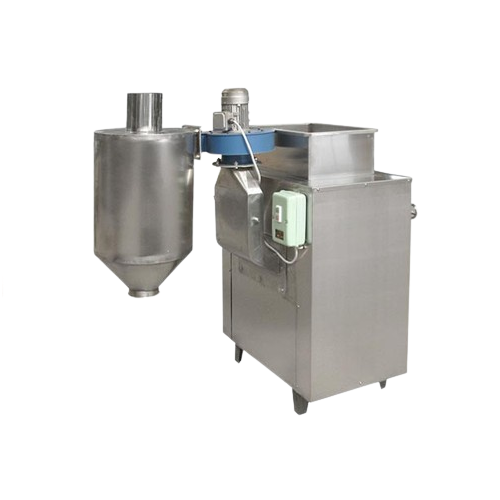
Cocoa bean peeling solution
Enhance your cocoa and coffee production with efficient peeling, reducing waste and ensuring hig...
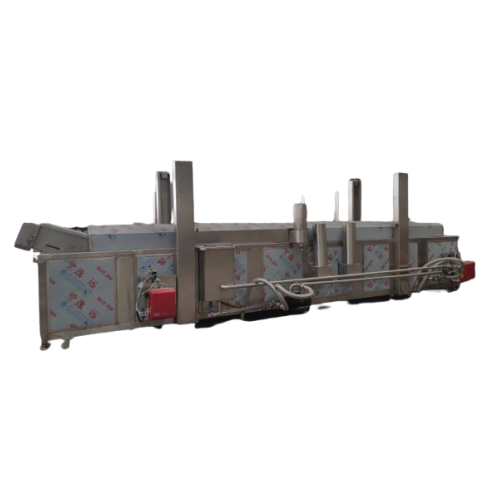
Continuous fryer for high-capacity industrial frying
Achieve consistent high-capacity frying with this continuous mesh be...
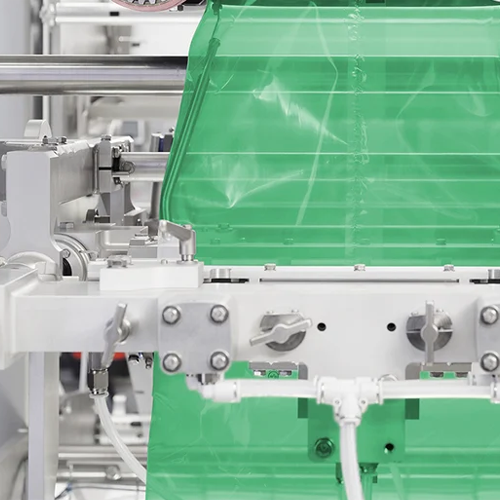
Vffs packaging solution for diverse bag styles and high hygiene standards
Enhance your packaging operations with high-...
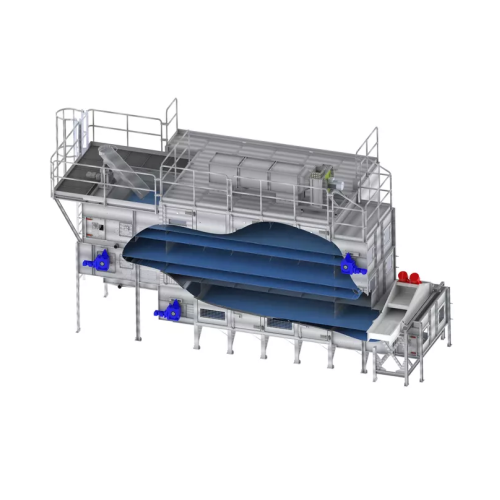
Layer dryer for food and pet food applications
Optimize drying efficiency with multi-layer technology that minimizes space...
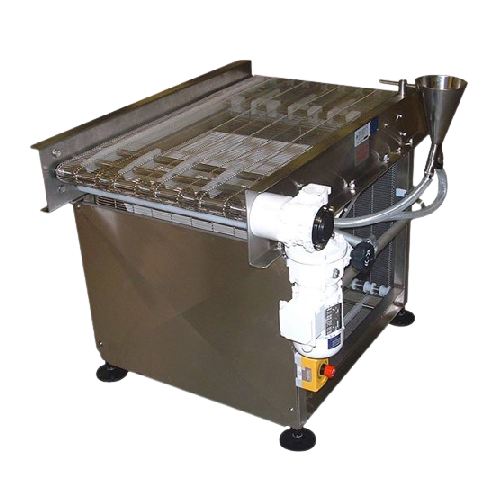
Electrostatic drum flavouring for uniform coating
Achieve precise and uniform flavor distribution on snack products with ...
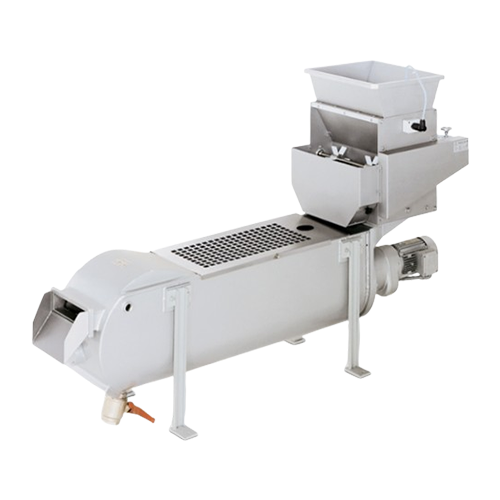
Continuous mixer for confectionery and bakery ingredients
Maximize production efficiency by seamlessly integrating mixin...
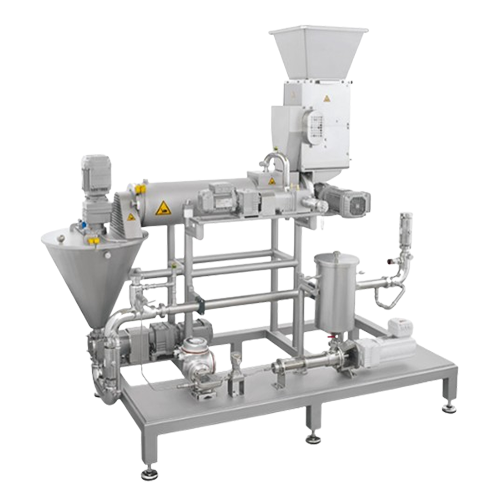
Flavour and colour dosing system
Simplify production by efficiently incorporating various flavors, colors, and solid inclusi...
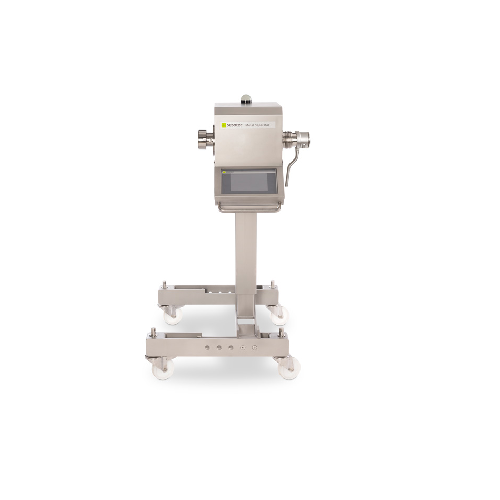
In-line metal detector for liquids & pastes
Ensure product safety by seamlessly integrating a metal detection system into ...
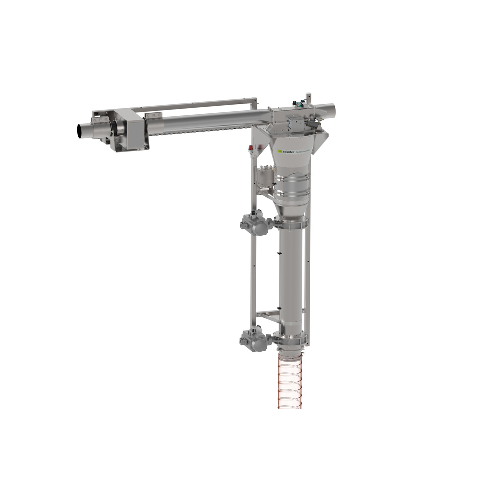
In-line metal detector for pneumatic systems
Ensure product purity and operational efficiency with a solution that effecti...
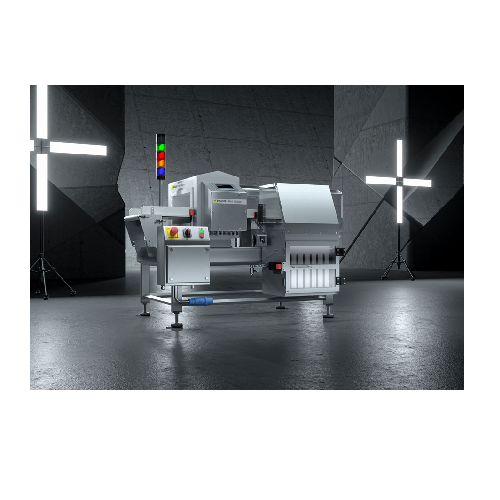
Conveyor belt metal detection system
Ensure seamless product safety with a system that detects and separates metallic conta...

Metal detector systems for conveyor belts and chutes
Ensure the integrity of your production line by efficiently detectin...
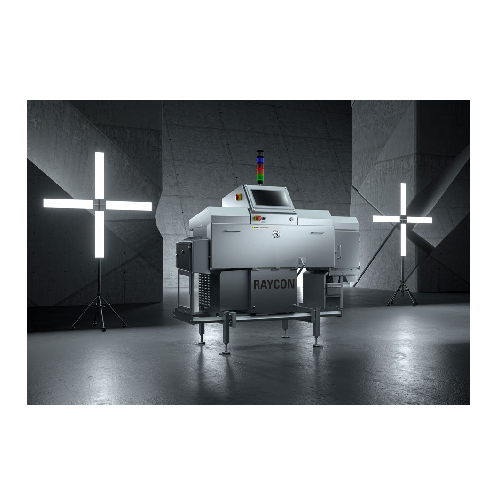
X-ray inspection system for unpackaged bulk products
Ensure product purity and safety in high-speed production lines with...
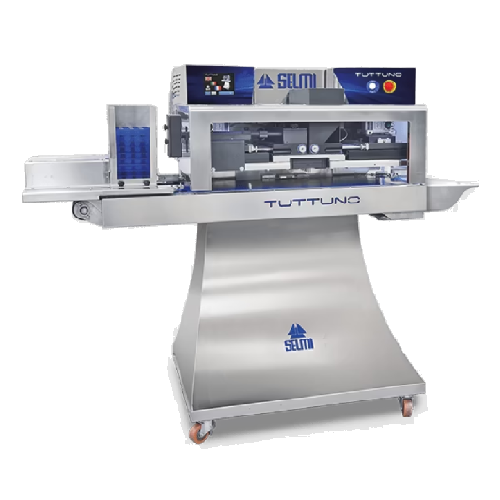
Simultaneous chocolate dosing solution
Achieve high-precision chocolate and ganache filling in a single step with this effi...
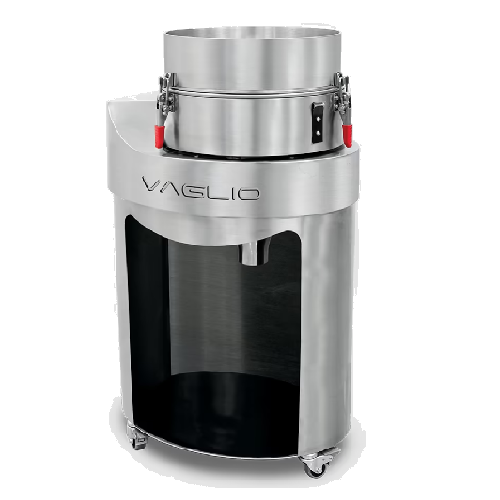
Sieve for bean to bar chocolate filtering
Ensure consistency and safety in your chocolate production by eliminating impuri...
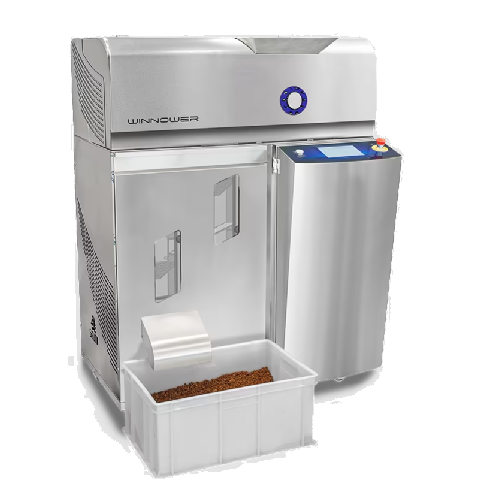
Cocoa bean winnower
Transform roasted cocoa beans into nibs efficiently, ensuring precise separation of cocoa from its shell,...
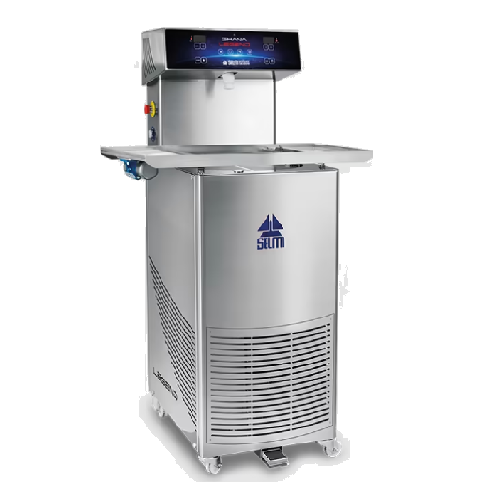
Professional chocolate tempering system for chocolatiers
Achieve precise chocolate tempering with advanced digital contro...
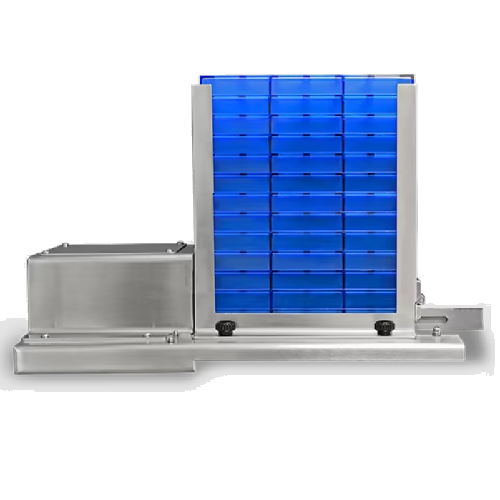
Automatic chocolate mould loader
Streamline your chocolate production with seamless mould loading, optimizing efficiency in ...
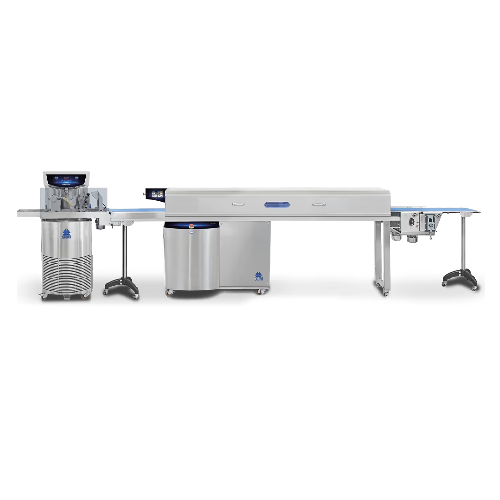
Chocolate enrobing, moulding, and cooling tunnel
Optimize your chocolate production with this advanced tunnel, designed fo...
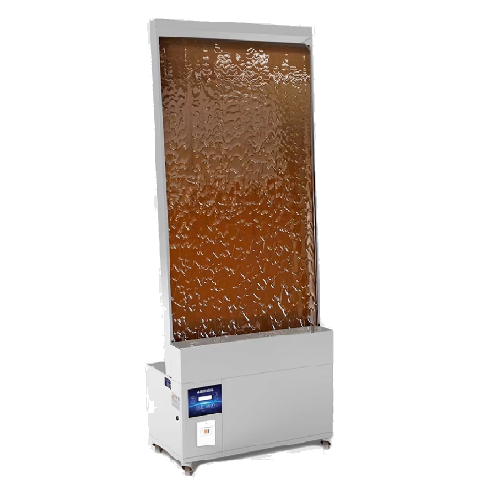
Wall chocolate fountain for continuous chocolate flow
Create a mesmerizing ambiance with a seamless chocolate waterfall, ...
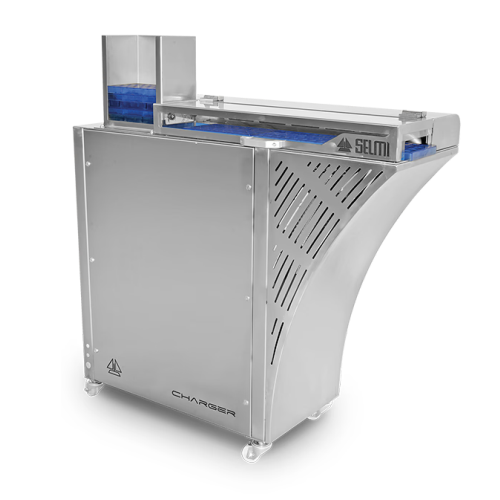
Automatic heated mould loader for chocolate production
Streamline your chocolate production with this heated mould loader...
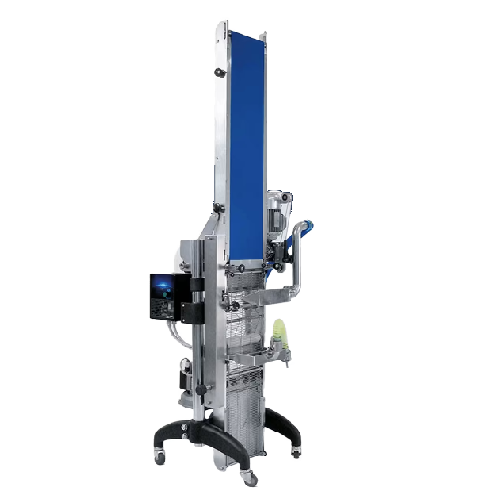
Chocolate enrobing belt for tempering machines
Enhance your chocolate production line with precise control over coating an...
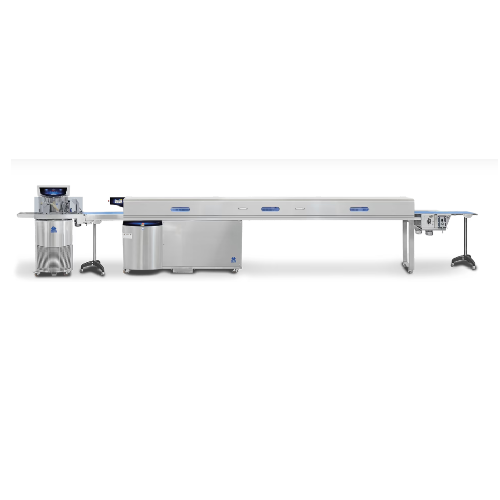
Chocolate enrobing and cooling tunnel 300/400 mm
Ensure seamless enrobing and precise cooling for chocolate products with ...
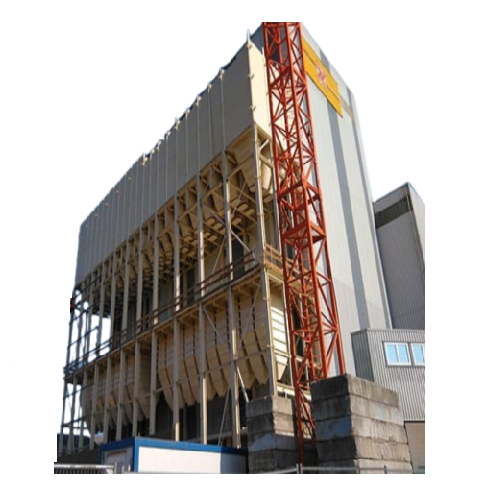
Sanitary modular bulk silos for efficient storage
Maximize your storage capacity and streamline assembly with a modular s...
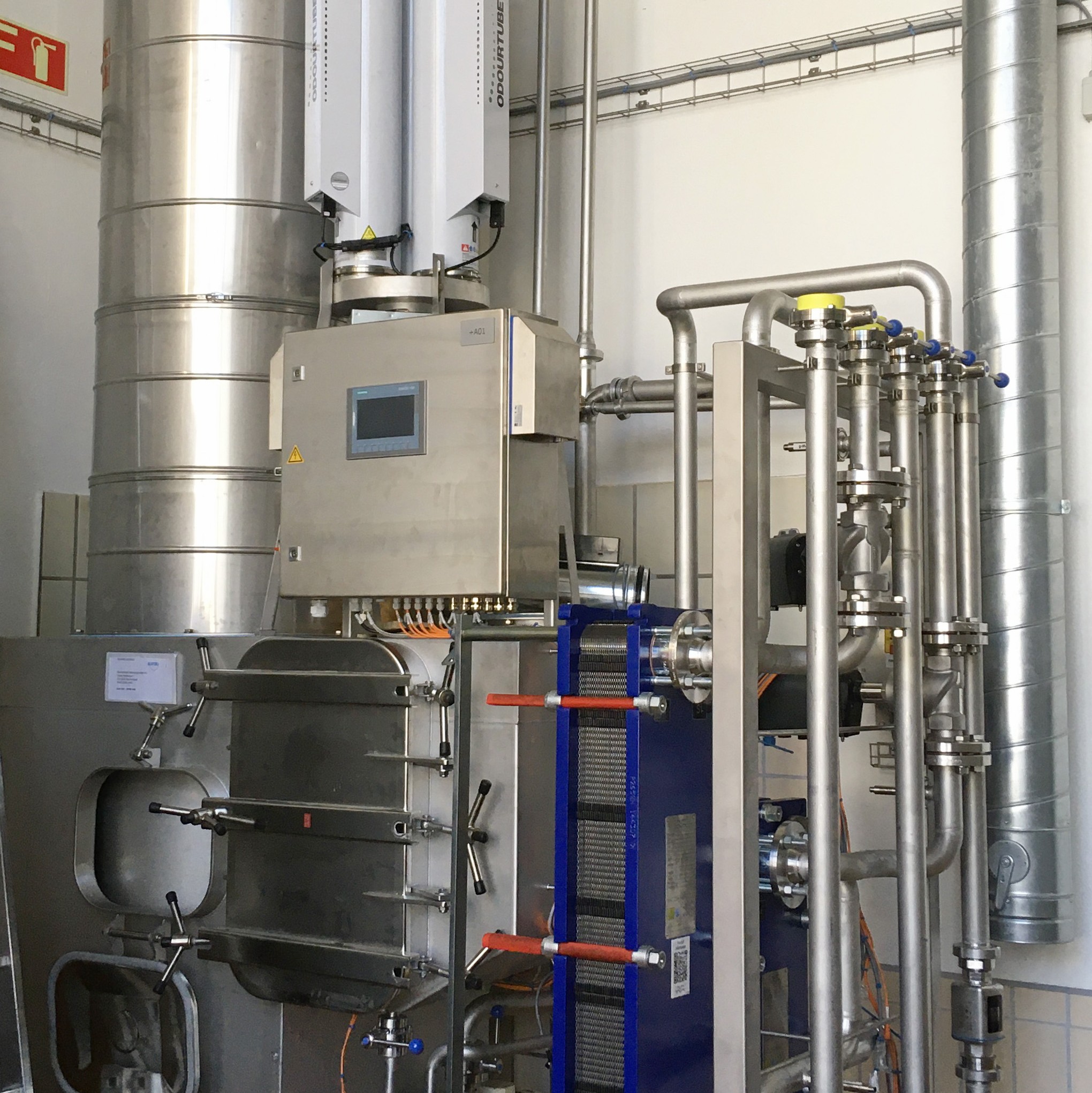
Energy recovery unit for potato chips production line
Manufacturers of French fries and potato chips require a lot of ene...

Vacuum and Gas Injection System for FIBCs
Products packed in large bulk bags, such as FIBCs, require vacuum pressure and a...
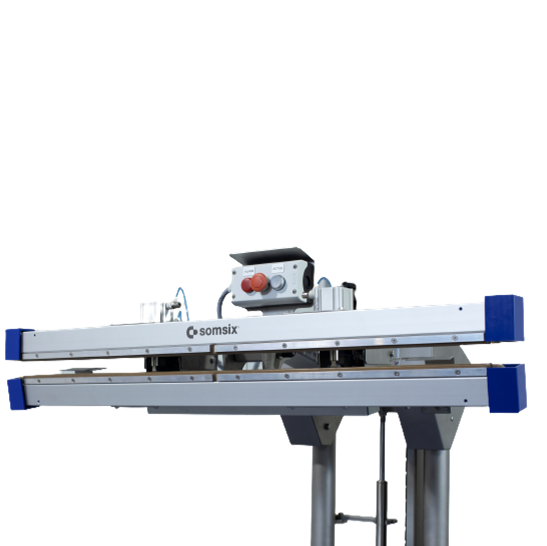
Automatic FIBC Sealing machine
When sealing large bags containing bulk products, a sealer must be reliable to keep the MAP s...
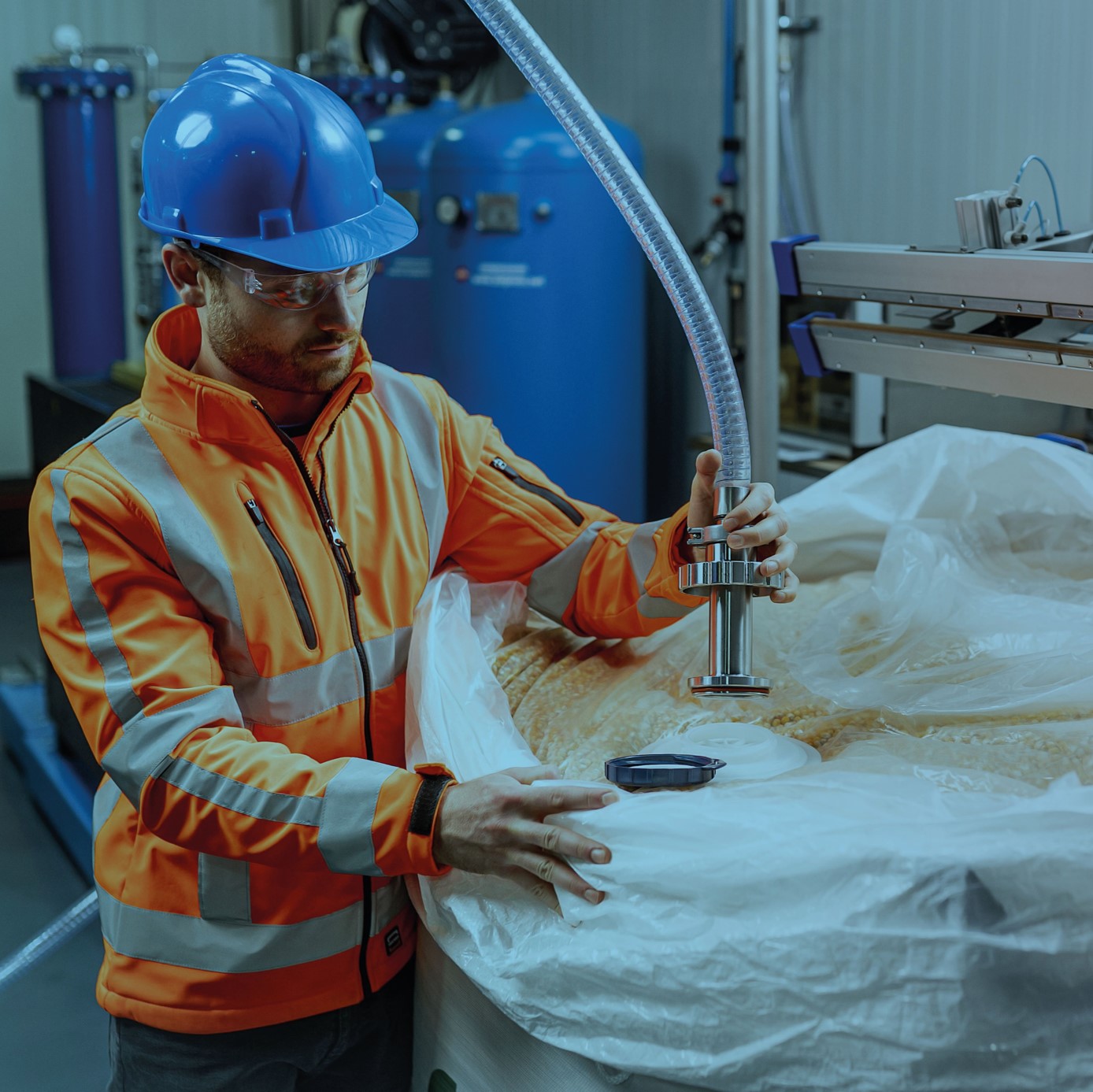
Sensor for Modified Atmosphere FIBCs
Every year, more than 200 million FIBCs are filled with food for storage and transport...
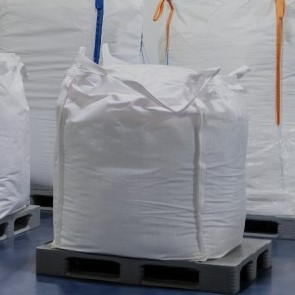
Modified Atmosphere Big Bags
Manufacturers requiring big bag packaging have specific sizes, shapes, and material requirement...
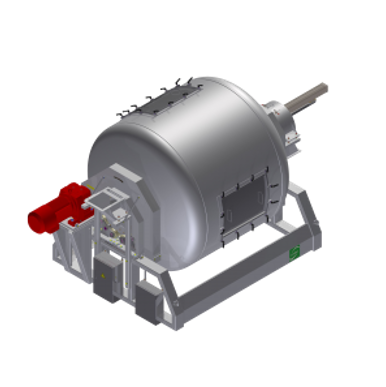
Gentle mixer for tea blending
The blending process is critical to the flavor quality of tea. But the physical impact of the ...
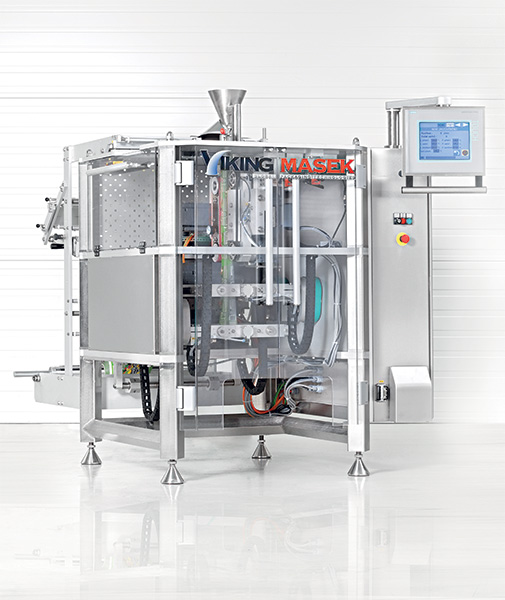
Continuous bagger with twin sealing jaws
If you want to pack into gusseted and pillow style bags and packing speed is impor...
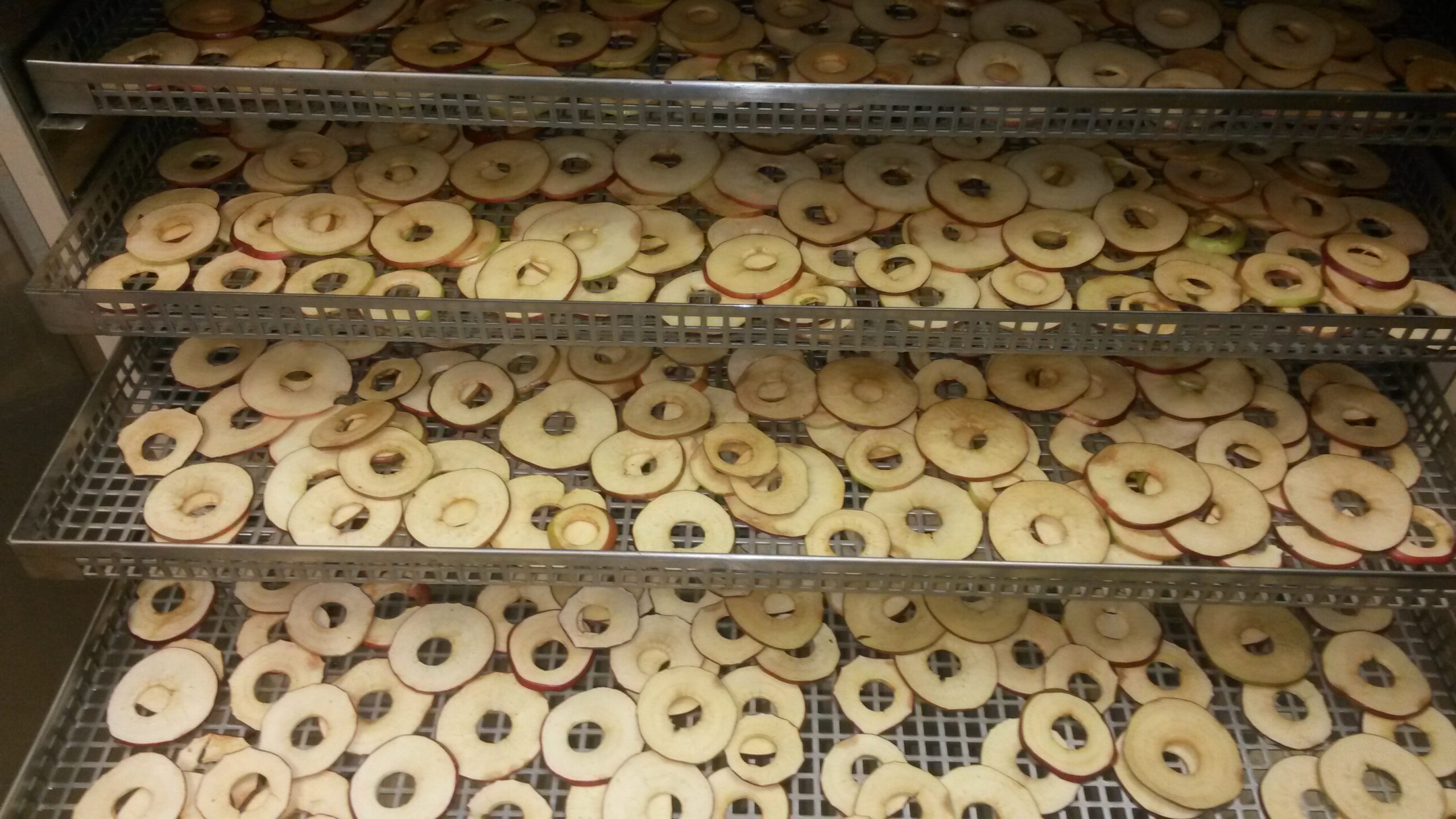
Energy saving cabinet dryer for food
Traditional drying systems use a lot of energy and take a long time to dry the product...
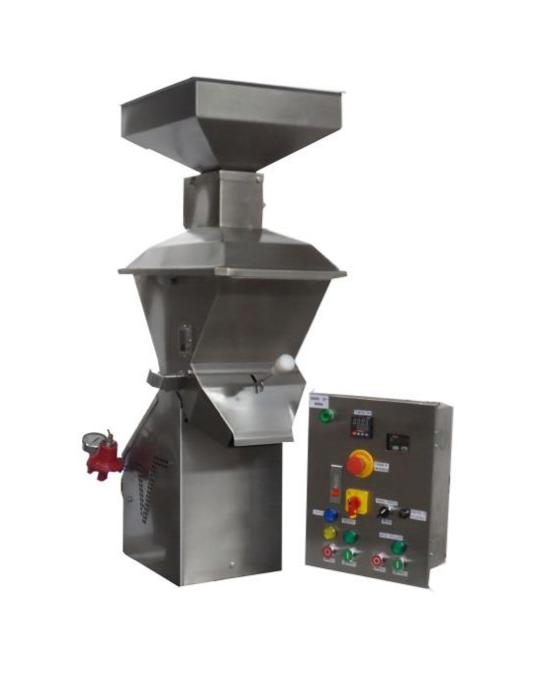
Entry level cocoa roaster
The biggest challenge that small-scale cocoa processing manufacturers face is even and thorough ro...
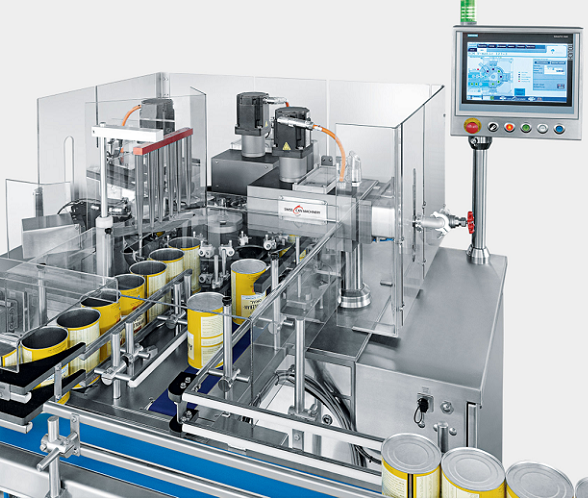
Seaming machine for infant formula cans
Packaging of food products, but especially those for babies, like infant formula, i...
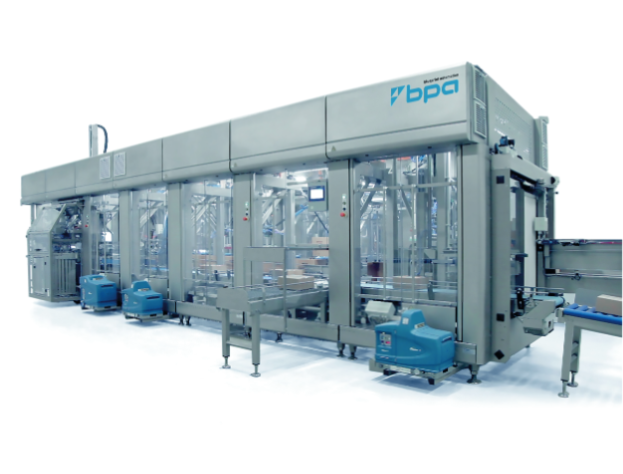
Robotic case packing machine for snack bags
Automated packing with robotic suction arms can quickly pickup packaged produc...
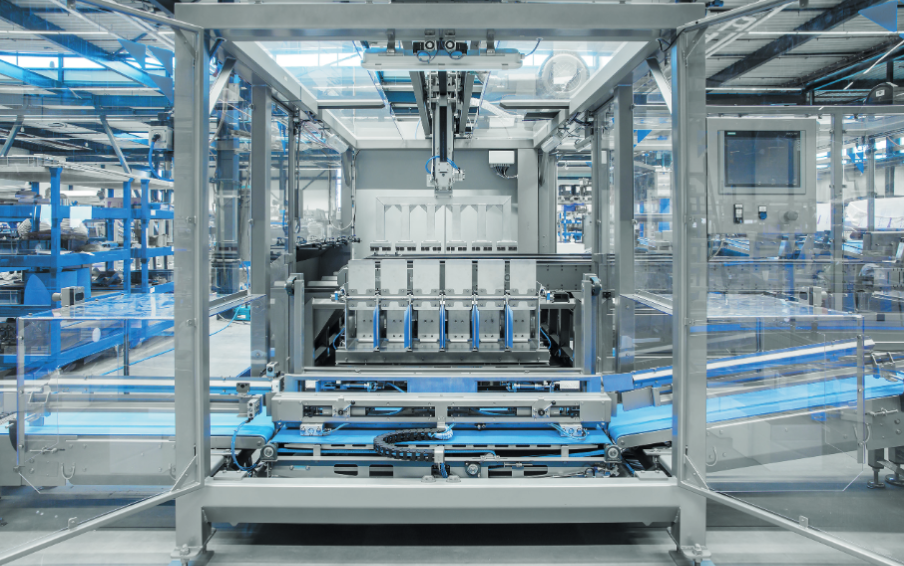
Confectionery bags case packer for large scale
Mass production lines need faster and more efficient package processing to ...
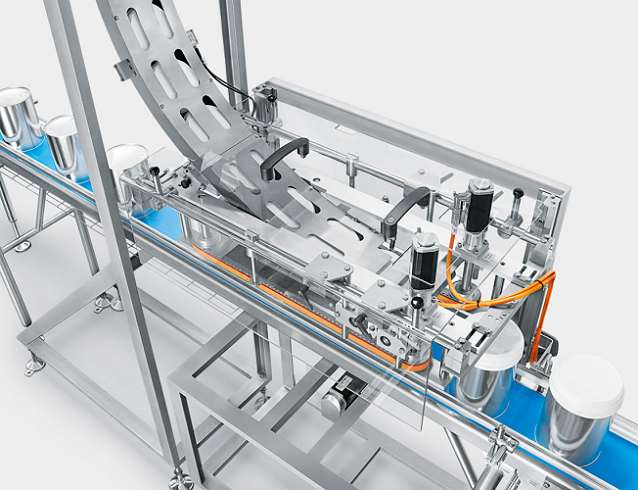
Capping machine for plastic lid oatmeal tins
Some products ask for a plastic reusable lid after the can has been sea...
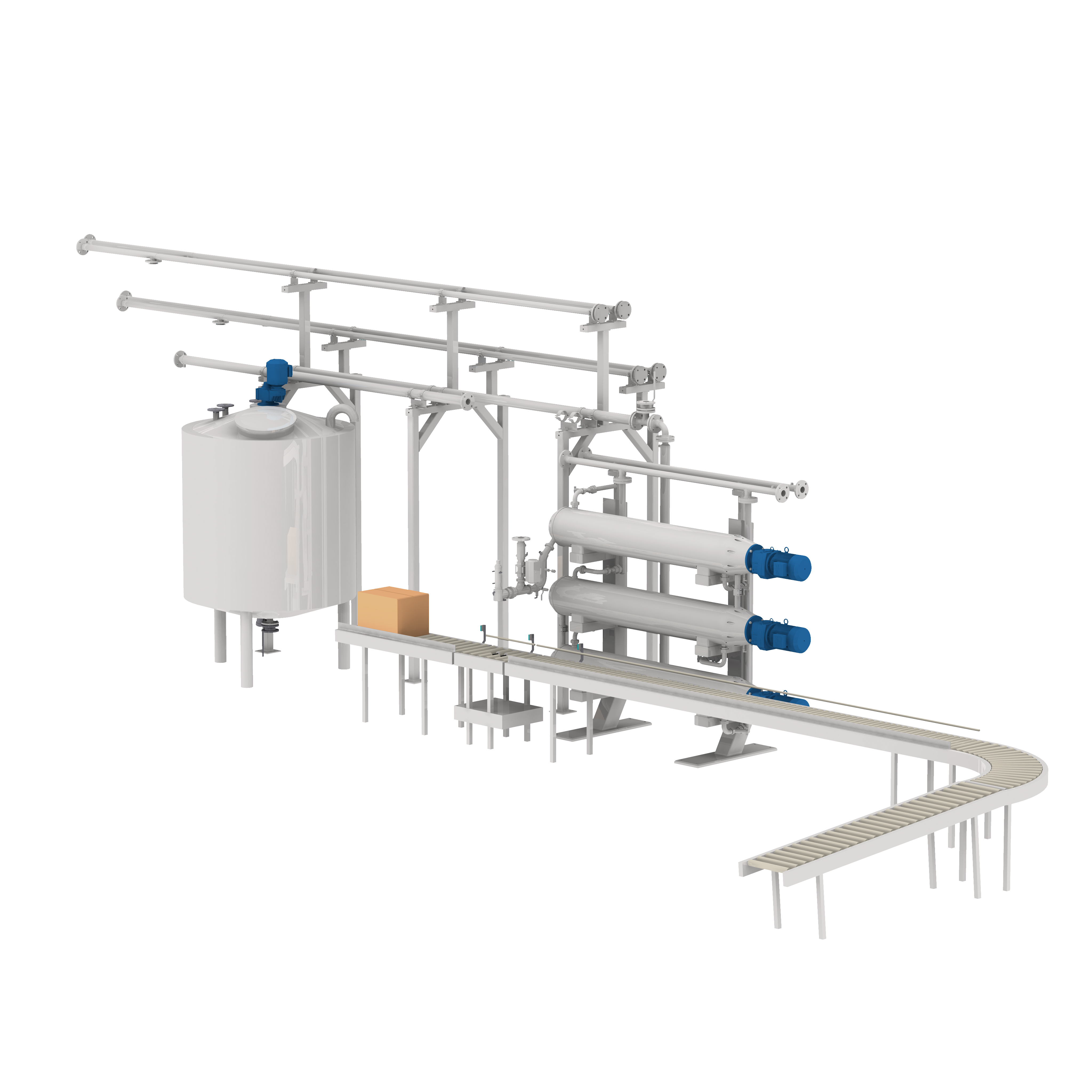
Cocoa butter filter-liquor blocking line
Cocoa butter, when pressed, is never totally free of solids. The process requires ...

Cocoa liquor grinding line
After roasting and cracking chocolate beans (without husks), the following process is the grindin...
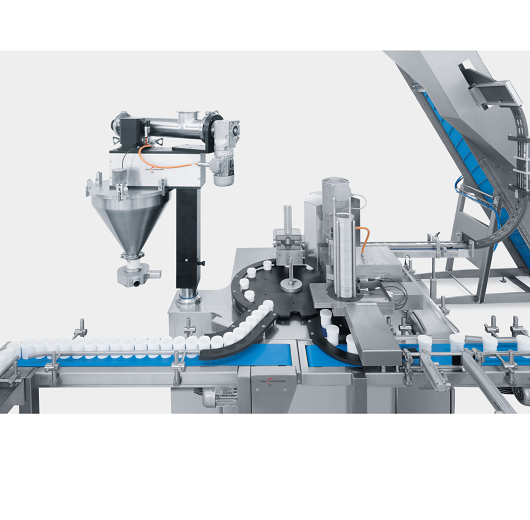
Can filling equipment
Having separate equipment for different process steps like filling and closing, can put a brake on grow...
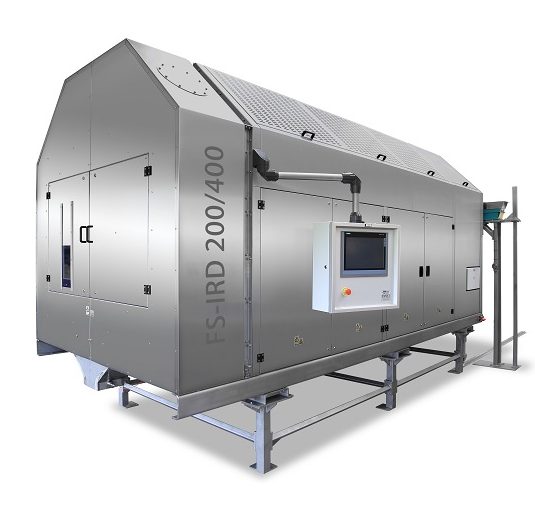
Infrared rotating drum steriliser
Sterilisation of foodstuffs is vital to maintain uncompromising standards of hygiene and ...
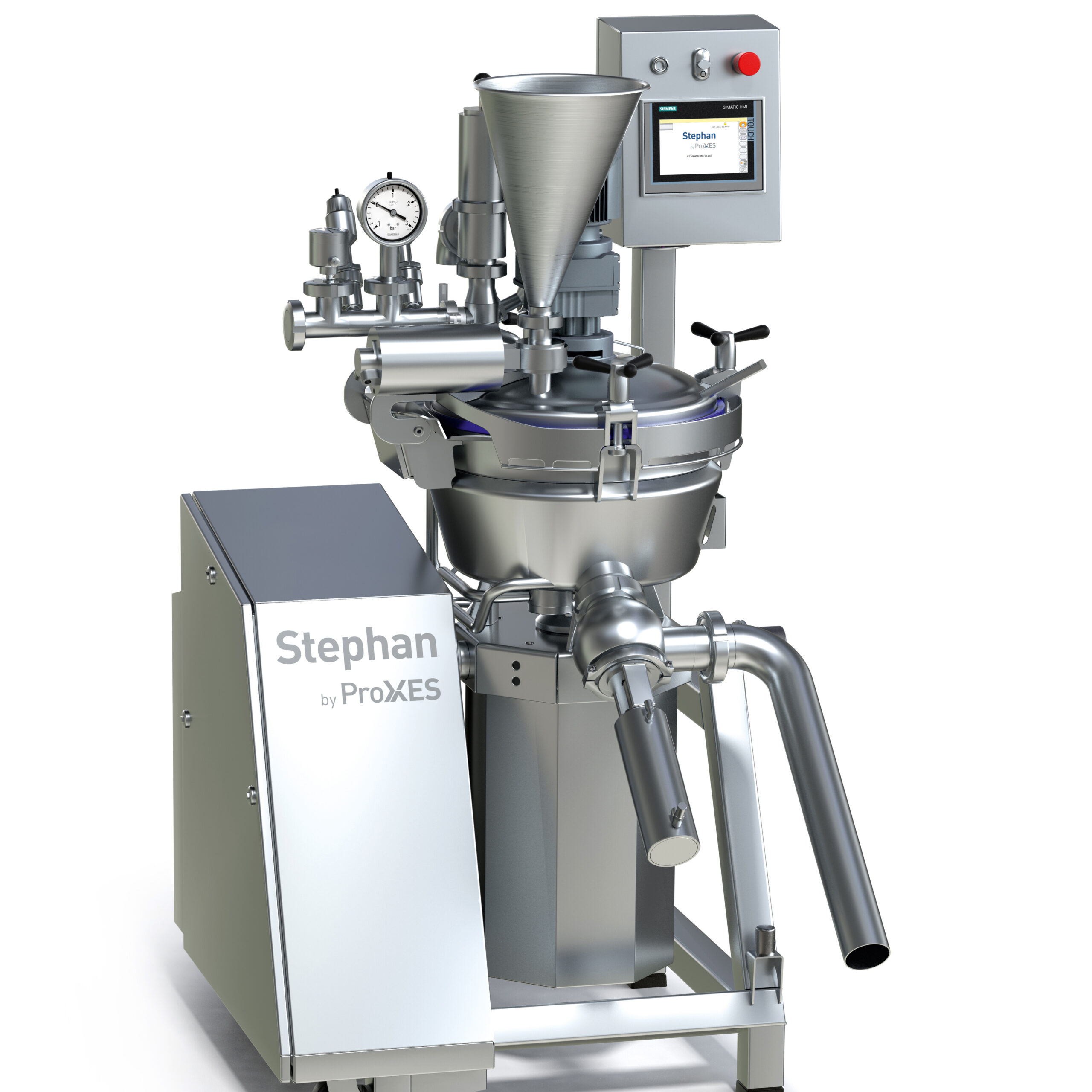
Flexible mixing system for whipped cream and pastries
Delicacies such as meringue, ganache, and marzipan undergo various ...
